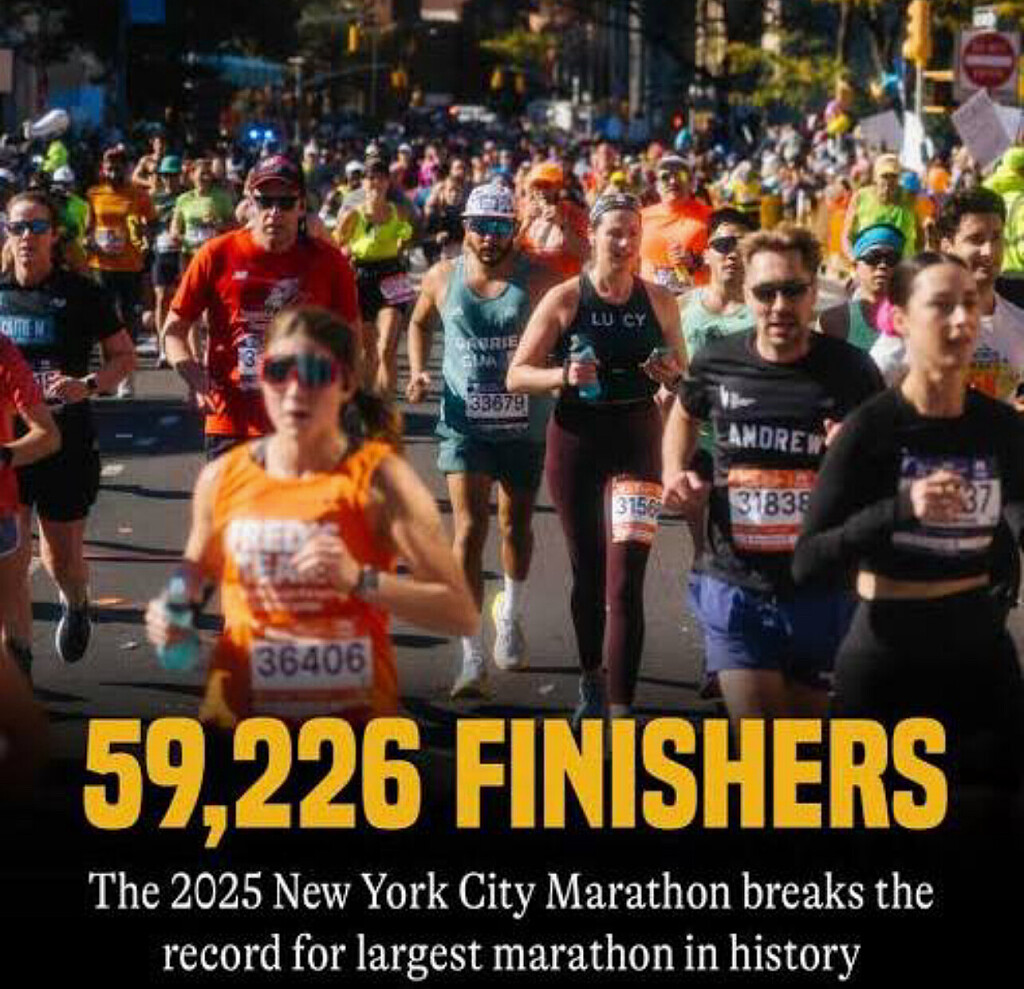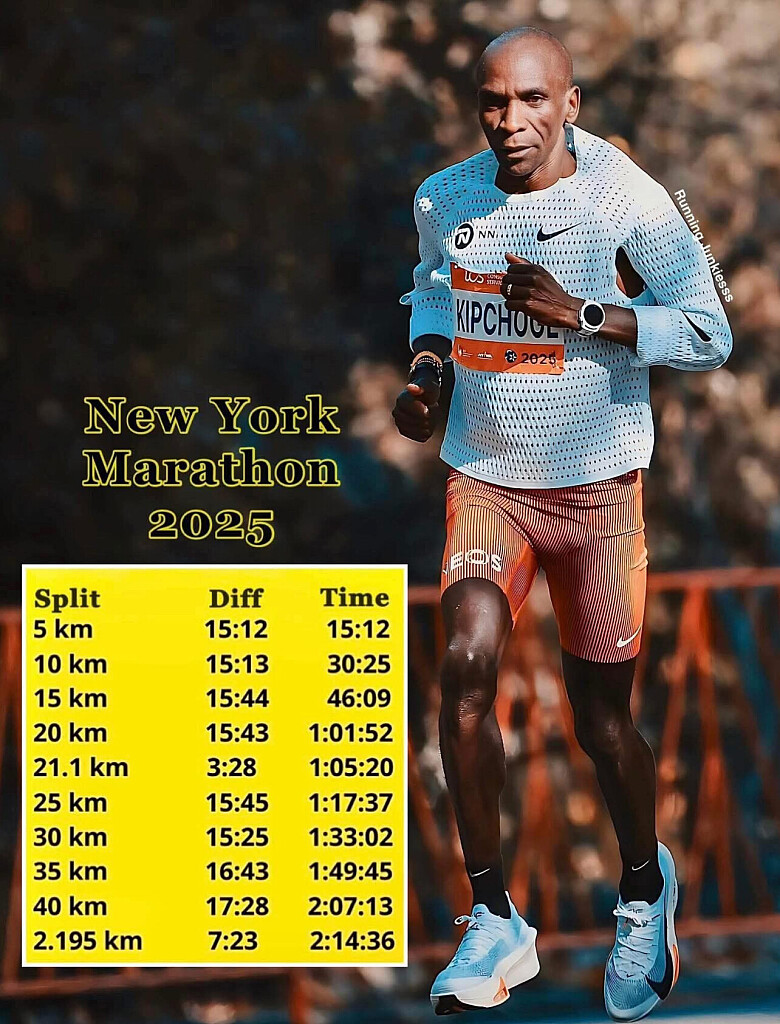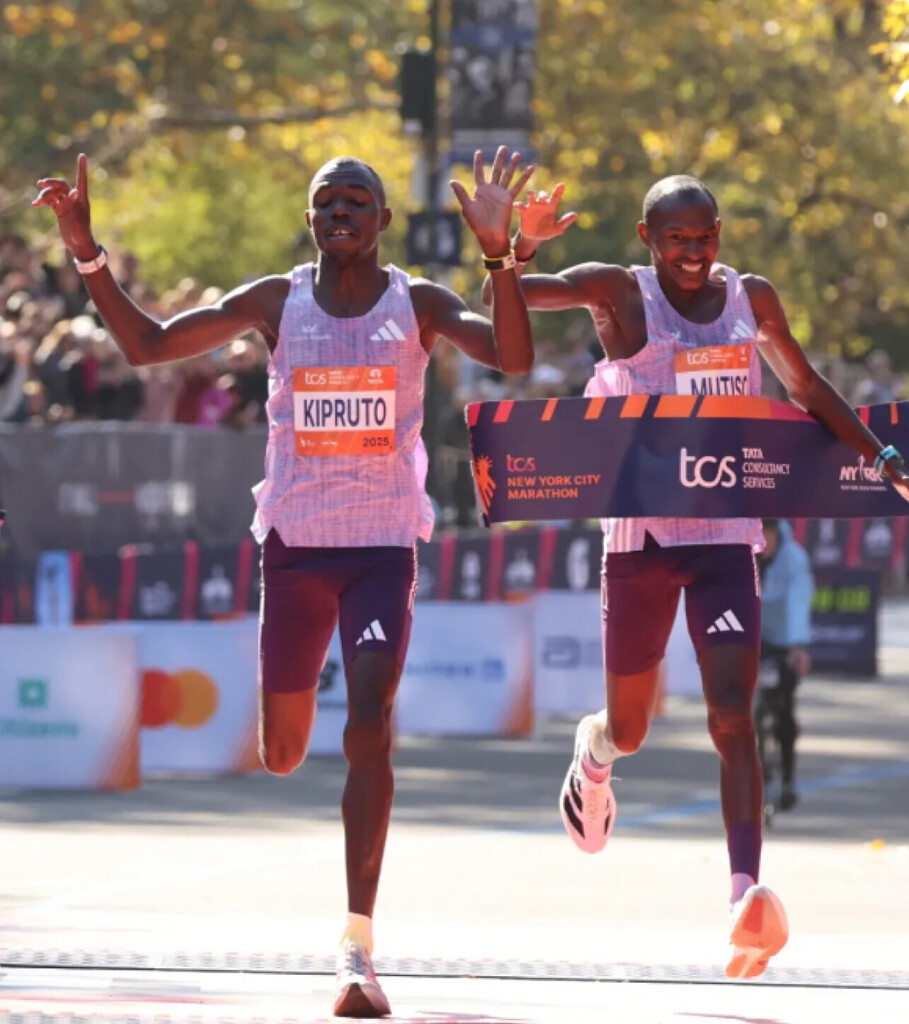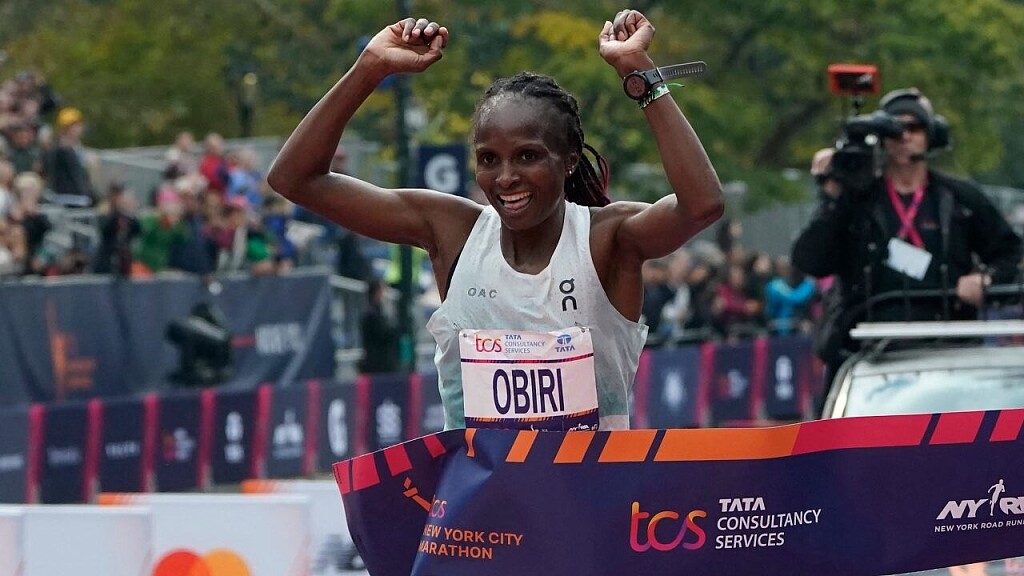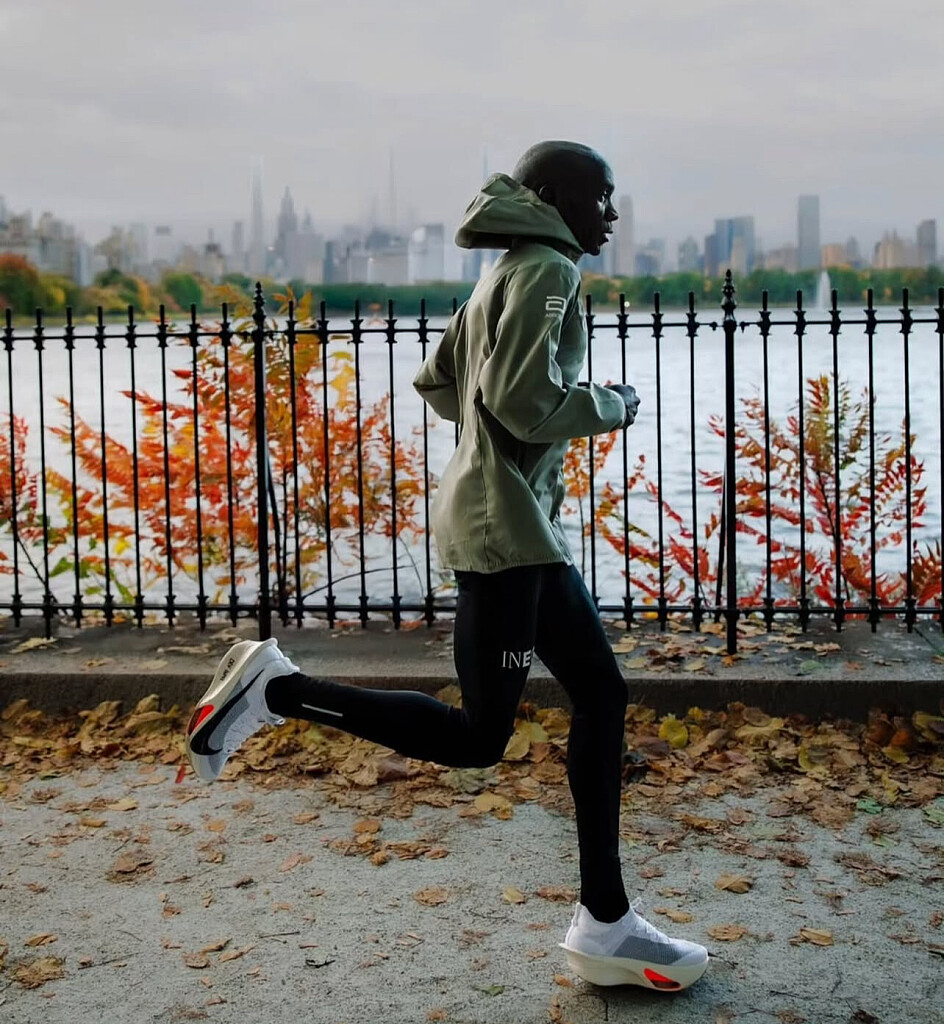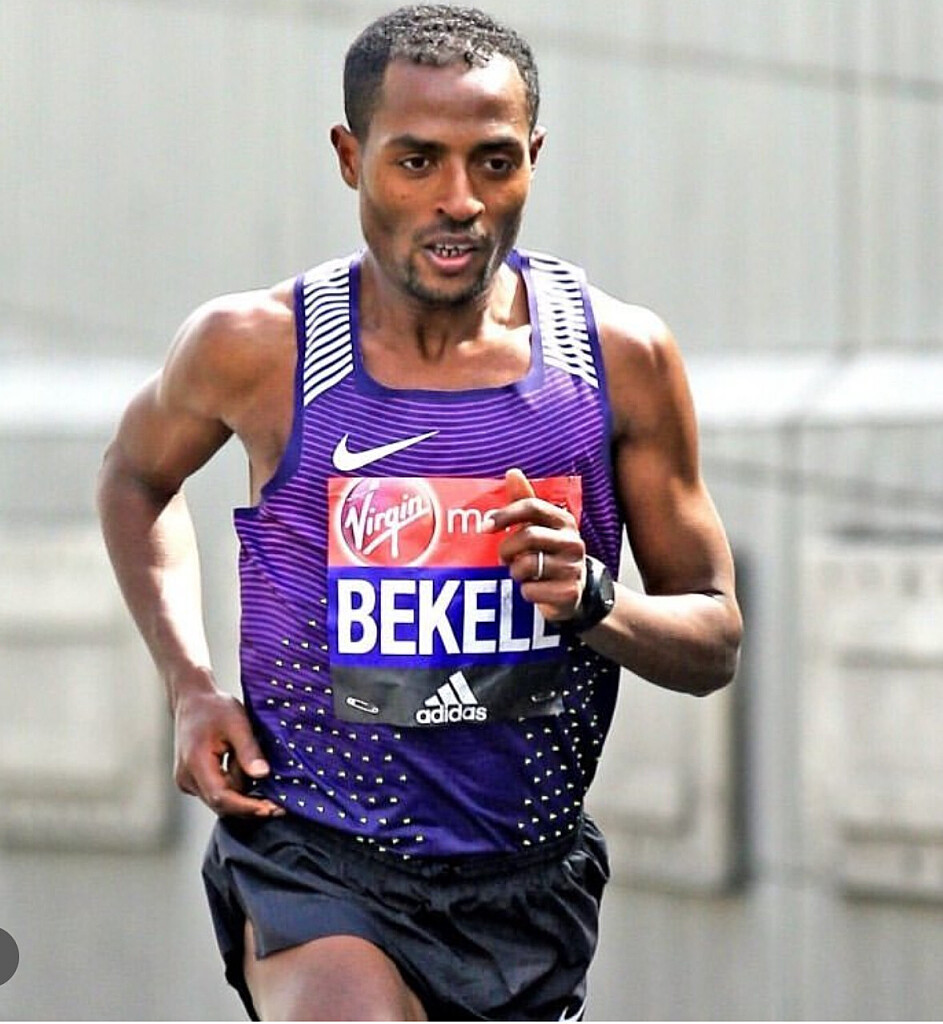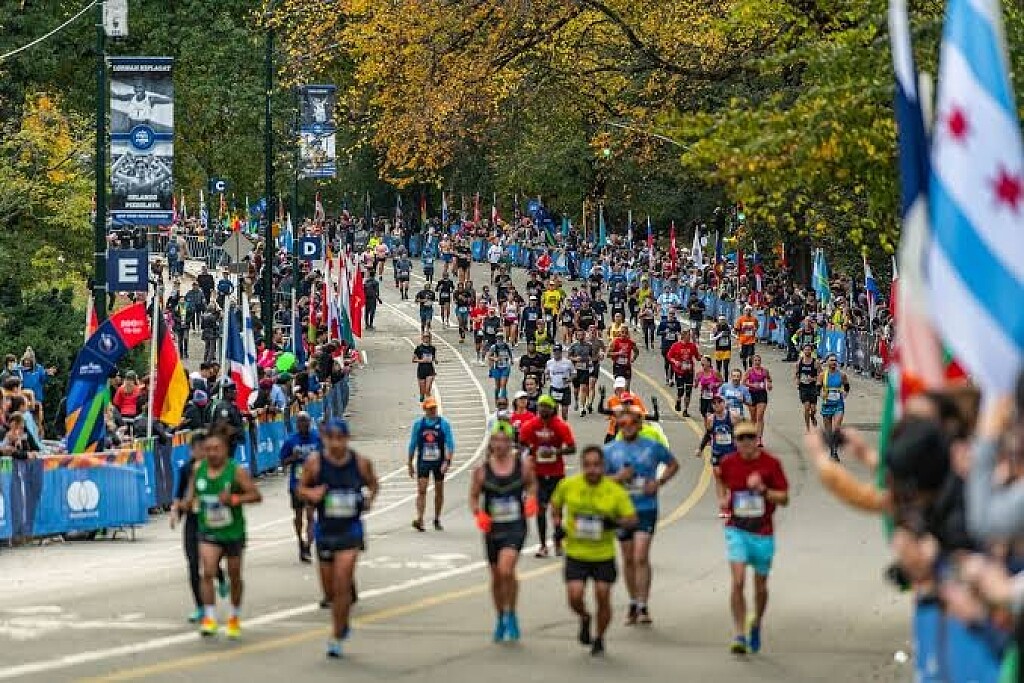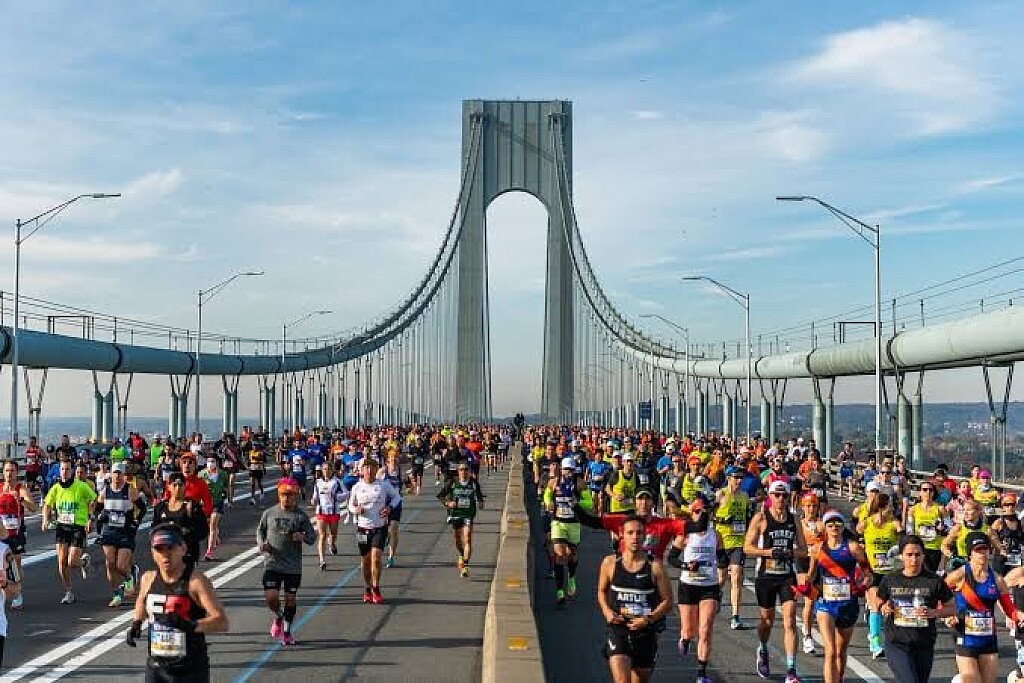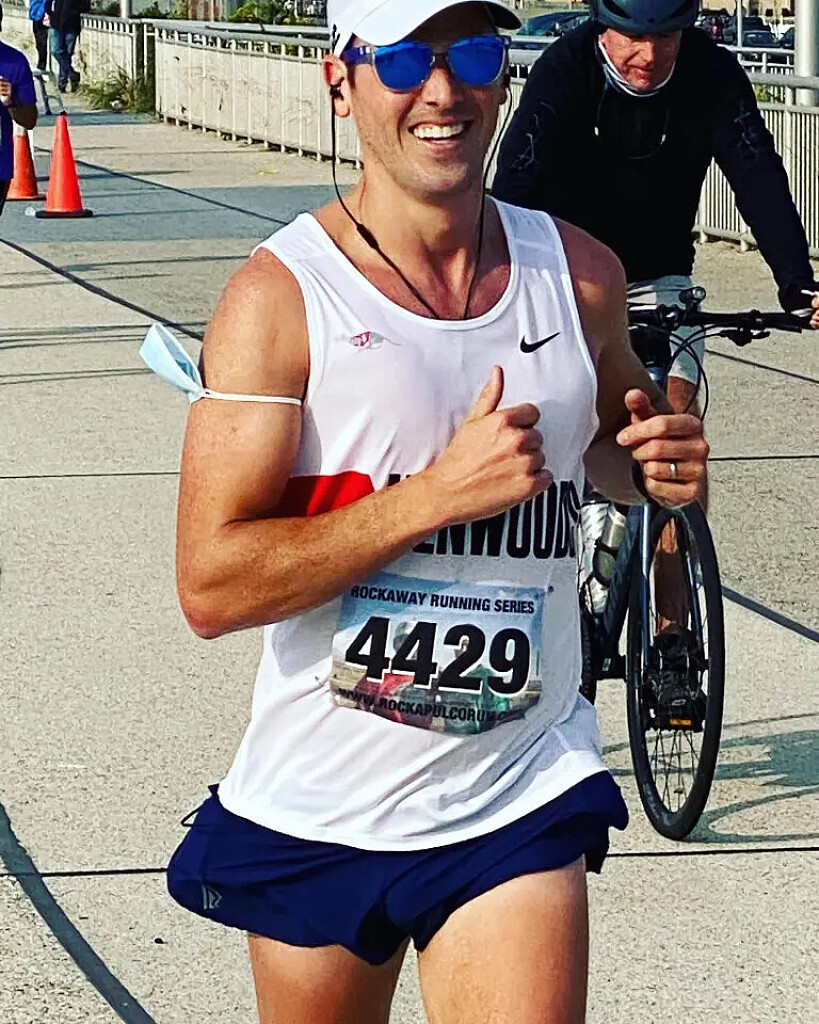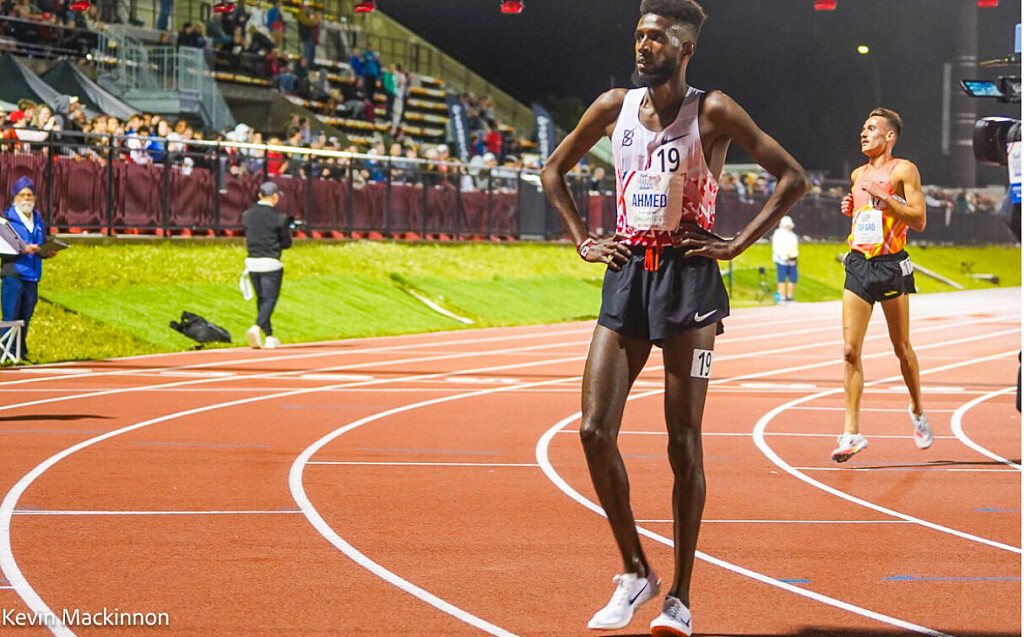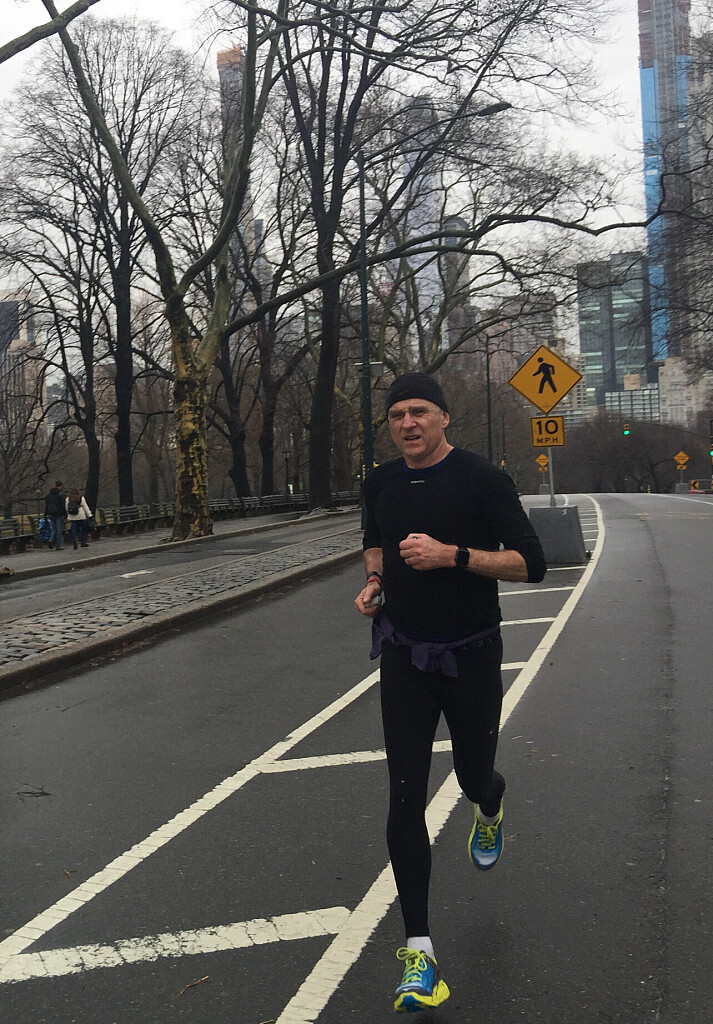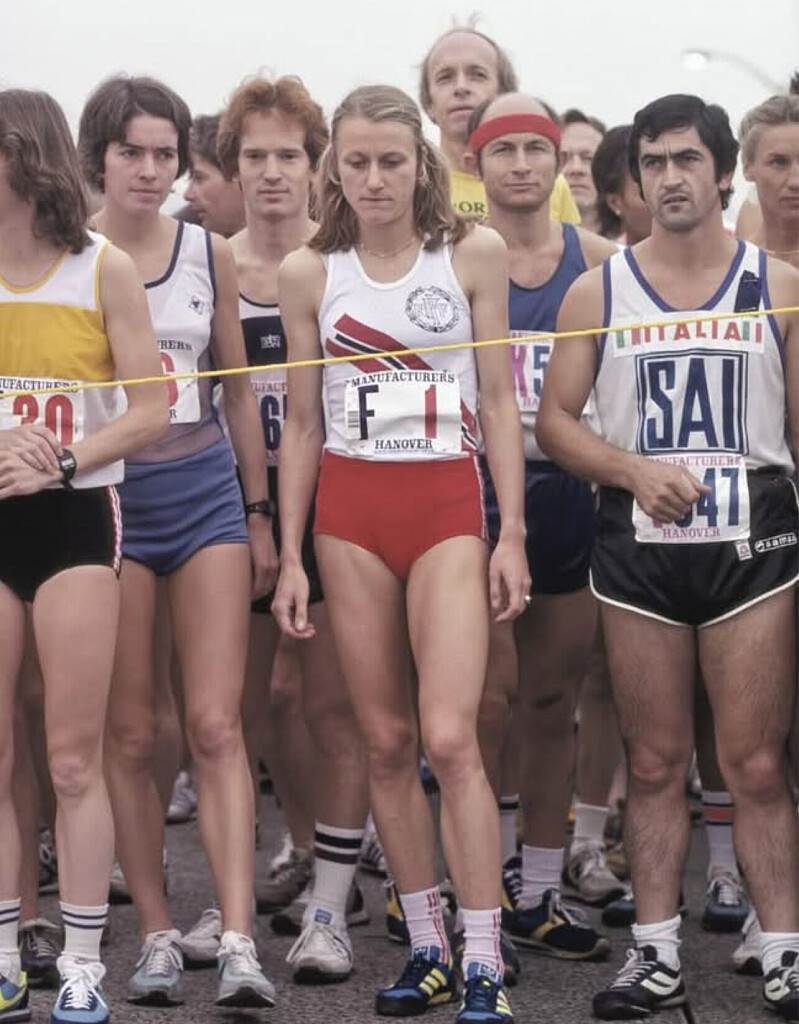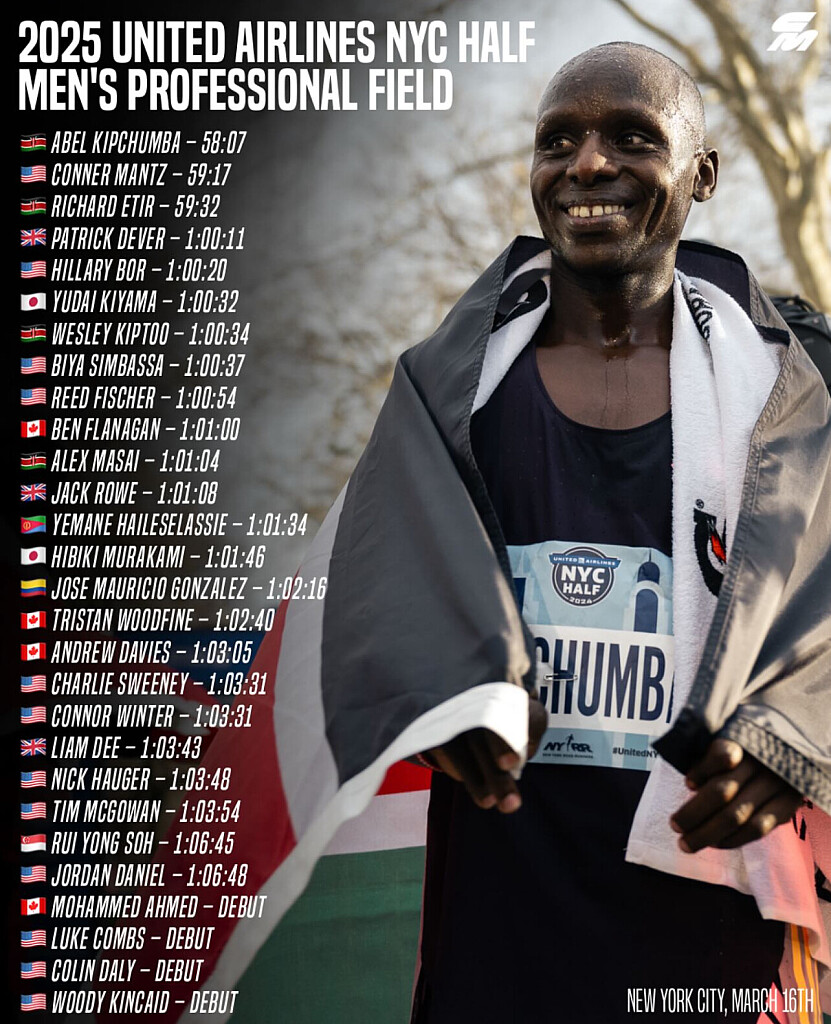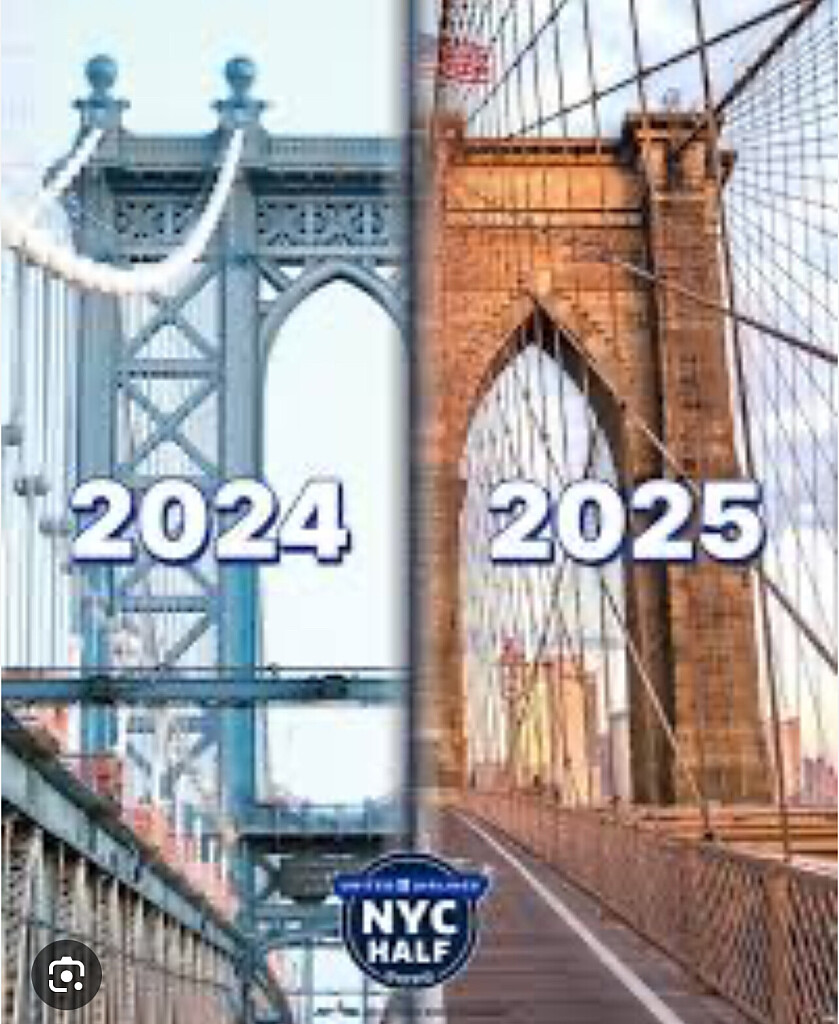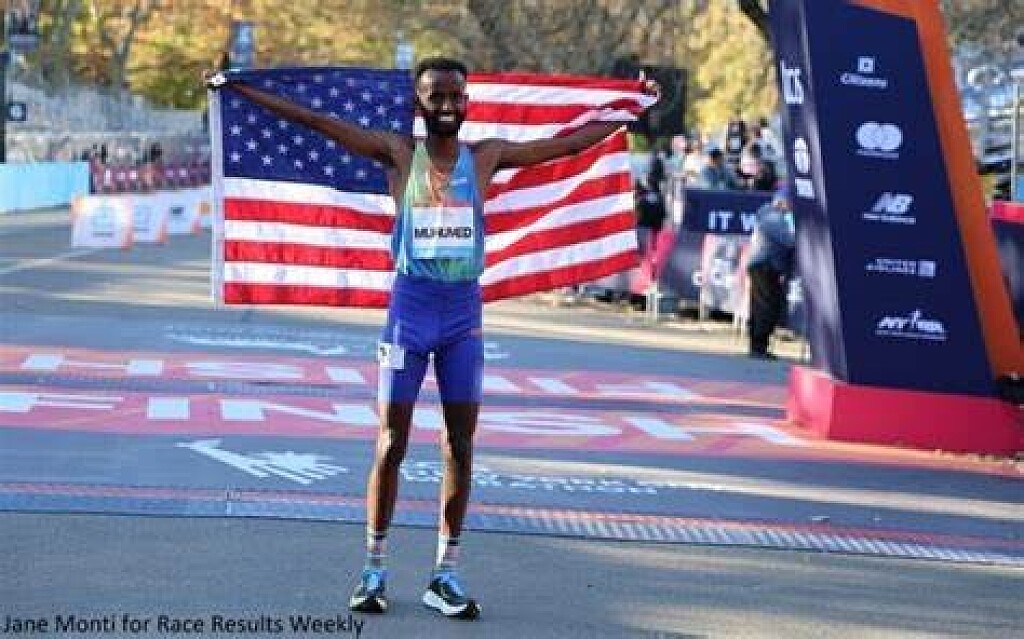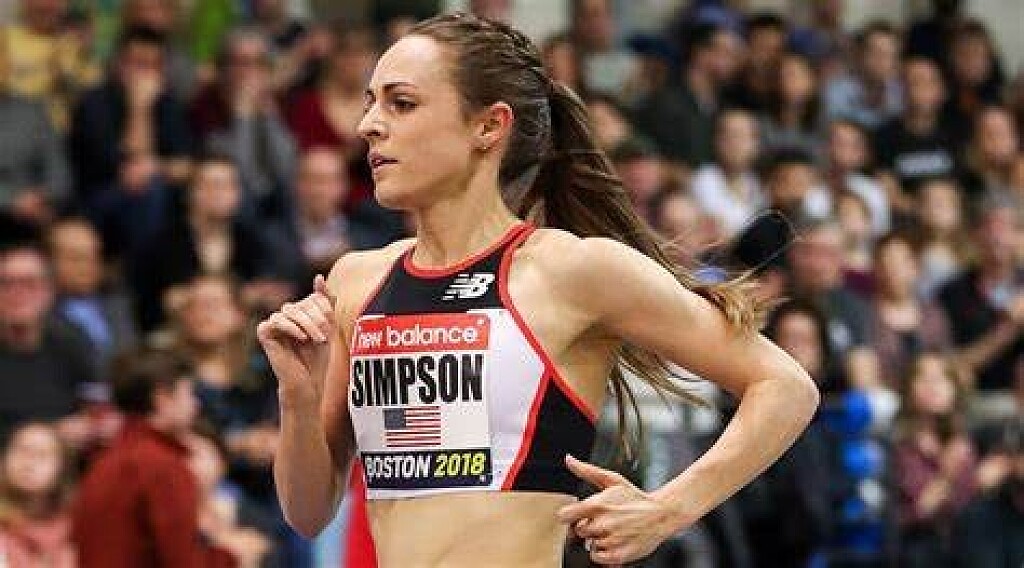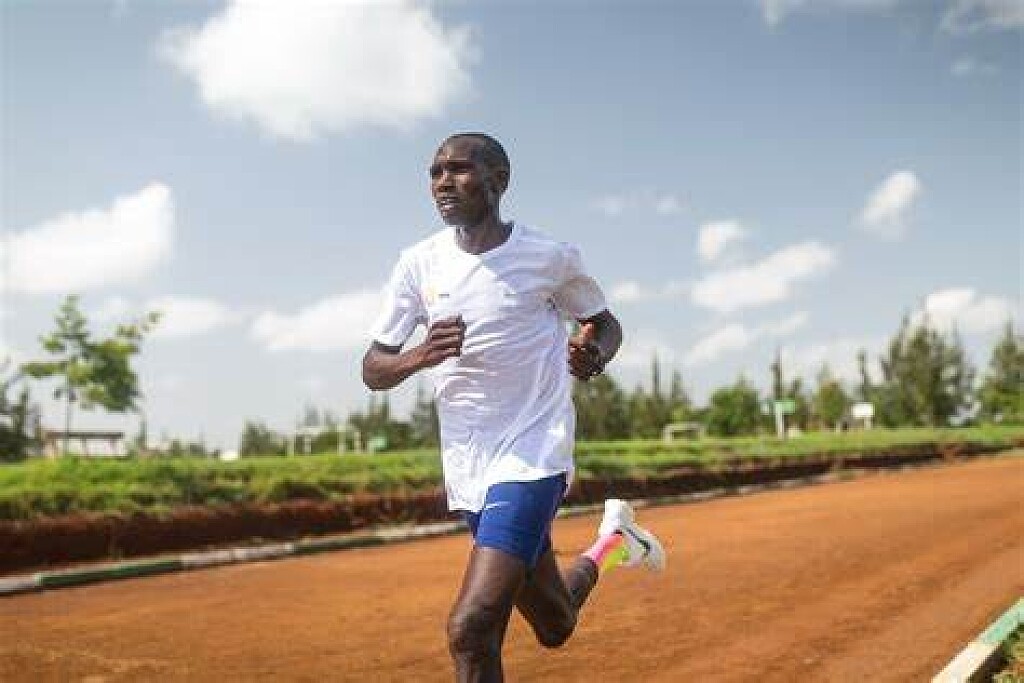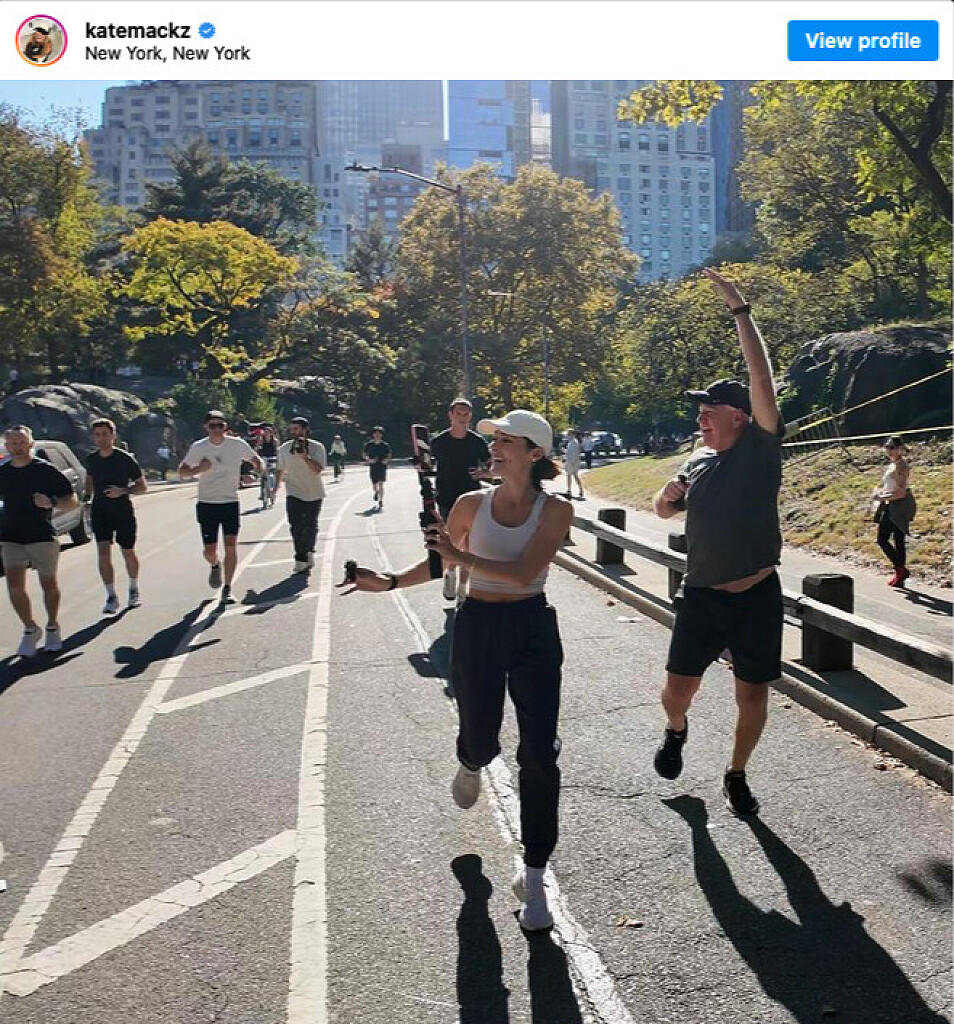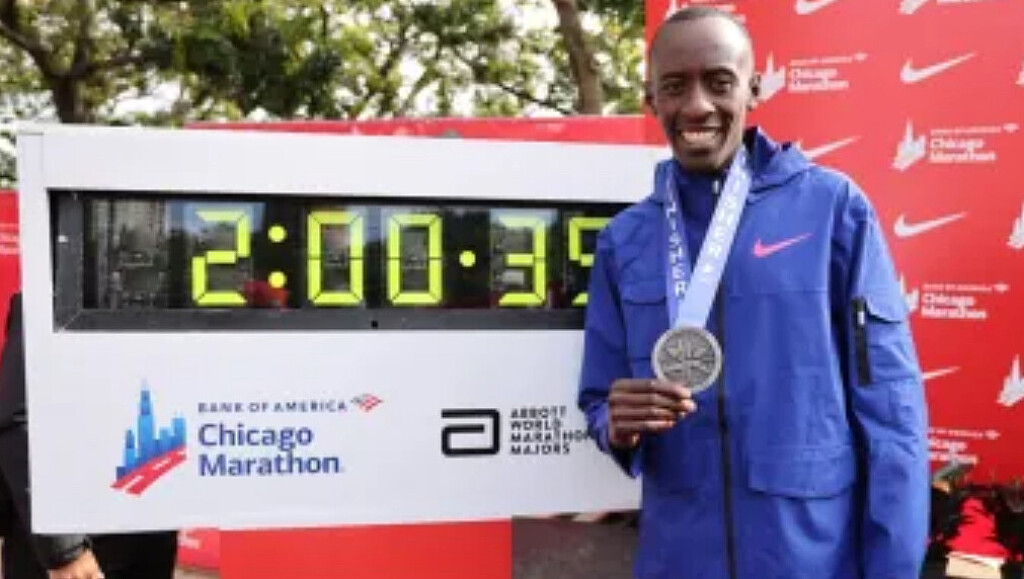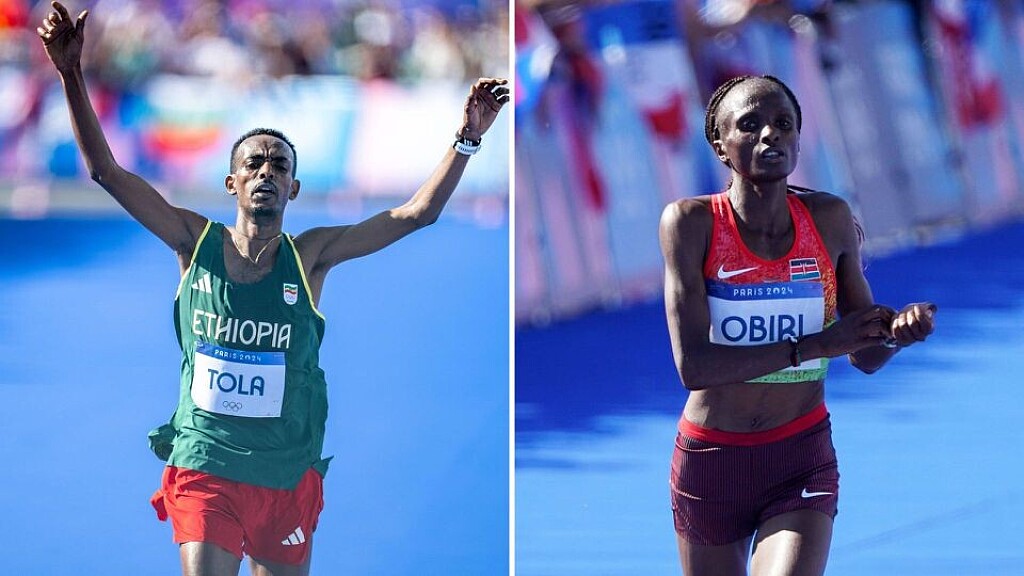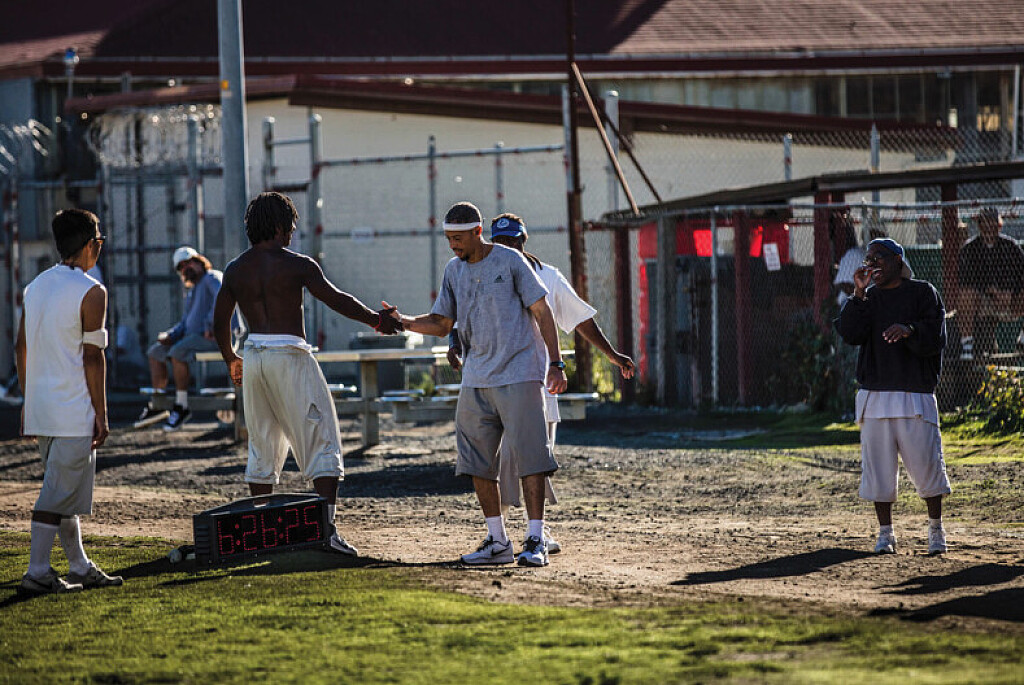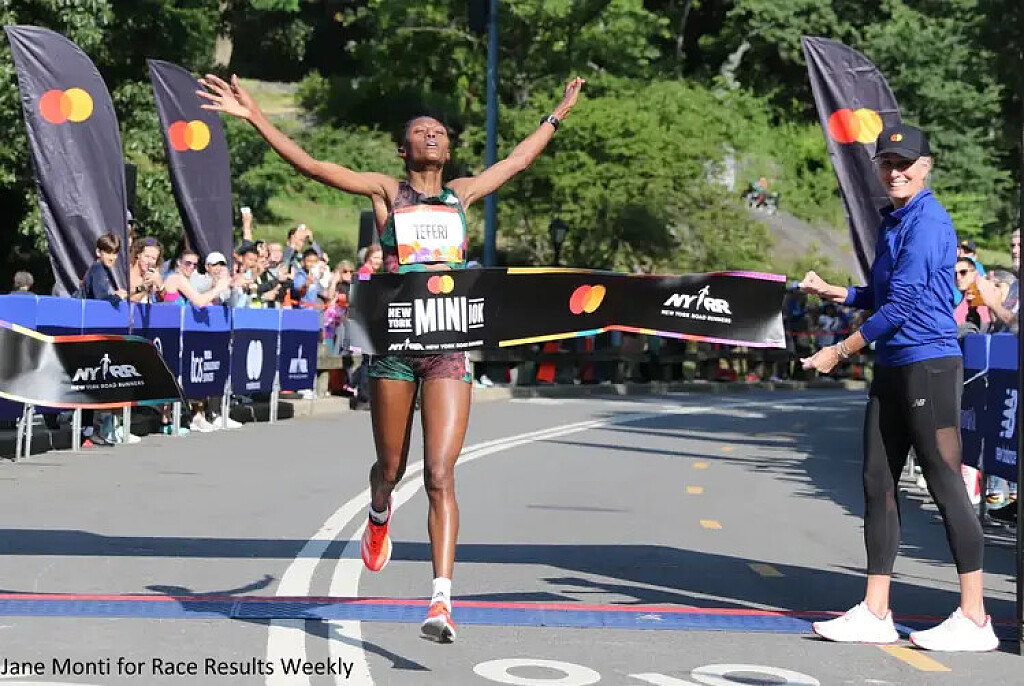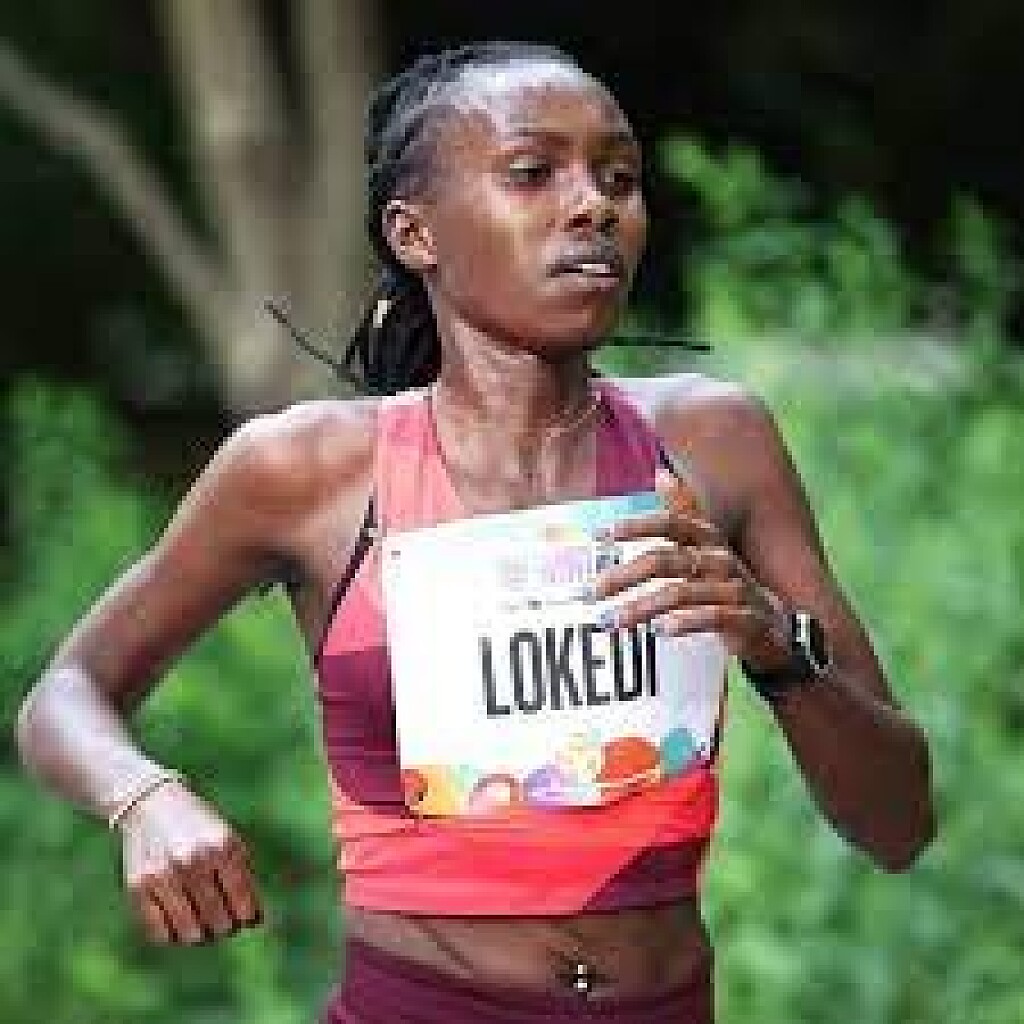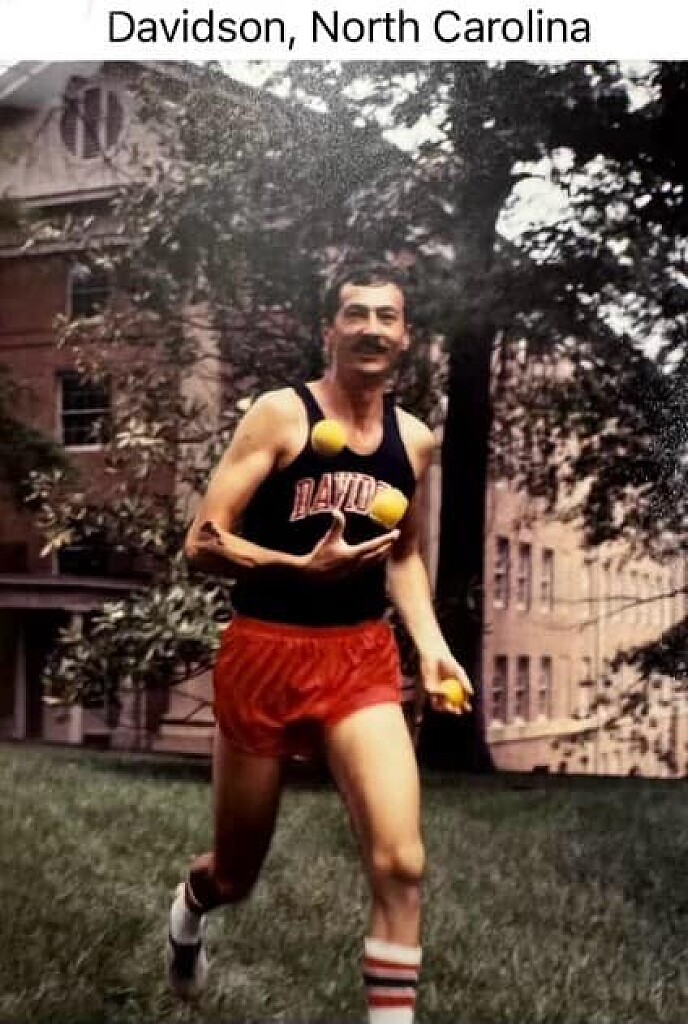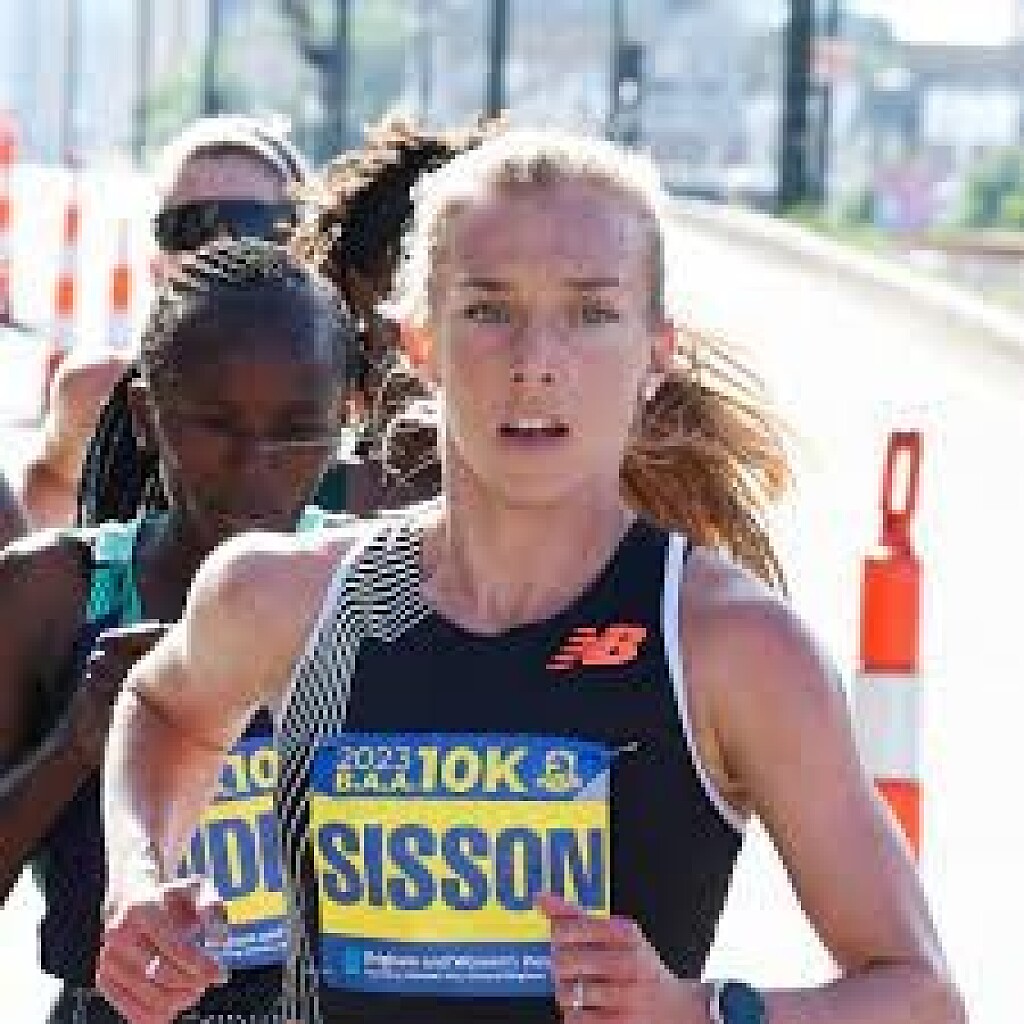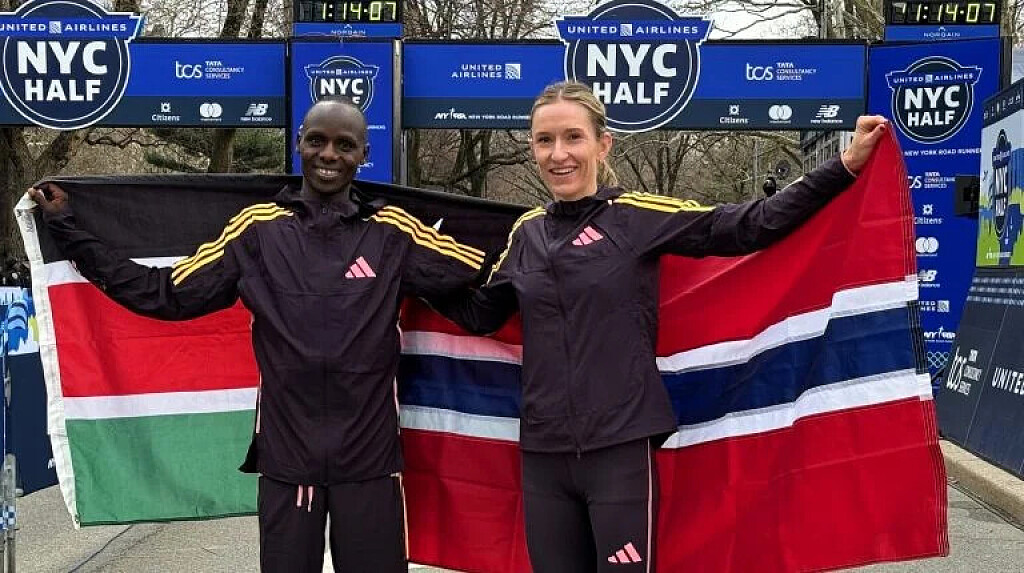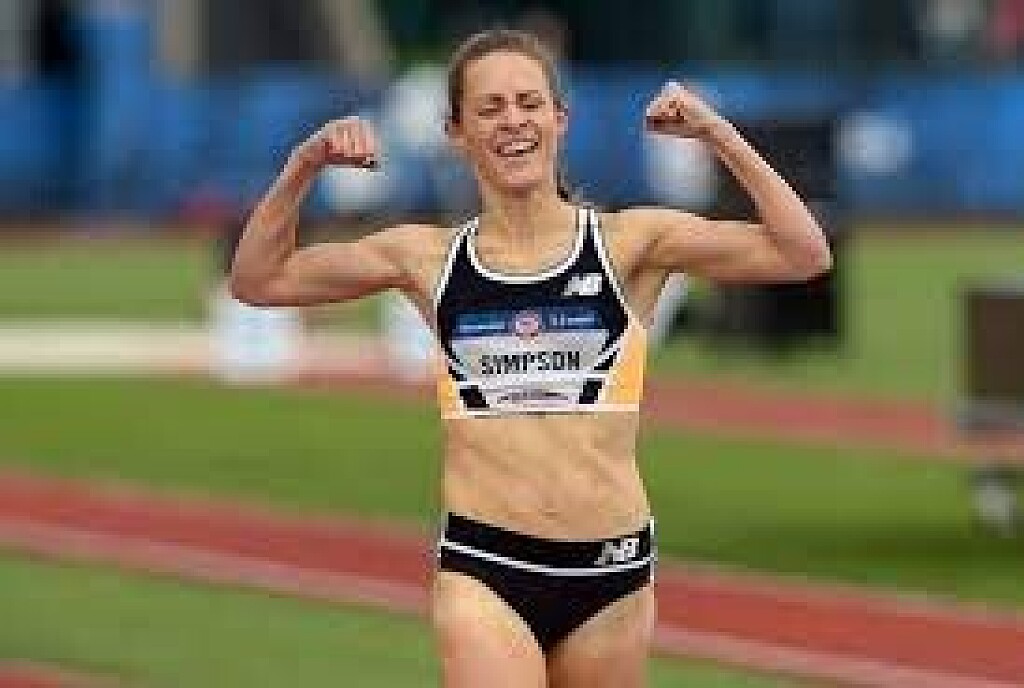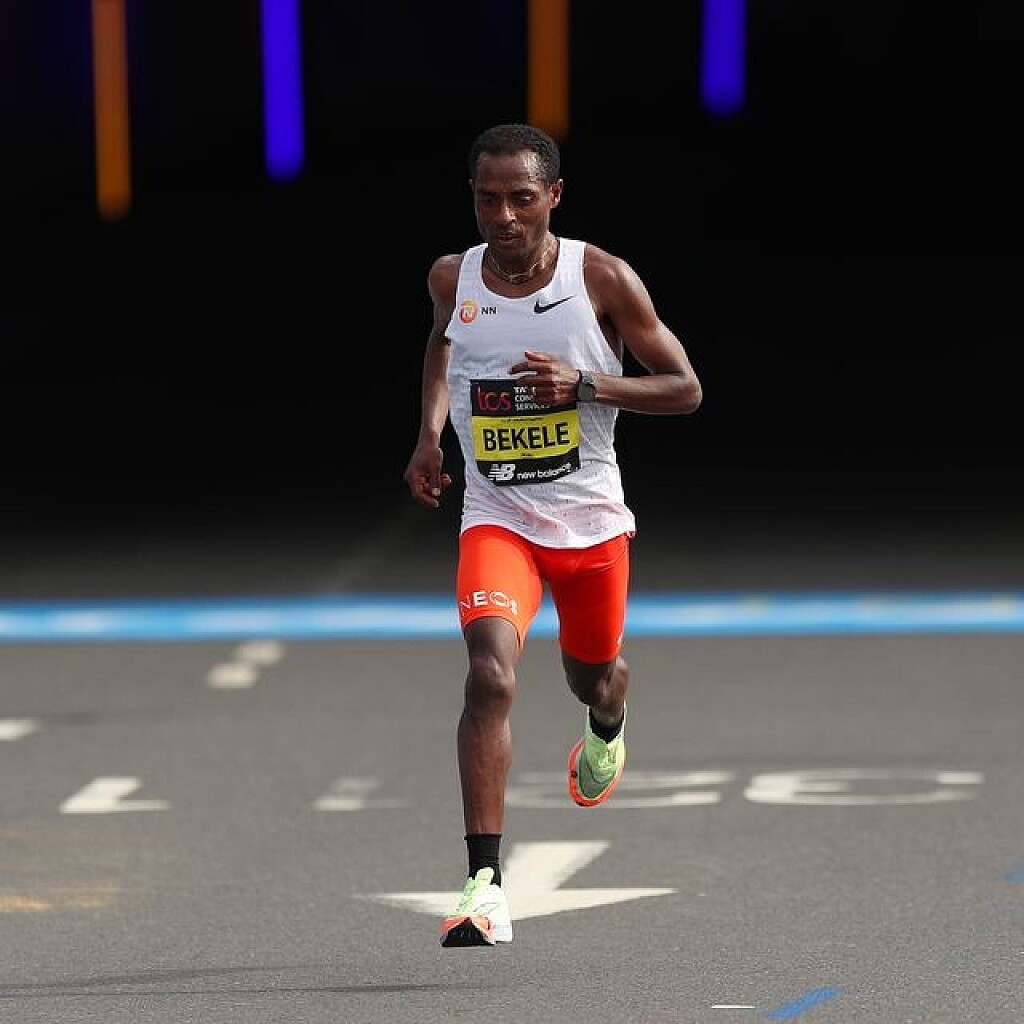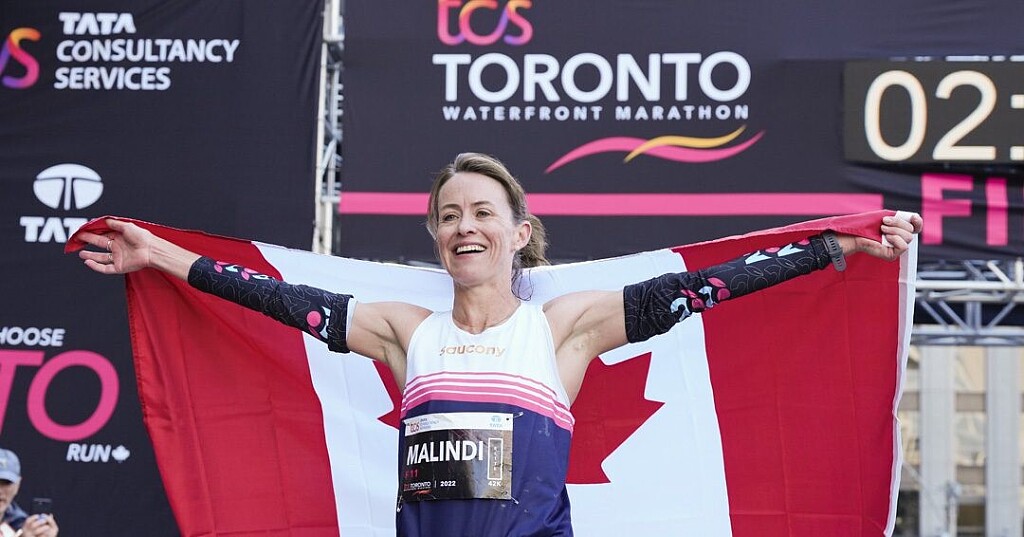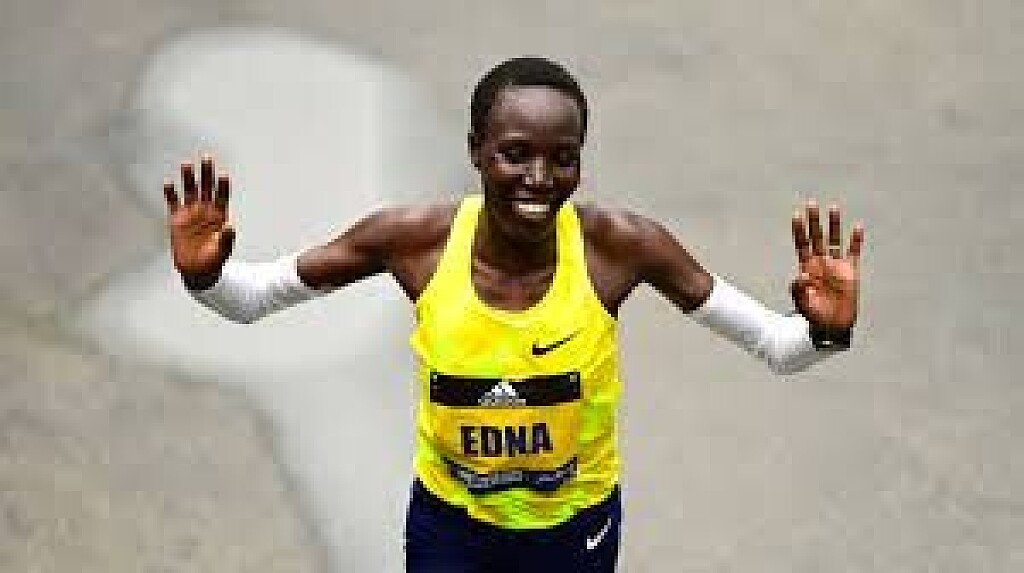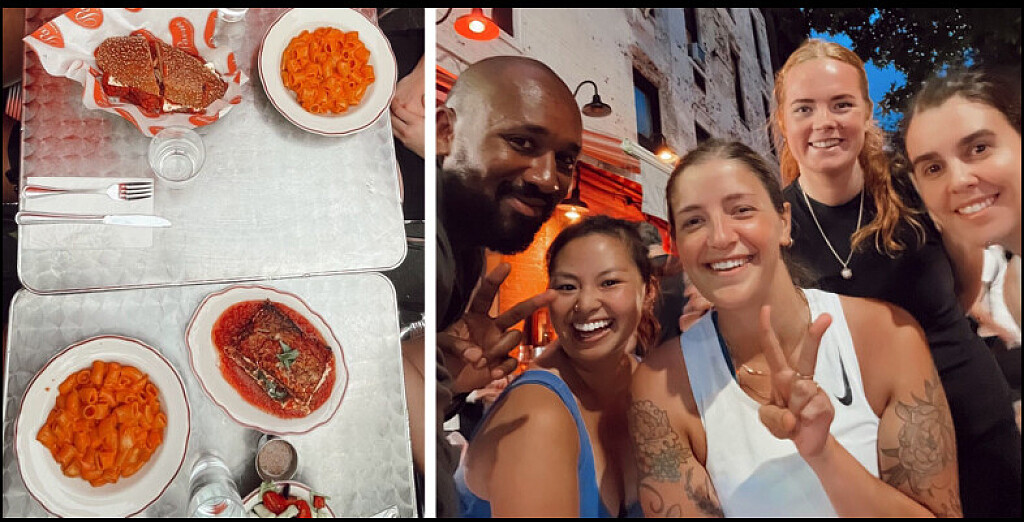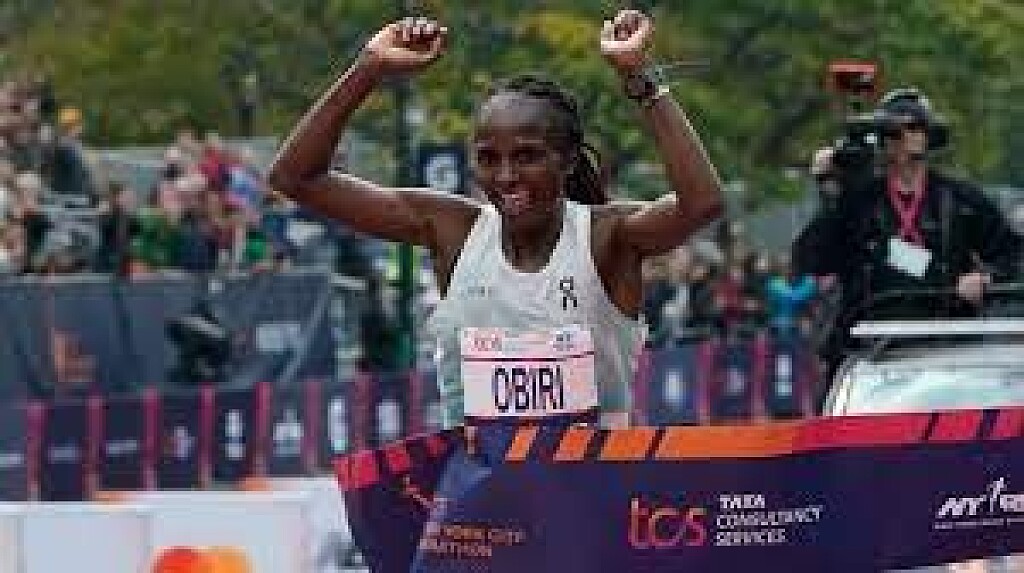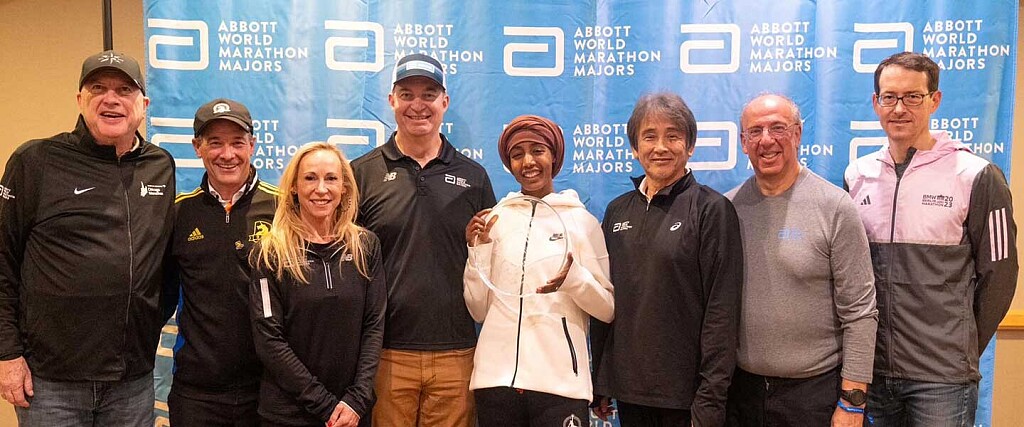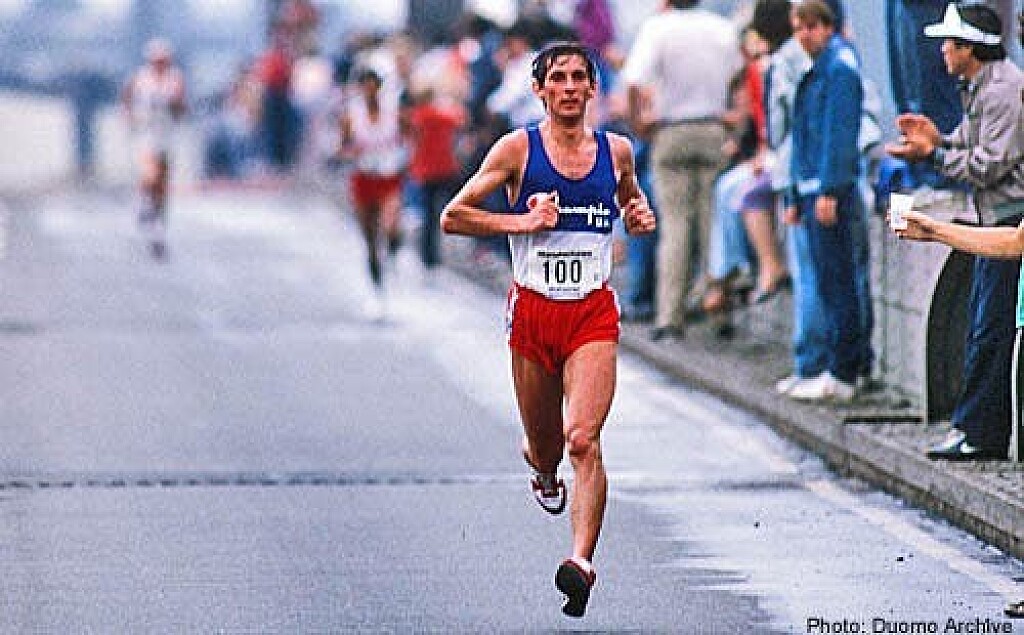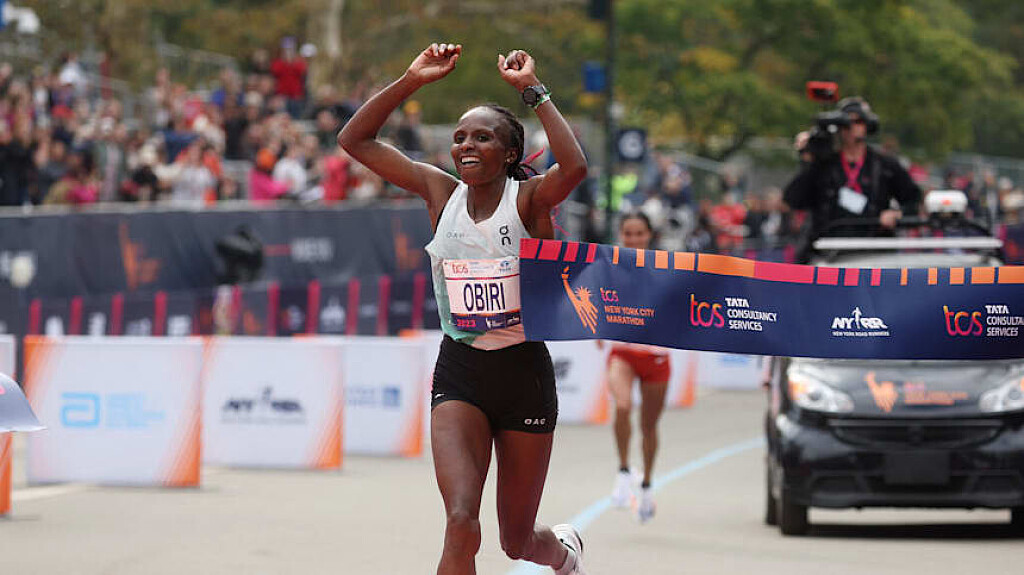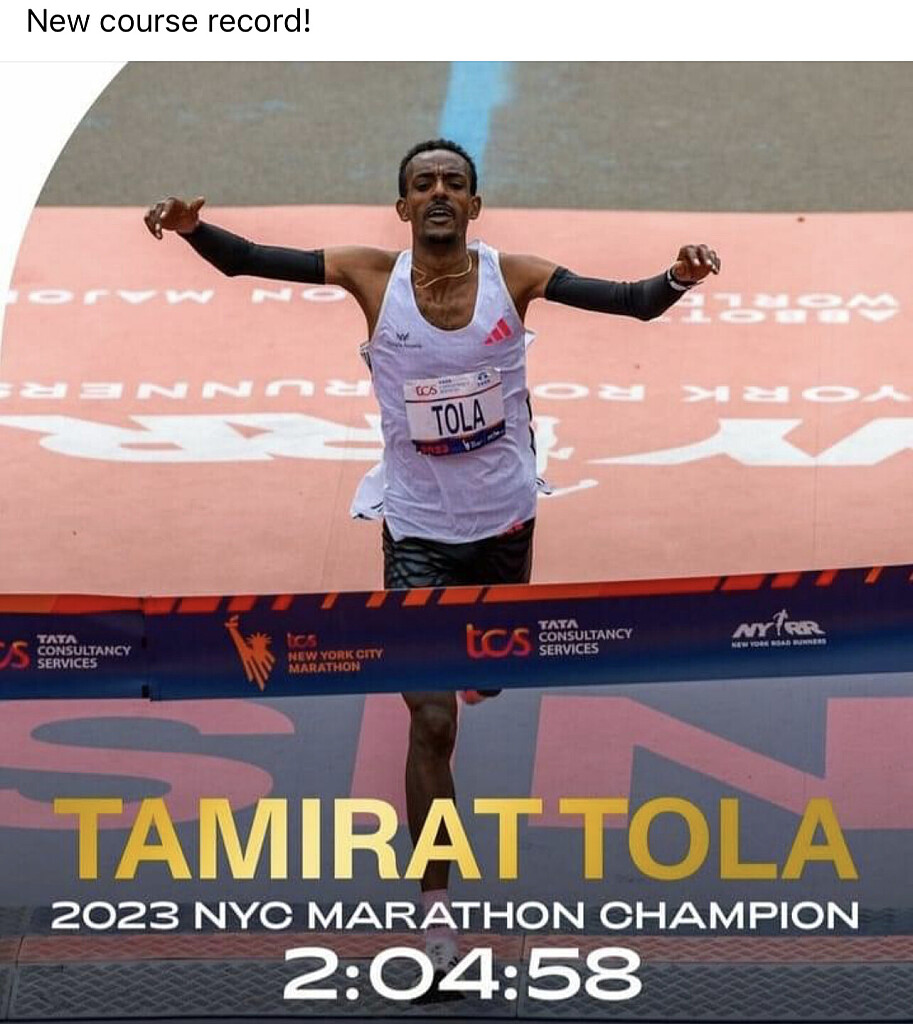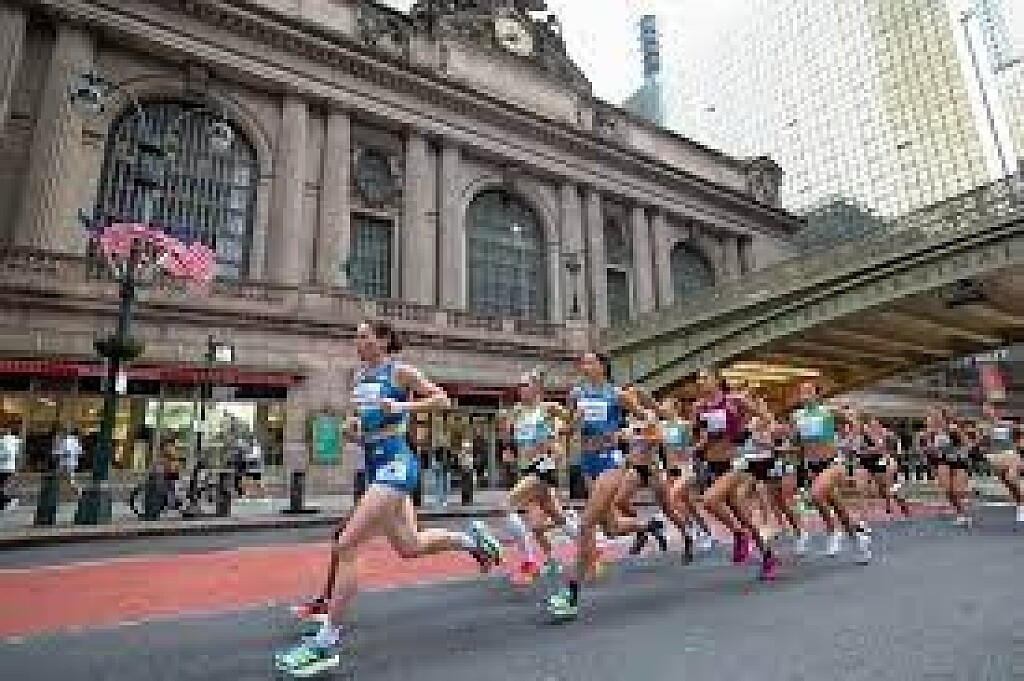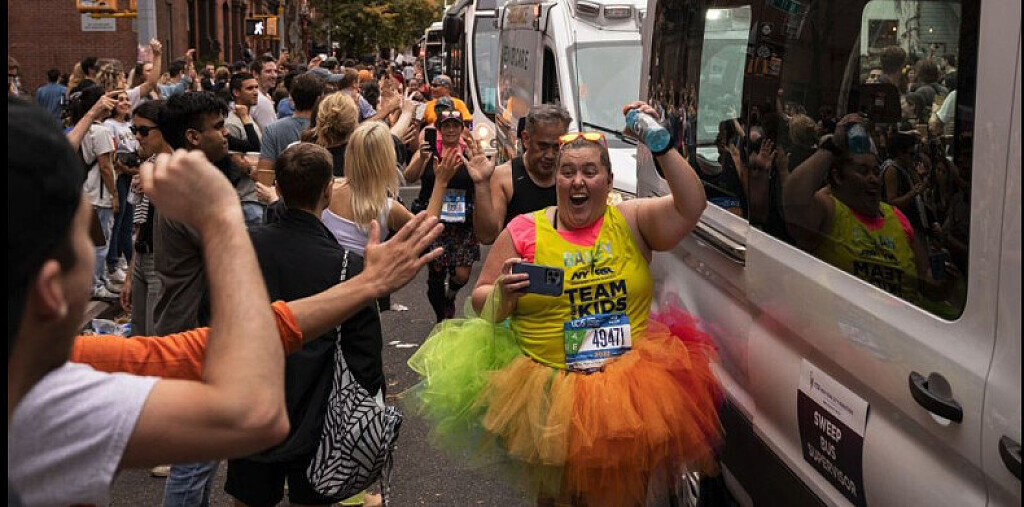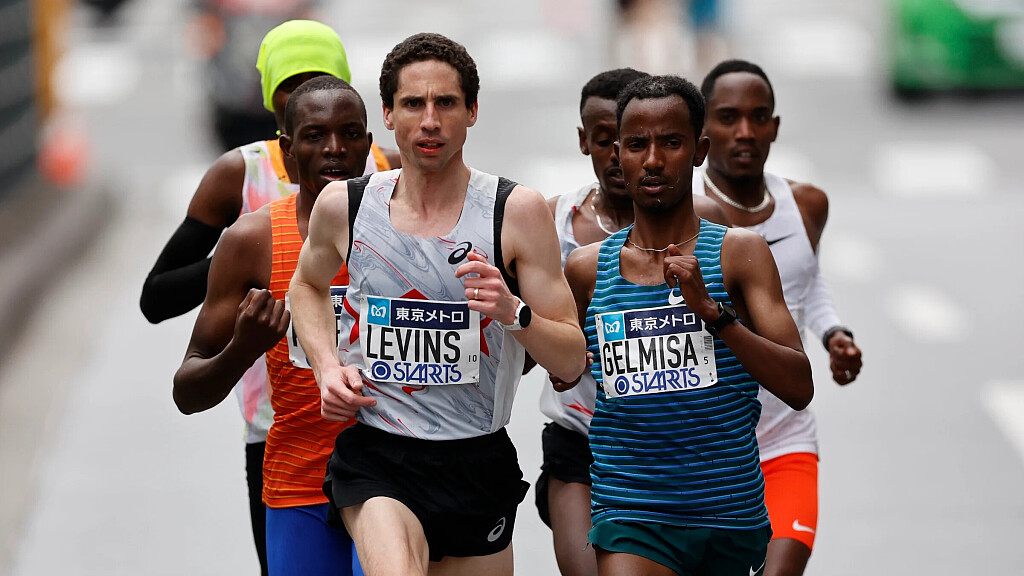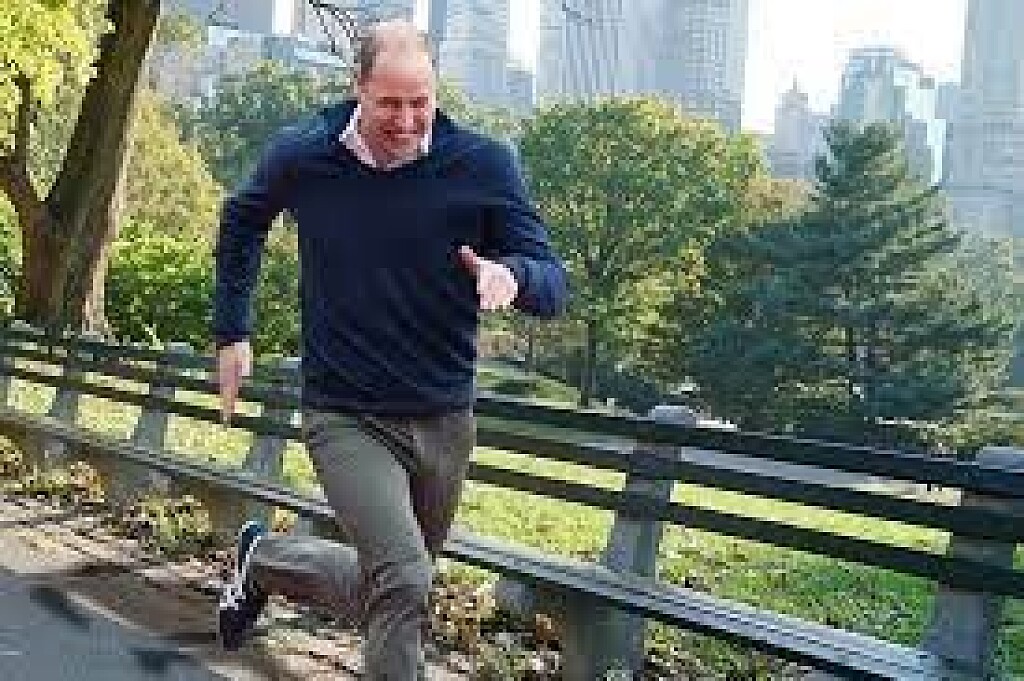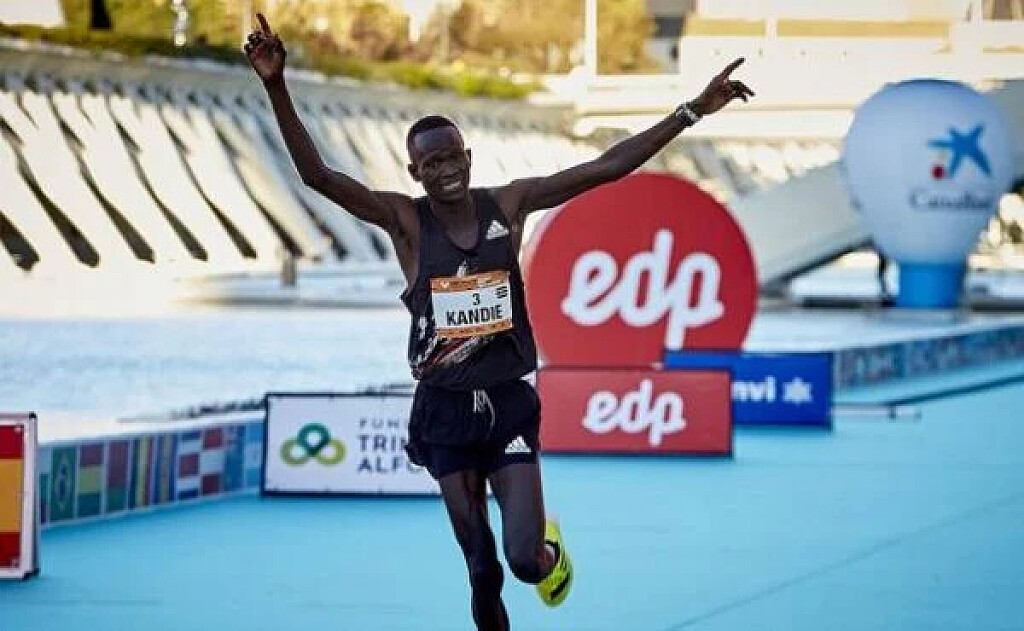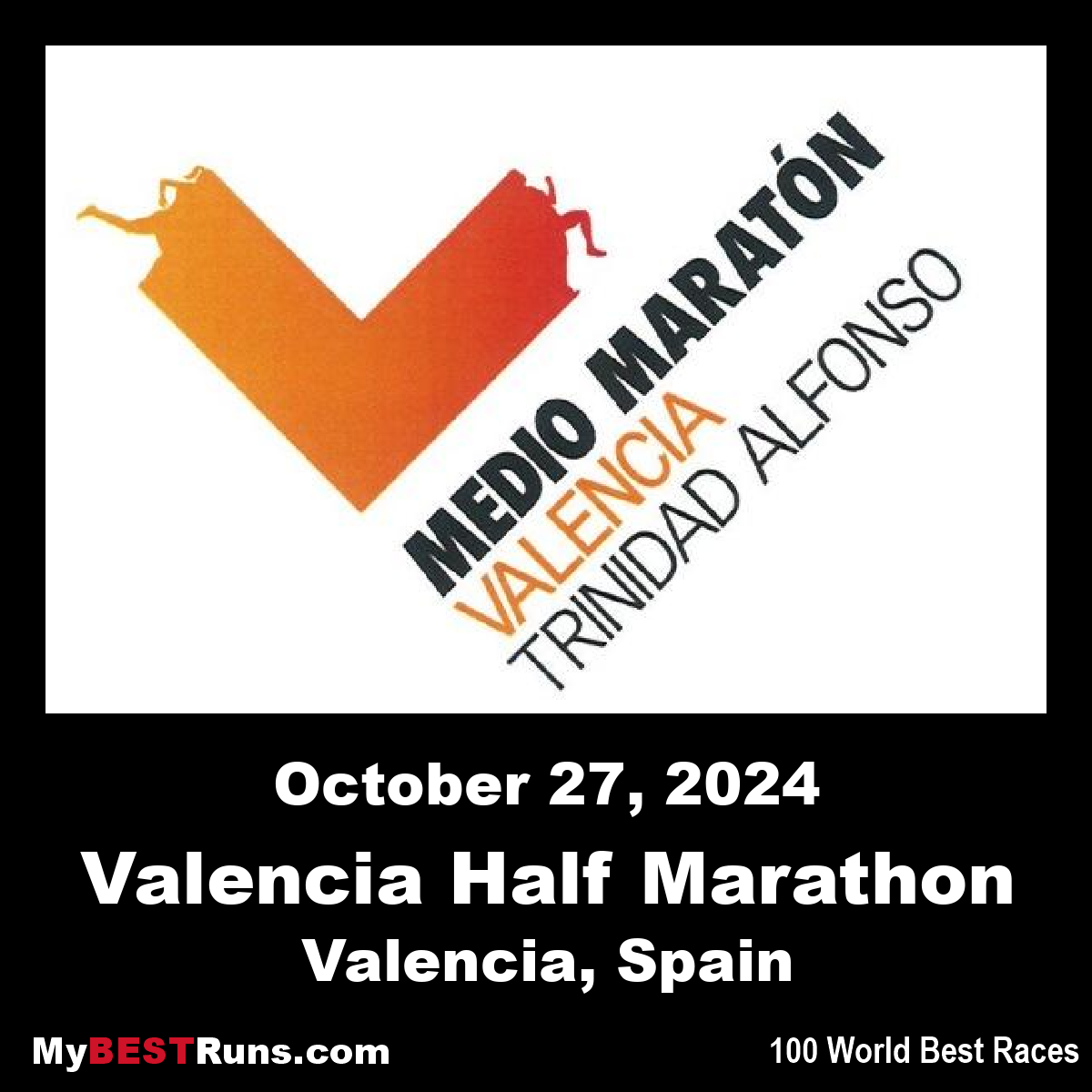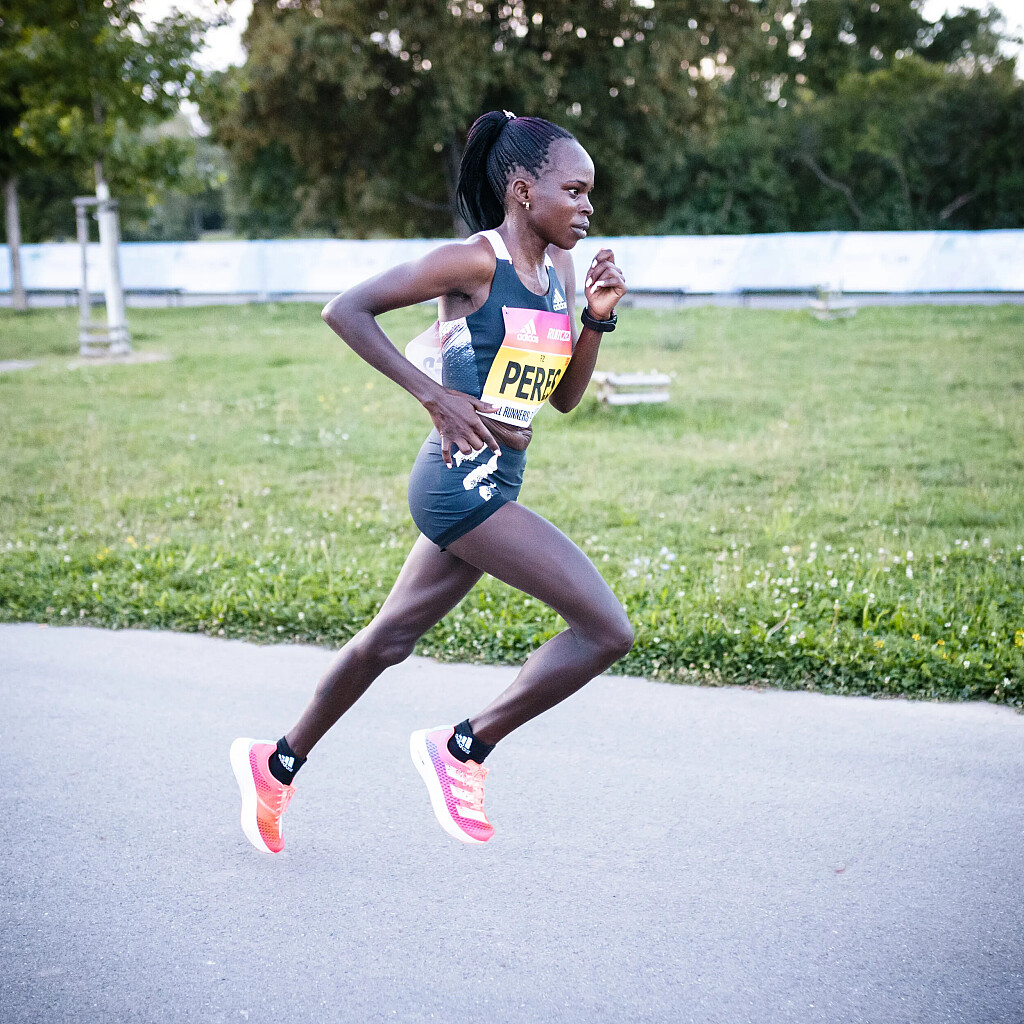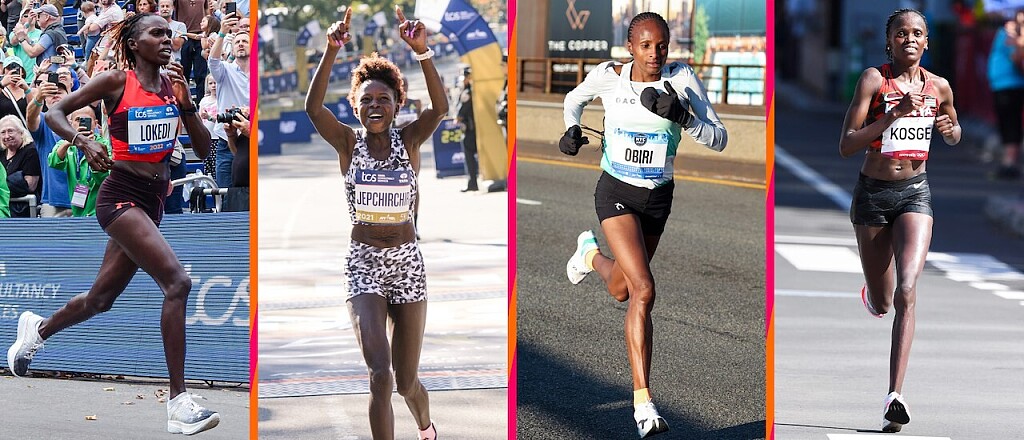Running News Daily
Running News Daily is edited by Bob Anderson. Send your news items to bob@mybestruns.com Advertising opportunities available. Train the Kenyan Way at KATA Kenya and Portugal owned and operated by Bob Anderson. Be sure to catch our movie A Long Run the movie KATA Running Camps and KATA Potato Farms - 31 now open in Kenya! https://kata.ke/
Index to Daily Posts · Sign Up For Updates · Run The World Feed
Articles tagged #Central Park
Today's Running News
NYC Marathon Sets New World Record for Largest Number of Finishers
The 2025 TCS New York City Marathon has officially set a new world record for the largest number of finishers in a marathon, surpassing the mark set by the London Marathon earlier this year.
A total of 59,226 runners crossed the finish line in Central Park, eclipsing London’s 2025 record of 56,640 finishers achieved back in April. Last year, New York welcomed 55,643 finishers — making this year’s turnout an impressive increase of more than 3,500 participants.
This year’s field included 31,927 men, 27,156 women, and 143 non-binary runners, reflecting the marathon’s continued growth in global diversity and participation.
Average finish times:
• Men: 4:18:55
• Women: 4:48:11
• Non-binary: 4:43:59
• Overall: 4:32:25
The record underscores New York’s enduring status as one of the world’s most iconic marathons. Every November, the five-borough race captures the imagination of runners and fans alike, transforming the city into a global stage of endurance, determination, and celebration.
As one runner posted after finishing, “There’s nothing like New York — the crowd, the bridges, the skyline, and the feeling when you cross that line.”
With 59,226 finishers, the 2025 New York City Marathon is now not only the largest marathon in history but also a testament to the global passion for running that continues to grow stronger every year.
by Boris Baron
Login to leave a comment
Eliud Kipchoge Finishes the 2025 New York City Marathon in 2:14:36
Eliud Kipchoge, the greatest marathoner of all time, took on the challenging streets of New York City for the first time — and finished strong in 2:14:36. Known for his smooth efficiency and calm composure, Kipchoge tackled the hilly and tactical course with trademark focus, staying consistent through the early stages before the pace slowed slightly in the latter half.
His early splits showed controlled aggression: 15:12 at 5K, 30:25 at 10K, and 1:05:20 at halfway. Through 30K, he was still moving well in 1:33:02, but the final 10 kilometers through Central Park tested even the marathon master, bringing him home in 2:14:36.
Though not among his fastest times, this was a run filled with purpose and legacy. For Kipchoge, New York was never about breaking records — it was about embracing one of the sport’s most iconic stages and completing his journey across all six World Marathon Majors.
At 40 years old, the Kenyan legend has now conquered every major marathon city, further solidifying his place as the face of modern distance running. "Many at age 40 have run much faster but this is still very respectable," says KATA founder Bob Anderson.
by Boris Baron
Login to leave a comment
Benson Kipruto Wins a Thrilling 2025 New York City Marathon as Kipchoge and Bekele Fade
The streets of New York witnessed one of the most dramatic finishes in recent marathon history as Benson Kipruto of Kenya edged compatriot Alexander Mutiso by fractions of a second to win the 2025 TCS New York City Marathon. Both men were clocked at 2:08:09, with Kipruto leaning ahead in the final meters of Central Park to claim the title.
The victory marked a triumphant return to the top for Kipruto, who has previously won the Boston and Chicago Marathons. On a day when tactics mattered as much as fitness, he delivered a perfectly timed surge to secure the crown.
Alexander Mutiso finished a close second in 2:08:09, just 0.16 seconds behind, while 2021 New York champion Albert Korir completed the Kenyan sweep in third with a time of 2:08:57. Great Britain’s Patrick Dever ran a superb debut marathon to finish fourth in 2:08:58, and Swiss athlete Matthias Kyburz crossed the line fifth in 2:09:55.
All eyes were on Eliud Kipchoge, the two-time Olympic champion and marathon world record holder, making his long-awaited debut in New York. The legendary Kenyan started conservatively and remained in the lead pack through halfway, but the relentless climbs and bridges of the course eventually took their toll. Kipchoge finished 17th in 2:14:36, smiling as he crossed the line, suggesting this could be his final appearance at a World Marathon Major.
Ethiopian great Kenenisa Bekele also started among the favorites but faded after the 30-kilometer mark and did not finish the race. His withdrawal, along with Kipchoge’s struggles, highlighted the unique difficulty of New York’s course—one that tests strategy and strength more than sheer speed.
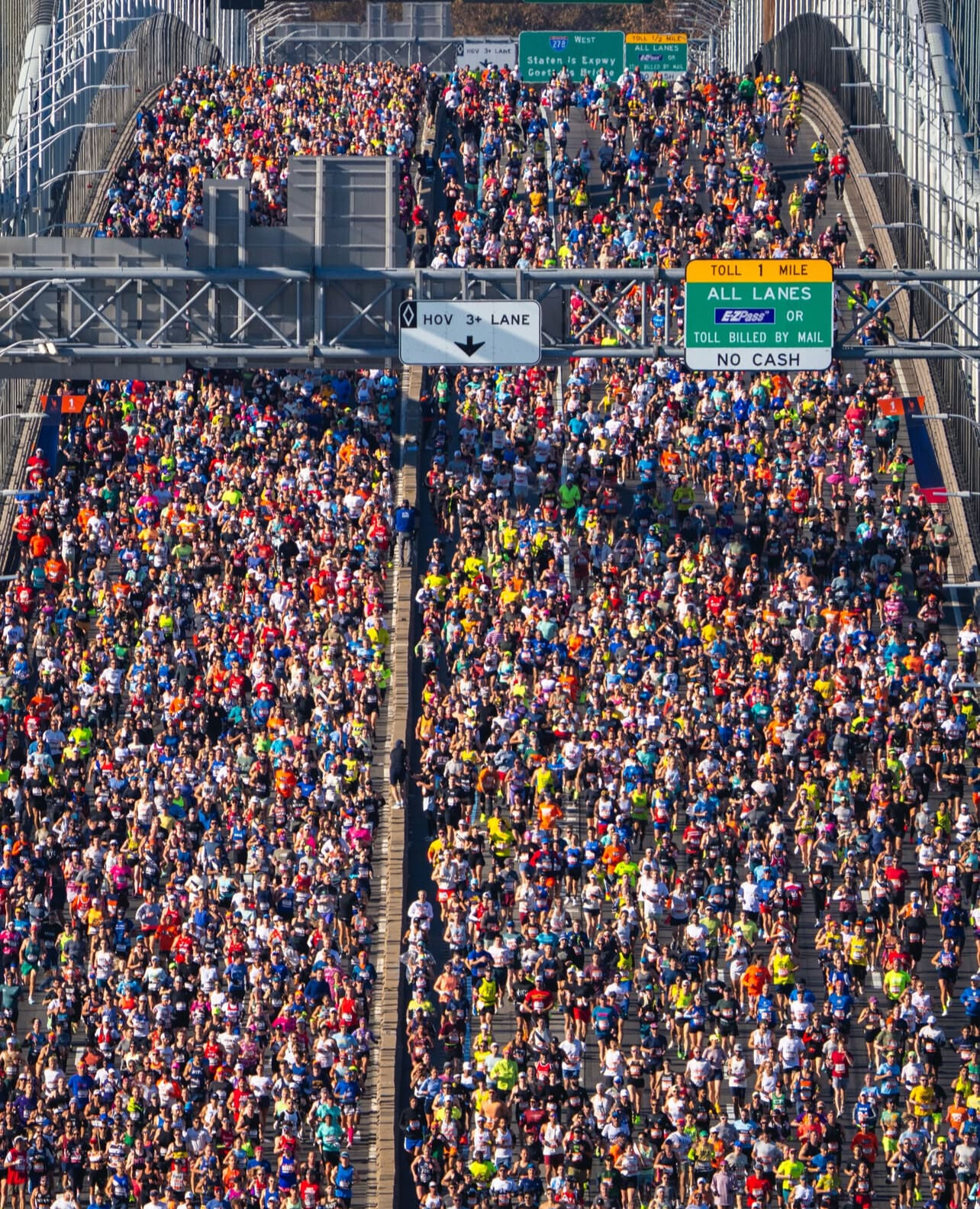
Despite the absence of a record-breaking time, the 2025 edition of the TCS New York City Marathon delivered unforgettable drama. The Kenyan trio’s podium sweep reaffirmed the country’s dominance in distance running, while thousands of runners from across the globe once again turned the streets of the five boroughs into a festival of endurance and inspiration.
Top 10 Men’s Results – 2025 TCS New York City Marathon:
1. Benson Kipruto (Kenya) – 2:08:09
2. Alexander Mutiso (Kenya) – 2:08:09
3. Albert Korir (Kenya) – 2:08:57
4. Patrick Dever (Great Britain) – 2:08:58
5. Matthias Kyburz (Switzerland) – 2:09:55
6. Joel Reichow (United States) – 2:09:56
7. Charles Hicks (United States) – 2:09:59
8. Sondre Moen (Norway) – 2:10:15
9. Tsegay Weldlibanos (Eritrea) – 2:10:36
10. Joe Klecker (United States) – 2:10:37
Eliud Kipchoge finished 17th in 2:14:36.
Kenenisa Bekele did not finish (DNF).
by Boris Baron
Login to leave a comment
Hellen Obiri Makes History in New York — First Woman to Break 2:20 in the Big Apple
NEW YORK CITY — Kenya’s Hellen Obiri produced a sensational performance at the 2025 TCS New York City Marathon, reclaiming her crown and making history with a course-record run of 2:19:51.
Obiri became the first woman ever to break 2 hours 20 minutes on New York’s notoriously challenging course, smashing Margaret Okayo’s 2003 record of 2:22:31 by more than two and a half minutes.
The two-time Olympic silver medalist and double world 5,000 m champion ran a controlled race through the early boroughs before unleashing a decisive surge over the final miles through Central Park. Her combination of power and precision over the rolling terrain solidified her place among the all-time marathon greats.
“This victory means everything,” Obiri said after crossing the line. “New York is one of the toughest courses in the world, and to break 2:20 here feels unbelievable. I wanted to show that history can be made anywhere.”
The result capped a remarkable day for Kenya, which swept the women’s podium.
Top 3 Women – 2025 TCS New York City Marathon
1. Hellen Obiri (KEN) — 2:19:51 (Course Record)
2. Sharon Lokedi (KEN) — 2:20:07
3. Sheila Chepkirui (KEN) — 2:20:24
by Boris Baron
Login to leave a comment
Eliud Kipchoge’s Final Quest: Chasing Meaning, Not Medals in New York
When the sun rises over Staten Island this Sunday, the world will witness something special — Eliud Kipchoge, the greatest marathoner of all time, running the TCS New York City Marathon for the first time. At 40, the Kenyan legend isn’t chasing records. He’s chasing completeness — the final chapter of a career that redefined endurance and possibility.
With two Olympic golds, 11 major marathon victories, and the historic sub-two-hour run, Kipchoge already stands alone. Yet New York remains the one missing jewel in his Abbott World Marathon Majors crown. “If I don’t complete all of them,” he says, “I feel like I am halfway. My legacy will be complete when I have a sixth star.”
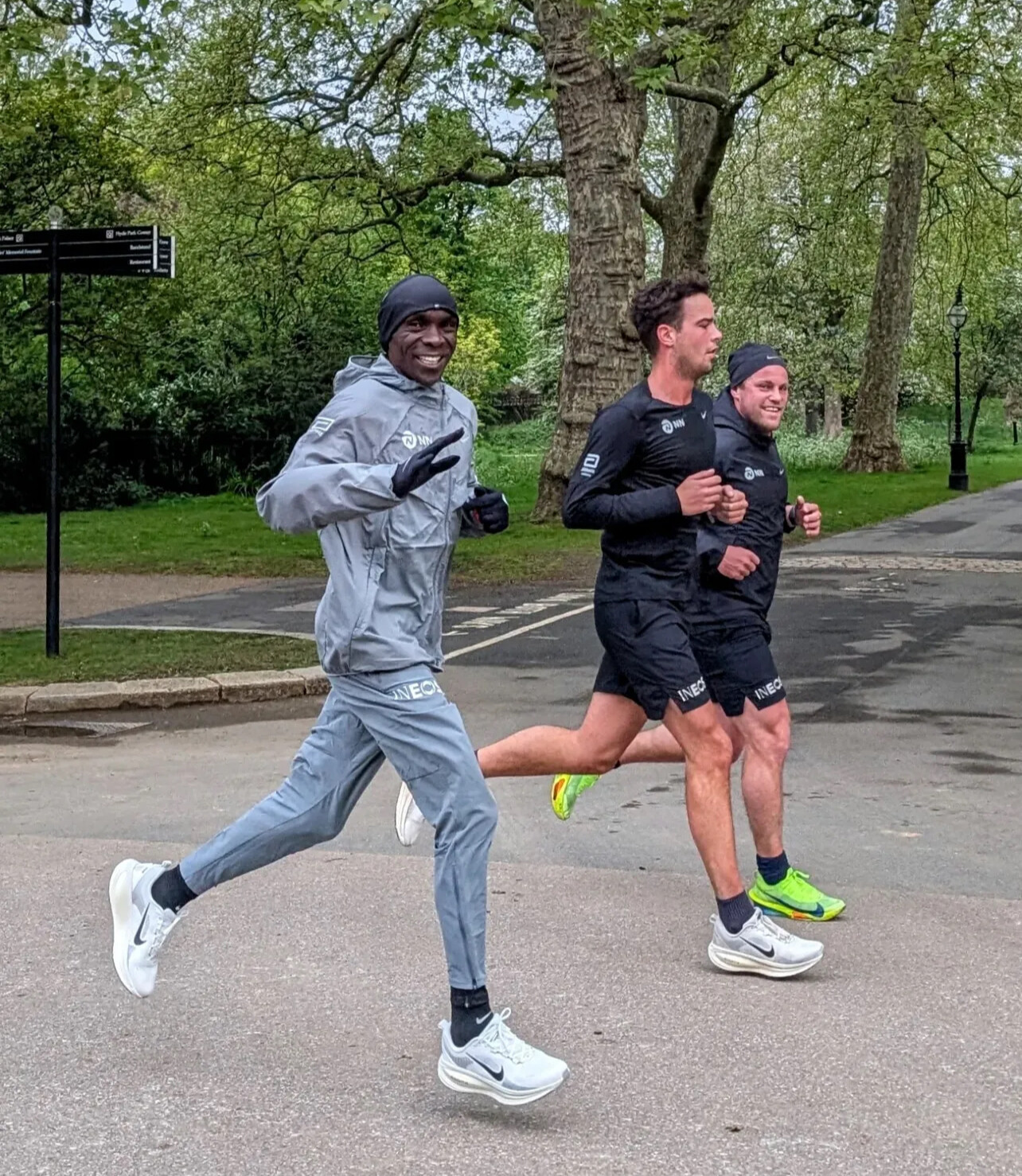
But New York is no Berlin. Its hills and bridges test rhythm and resolve. Kipchoge faces a tough field, led by his former training partner and defending champion Abdi Nageeye, along with Benson Kipruto, Alexander Mutiso, and Ethiopia’s Deresa Geleta. Nageeye, coming off a 2:04:20 in London, aims to defend his title and disrupt the legend’s farewell.
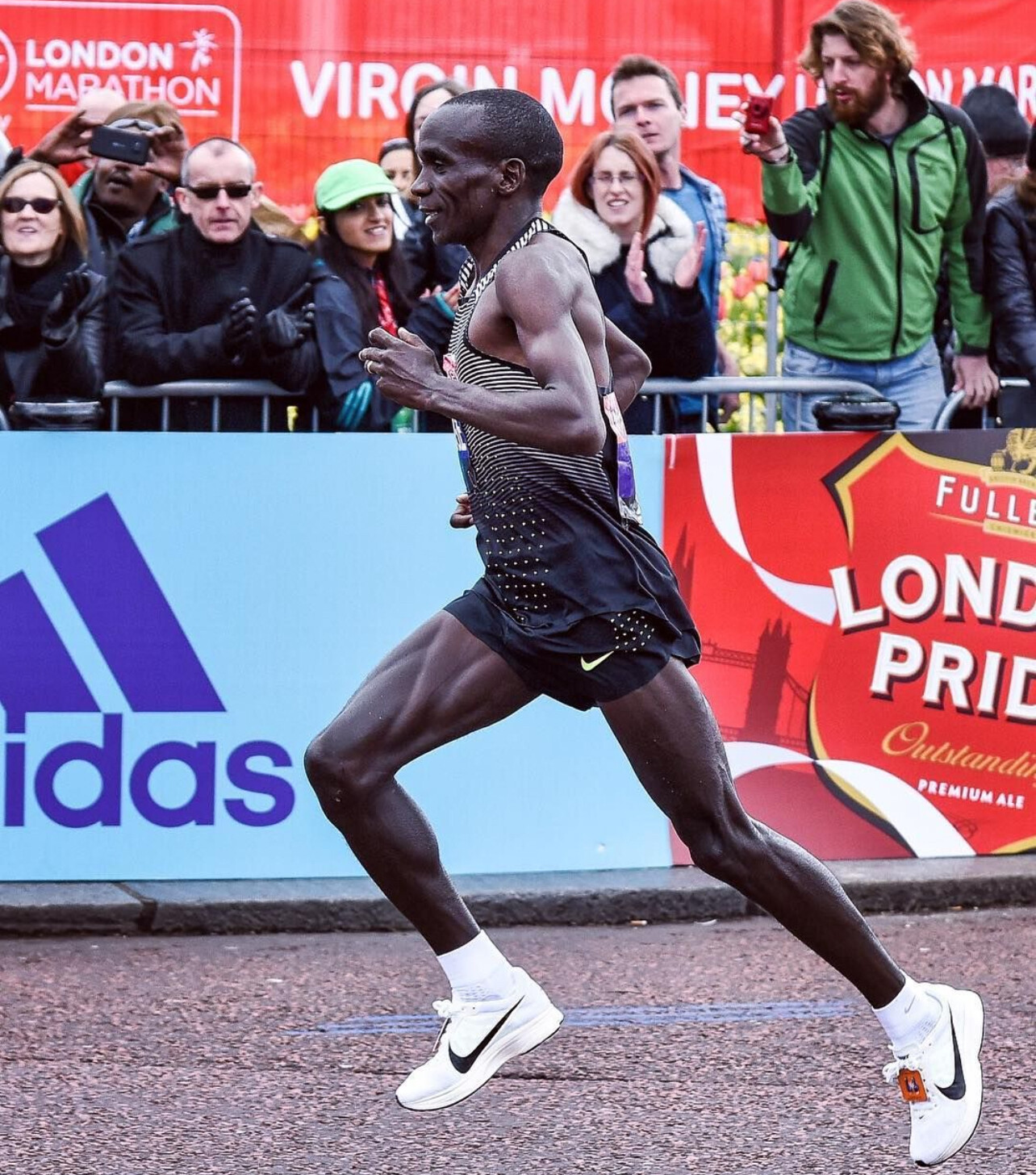
Still, for Kipchoge, this race is about purpose, not podiums. “My happiness is to see people getting interested in what I’m selling,” he says. “I’m selling the sport as a profession.” His mission now is to inspire — through running, mentorship, and his wellness platform Kotcha, which blends training, nutrition, and education. “We’re bringing knowledge to people’s fingertips,” he explains.
To him, running is a universal language. “All human beings are beautiful,” Kipchoge says. “The problem is ourselves — not using our knowledge.”
As 50,000 runners take on the five boroughs, Kipchoge’s presence turns the marathon into something larger — a meditation on effort, purpose, and legacy. His calm smile and relentless discipline remind the world that greatness isn’t about medals, but meaning.
On Sunday, as he strides through Central Park, Kipchoge won’t just be chasing a finish line. He’ll be closing a circle — running not for glory, but for the joy of fulfillment.
by Robert Kibet for My Best Runs
Login to leave a comment
Kenenisa Bekele Joins 2025 New York City Marathon Elite Field
Ethiopian legend Kenenisa Bekele, the third-fastest marathoner in history with a 2:01:41 personal best from Berlin 2019, has officially been added to the 2025 TCS New York City Marathon elite men’s field — setting up yet another thrilling clash with Eliud Kipchoge.
Bekele, now 43, withdrew from April’s London Marathon due to recurring injuries that disrupted his buildup. His most recent marathon finish came at the Paris Olympic Marathon, where he placed 39th in 2:12:24. Despite the setback, Bekele’s experience and resilience continue to make him one of the sport’s most compelling figures.
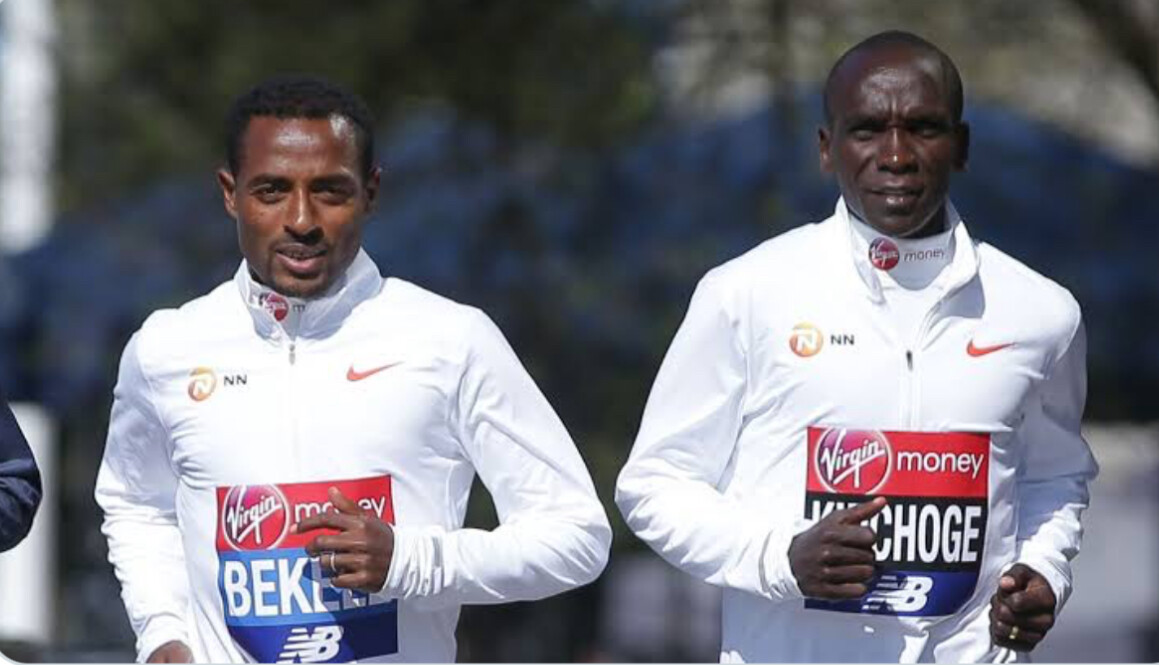
This year’s New York City Marathon will mark Bekele’s sixth career race against Kipchoge, the reigning Olympic champion and former world record holder. Bekele’s only “victory” in that rivalry came at the Paris Olympics, when Kipchoge dropped out mid-race.
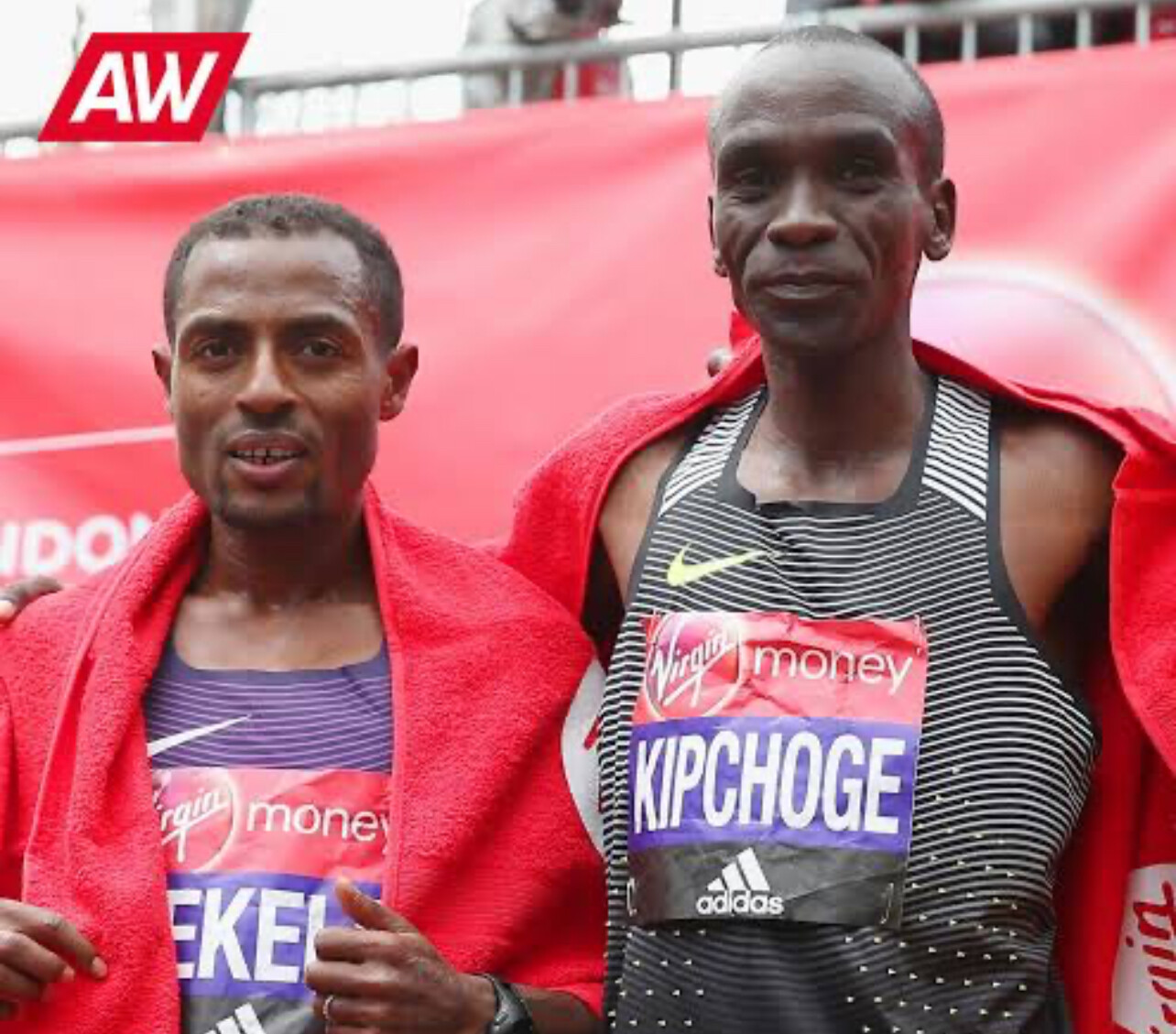
Bekele’s addition brings new intrigue to a field already rich in talent and storylines. While New York’s undulating course rarely produces record times, it remains one of the most prestigious and unpredictable races on the global marathon calendar — a true test of strategy and mental strength.
Notably absent from the 2025 lineup is Evans Chebet, the 2022 NYC Marathon champion and last year’s runner-up. Chebet has withdrawn from this year’s race after failing to finish at the Boston Marathon in April.
As the countdown begins, all eyes turn to Central Park, where two of the greatest marathoners of all time — Bekele and Kipchoge — are set to renew their rivalry on one of the world’s toughest stages.
Will Bekele’s comeback write a new chapter in marathon history, or will Kipchoge’s consistency once again define the day? On November 2, New York will have its answer.
by Boris Baron
Login to leave a comment
Running Through The City Of Dreams New York Marathon 2025
On Sunday, November 2, 2025, the five-borough spectacle of the New York City Marathon will unfold once again, offering more than 50,000 runners the chance to push 26.2 miles through the heart of New York. From the cannon blast on Staten Island to the triumphant finish in Central Park, this is a race that marries endurance, emotion and urban drama.
Kipchoge and Hassan Headline an Extraordinary Field

The biggest storyline heading into this year’s race is the presence of Eliud Kipchoge, the greatest marathoner in history, and Sifan Hassan, the double Olympic champion who stunned the world with marathon victories in both London and Chicago. For Kipchoge, New York completes his journey through all six Abbott World Marathon Majors — a crown that has eluded him until now.
Hassan, meanwhile, returns to the marathon distance after a string of world-class performances on both track and road, her fearless racing style perfectly suited to the unpredictable rhythm of New York’s streets.
They’ll face an elite field stacked with world-class names, including Benson Kipruto of Kenya (2:02:16 PB), Evans Chebet (two-time Boston champion, 2:03:00 PB), and defending champion Tamirat Tolaof Ethiopia (course record holder at 2:04:58). The women’s field is equally star-studded, featuring 2022 champion Sharon Lokedi, Tokyo winner Rosemary Wanjiru, and a host of East African contenders ready to test Hassan on one of the sport’s toughest stages.
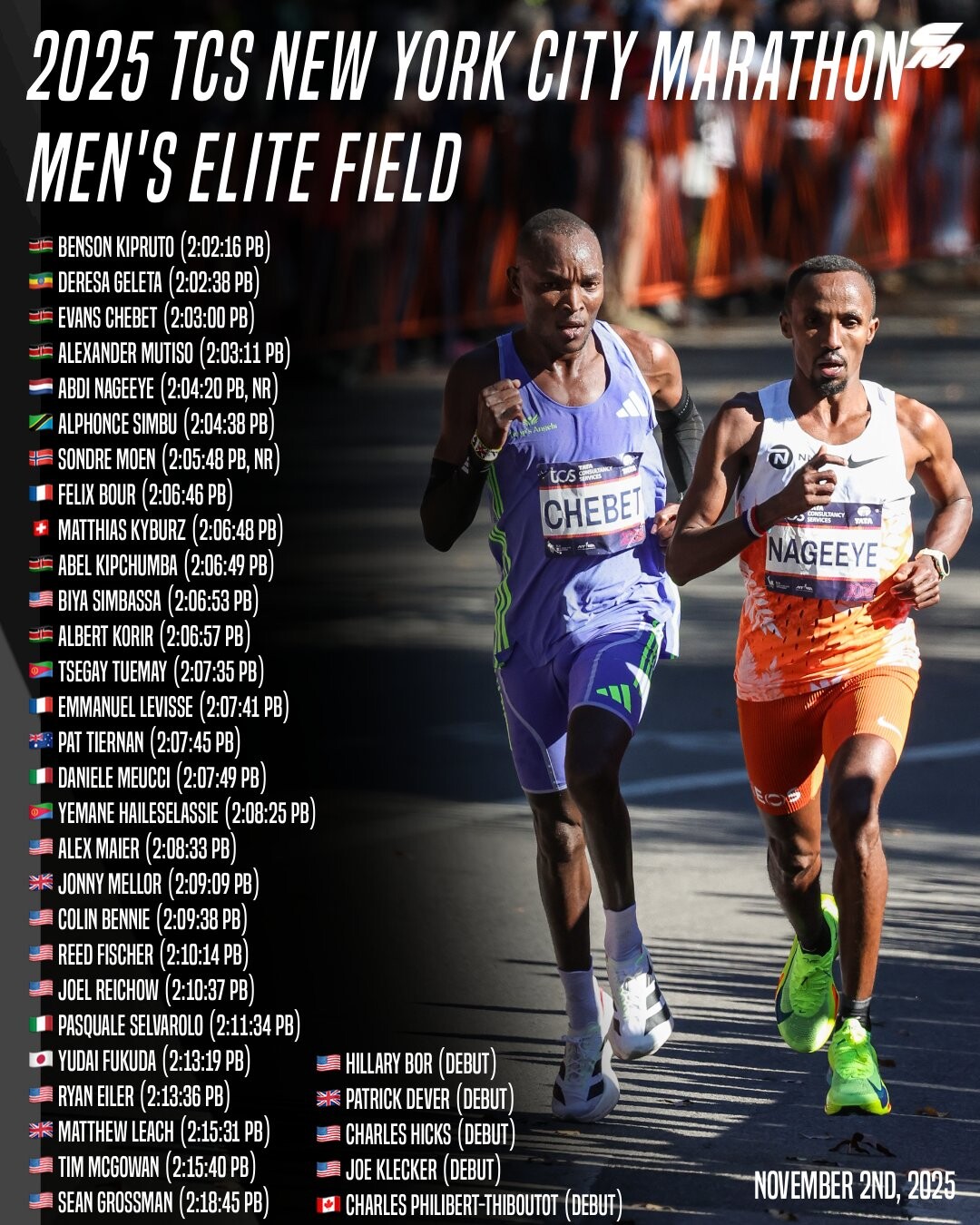
Among the American hopefuls, Emily Sisson, the U.S. record holder in the marathon, headlines the women’s field and will make her New York debut. On the men’s side, Biya Simbassa leads the U.S. charge, joined by a deep domestic field racing for top-American honors and prize bonuses.
Course Records
• Men: 2:04:58 — Tamirat Tola (ETH), 2023

• Women: 2:22:31 — Margaret Okayo (KEN), 2003
These records reflect both top-tier performance and the challenging character of the course — rather than flat, pacer-assisted routes that routinely see world-record times.
Prize Purse
The stakes are high. Open-division winners stand to earn $100,000, with descending prizes through 10th place. The event also offers a $50,000 bonus for a winner who breaks the standing course record, plus separate prize pools for top U.S. finishers and wheelchair divisions. With total payouts approaching nearly a million dollars, the financial motivation is real — even if the course isn’t built for world-record thrills.
Why a World Record Isn’t Realistic
Make no mistake: the New York course is legendary for its toughness rather than its speed. Runners face five major bridge crossings, a long ascent up the Queensboro Bridge around mile 15–16, variable terrain, sharp turns and a final push up Fifth Avenue into Central Park. Unlike flat, pacemaker-led courses such as Berlin or Chicago, NYC emphasises tactical racing, rivalries and finish-line theatre. The organising body eliminated dedicated elite pacemakers years ago in favour of pure head-to-head competition.
While pace groups may support recreational waves, elite winners will race without the type of structured pacemaking that enables constant sub-2:03 splits. In short: this is a championship-style contest, not a time-trial.
What Makes NYC Unique
• Cityscape & crowd noise: From Staten Island’s Verrazzano Narrows Bridge to Brooklyn’s vibrant neighborhoods, the Queensboro Bridge, Manhattan’s First Avenue and the final loop in Central Park, the scenery is unmatched.
• Massive scale but elite depth: The global field, the tens of thousands of recreational runners, the international media — the race’s atmosphere is unmatched in road-racing.
• Legacy of racing over timing: Past editions have celebrated bold attacks and dramatic finishes more than normally smooth pacing. That makes this one of the world’s most storied and unpredictable marathons.
What to Watch on November 2
• How Kipchoge adapts his disciplined, flat-course style to a course that demands rhythm changes, hills and surges.
• Whether Hassan will leverage her track speed and tenacity to counter a course that rewards strength and race-tactics.
• Whether Sisson (and other U.S. entrants) can navigate the final tougher miles to claim top-American status or even an open podium spot.
• The weather and pacing strategy: any wind across the bridges or mis-timed surge could decide the race more than early splits.
• Whether someone dares to go after Tola’s 2:04 : 58 mark — unlikely but possible under perfect conditions.
The 2025 New York City Marathon is more than a race. It is a testament to endurance, to the city that hosts it and to runners who thrive in challenge rather than comfort. Kipchoge and Hassan bring star power. The U.S. challengers bring ambition. And the 50,000+ starters bring stories.
Whether you’re chasing a personal best, seeking a finish-line moment or just watching from the sidelines, November 2 will be unforgettable. The bridges, the boroughs, the final climb into Central Park — the city will judge your resolve. And with no pacemakers to pull you through, this year’s finishers will know they earned every step with heart.
by Boris Baron
Login to leave a comment
TCS New York City Marathon
The first New York City Marathon, organized in 1970 by Fred Lebow and Vince Chiappetta, was held entirely in Central Park. Of 127 entrants, only 55 men finished; the sole female entrant dropped out due to illness. Winners were given inexpensive wristwatches and recycled baseball and bowling trophies. The entry fee was $1 and the total event budget...
more...Chasing New York: What to Watch at the 2025 TCS New York City Marathon
Every November, the streets of New York City transform. Five boroughs become a stage. Dreams meet asphalt.
The 2025 TCS New York City Marathon is fast approaching — and for runners, coaches, and fans alike, it remains one of the most electric events on the global running calendar.
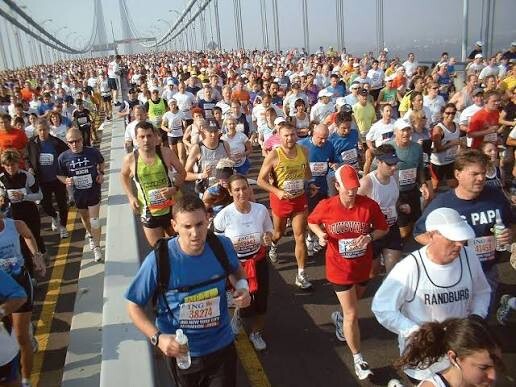
The Big Picture
• Date: Sunday, November 2, 2025
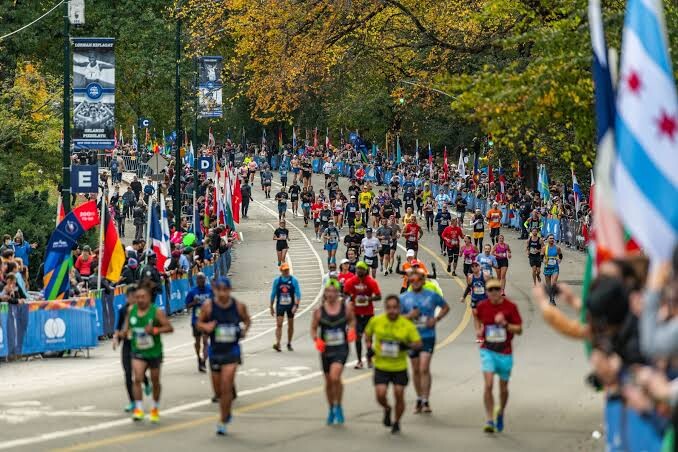
• Field size: More than 55,000 runners representing over 130 nations will take on the 26.2-mile journey from Staten Island to Central Park.
• Defending champions: Abdi Nageeye (Netherlands) and Sheila Chepkirui (Kenya) return to defend their crowns.
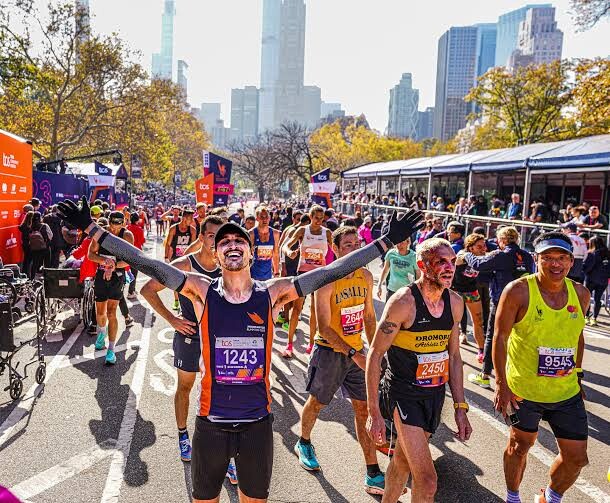
• Debut stars: Marathon legend Eliud Kipchoge and Olympic champion Sifan Hassan will make their long-awaited New York debuts — a storyline that has the running world buzzing.
• Classic route: The course again threads through all five boroughs, starting at Fort Wadsworth on Staten Island, crossing the Verrazzano-Narrows Bridge, and finishing in Central Park.
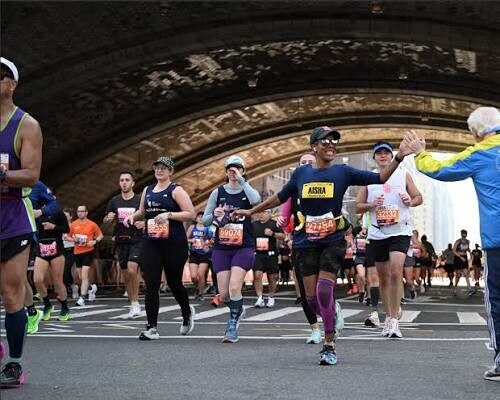
• Sustainability focus: Organizers at New York Road Runners (NYRR) continue to expand environmental initiatives, including recyclable aluminum water bottles and reduced single-use plastics.
Course Records
• Men’s Record: 2:04:58 – Tamirat Tola (2023)

• Women’s Record: 2:22:31 – Margaret Okayo (2003)
Both marks remain tough to challenge on New York’s rolling, bridge-laden course — but with Kipchoge, Chebet, and Nageeye in the men’s field, and Hassan, Obiri, and Lokedi among the women, the potential for history is very real.
Men’s Elite Highlights
• Eliud Kipchoge (Kenya) – two-time Olympic champion, 2:01:09 PB, running NYC for the first time.
• Abdi Nageeye (Netherlands) – defending champion and Olympic silver medalist.
• Evans Chebet (Kenya) – two-time Boston Marathon champion.
• Benson Kipruto (Kenya) – Chicago 2022 winner.
• Albert Korir (Kenya) – former NYC champion.
• Joe Klecker (USA) – U.S. Olympian making his marathon debut.
• Hillary Bor (USA) – U.S. steeplechase champion transitioning to the roads.
• Charles Hicks (USA) – NCAA cross-country champion now turning professional.
Women’s Elite Highlights
• Sifan Hassan (Netherlands) – Olympic champion, winner in London (2023) and Chicago (2024).
• Hellen Obiri (Kenya) – Boston 2023 and NYC 2023 champion.
• Sharon Lokedi (Kenya) – NYC 2022 winner, still a local favorite.
• Sheila Chepkirui (Kenya) – defending NYC champion.
• Emily Sisson (USA) – current American marathon record holder (2:18:29).
• Molly Seidel (USA) – Tokyo Olympic bronze medalist.
• Fiona O’Keeffe (USA) – 2024 U.S. Olympic Trials marathon champion.
• Susanna Sullivan (USA) – Top-10 finisher at Boston 2023, consistent national contender.
This year’s field features 49 Olympians and Paralympians, nine past major marathon winners, and 16 medalists from Olympic or World Championship events — arguably the deepest lineup in New York history.
What Makes New York Unique (and Brutal)
• Rolling terrain and bridges: The Verrazzano, Pulaski, Queensboro, and Willis bridges each sap rhythm and energy.
• Crowd power: Two million spectators line the course, creating unmatched atmosphere — and volume.
• Late-season unpredictability: Weather can swing from cold drizzle to crisp fall perfection.
• Tactical racing: With its uneven pacing demands, NYC rewards strategy over pure speed.
Storylines to Watch
• Kipchoge’s debut: The marathon GOAT takes on the sport’s loudest stage. Can he master New York’s relentless hills and twists?
• Hassan’s bold quest: Coming off London and Chicago wins, can she complete the trifecta in her first NYC appearance?
• Lokedi vs. Obiri: The Kenyan duo continue their fierce rivalry on familiar ground.
• Nageeye’s defense: Last year’s champion faces his toughest test yet with Chebet and Kipruto in pursuit.
• American charge: Sisson, Seidel, O’Keeffe, and Sullivan lead the most complete U.S. women’s team in years — while Klecker and Bor look to ignite the next chapter for American men’s marathoning.
• Record watch: Tola’s 2:04:58 may finally be tested, and Okayo’s 22-year-old mark could fall if conditions align.
For Runners and Coaches
• Train the bridges. Practice long tempo runs that mimic New York’s undulating rhythm.
• Respect the pace. The roar of Brooklyn can trick even the best into going out too fast.
• Fuel flexibly. NYRR’s eco-station setup may differ from other majors — plan accordingly.
• Stay mentally sharp. The final 10 K through Central Park can break anyone unprepared for its hills.
• Layer smartly. Start slightly chilled; the crowds and effort will warm you fast.
The Bottom Line
The 2025 TCS New York City Marathon blends star power, unpredictability, and history like no other race. From Kipchoge’s long-awaited debut to the fiercest women’s field ever assembled in New York, every mile promises drama.
For runners chasing personal bests, and for millions of spectators lining the streets or watching from afar, November 2 will again remind us why this marathon is more than a race — it’s a celebration of endurance, spirit, and the human story that unfolds across 26.2 miles of the world’s greatest city.
by Boris Baron
Login to leave a comment
TCS New York City Marathon
The first New York City Marathon, organized in 1970 by Fred Lebow and Vince Chiappetta, was held entirely in Central Park. Of 127 entrants, only 55 men finished; the sole female entrant dropped out due to illness. Winners were given inexpensive wristwatches and recycled baseball and bowling trophies. The entry fee was $1 and the total event budget...
more...Oz Pearlman: Mentalist and Marathoner with a 2:23:52 Personal Best
Oz Pearlman is most known as a world-class mentalist and entertainer, dazzling audiences with mind-reading feats. While his stage act is about illusions and mind-reading, his running accomplishments are very real and recognized in the endurance community.
Oz has carved out a reputation as an elite runner, with marathon credentials and ultra-endurance performances that prove his strength goes far beyond the stage.
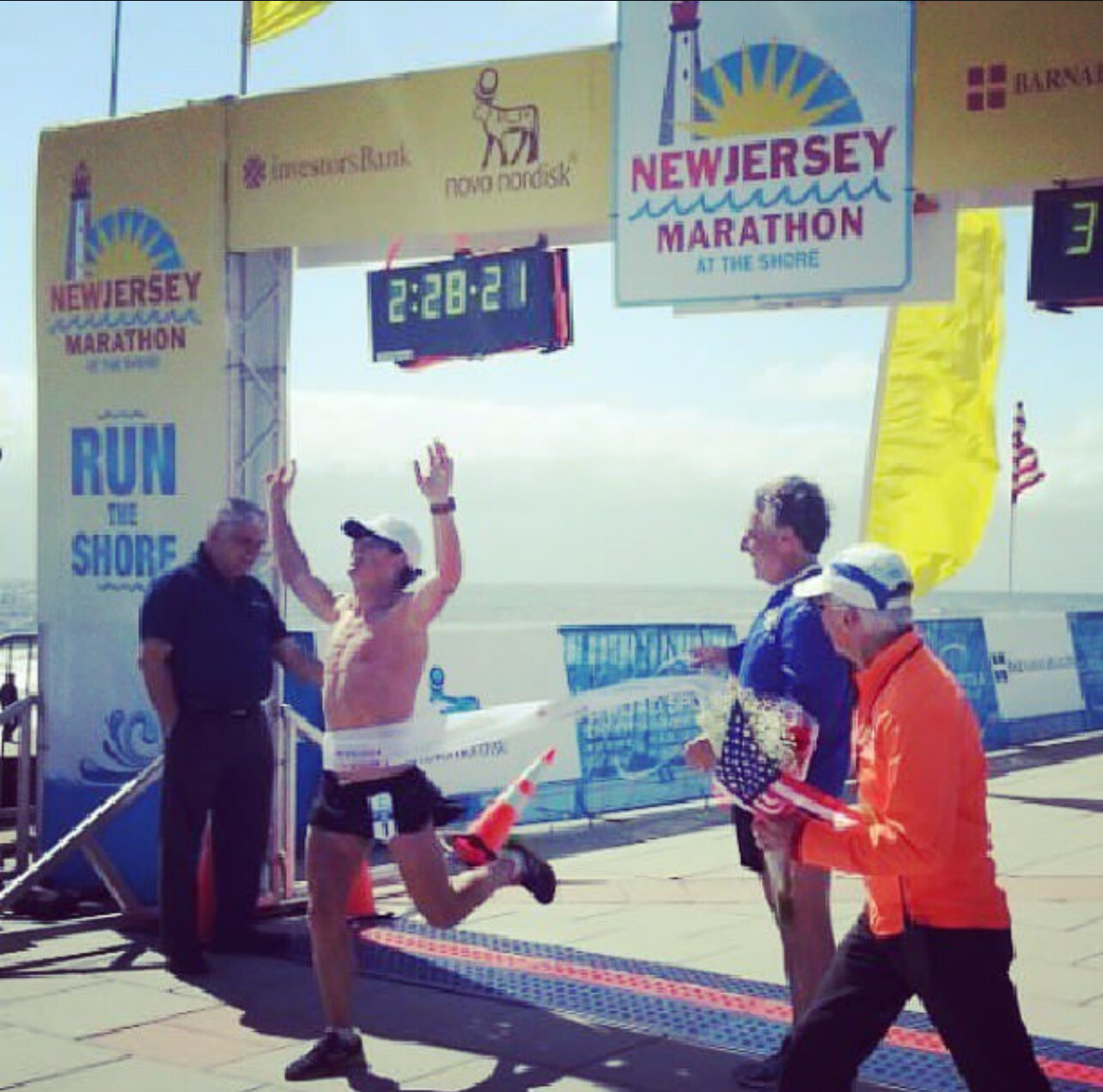
Marathon Credentials
Oz’s personal best marathon of 2:23:52, set at the Philadelphia Marathon in 2014, is a time most competitive runners can only dream of. He’s also posted:
• 2:26:59 at the 2014 New York City Marathon
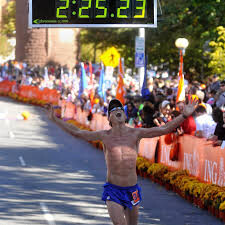
• 2:29:19 at the 2021 NYC Marathon
• 2:40:14 at the 2022 NYC Marathon

Along the way, he’s notched victories in regional races, including the New Jersey Marathon, underscoring his range and consistency.
From Marathons to Ultramarathons
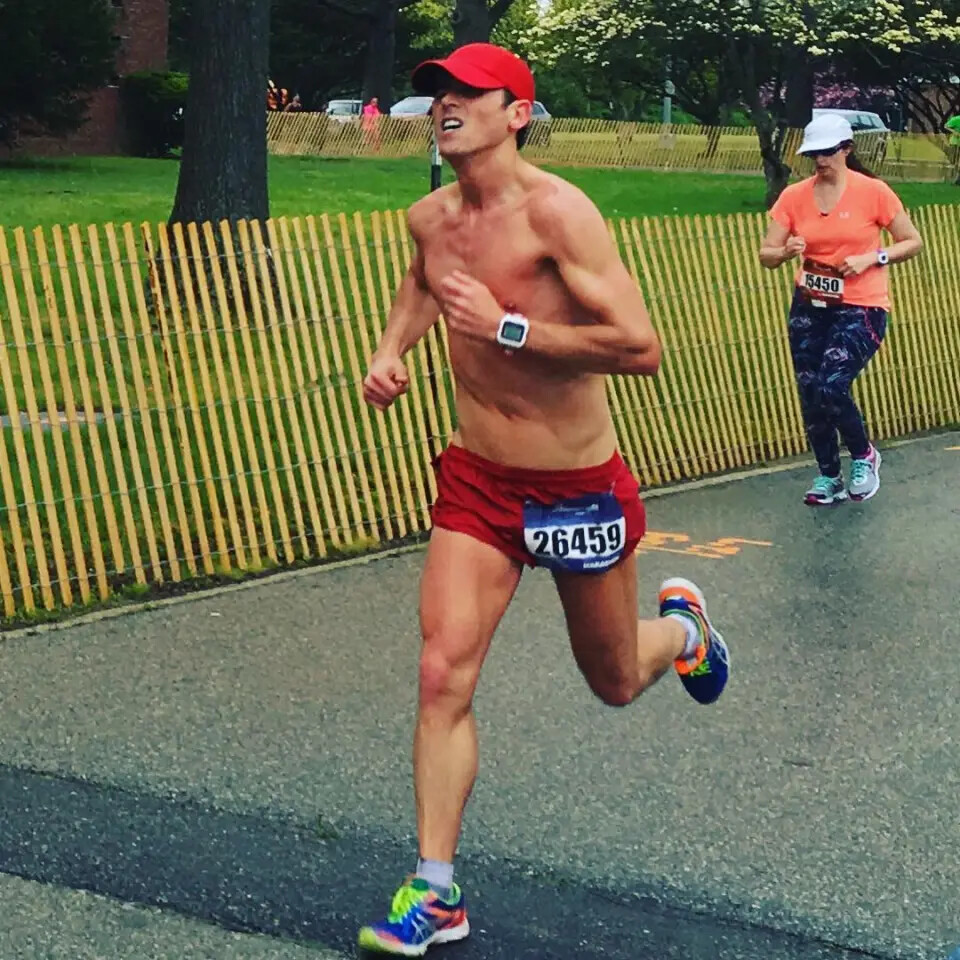
Oz didn’t stop at 26.2. He’s tested his limits in some of the sport’s toughest arenas:
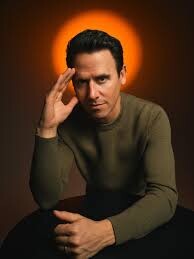
• 100 miles in 16:53:25 at the Keys Ultra (2021), finishing second overall.
• 100 miles in 18:25:23 at the Umstead 100-Mile Endurance Run (2025).
• 117 miles in Central Park (2022), setting the record for most loops in a single day while raising funds for Ukrainian relief.
• A nonstop run from Montauk Point Lighthouse to Times Square — over 130 miles in 24 hours.
These efforts highlight not only his physical endurance but also his ability to push through the mental barriers that define ultra running.
Mind Over Miles
As a mentalist, Oz has honed a mastery of focus, patience, and mental toughness — qualities that translate seamlessly to distance running. Whether chasing sub-2:25 marathons or grinding through 100-mile ultras, he shows that success in endurance sport comes as much from the mind as from the legs.
Running With Purpose
Many of Oz’s longest challenges have doubled as fundraising efforts, proving that his running is about more than personal achievement. His Central Park ultra raised significant support for Ukraine, reflecting how he uses his talents — both on stage and on the course — to make an impact.
Oz Pearlman is more than an entertainer. He is a reminder that resilience, consistency, and the power of the mind can take us further than we imagine — sometimes all the way from Montauk to Manhattan.
by Boris Baron
Login to leave a comment
Four Scenic Routes to Explore in San Francisco Plus: A Unique Race Experience Coming August 3
San Francisco isn’t just a city of hills and cable cars—it’s a runner’s dream. With its unique blend of urban energy, coastal serenity, and panoramic vistas, the City by the Bay offers some of the most scenic running routes in the world. Whether you’re training for a race or simply looking for a refreshing jog, these four routes provide the perfect introduction to San Francisco’s running scene.
1. Golden Gate Park Loop

• Distance: 7 miles
• Terrain: Paved paths and dirt trails
• Highlights: Botanical gardens, Stow Lake, and peaceful groves
Golden Gate Park is San Francisco’s version of Central Park—only longer and filled with even more natural variety. This 7-mile loop guides runners past the Japanese Tea Garden, the Conservatory of Flowers, and around Stow Lake. It’s ideal for tempo runs, long runs, or easy days, offering both paved and soft-surface options with minimal traffic distractions. You’ll find moments of quiet and lush green scenery that make you forget you’re in the middle of a major city.
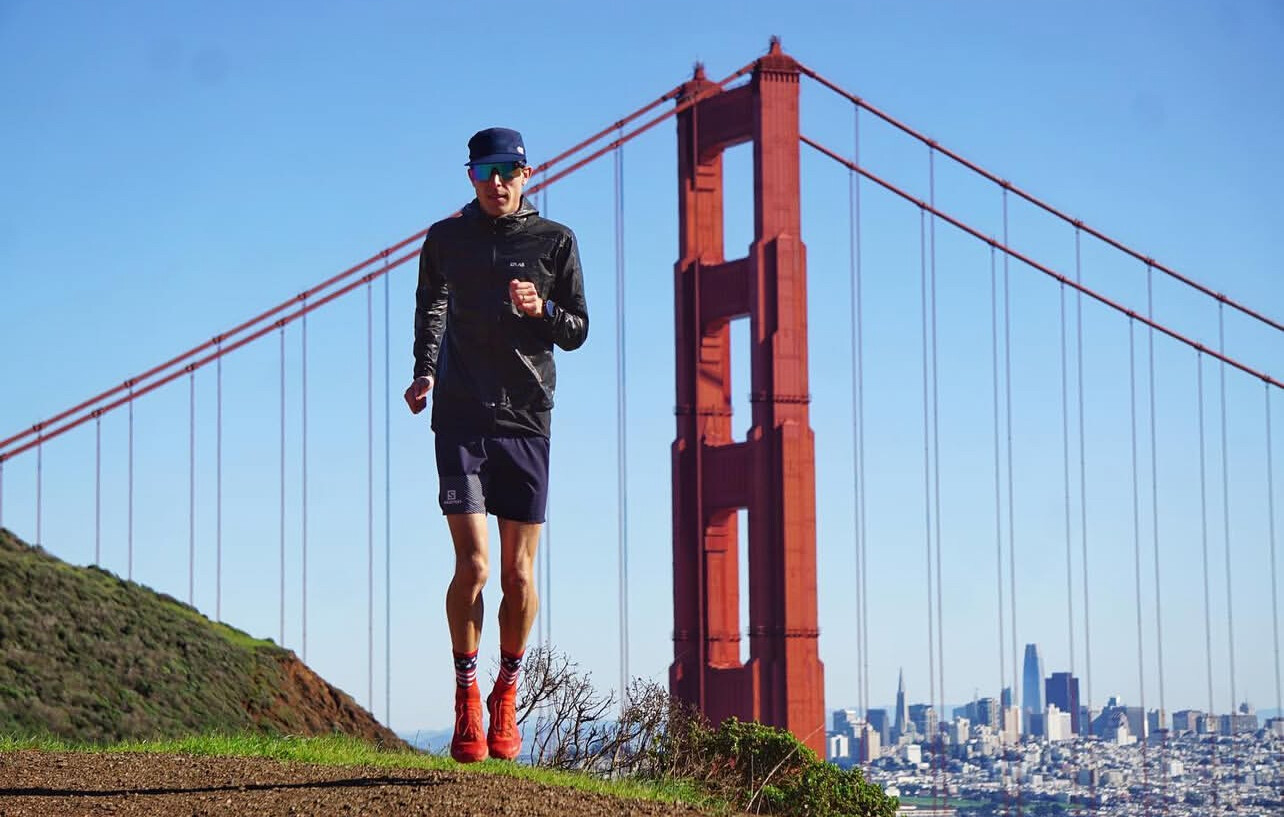
2. Presidio Challenge
• Distance: 4 miles
• Terrain: Hilly with stairs and varied paths
• Highlights: Sweeping views of the Golden Gate Bridge and Bay, forested trails, military history

Looking for a climb and a challenge? The Presidio route rewards effort with unmatched views and tranquil forest trails. Once a military post, this national park is now one of the most scenic places to run in San Francisco. Start near Crissy Field, ascend via the Batteries to Bluffs Trail or the Ecology Trail, and loop back through shaded switchbacks and historic military bunkers. It’s a great test of fitness with picture-perfect moments.
3. Embarcadero Waterfront Run
• Distance: 3–6 miles
• Terrain: Flat, paved promenade
• Highlights: Bay Bridge, Ferry Building, Pier 39, sea lions
This runner-friendly route delivers postcard-worthy views and an easy-to-follow course along the Bay. Begin at Oracle Park or the Ferry Building and head north past piers, ships, shops, and cafés. The Embarcadero is ideal for morning or evening runs, with great lighting, plenty of water stops, and occasional sea lion cameos at Pier 39. It’s also one of the most accessible spots for visitors staying downtown.
4. Lands End Coastal Trail
• Distance: 3–4 miles
• Terrain: Dirt trails and stairs
• Highlights: Cliffside Pacific views, Sutro Baths, Golden Gate Bridge overlook
Lands End feels like a trail runner’s escape—without leaving the city. The route snakes along the cliffs on the city’s northwest edge, offering stunning ocean views, cypress trees, and a glimpse of the iconic Golden Gate Bridge in the distance. While the terrain includes stairs and some narrow paths, the scenery is unforgettable. Make time to stop at the Sutro Baths ruins and the Lands End Labyrinth for a true San Francisco experience.
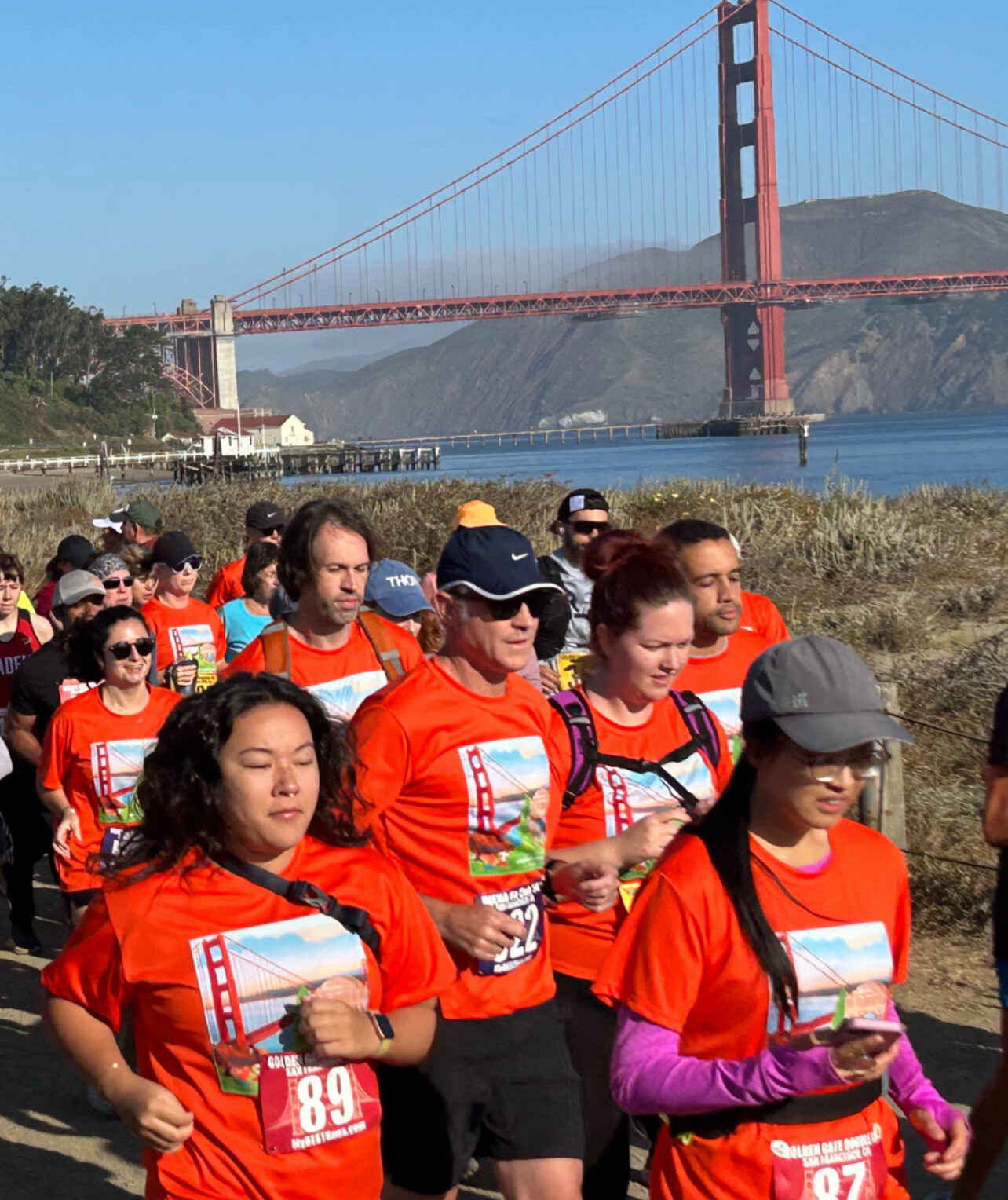
Looking for a Race? Don’t Miss August 3
If you’re inspired to test your fitness on one of these routes, sign up for one of San Francisco’s most scenic events: the Golden Gate 10K, 5K, and Double 8K, happening on August 3. Held at Crissy Field, these flat and fast courses offer panoramic views of the Golden Gate Bridge and the bay—without ever crossing the bridge itself.
The event also features the Golden Gate Double 8K, a unique two-part challenge: run a 5K, take a short recovery break, then race a 3K. The combined time determines your score, adding a strategic twist that rewards consistency and pacing.
It’s an ideal race for all levels—from competitive racers to weekend warriors—and a memorable way to experience the San Francisco waterfront on foot.
Tips for Running in San Francisco
• Layer Up: Weather can shift quickly. Fog and chilly breezes are common even in summer.
• Mind the Terrain: Hills and stairs are frequent. Don’t underestimate them.
• Stay Hydrated: Water fountains are available in parks and along the Embarcadero.
• Beat the Crowds: Early mornings offer the quietest, most peaceful running conditions.
• Use Public Transit: Many routes are easily accessible via BART, Muni, or bike share.
Whether you’re a local or just visiting, San Francisco delivers a unique mix of urban running and natural beauty. With iconic views, varied terrain, and a welcoming fitness community, the city makes it easy to fall in love with running all over again.
So lace up your shoes, pick a path, and let San Francisco move you.
Would you like me to add clickable registration or map links for the August 3 races?
by Boris Baron
Login to leave a comment
Golden Gate 10k/5k DOUBLE 8K
The Golden Gate courses offers unparalleled views of the Golden Gate Bridge for more than 80% of the way! The course will begin at historic Crissy Field near the Presidio of San Francisco. Runners will enjoy the gorgeous vistas of the Golden Gate National Recreation Area. We are offering three races: Golden Gate 10K and 5K (run/walk) and Golden Gate...
more...Running Along the Seine River in Paris: My Second Favorite Place to Run
Some runs are so memorable that they stay with you long after you’ve finished them. For me, running along the Seine River in Paris is one of those special experiences. It’s my second favorite place to run, just behind Central Park in New York.
Starting at Notre-Dame: A Run Through the Heart of Paris

My favorite way to run along the Seine starts at Notre-Dame Cathedral on Île de la Cité. Being there when they reopened the cathedral after the devastating fire was a moment I’ll never forget. Seeing it restored and standing tall again makes this starting point even more special.
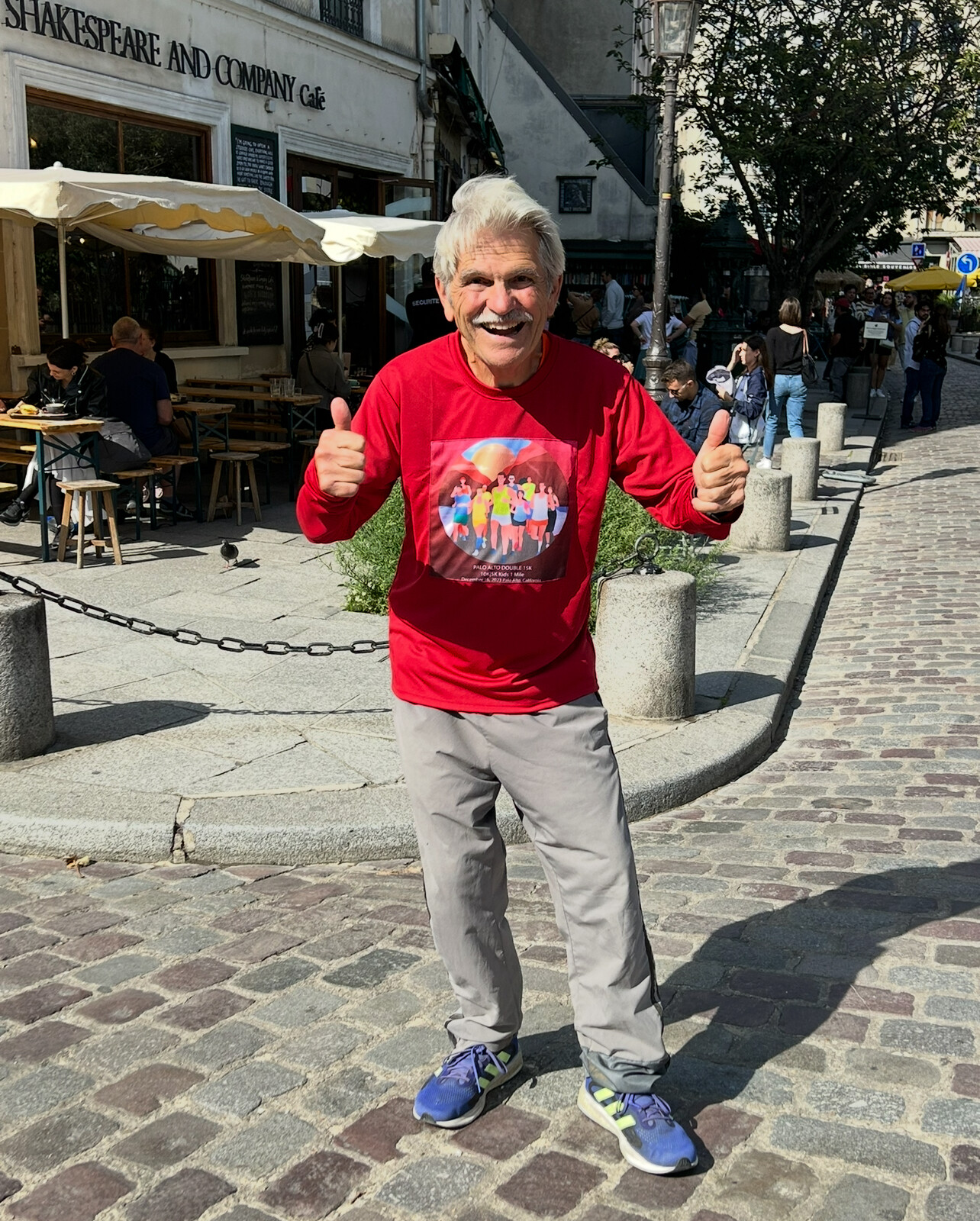
I prefer to run on the right side of the Seine (Rive Droite) first, heading west toward the Eiffel Tower. The early morning is the best time—Paris is still quiet, the air is crisp, and the river reflects the soft glow of the sunrise.
Running West Along the Right Bank (Rive Droite)
Starting at Notre-Dame, I follow the pedestrian paths along the Right Bank. This side of the Seine has a mix of cobblestone walkways and smooth running paths, with plenty of open space.

One of the first landmarks I pass is the Louvre, its grand architecture and glass pyramid still peaceful before the crowds arrive. Continuing west, I run through Port de l’Arsenal and past Pont Neuf, the oldest bridge in Paris, which has stood here since the early 1600s.
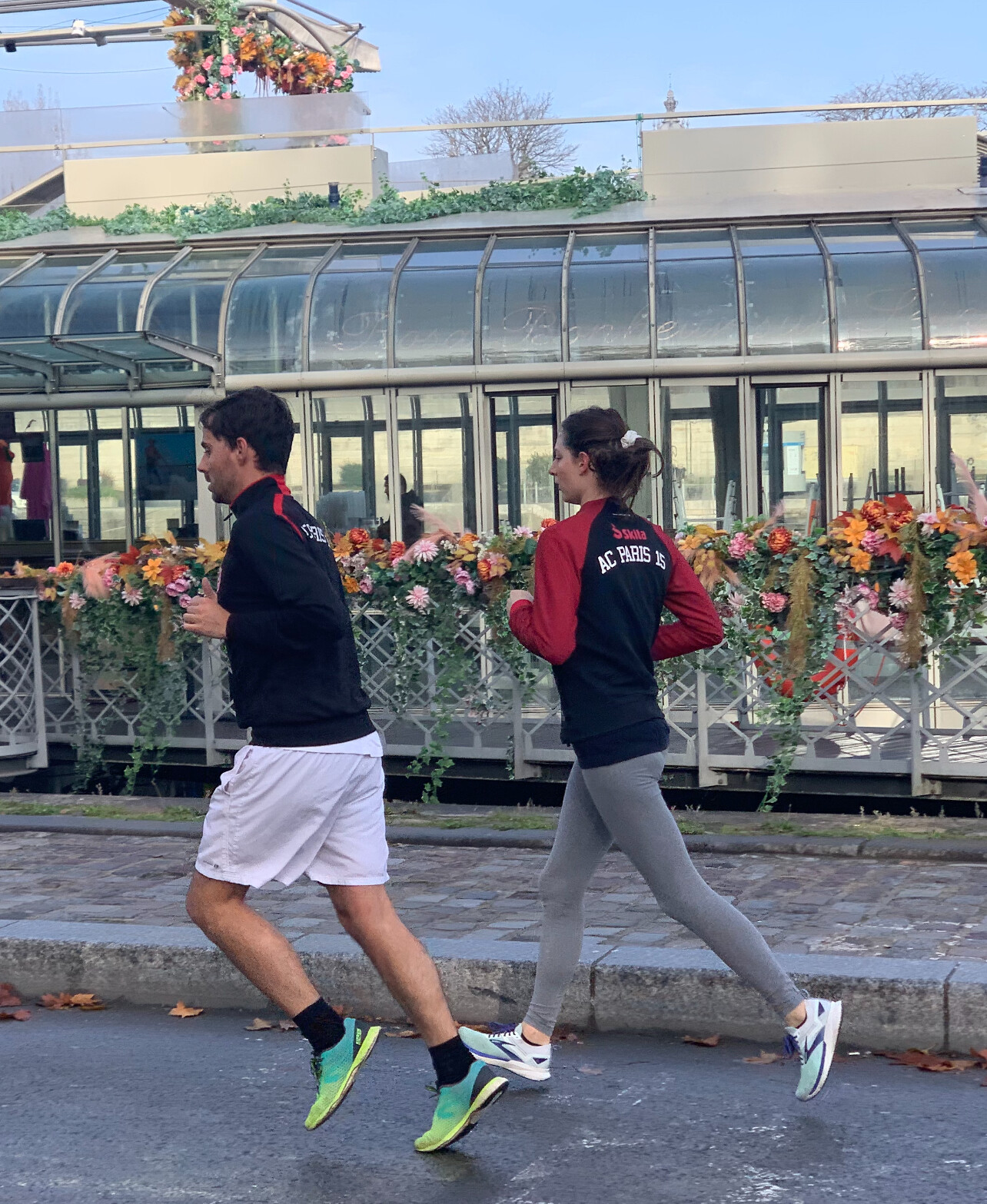
As I approach the Pont Alexandre III, I know I’m getting close to my turnaround point. This is one of the most beautiful bridges in the world, with its golden sculptures and ornate details. Beyond it, the Eiffel Tower rises in the distance, marking the midway point of my run.

Turning Around at the Eiffel Tower
Reaching the Eiffel Tower is always a highlight. No matter how many times I’ve run here, the sight of this iconic landmark never gets old. I take a moment to appreciate the view—sometimes stopping for a quick photo, sometimes just soaking it all in.
This is where I cross over to the Left Bank (Rive Gauche) to begin the second half of the run back toward Notre-Dame.

Returning Along the Left Bank (Rive Gauche)
The Left Bank has a different feel—more relaxed, with wider paths and fewer cobblestones. I pass by the Musée d’Orsay, the beautiful former train station turned art museum, and then continue past Port de Solférino, a scenic section of the river where the city’s energy starts to build.
Running past the Bouquinistes, the historic booksellers who line the riverbanks, is always a treat. Their green wooden stalls, filled with rare books and vintage prints, are a reminder that Paris is a city that treasures history and culture.
As I approach Île de la Cité, the home stretch of the run comes into view. Crossing back over the Seine near Pont Saint-Michel, I finish my run where I started—at Notre-Dame. By now, Paris is fully awake, and the city is alive with movement.
Why This Run is Special
This route is perfect for so many reasons. The mix of smooth paths, breathtaking landmarks, and the feeling of running through history makes every step enjoyable. Splitting the run between the Right Bank on the way out and the Left Bank on the way back also provides a unique perspective of Paris—like seeing the city in two different ways during the same run.
Why It’s My Second Favorite Run
Some runs stand out above all others:
1. Central Park, New York – The perfect balance of nature, varied terrain, and city energy.
2. The Seine River, Paris – A stunning out-and-back run along both banks of the Seine, with world-famous landmarks at every turn.
Final Thoughts

If you’re ever in Paris, I highly recommend running this route. Start at Notre-Dame, head west on the Right Bank, cross at the Eiffel Tower (I had to stop and take a photo of the Tower through the trees) and return along the Left Bank. It’s an unforgettable way to experience the city—and one of the best ways to truly feel the magic of Paris.
And as a special treat, I like to meet my wife Catherine at the little café across (Cafe Paris) from Notre-Dame for a coffee and maybe an avocado toast—and, of course, a nice conversation.
by Bob Anderson
Login to leave a comment
Moh Ahmed Makes Half Marathon Debut A New Chapter for Canadas Distance Running Star
For elite runners, moving up in distance as they age is a natural progression History has shown this with legends like Kenenisa Bekele Haile Gebrselassie and Eliud Kipchoge all of whom transitioned from middle distance events to dominate the 5000m 10000m and eventually the marathon Now following a similar trajectory Canadian distance running star Moh Ahmed is set to make his highly anticipated half marathon debut at the United Airlines NYC Half Marathon on Sunday March 16 2025
From the Track to the Roads
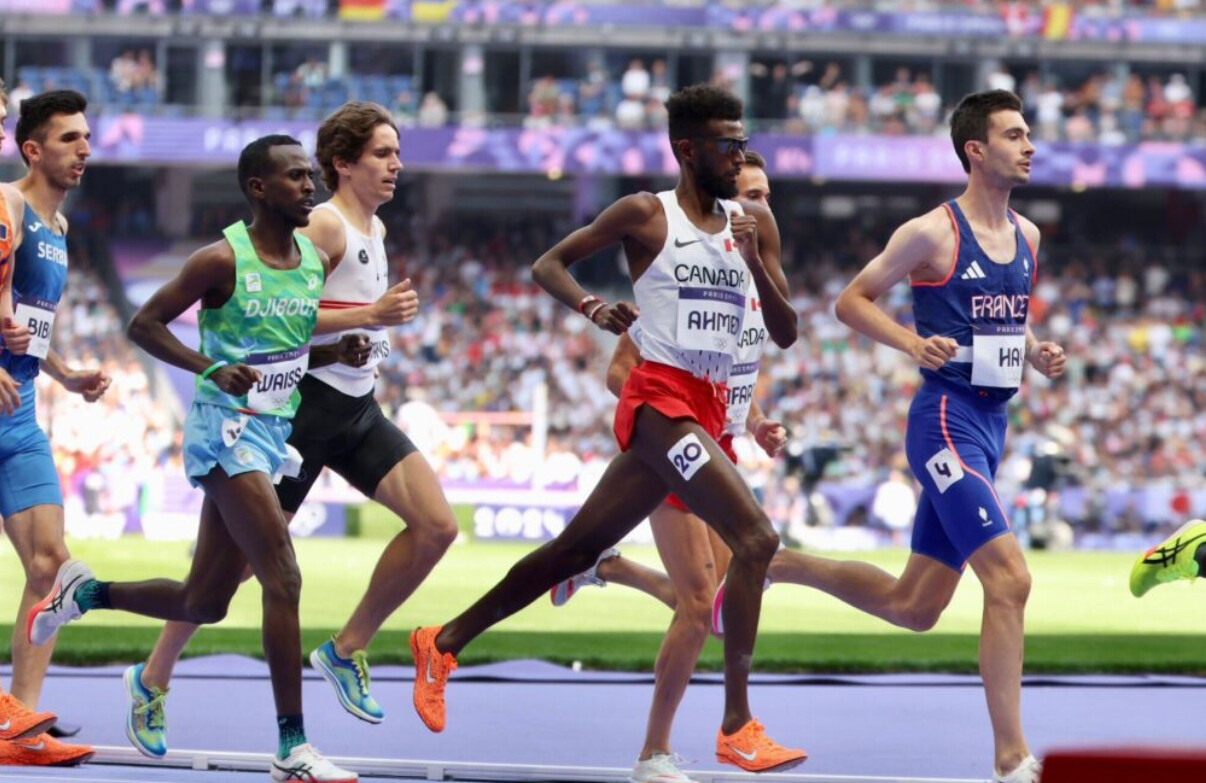
Ahmed a native of St Catharines Ontario has been a force in international athletics for over a decade He has built an impressive résumé earning
• Olympic Glory Silver in the 5000m at the Tokyo 2020 Olympics
• World Championship Medals Bronze in the 5000m at the 2019 and 2022 World Championships
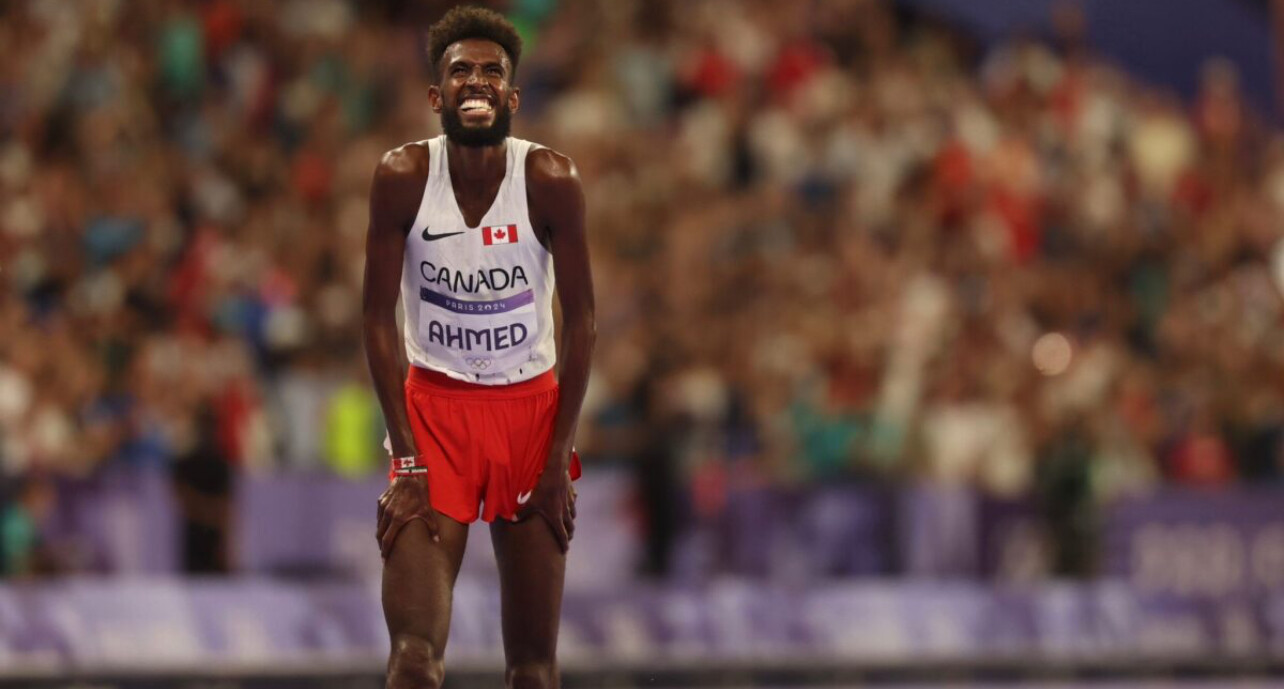
• National Records Holding Canadian records in the 5000m 124720 and 10000m 263414
As he transitions from the track to road racing Ahmed joins a long list of elite runners who have sought new challenges over longer distances His decision to step up to the half marathon has generated excitement as fans and analysts eagerly anticipate how his track speed will translate to 131 miles
The NYC Half A Premier Road Racing Test
The United Airlines NYC Half Marathon is one of the most prestigious half marathons in the world drawing elite and amateur runners alike The race begins near the Brooklyn Museum passes through Times Square one of the only times the area is closed to traffic for a race and finishes in the heart of Central Park The course presents a challenging mix of hills and fast sections making it an excellent test for Ahmeds road racing debut
Ahmed will face a strong field that includes fellow Canadian Olympian Ben Flanagan a national record holder and a formidable competitor in the event The race will be a major test of Ahmeds endurance and strategic racing skills against some of the best long distance runners in the world
Breaking Barriers in the Big Apple
To date only three runners have broken the 60 minute barrier at the NYC Half Marathon a testament to the courses difficulty If Ahmed can challenge this mark in his debut it will further solidify his potential as a future marathon star With a background of blistering track times and world class endurance his performance in New York could signal the beginning of a new era for Canadian distance running
A New Beginning
As Ahmed takes on this new challenge all eyes will be on him to see how he adapts to the demands of road racing Whether this debut is a stepping stone toward future marathon ambitions or simply an exciting new test one thing is certain Moh Ahmeds journey is far from over His transition to the half marathon is just the beginning of another thrilling chapter in his already legendary career
by Boris Baron
Login to leave a comment
United Airlines NYC Half-Marathon
The United Airlines NYC Half takes runners from around the city and the globe on a 13.1-mile tour of NYC. Led by a talent-packed roster of American and international elites, runners will stop traffic in the Big Apple this March! Runners will begin their journey on Prospect Park’s Center Drive before taking the race onto Brooklyn’s streets. For the third...
more...The Magical Feeling of Running in Central Park, NYC
New York City is a place of hustle and movement, where the streets are alive with energy, and the skyline is iconic. But tucked within the towering buildings and endless motion lies a runner’s paradise—Central Park. For those who have had the privilege of running here, the experience is nothing short of magical.
Whether you’re an early-morning jogger, a seasoned marathoner, or someone visiting the city with running shoes packed, Central Park offers an unforgettable running experience that blends nature, history, and the sheer excitement of running in the heart of the most famous city in the world.
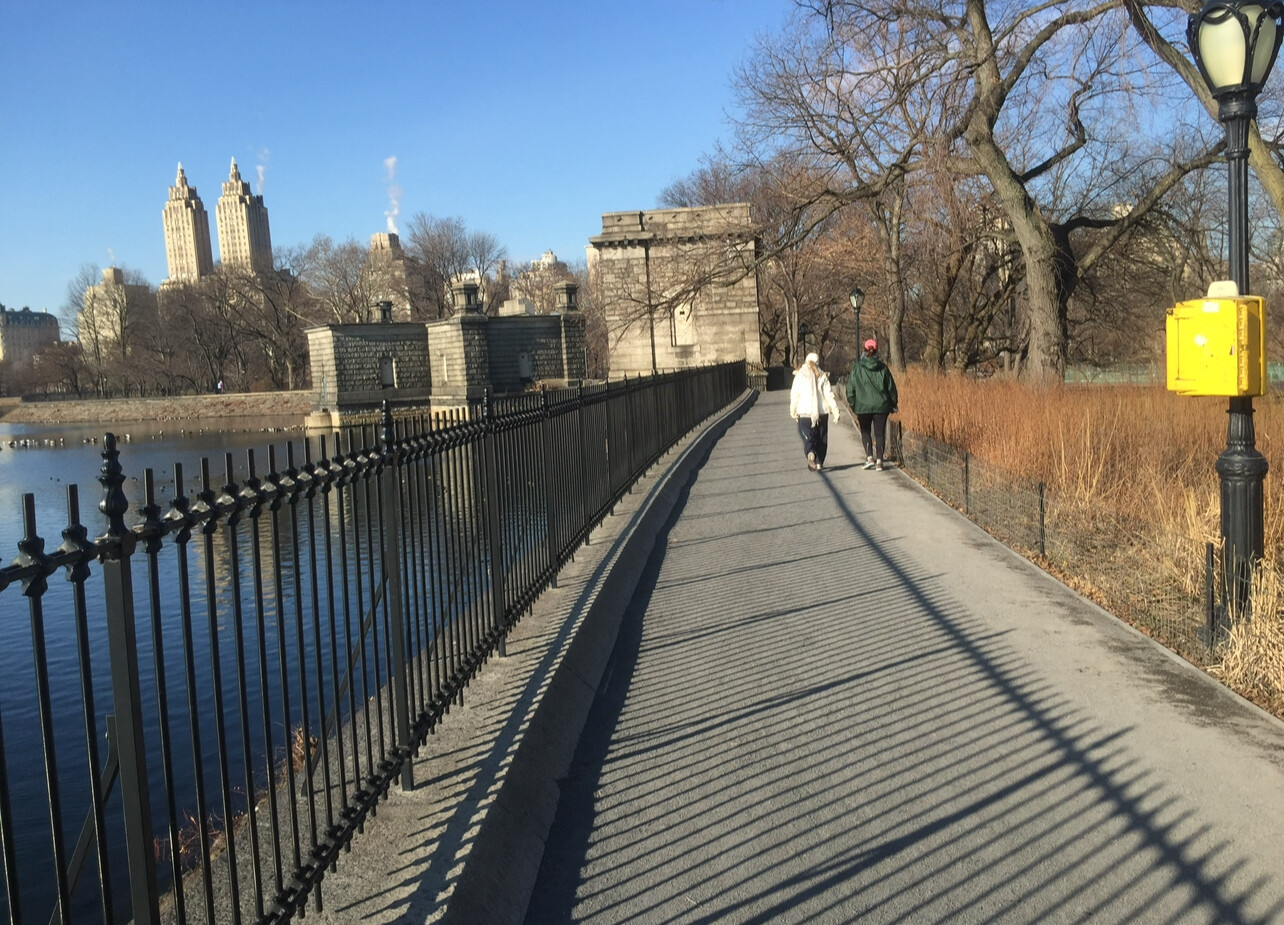
A Runner’s Sanctuary in the Heart of NYC
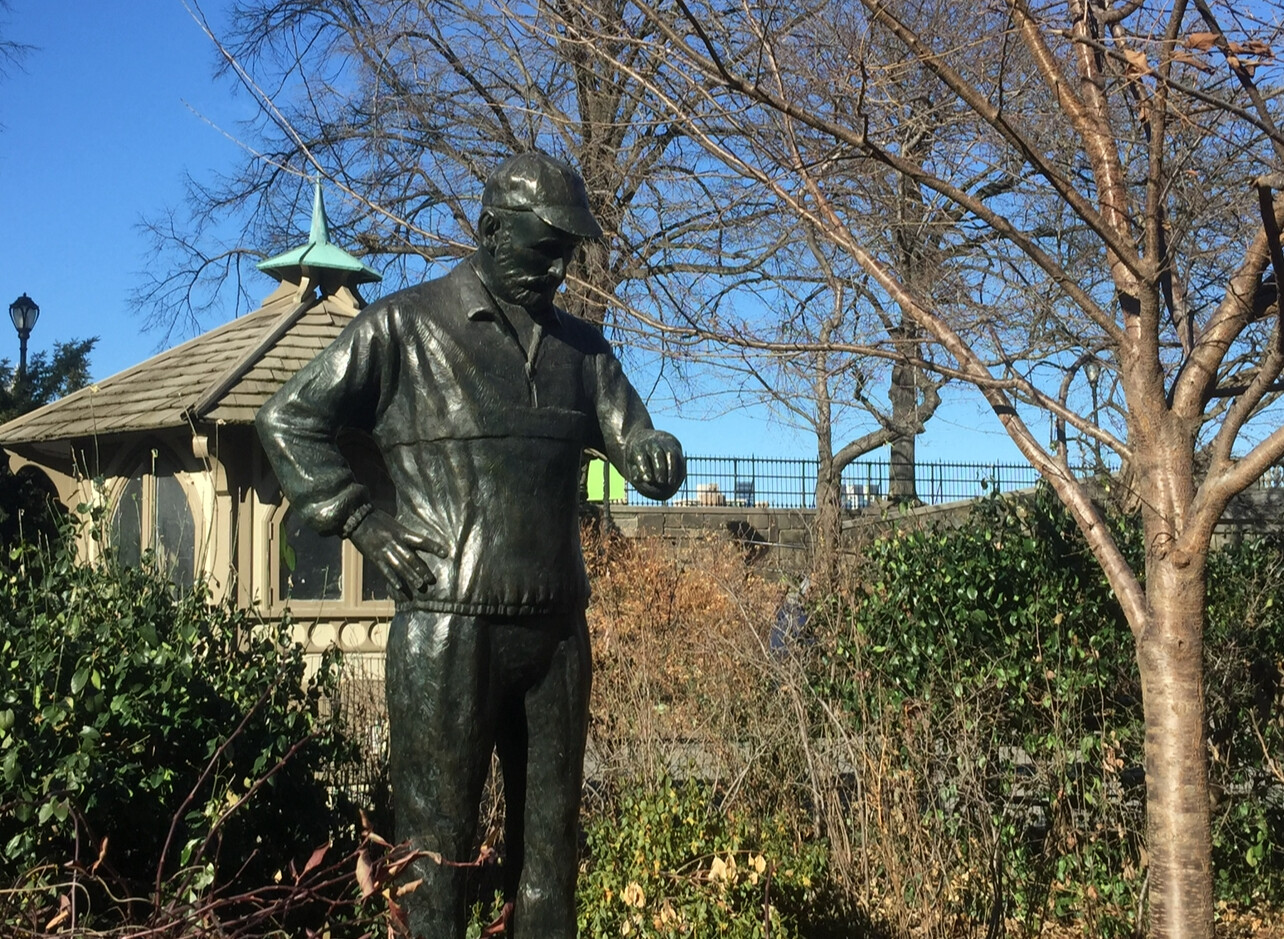
Central Park spans 843 acres in the middle of Manhattan, creating a green oasis amid the urban sprawl. With its rolling hills, shaded pathways, and scenic lake views, it’s the perfect place for runners seeking a retreat from the city’s concrete and congestion.
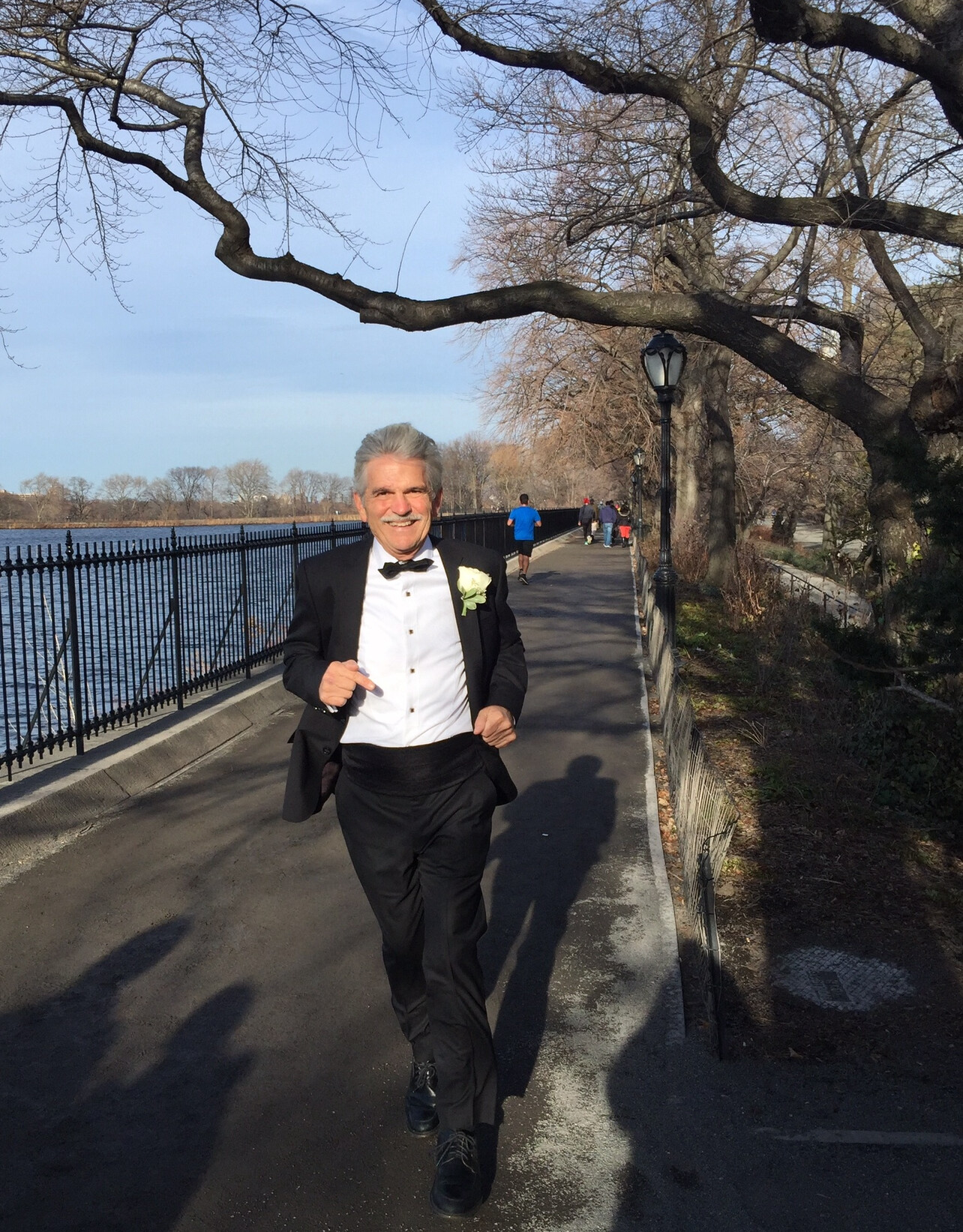
The park provides a welcoming and diverse running environment—a place where runners of all backgrounds and abilities come together. On any given day, you’ll see world-class athletes training for the New York City Marathon, casual runners enjoying a peaceful jog, and tourists soaking in the beauty of one of the most legendary parks on the planet.

Bob Anderson, the founder of Runner’s World and My Best Runs, has run many miles in Central Park, and it just seemed like the perfect location to marry his wife, Catherine. On New Year’s Eve 2016, they exchanged vows in a treehouse in the park, celebrating their love for each other and for this special place.

Why Running in Central Park Feels So Special

1. The Perfect Blend of Nature and City
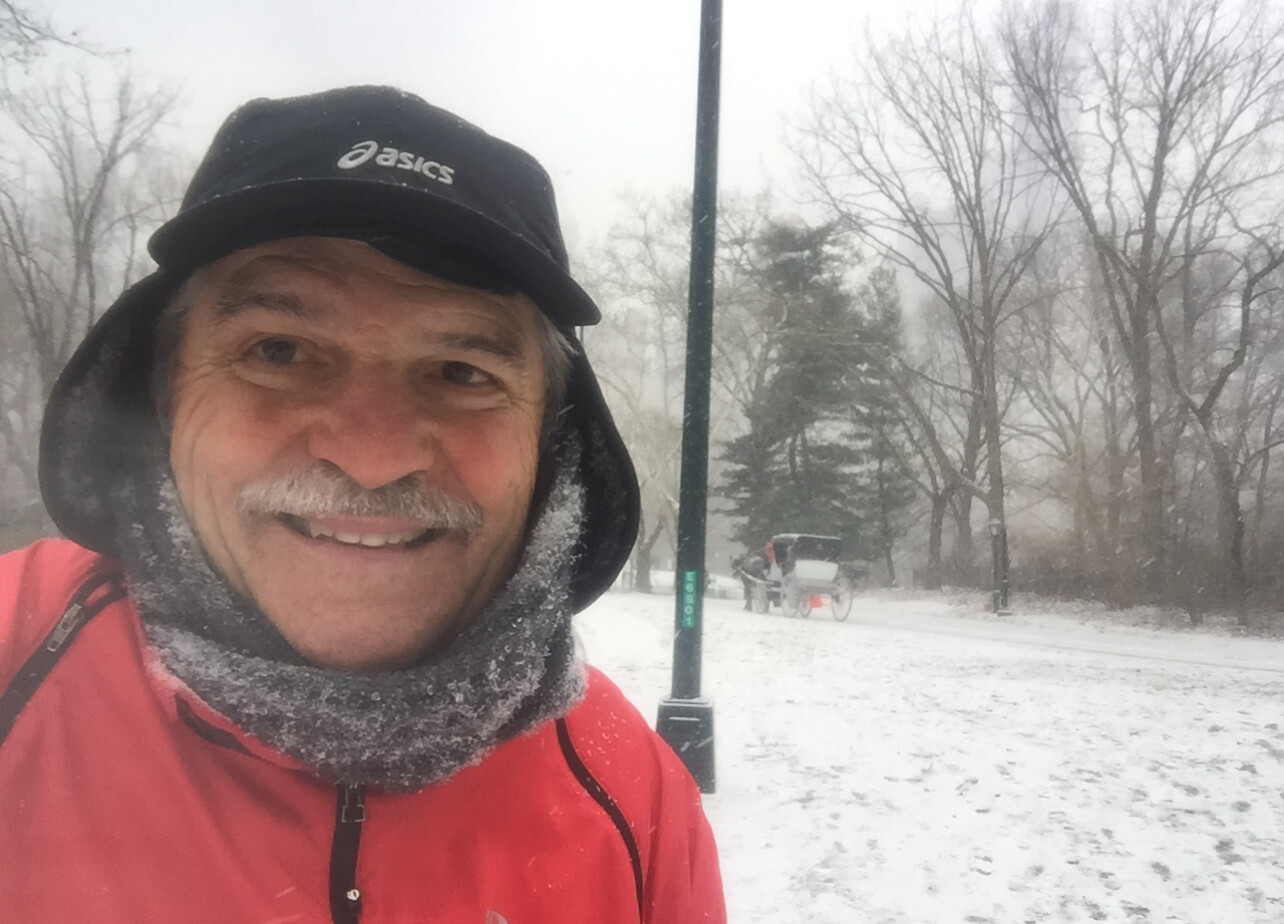
One of the most unique aspects of running in Central Park is the ability to feel completely immersed in nature while still being surrounded by the city skyline. As you glide past tree-lined paths and shimmering ponds, you’ll catch glimpses of the skyscrapers rising above, reminding you that you’re in the heart of one of the most vibrant cities in the world.
Running in Central Park at sunrise is an experience like no other—watching the first rays of light peek through the trees and reflect off the buildings, turning the entire city golden. In the fall, the park transforms into a kaleidoscope of autumn colors, while spring brings blooming cherry blossoms and fresh greenery.
2. Iconic Running Routes
Central Park offers several legendary running routes, each with its own charm:
• The Full Loop (6.1 miles / 9.8 km) – A complete circuit of the park, featuring rolling hills, open views, and famous landmarks.
• The Reservoir Loop (1.58 miles / 2.54 km) – One of the most famous running paths in the world, circling the Jacqueline Kennedy Onassis Reservoir with a stunning skyline backdrop.
• The Lower Loop (1.7 miles / 2.7 km) – A flatter, shorter route perfect for an easy jog or speed workouts.
• The Bridle Path (4.2 miles / 6.8 km total) – A softer dirt trail, ideal for runners who want to reduce impact on their joints.
One of the most well-known sights along the running route is The Lake, which was prominently featured in the classic thriller Marathon Man (1976), starring Dustin Hoffman. While the movie is not about running, Hoffman’s character, Thomas “Babe” Levy, is frequently shown running in Central Park, using it as an outlet for stress and survival. For runners who love cinema, retracing Hoffman’s steps adds an extra layer of history to an already iconic location.
3. The Statue Honoring a Running Legend: Fred Lebow
As you run through Central Park, you’ll pass the Fred Lebow statue, a tribute to the founder of the New York City Marathon. Lebow was instrumental in turning the NYC Marathon into one of the world’s most famous races. The statue, located near the marathon’s finish line, serves as an inspiring reminder of his contributions to the sport.
Many runners stop to touch the statue or take a moment of reflection before completing their final strides—whether it’s during a training run or on race day.
4. A Shared Energy Like No Other
The atmosphere in Central Park is unlike anywhere else. It’s a place where runners from all over the world come to test their limits, find their rhythm, and be part of something bigger.
The community of runners in Central Park is welcoming and diverse. You’ll pass runners speaking different languages, elite marathoners training for their next big race, and even a few familiar faces from the professional running world. On race weekends, the energy is electric, as groups gather to cheer, pace, and celebrate the sport of running.
There’s an unspoken bond among Central Park runners—a shared understanding that this is a place where you come to feel alive.
Running Through History: The Legacy of Central Park
Beyond its beauty and convenience, Central Park has an incredible running history. It has been the training ground for some of the greatest runners in history, from legendary marathoners to track stars preparing for the Olympics.
The park plays a pivotal role in the TCS New York City Marathon, with the final miles winding through its paths before runners cross the finish line near Tavern on the Green. The sense of accomplishment felt when finishing a race in Central Park is something runners cherish forever.
Even if you’re not racing, running here allows you to be a part of that history—to step where champions have run, to push yourself the way so many others have before.
The Best Times to Run in Central Park
• Early Morning (5:30 AM - 8:00 AM): The most peaceful time to run, with fewer crowds and a stunning sunrise over the city.
• Late Afternoon (4:00 PM - 7:00 PM): The golden hour of running, when the sun sets behind the skyline, creating a surreal backdrop.
• Night Runs: Running Central Park at night offers a different kind of magic, with the city lights creating a glowing contrast against the trees.
No matter when you run, Central Park feels alive, providing motivation with every step.
Tips for First-Time Runners in Central Park
• Stick to the right. The running and biking lanes are clearly marked—stay on the right to avoid collisions.
• Hydration stations are available. Water fountains are scattered throughout the park, but in hot months, bring your own bottle.
• Be prepared for hills. While some sections are flat, parts of the park (like Harlem Hill) will test your strength.
• Enjoy the experience. Whether you’re running for speed, endurance, or simply for fun, Central Park is a place to embrace the joy of running.
Why Every Runner Should Experience Central Park
Running in Central Park is more than just a workout—it’s a moment of connection. Connection to nature, to the rhythm of the city, and to the countless runners who have made this park their sanctuary.
It’s a place where you can lose yourself in the run while feeling completely present. Where the city’s chaos fades away, replaced by the steady sound of your footsteps on the pavement.
If you ever find yourself in New York City, put on your running shoes and head to Central Park. Whether you go for a quick jog or a long run, you’ll leave feeling inspired, refreshed, and part of something greater than yourself.
Because running in Central Park isn’t just about exercise—it’s about experiencing one of the most iconic and magical places in the world, one step at a time.
Have you ever run in Central Park? Share your experience in the comments!
by Boris Baron
Login to leave a comment
Grete Waitz The Runner Who Changed Marathoning Forever
On a crisp October morning in 1978, an unassuming schoolteacher from Norway stepped up to the starting line of the New York City Marathon. Grete Waitz, a world-class middle-distance runner, had never raced beyond 3,000 meters. That day, she would not only cover 26.2 miles for the first time but also redefine women’s marathoning in a way no one could have predicted.
An Accidental Marathoner
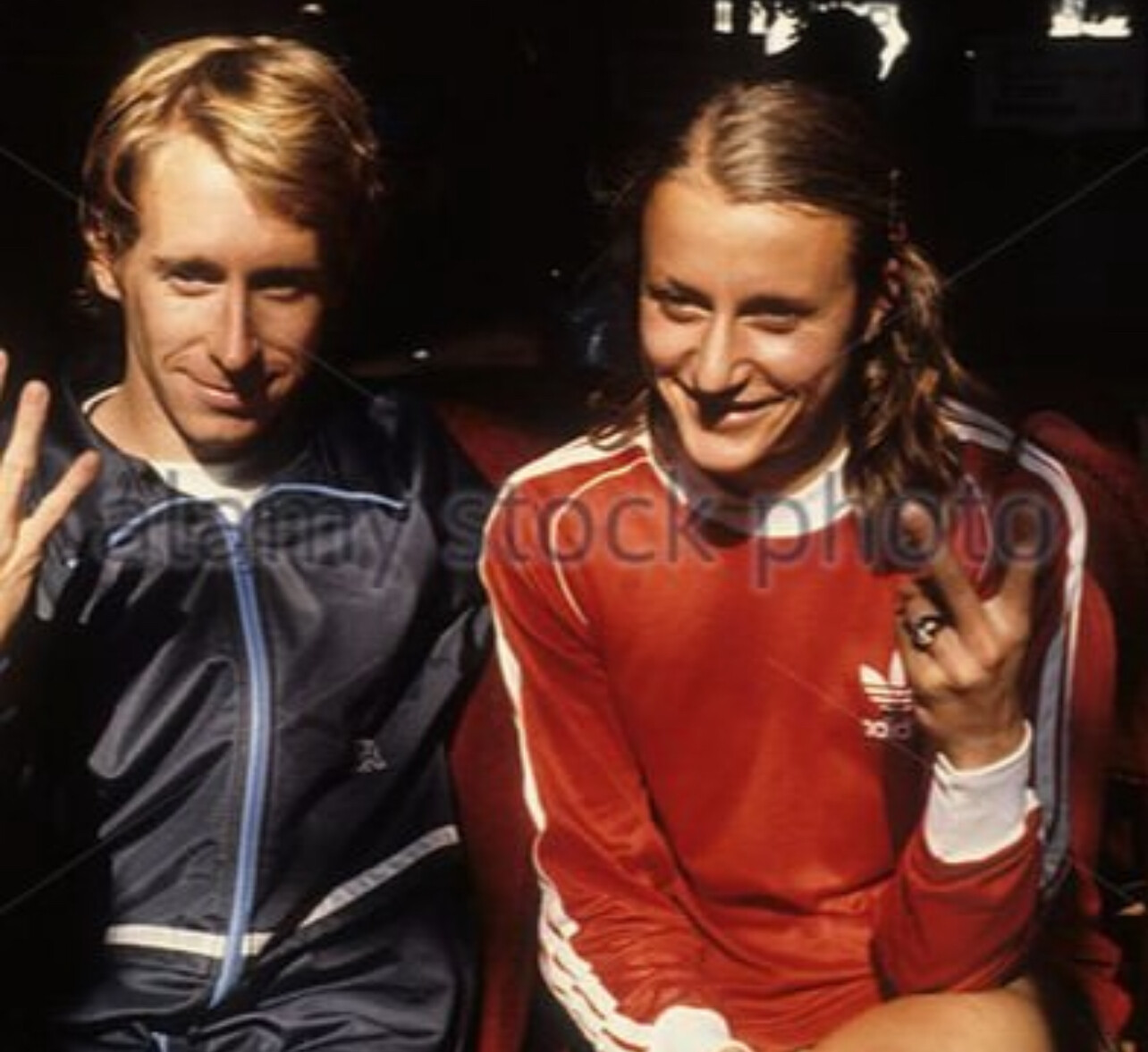
At the time, Waitz was a highly accomplished track athlete, having competed in the 1972 and 1976 Olympics in the 1,500 meters. Her husband and coach, Jack Waitz, believed she had the endurance for the marathon and convinced her to give it a try. The New York City Marathon, then in its third year of running through all five boroughs, was growing in popularity, with nearly 10,000 entrants that year—including 1,240 women, a significant number in an era when women’s distance running was still fighting for recognition.
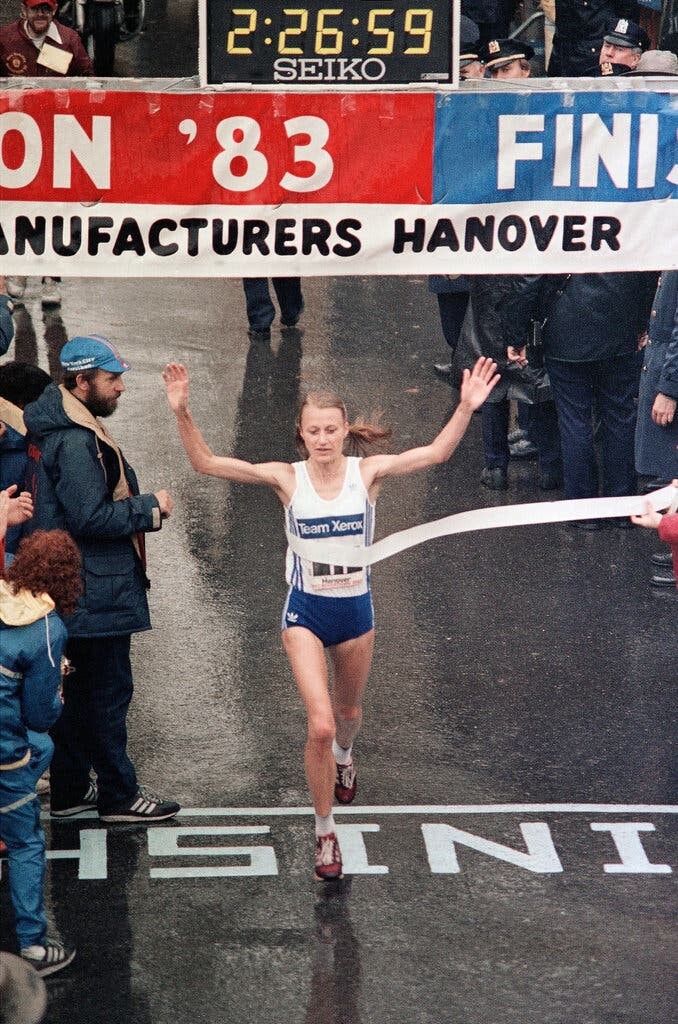
Waitz arrived in New York with no expectations, mostly treating the experience as an experiment. She was given bib “F1,” but that number did not signify any previous success in the marathon—it was merely assigned based on her status as a female elite athlete.
A Race for the Ages
Unlike today’s marathons, where elite runners typically start separately, in 1978, all competitors—professional, amateur, and first-timers alike—began together. The masses surged forward, and Waitz, running with a mix of excitement and nerves, settled into a steady pace.
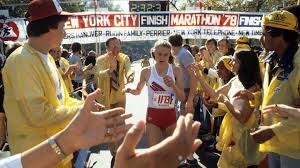
She was strong early on, but by mile 18, she was frustrated. She had no idea what she was doing, she later recalled, and even threw a cup of water at her husband in irritation when he shouted encouragement. Yet, despite her doubts, she was running at a record-setting pace.

As she entered Central Park, fatigue set in, but she powered through, breaking the tape in 2 hours, 32 minutes, and 30 seconds—a world record at the time. When race director Fred Lebow greeted her at the finish line, she collapsed into his arms, exhausted and overwhelmed.
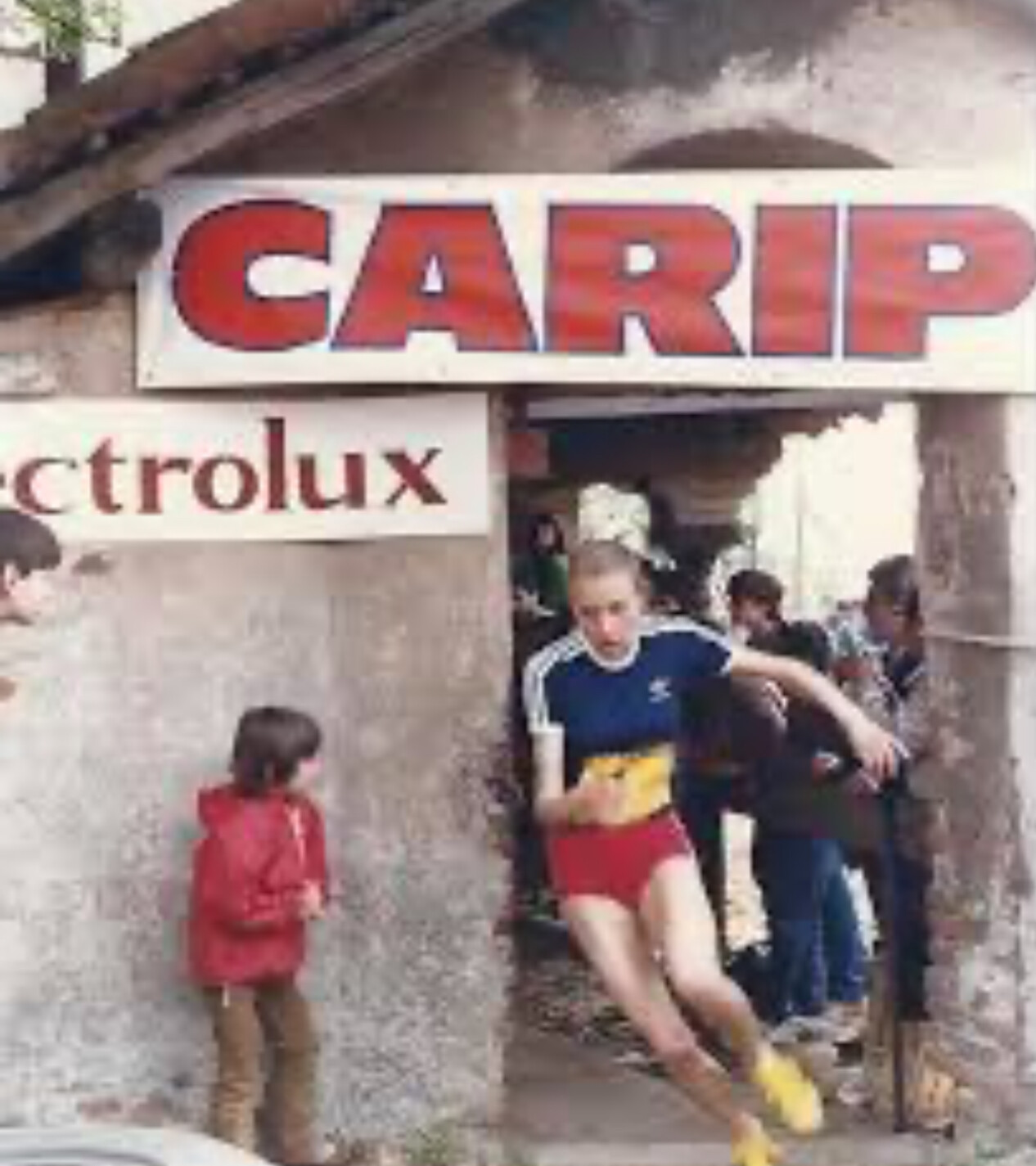
“I’ll never do another one of these,” she famously said. That promise, of course, didn’t last.
A Legacy of Dominance
That win in 1978 was just the beginning. Waitz would return to New York eight more times, winning a record nine titles between 1978 and 1988. She became the face of women’s marathoning, inspiring countless runners and proving that women not only belonged in the sport but could dominate it.
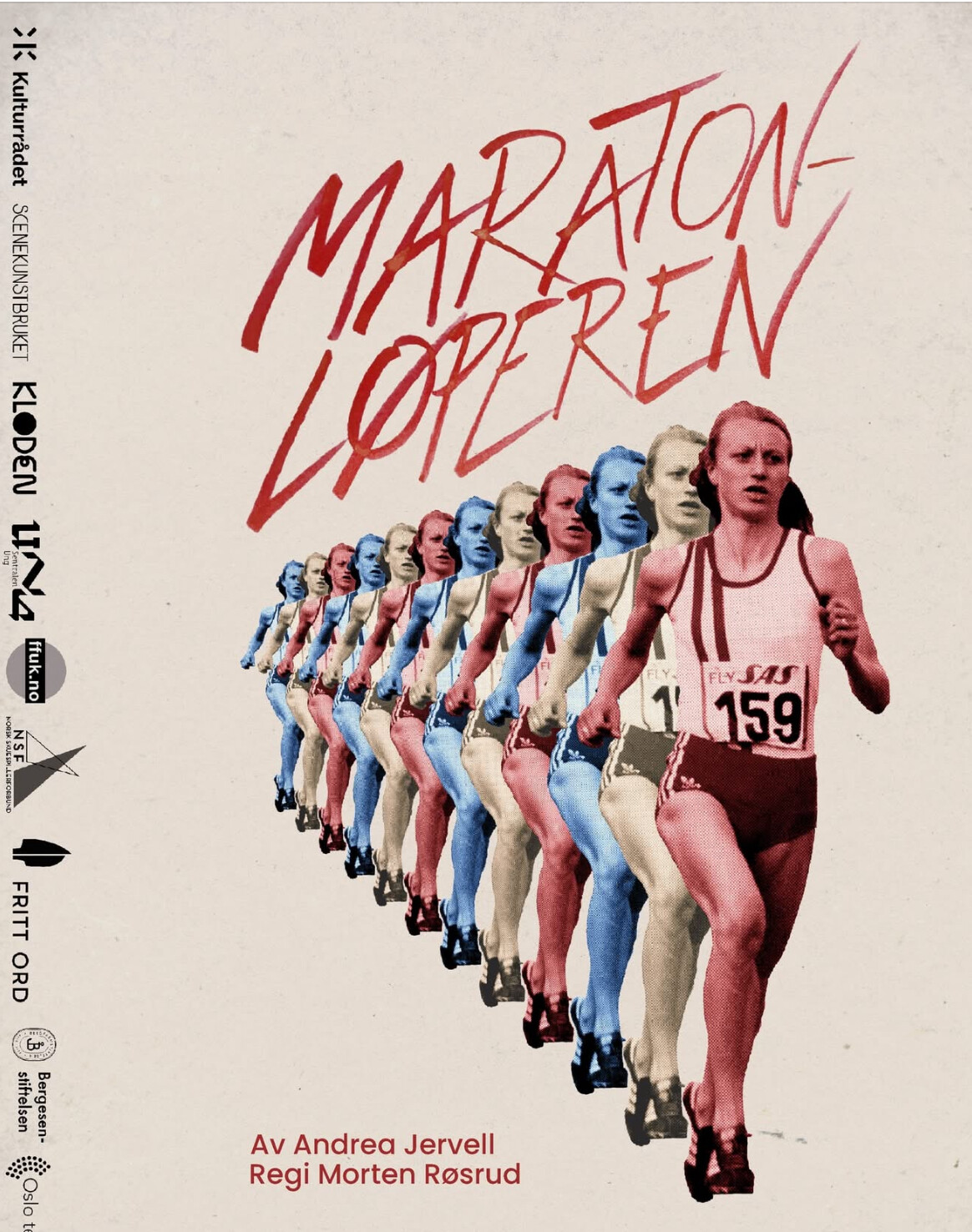
Her influence stretched beyond New York. In 1983, she won the first-ever Women’s World Championship Marathon, and a year later, she took silver in the first Women’s Olympic Marathon at the 1984 Los Angeles Games, finishing behind Joan Benoit Samuelson.
More Than a Champion
While her records and wins made her a legend, Waitz’s true impact came from the doors she opened for female distance runners. Before her era, women’s marathoning was an afterthought. The Boston Marathon had only officially allowed women to compete in 1972, and many still believed that running long distances was dangerous for women. Waitz shattered those myths.
She continued to race into her 40s and later devoted much of her time to coaching and philanthropy. In 2005, she was diagnosed with cancer, but she faced it with the same resilience she showed on the race course.
Jack Waitz: Continuing the Legacy
Grete’s husband and coach, Jack Waitz, played an instrumental role in her career, guiding her training and race strategies. Following Grete’s passing in 2011, Jack has remained deeply involved in the running community. He continues to share his expertise, offering training advice and motivational tips to runners of all levels.
Jack’s ongoing commitment ensures that Grete’s legacy endures, inspiring new generations of runners to pursue their passion for the sport.
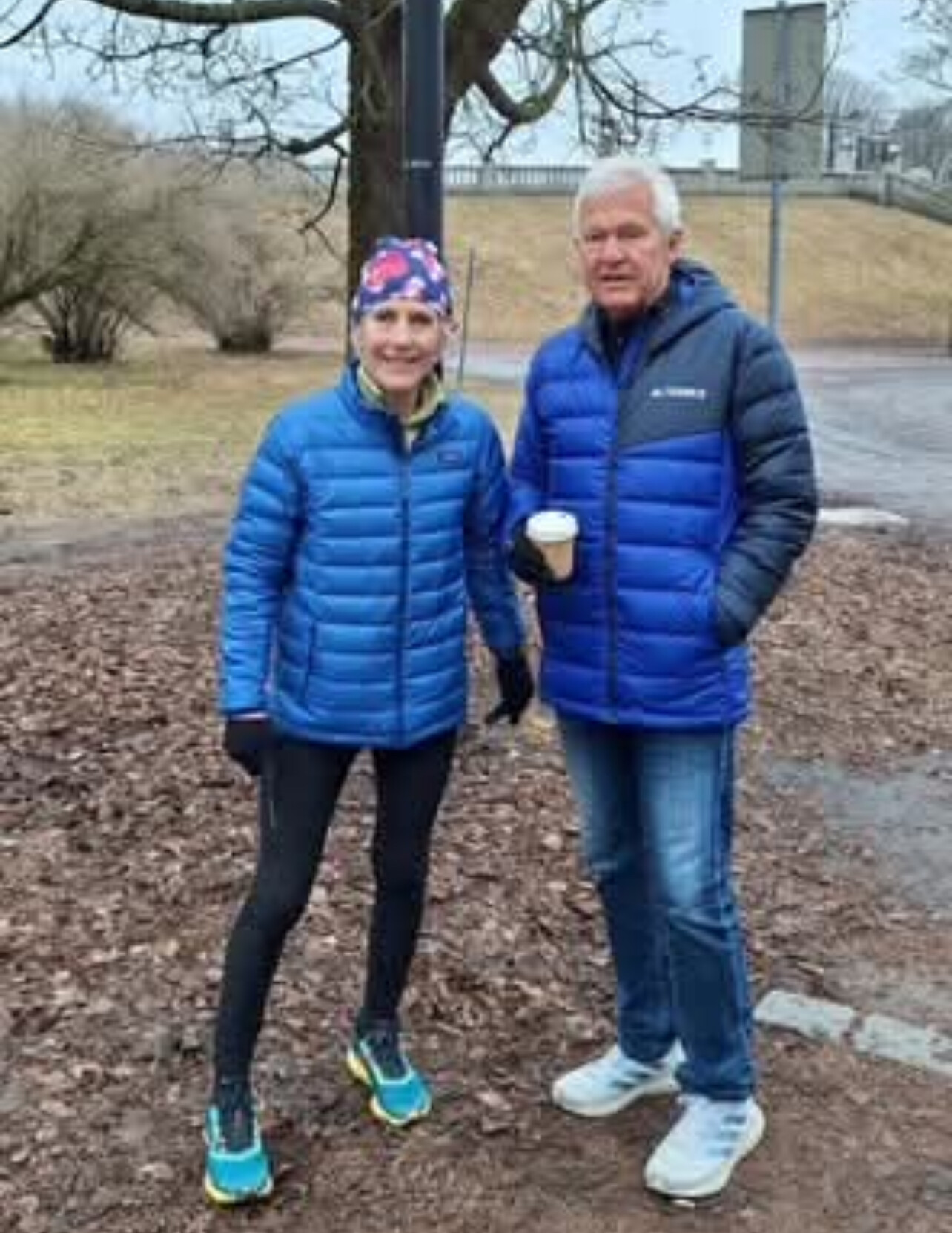
A Lasting Inspiration
Grete Waitz passed away in 2011 at the age of 57, but her influence is still deeply felt. She was not just a marathoner; she was a trailblazer who proved that women could race—and win—on the biggest stages.
Today, the New York City Marathon regularly features over 50,000 runners, nearly half of them women, a testament to how far the sport has come since 1978. The shoes are faster, the crowds are bigger, and the elites now start separately, but the legacy of Grete Waitz remains woven into the fabric of the event she helped define.
Her first marathon may have been accidental, but her impact on the sport was anything but.
by Boris Baron
Login to leave a comment
Thrilling Showdown Awaits at the 2025 United Airlines NYC Half Marathon
The 2025 United Airlines NYC Half Marathon is set to captivate runners and spectators alike on Sunday, March 16, 5, starting at 7:30 a.m. This year's race introduces a historic course alteration, featuring the Brooklyn Bridge for the first time, replacing the Manhattan Bridge due to ongoing construction on South Street.
Participants will embark on a 13.1-mile journey beginning on Washington Avenue near the Brooklyn Botanic Garden. The route traverses through Prospect Park, crosses the East River via the Brooklyn Bridge, and continues along the FDR Drive. Runners will experience the vibrant streets of the Lower East Side, the bustling energy of Midtown Manhattan, and the rare opportunity to race through a traffic-free Times Square, culminating in a finish at Central Park.
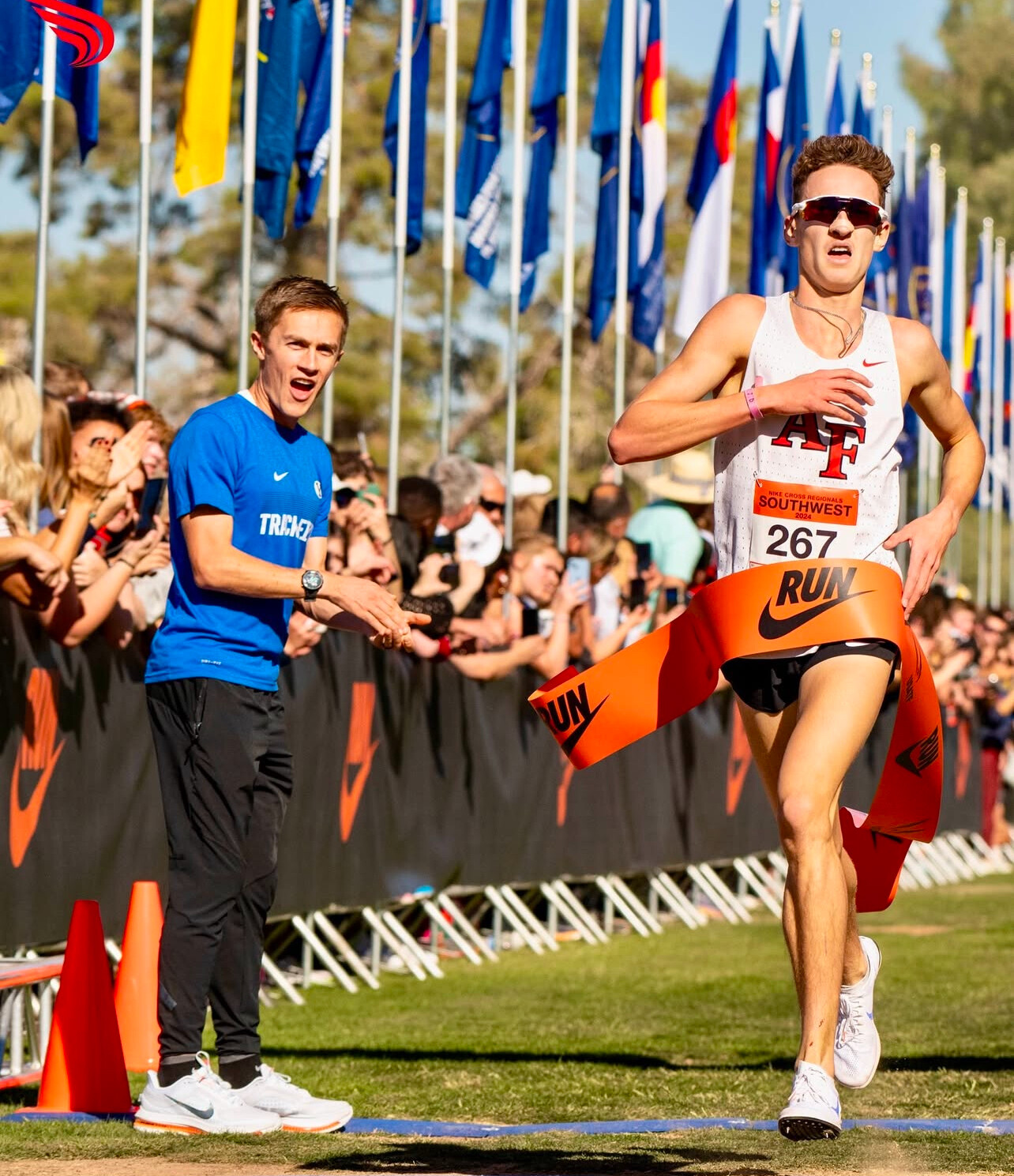
Elite Field Highlights:
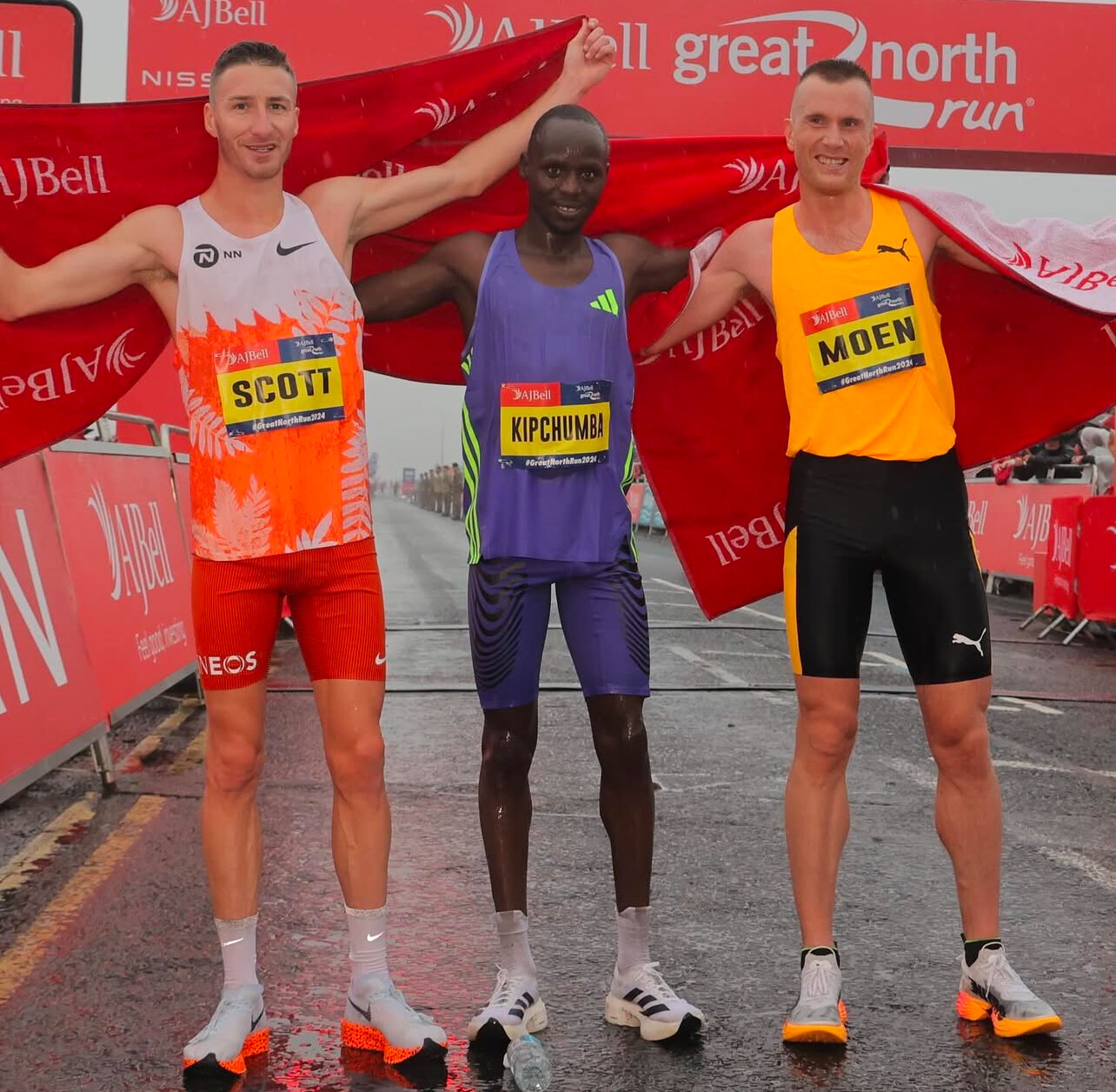
The 2025 race boasts a stellar lineup of professional athletes:
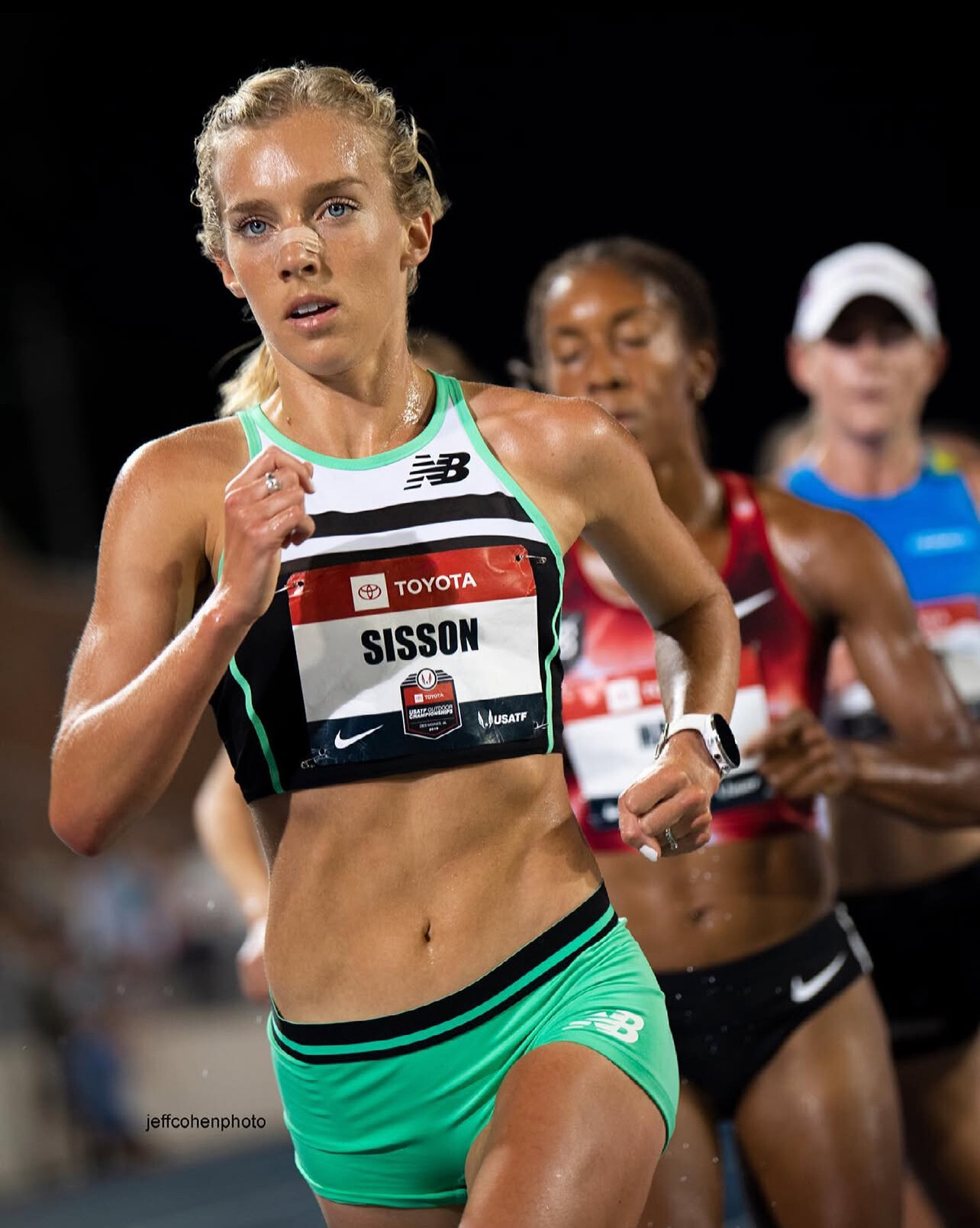
Men's Division:

Conner Mantz (USA): Olympian and American half marathon record holder, having set a new record of 59:17 at the 2025 Houston Half Marathon.
Abel Kipchumba (Kenya): Defending champion with a personal best of 58:07, aiming to retain his title.
Richard Etir (Kenya): Making his New York debut with a personal best of 59:32.
Women's Division:
Karoline Bjerkeli Grøvdal (Norway): Defending champion, returning after her 2024 victory in 1:09:09.
Emily Sisson (USA): American marathon record holder, returning to the NYC Half after a strong debut in 2017.
Fiona O'Keeffe (USA): Winner of the 2024 U.S. Olympic Marathon Trials with a time of 2:22:10, representing the U.S. in the Paris Olympics.
Dakotah Lindwurm (USA): Secured her spot on the 2024 U.S. Olympic team by finishing third in the trials with a time of 2:25:31 and led American women at the Paris Olympics with a 12th-place finish in 2:26:44.
In the previous year's event, Abel Kipchumba clinched the men's title with a time of 1:00:25, while Karoline Bjerkeli Grøvdal secured the women's title in 1:09:09.
With an expected participation of approximately 25,000 runners from around the globe, the 2025 United Airlines NYC Half Marathon promises to be a memorable event, blending elite competition with the vibrant spirit of New York City.
by Boris Baron
Login to leave a comment
United Airlines NYC Half-Marathon
The United Airlines NYC Half takes runners from around the city and the globe on a 13.1-mile tour of NYC. Led by a talent-packed roster of American and international elites, runners will stop traffic in the Big Apple this March! Runners will begin their journey on Prospect Park’s Center Drive before taking the race onto Brooklyn’s streets. For the third...
more...Historic Course Change for 2025 United Airlines NYC Half: Runners to Cross Brooklyn Bridge for the First Time
The 2025 United Airlines NYC Half Marathon is set to captivate runners with a historic course alteration and a lineup of elite athletes. Scheduled for Sunday, March 16, 2025, this year's race introduces a significant change: participants will traverse the iconic Brooklyn Bridge for the first time in the event's history.
Course Modification: Crossing the Brooklyn Bridge
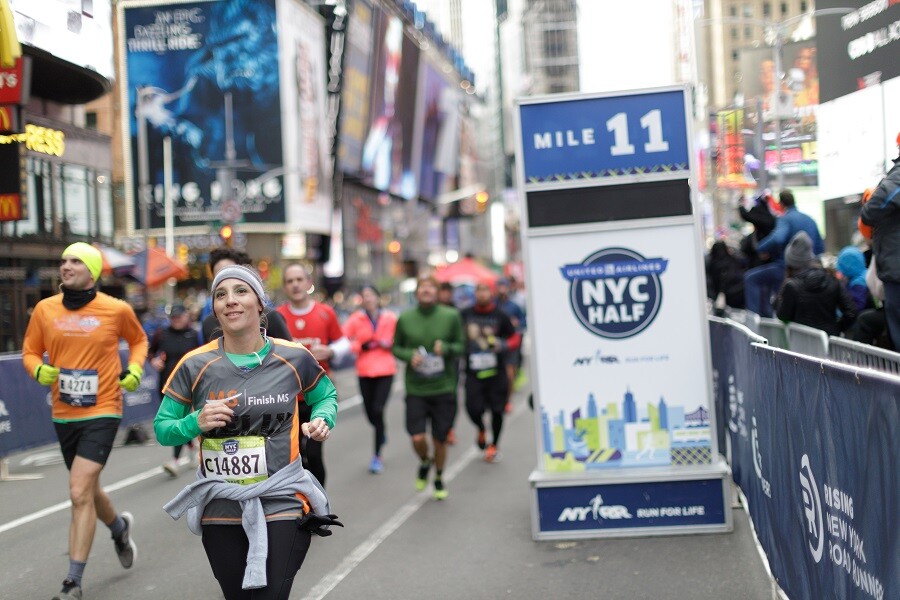
Due to ongoing construction on South Street in Manhattan, the New York Road Runners (NYRR) have rerouted the course to cross the Brooklyn Bridge instead of the Manhattan Bridge, which had been part of the race since 2018. This adjustment not only offers runners a fresh perspective of the city but also marks the inaugural inclusion of the Brooklyn Bridge in an NYRR race.
The revised course begins on Washington Avenue near the Brooklyn Botanic Garden, leading runners through Prospect Park. Upon reaching the junction of Flatbush Avenue and Tillary Street, participants will turn left onto Tillary Street, then right onto Brooklyn Bridge Boulevard to cross the Brooklyn Bridge.
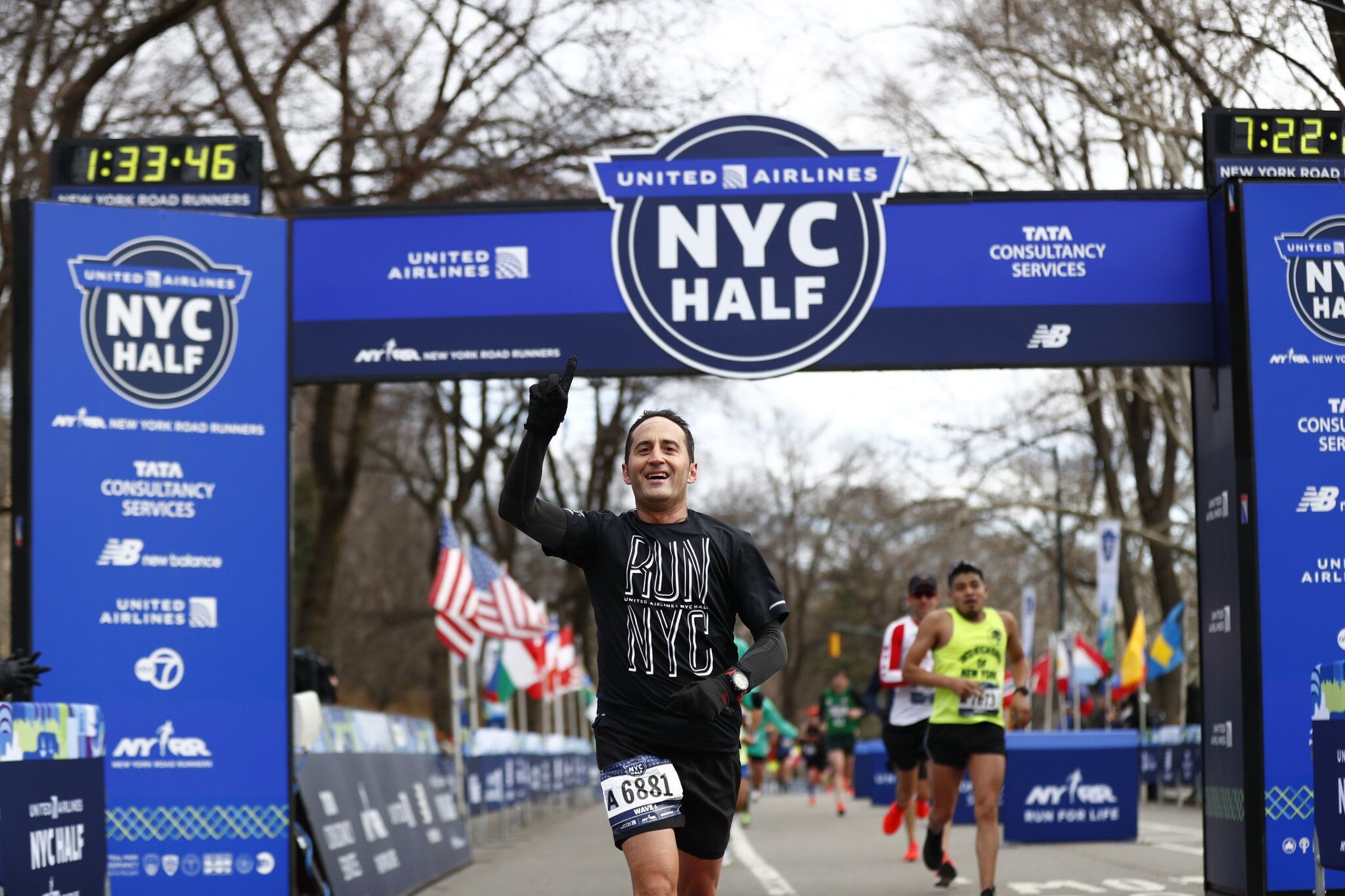
After descending the bridge’s exit ramp, runners will join the FDR Drive in Manhattan, continue through the Lower East Side, proceed into Midtown, experience the rare opportunity to run through Times Square, and ultimately finish in Central Park.
The 2025 United Airlines NYC Half Marathon promises to be a landmark event, blending a historic course update with the anticipation of elite athletic performances, all set against the vibrant backdrop of New York City.
by Boris Baron
Login to leave a comment
2024 USATF 5K: Ahmed Muhumed And Annie Rodenfels Win
Annie Rodenfels went back-to-back while Ahmed Muhumed claimed his second US title of the year at the 2024 USATF 5K Road Championships on Saturday morning in Central Park. Rodenfels, who runs for the B.A.A. High Performance Team, broke away from Emily Venters and Emma Grace Hurley in the final mile to win in 15:20.
Muhumed, who won the US 8k road title in July and was the runner-up here last year, dropped the field with a hard move at 2 miles and held off a late charge from Sam Prakel to win in 13:38 to Prakel’s 13:39.
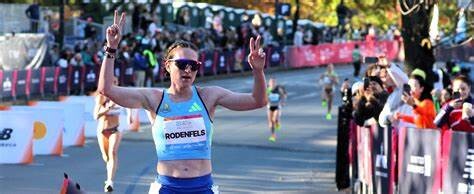
Top 10 results
Men

1. Ahmed Muhumed, HOKA NAZ Elite 13:38
2. Sam Prakel, adidas 13:39
3. Brian Barraza, Roots Running Project 13:42
4. Kirubel Erassa, unattached 13:44
5. Hillary Bor, HOKA One One 13:45
6. Anthony Rotich, US Army 13:48
7. Drew Bosley, unattached 13:49
8. Afewerki Zeru, McKirdy Trained 13:52
9. Abbabiya Simbassa, Under Armour 13:57
10. Morgan Beadlescomb, adidas 13:59
Women
1. Annie Rodenfels, B.A.A. 15:20
2. Emily Venters, Nike 15:25
3. Emma Grace Hurley, Asics 15:31
4. Bailey Hertenstein, Nike 15:32
5. Susanna Sullivan, Brooks 15:36
6. Abby Nichols, HOKA NAZ Elite 15:41
7. Paige Wood, HOKA NAZ Elite 15:41
8. Taylor Roe, Puma 15:43
9. Natosha Rogers, Puma 15:45
10. Molly Born, Puma 15:47
by Jonathan Gault
Login to leave a comment
Dash to the Finish Line
Be a part of the world-famous TCS New York City Marathon excitement, run through the streets of Manhattan, and finish at the famed Marathon finish line in Central Park—without running 26.2 miles! On TCS New York City Marathon Saturday, our NYRR Dash to the Finish Line 5K (3.1 miles) will take place for all runners who want to join in...
more...Netherlands runner wins the 2024 New York City marathon
It was a crisp, sunny morning on November 3, 2024, as runners gathered at the start line of the New York City Marathon, their breath visible in the chill air, yet their spirits high. The annual race had drawn over 50,000 participants from across the globe, each ready to challenge themselves across 26.2 miles through the city’s five boroughs. This year’s race was especially notable, with a lineup of world-class athletes and hopeful first-timers mingling together, all united by their love for running and their dedication to crossing that finish line in Central Park.
Among the crowd was Abdi Nageeye of the Netherlands, a seasoned marathoner who had been a runner-up in major events but was still chasing his first New York City Marathon victory. On the women’s side, Kenya’s Sheila Chepkirui stood out as a formidable contender, even though it was her New York debut. Both had trained for months, pushing their limits in preparation for this iconic race. In the wheelchair division, American favorites Daniel Romanchuk and Susannah Scaroni were also in attendance, their sights set on reclaiming titles and setting records.

As the race began, the runners surged forward from the Staten Island start, quickly falling into a rhythm as they tackled the Verrazzano-Narrows Bridge. The marathon’s energy was palpable, with spectators lining the streets, cheering, waving flags, and holding up colorful signs of encouragement. Each borough had its own personality, adding to the unique feel of the race: Brooklyn’s lively bands, Queens’ family-friendly crowds, the Bronx’s upbeat energy, and finally, Manhattan’s skyscrapers looming above as runners approached the finish.
By mile 20, the pack had thinned, and the leaders emerged. Nageeye ran with focus and determination, his stride smooth and steady. He knew the competition was fierce, and every step had to count. Despite fatigue setting in, he drew strength from the cheering crowd and his own desire to win. When he finally approached Central Park, his energy surged with the knowledge that he was within reach of the finish line. He crossed in a remarkable time of 2 hours, 7 minutes, and 39 seconds, marking a career milestone and celebrating his first New York City Marathon victory. Cheers erupted, and he was embraced by his team as they celebrated his achievement.
Meanwhile, Sheila Chepkirui was making her own statement in the women’s division. Running with grace and speed, she navigated the final miles with a steady pace, her eyes fixed on the finish line. Despite being new to the course, she ran like a seasoned pro, crossing the line at 2 hours, 24 minutes, and 35 seconds. Her performance cemented her place as one of the top female marathoners in the world, and she was greeted with overwhelming applause from the crowd.
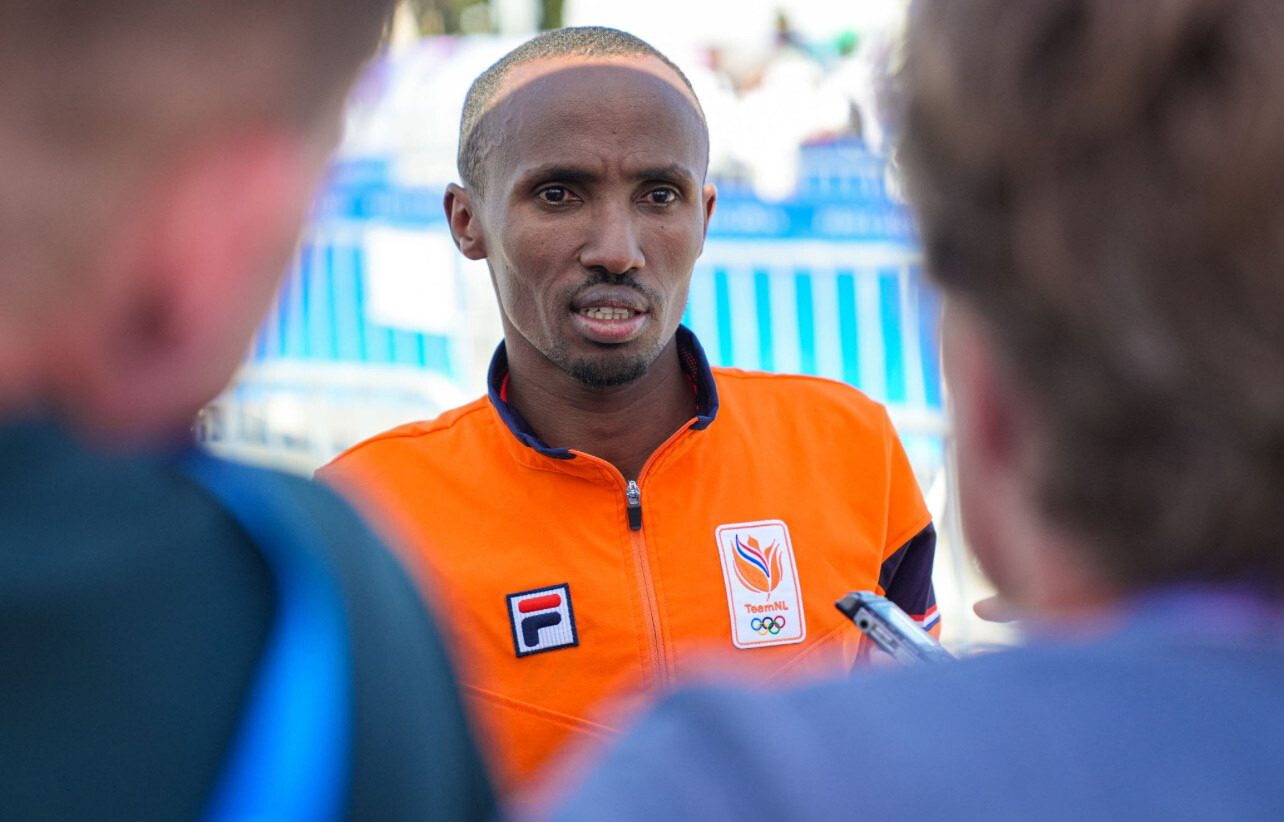
In the wheelchair division, Daniel Romanchuk and Susannah Scaroni did not disappoint. Romanchuk, finishing in 1 hour, 36 minutes, and 31 seconds, celebrated his third title, while Scaroni’s powerful finish at 1 hour, 48 minutes, and 5 seconds secured her second New York victory. Both athletes were a testament to perseverance and resilience, inspiring runners and spectators alike.
This year’s New York City Marathon was more than just a race; it was a celebration of human spirit, resilience, and unity. From elite athletes to recreational runners, each participant crossed the finish line carrying their own story of triumph and determination, etching another unforgettable chapter into the marathon’s history.
Men’s Elite Division:
1. Abdi Nageeye (Netherlands) – 2:07:39
2. Evans Chebet (Kenya) – 2:07:45
3. Albert Korir (Kenya) – 2:08:01
4. Tamirat Tola (Ethiopia) – 2:08:15
5. Bashir Abdi (Belgium) – 2:08:30
Women’s Elite Division:
1. Sheila Chepkirui (Kenya) – 2:24:35
2. Hellen Obiri (Kenya) – 2:24:50
3. Vivian Cheruiyot (Kenya) – 2:25:10
4. Sharon Lokedi (Kenya) – 2:25:25
5. Edna Kiplagat (Kenya) – 2:25:40
Login to leave a comment
TCS New York City Marathon
The first New York City Marathon, organized in 1970 by Fred Lebow and Vince Chiappetta, was held entirely in Central Park. Of 127 entrants, only 55 men finished; the sole female entrant dropped out due to illness. Winners were given inexpensive wristwatches and recycled baseball and bowling trophies. The entry fee was $1 and the total event budget...
more...Jenny Simpson is Retiring after the New York City Marathon and Starting a New Adventure
After concluding a stellar, 20-year career, the Olympic bronze medalist will embark on a 50-state running-infused van-life tour of the U.S. with her husband, Jason, in 2025
Jenny Simpson will go down in the annals of American running as one of the greatest of all time. No question about it.
So as she approaches what is likely the last elite-level race of her long and storied career at the November 3 New York City Marathon, she has nothing to prove, no one to impress, and no specific performance goal that she needs to attain to secure her legacy.
As a four-time global championship medalist in the 1500 meters—including a victory in the 2011 World Championships in Daegu, South Korea, Diamond League title in 2014, and bronze medal at the 2016 Rio Olympics—Simpson has long been destined to go down as one of the best runners in U.S. history.
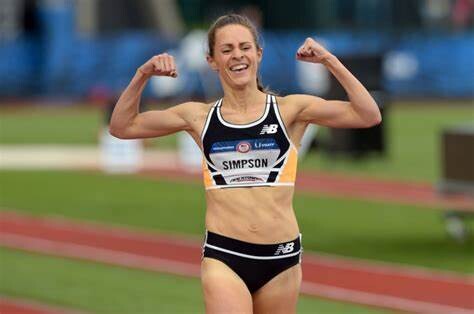
Add to that three Olympic appearances, 11 U.S. titles, three NCAA championships, eight top-10 finishes in international championships, eight Fifth Avenue Mile victories, six NCAA records (in six different events), and two American records (in the 3,000-meter steeplechase), and Simpson will rank among American legends for decades to come.
The fact that she’s been earnestly training to finish her career with a strong marathon performance in New York City epitomizes much of what the 38-year-old runner from Boulder, Colorado, has been about during her 20-year career. She’s not necessarily going out on top—that, she says, would have entailed making the U.S. Olympic team in the marathon for the Paris Olympic Games. But she is going out on her terms: focused, tenacious, and relentless to the end. It’s an opportunity afforded to few athletes, and even fewer distance runners.
“When I say I’m feeling good, it’s that I’m really excited for New York and I feel like I have a really, really good sense about my ability to run well,” she says. “I’m not going into it saying I’m gonna set the world on fire and be the top American or run 2:25 on that course. But I just know as good as I feel and as good as the training has gone, I know I’m capable of having a good day, and, most importantly, I have peace about it all.”
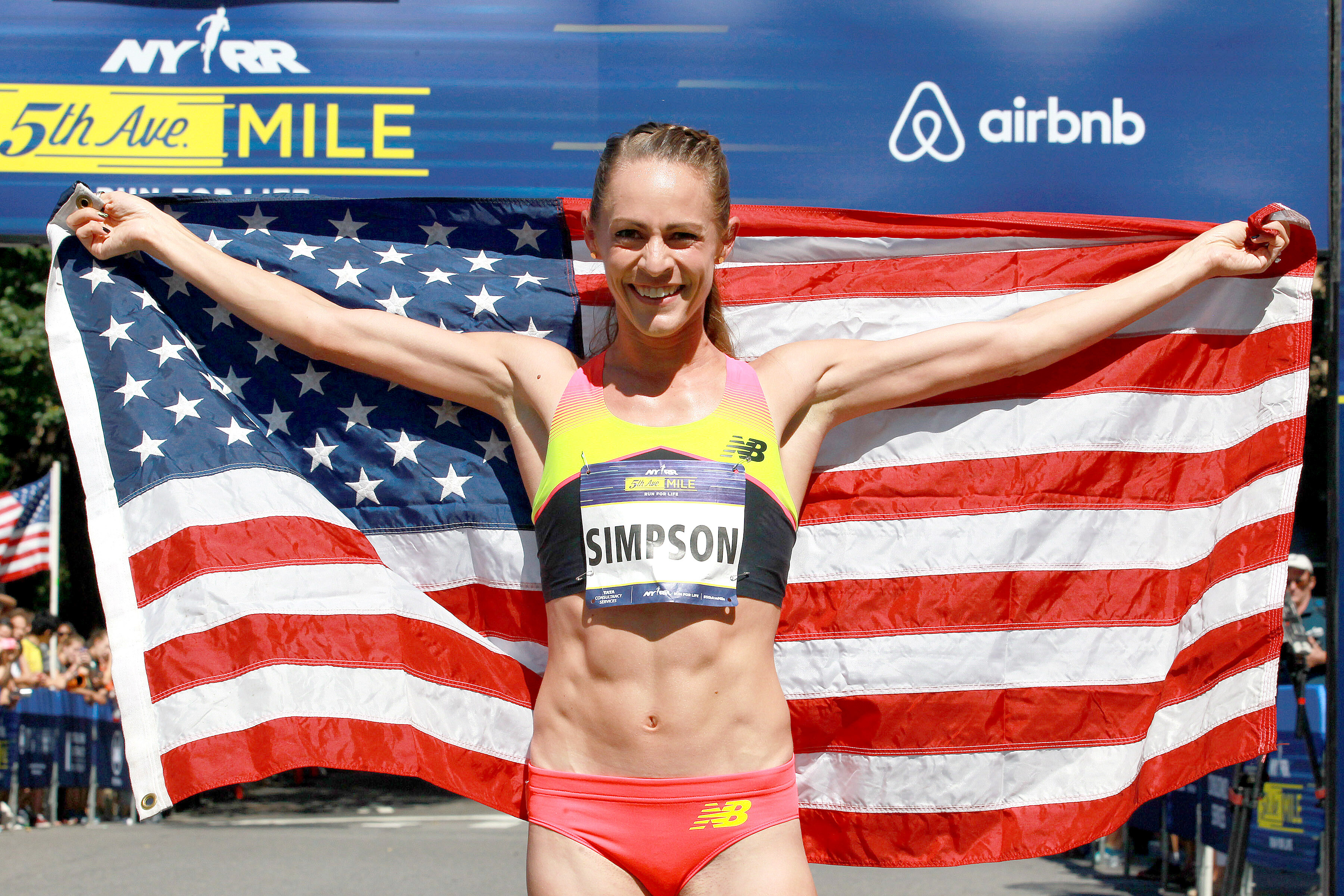
But as this chapter of life closes for Simpson, another very exciting one is about to begin, and that one will include quite a bit of running, too. She and her husband, Jason, are planning to embark on a year-long tour of the U.S. in 2025 that will take them—and their two Jack Russell Terriers, Truman and Barkley—to all 50 states while living out a van-life adventure focused on immersing in America’s thriving running culture.
From participating in races and visiting national parks to running iconic routes like Rim to Rim across the Grand Canyon and discovering hidden trails, Jenny and Jason have said their goal is to capture the heartwarming and inspiring essence of the country through the eyes of runners.
“We want to experience the beauty of this country firsthand, meet the incredible people who call it home, and celebrate everything that makes the U.S. so special,” says Jenny Simpson, who has represented the U.S. on the world stage for nearly two decades. “Through this journey, we hope to show that America’s beauty is not just in its landmarks, but in its people and the unique places they live, run, and explore.”
Out of the Ashes
In December of 2021, a devastating wildfire ripped through the south end of Boulder County—including the communities of Marshall, Louisville, and Superior, where it burned more than 1,084 homes and killed two residents and more than 900 pets. Miraculously, it didn’t burn the Simpson’s house—a restored circa-1900 schoolhouse they bought several years ago that was less than a half mile from the fire’s origin—but the house did incur significant smoke damage that needed mitigating.
The Simpsons were displaced and spent several months living in an apartment with little furniture, which forced them to live a rather spartan lifestyle. While Jason was still able to work as a creative director for a design firm, Jenny’s contract hadn’t been renewed by New Balance, and she wasn’t sure what the future held.
During that time, she had been doing a weekly call with her sister, Emily, and Jason’s sister, Annie, to discuss the book Designing Your Life: How to Build a Well-Lived, Joyful Life, a guide aimed at helping people to reimagine their professional and personal lives. It was through those discussions that Jenny came up with an idea of buying a Winnebago so she and Jason could drive around the country with Truman, who they rescued in 2020 just before the Covid lockdown. (They got Barkley about three years later.)
“My idea was that we can just drive around America and see the place that I’ve had stamped across my chest on my Team USA gear all these years,” she says. “I have been on Team USA, but I really want to know what that means. I’ve raced in some amazing places all around the world, but I really haven’t seen much of our own country. I want to go see the places and the people that I haven’t seen. And then I had this idea of doing a 50 states, 50 weeks tour.”
Jenny told Jason about the idea and he was interested from the start, but it was initially just a fun distraction while Jenny was battling injuries. Jason was so intrigued, though, that he started searching for information about vans online and indulging in YouTube content from a variety of van-life influencers. Eventually, Jenny was healthy and racing on the roads for Puma, ultimately with a quest to qualify for the 2024 U.S. Olympic Trials Marathon.
A year later, they were still casually talking about the enticing “what if” possibilities of owning a van.
“So by 2023, we were like, ‘What do these vans look like? What do they cost? What kind of different layouts are best?” says Jason, 40, a 20-time marathoner with a 2:18:44 personal best. “And then I got really into the travel influencer YouTube videos and at some point told Jenny, ‘Hey, let’s just go look at them.’ And that led to looking at the timelines of: if we were to do this in 2024 or 2025, what would it take? It takes like a long time to build out the vans, and we are definitely not build-it-yourself van people.”
On Her Own Terms
Perhaps the most impressive aspect of Simpson’s career has been her consistency. She qualified for every U.S. national team on the track between 2007 and 2019. Not only did she put in the work and remain virtually injury-free during that time, but she also raced fiercely and rose to the occasion every single time without a single hiccup in any of her preliminary races. (She also made it to the 1500-meter final of the Covid-delayed U.S. Olympic Trials in 2021 at age 35 after what she admitted was a rough gap in competition during the pandemic.)
For most of that time, she was coached by her University of Colorado coaches Mark Wetmore and Heather Burroughs. They continued coaching her as she transitioned to road running over the past three years and ultimately to the build-up to the 2024 U.S. Olympic Trials Marathon in Orlando, Florida. Although she had brief moments of success on the roads—finishing second in the U.S. 10-mile championship in 2021 and turning in a solid ninth-place, 1:10:35 effort in the Houston Half Marathon in 2023—the first injuries of her career disrupted her training and delayed her debut at 26.2 miles until the Olympic Trials.
Over the past three years, continuing to adhere to the rigid lifestyle needed to keep racing competitively was increasingly met at an internal crossroads of wondering when it would feel OK to retire and move on in life and what that would look like.
“Running the Olympics Trials and then running Boston, I would say those were not successful outings,” Simpson says. “I did the best that I could and I got as prepared as I could, but they weren’t what I had hoped for, neither of them were what I’m capable of. I’m really proud of how I ran in Boston because I ran entirely alone after mile 3, but that’s not how I wanted to end my career.”
After Boston, Jenny still wasn’t ready to retire. But she’d heard the chatter that suggested she could give up the ghost and not try to remain competitive on the roads, knowing her legacy was already secure. After she took some time off to recover and reflect, she knew she wanted to get back into training and target one more race on the biggest stage and settled on the New York City Marathon.
She parted ways with Wetmore and Burroughs in the spring and decided to train on her own, although she’s continually received subtle guidance from Jason, who qualified for and raced in the 2020 U.S. Olympic Trials in Atlanta. Although he has imparted bits of knowledge to help keep her balanced, Simpson has been following a training plan in her marathon buildup that she designed.
From Best in the U.S. to Across the U.S.
Casual interest in buying a van led to more in-depth investigation and, after what was an otherwise random training run on the dirt roads north of Denver last year, they passed an RV sales lot and decided to take a look. One thing led to another and they put down a small, refundable deposit that would hold a fully appointed 23-foot Winnebago Ekko during what was expected to be nearly a year-long wait until it was built and delivered.
Fast forward to 2024 and Jenny made her marathon debut on February 3 in Orlando, but it didn’t go at all as she had hoped. She had been running among the top 20 early in the race but eventually dropped out at mile 18. She returned 10 weeks later to run a respectable Boston Marathon in mid-April (she placed 18th overall in 2:31:39 and was the fourth American finisher), and although her effort was commensurate with her inner drive—and some degree of success felt good—she still wasn’t ready to call it a career.
Finally, in April, several days before they were going to travel to Boston, the RV dealership called and told them the van had arrived and they had a week to consider buying it. At that point, Jenny was eager to run Boston to make amends for her Olympic Trials experience, but she was also physically and emotionally fried.
“And I was like, we’re doing it,” she says. “It was the perfect time in the perfect year. Because I was like, ‘I’ve got to get out of here. I’ve got to be done.’ It was killing me. I actually might perish in the middle of the Boston Marathon. I just was so burnt out, and so it was the perfect time for them to call and essentially say, ‘Do you want to drive away into the sunset?’ And I was like, ‘Yes, I do. I really do.’”
Two days after the Boston Marathon, they paid the remainder of the balance on the van and picked it up, immediately sending them into daydreaming mode about where they wanted to go.
Although their plans are still being formulated, they intend to rent their house and hit the road with the charming dogs in January, officially starting their “Jenny and Jason Run USA” tour in Florida. Along the way, they plan to see numerous sights, host or join at least one fun run in every state, promote dog adoptions by publicizing local humane societies, and create a wide range of engaging social media content on their Instagram, Facebook, and YouTube accounts along the way. Given that their longest stint in the van so far was the six-day trip they took to the Grand Tetons and Yellowstone National Park in Wyoming early last summer, they know they’re going to have to learn on the fly and continually adapt. But that’s what an adventure is all about.
“I’ve been nothing but focused on running New York, but I am excited about what’s next,” Jenny said this week. “As I have been tiptoeing toward the idea of being retired from professional running, I don’t know that I’m going to be really great at it or that it’s going to come easily for me. That’s why it’s so wonderful to have a partner in life like Jason because I think he sees that, too. So our goal is to create a lot of time and space to figure that out. I think the year will be kind of interesting and fun and wild and I really don’t know how it’ll end up, and I think that’s really good.”
Approaching the End … and a Beginning
Simpson admits her post-Boston malaise contributed to her having an inconsistent summer of training, in part because she was listening to voices that suggested she should relax and not be so rigid in her approach. When she showed up to run the Beach to Beacon 10K in Cape Elizabeth, Maine, on August 3, she admits she wasn’t very fit, and, as a result, finished a distant 12th in 34:30.
“My Beach to Beacon race was just so bad that it was like validation to me that caring less and trying less doesn’t work for me ever in anything,” she said. “I’m just not that person. It works for some people, but that’s not who I am. I used to joke that when you show up to the track and someone asks, ‘How do you feel?’ I always thought to myself it doesn’t matter how I feel. It’s about doing the work. I always feel like it’s execution over emotion for me all the time and that I have a job to do. I know who I am and I know how I operate, and how I operate is great.”
Simpson got back to work immediately after that race, ramping up her weekly mileage to the 100-mile range in the high altitude environs of Colorado. She says she’s done more than half of her long runs between 8,500 and 10,500 feet, including runs on Magnolia Road above Boulder, Golden Gate Canyon State Park near Golden, and even a loop around the paved Mineral Belt Trail in Leadville.
Her return to rigidity and improved fitness helped bring mental clarity that not only convinced her that she’d be ready to run a strong marathon in New York City, but also brought the revelation that she was ready to admit it was her last race knowing it would allow her to retire on her own terms.
Two months after feeling flat in the 10K, she won the Wineglass Half Marathon on October 5 in Corning, New York, running a near-PR of 1:10:50 (5:24 per-mile pace) as she ran stride-for-stride to the finish line with Jason. (She broke the women’s finisher’s tape for the win, while he ran slightly to the side as the 12th-place men’s finisher and 13th overall.) Now she’s likely in sub-2:30 marathon shape, even though the hilly New York City Marathon course is as equally challenging as Boston in its own way. Jason, meanwhile, will race in the Abbott Dash to the Finish Line 5K the day before the marathon, not only so he can track Jenny on Sunday and meet her at the finish line, but also because he’s running the California International Marathon on December 8.
2025 and Beyond
Simpson arrived in New York City on October 30 healthy, happy, and ready to run hard—definitely not the feeling of holding on for dear life that she felt going into the Olympic Trials and the Boston Marathon. She says she couldn’t be more excited to run through the city’s five boroughs to the finish line in Central Park that she hopes will come with a satisfying result, as well as the beginning of closure to her star-spangled career.
Who knows what’s next after that—Coaching? Law school? A corporate career with a shoe brand? The world seems to be her oyster, but for the time being the cross-country tour might be just what she needs most. She’s excited to detach a bit from the rigid schedule and identity she’s clung to for the past 20 years and enjoy the freedom of the open road. She knows it will be a complete departure from the essence of what she’s all about, and to that point, she’ll likely dig into planning and scheduling early next week even before she recovers from the marathon.
Although she admits she was intrigued while watching some of the top runners finish the Leadville Trail 100 this summer, she says she’s decidedly not interested in running ultras. (However, Jason might be, and Jenny says she’s been keen to pace and crew him.) She might get more into trail running, something she did a little bit early in her University of Colorado career. Or she might even return to road running, but she’s not thinking that far ahead. For now, she’s focused on racing in New York and then continuing to run in 2025—on the magical mystery tour that awaits—and beyond.
“I feel a lot of peace about it, but it’s not like I’m over running. I want to retire so I can do more running and to explore the beautiful country I raced for,” she says. “I wanted to be world class at the marathon, and I’m not. I gave it a good try, and now it’s time to try something else, and I just feel really good about it.”
by Brian Metzler
Login to leave a comment
TCS New York City Marathon
The first New York City Marathon, organized in 1970 by Fred Lebow and Vince Chiappetta, was held entirely in Central Park. Of 127 entrants, only 55 men finished; the sole female entrant dropped out due to illness. Winners were given inexpensive wristwatches and recycled baseball and bowling trophies. The entry fee was $1 and the total event budget...
more...'I know I can do something'- Geoffrey Kamworor confident ahead of New York City Marathon return
Geoffrey Kamworor is excited and confident about returning to the New York City Marathon, where he’s previously won twice, after overcoming past injuries.
Geoffrey Kamworor has expressed eagerness ahead of returning to one of his favourite course at Sunday’s New York City Marathon.
Kamworor, a two-time New York City marathon champion, has suffered a series of injuries that forced him to pull out of many races but has expressed confidence ahead of Sunday’s challenge and confirmed he will be on the starting line.
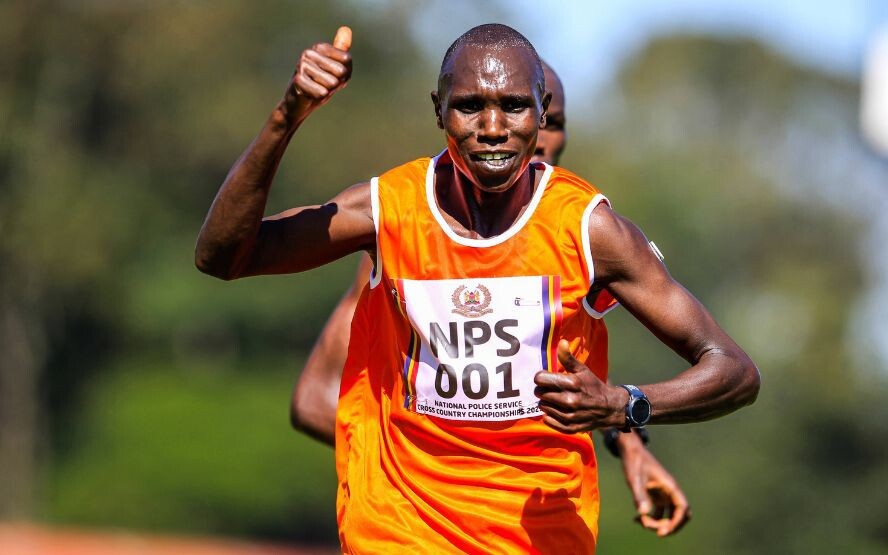
The five-time world cross country champion revealed that he is in great shape and ready to show the world what he is capable of, explaining that he believes in his abilities and having raced in the streets of New York a series of times.
He won the 2017 and 2019 editions of the New York City Marathon and proceeded to finish second in 2015 and third in 2018.

“I always believe in myself and I’ll never doubt my potential and whenever I’m healthy, I know I can do something. It will be an exciting moment for me, going back after sometime. I really wanted to go back last year and I trained very well but I had to pull out because of an injury,” Geoffrey Kamworor said.
“My preparations towards New York City Marathon are going really well and my memories of the course are really great because I’ve won there twice, finished second on one occasion and third in another. It has been nice for me and New York is really a great place and has a nice course especially towards the finish, the last 5km towards Central Park,” he added.
Geoffrey Kamworor added that he has mastered the course very well and has an idea of what to expect throughout the race. He has not done any special training ahead of the challenge as he admitted that the training course in Kenya looks like the one at the New York City Marathon.
He admitted that injuries have plagued him and finishing second at last year’s London Marathon was a sign that he is bouncing back slowly.
“The course is pretty well, sometimes very challenging…there is an uphill challenge and a little bit of downhill challenges. However, it’s nice to me and I don’t see any problem with the course and I think I like the course so much,” he said.
“Actually, I didn’t do any special training going into the race because where we train here in Kenya, it’s sometimes very hilly and some downhills. I was excited to finish second in London last year after coming back from a series of injuries.”
by Abigael Wafula
Login to leave a comment
TCS New York City Marathon
The first New York City Marathon, organized in 1970 by Fred Lebow and Vince Chiappetta, was held entirely in Central Park. Of 127 entrants, only 55 men finished; the sole female entrant dropped out due to illness. Winners were given inexpensive wristwatches and recycled baseball and bowling trophies. The entry fee was $1 and the total event budget...
more...U.S. vice-presidential candidate Tim Walz runs with TikTok influencer in Central Park
Vice-Presidential candidate Tim Walz ditched his usual running mate on Wednesday, instead joining content creator Kate Mackz on a one-mile run through Central Park. Their vlog quickly went viral on TikTok. The video shows multiple Secret Service agents running alongside the pair.
Mackz, recognized on TikTok as “The Running Influencer,” is known for approaching celebrities on the streets of New York City or Los Angeles and inviting them on a run. When meeting up with Walz, the pair agreed to begin with one mile (1.6 km). As a runner myself, I was surprised to notice that Walz knows what he’s doing–he had a solid, comfortable stride and held up a conversation for the entire run–which ended up being just farther than a mile.
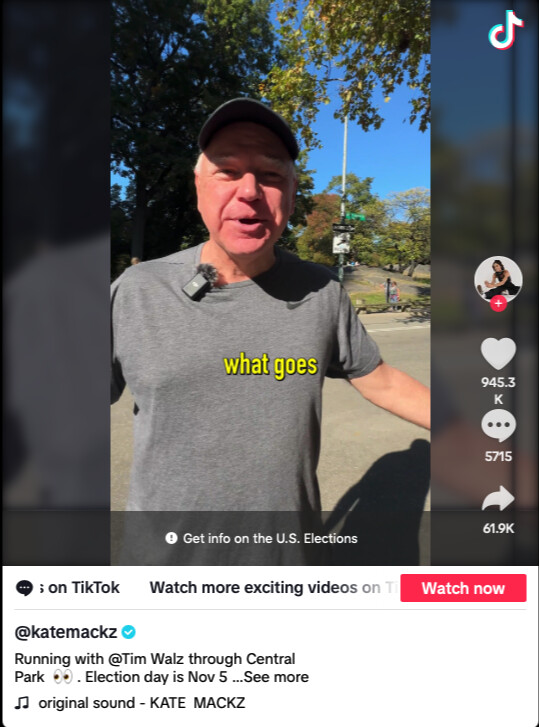
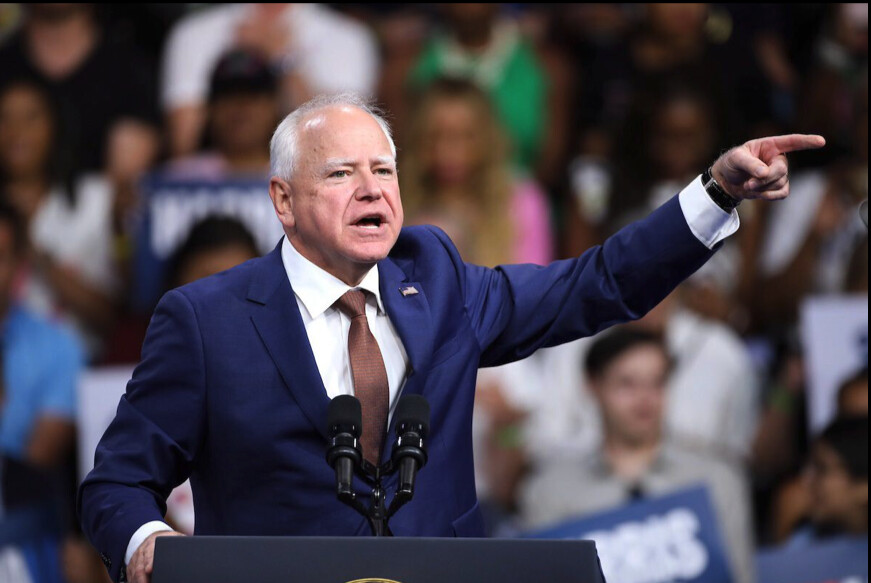
Walz revealed that he picked up running 12 years ago. “It’s the best stress reliever you could possibly find,” he told Mackz. “Good for the soul, good for the body–and you meet a ton of great people.” He admitted that the accompaniment of several Secret Service agents makes the run a little busier, but still fun. Walz noted that all Minnesotans are “outdoor people,” running in all seasons. “This (interview) is great,” Walz said. “I would take every one like this.”
The avid runner has run one marathon: the 2014 Rochester [N.Y.] Marathon, where he finished in 4 hours 41 minutes. “I like half better,” he noted. “I’ve been doing a lot of 10-miles.” In
Impressively, Walz seemed hardly out of breath after Mackz suggested they “pick up the pace a little bit,” talking steadily about the upcoming election. The former teacher and football coach says he was influenced to pursue a political career after the age of 40 by his former students; he revealed that some of his former football players have come out to support him.
“Live in the moment,” Walz said while leaving advice for first-time marathoners. “Don’t get out too fast, enjoy what you’re doing, and know that 99 per cent of people will never do what you’re doing.”
Mackz has also posted videos with world record holder Sydney McLaughlin-Levrone and Australian 10,000m national record holder Lauren Ryan, along with celebrities Jason Derulo, John Krasinski and Jared Leto.
by Running Magazine
Login to leave a comment
The Chicago Marathon has a strong history
First run in 1977, this Sunday, Chicago hosts its 46th marathon (it lost 2020 to the Covid-19 pandemic; 1987 to sponsorship issues). One of the six Abbott World Marathon Majors, the history of the BofA Chicago Marathon has been one of rising, falling, and rising again.
In 2023, it witnessed its third men’s marathon world record, 2:00:35, gloriously produced by the late Kenyan star, Kelvin Kiptum, who tragically died in a car accident on February 11, 2024 (age 24 years), in Kaptagat, Kenya.
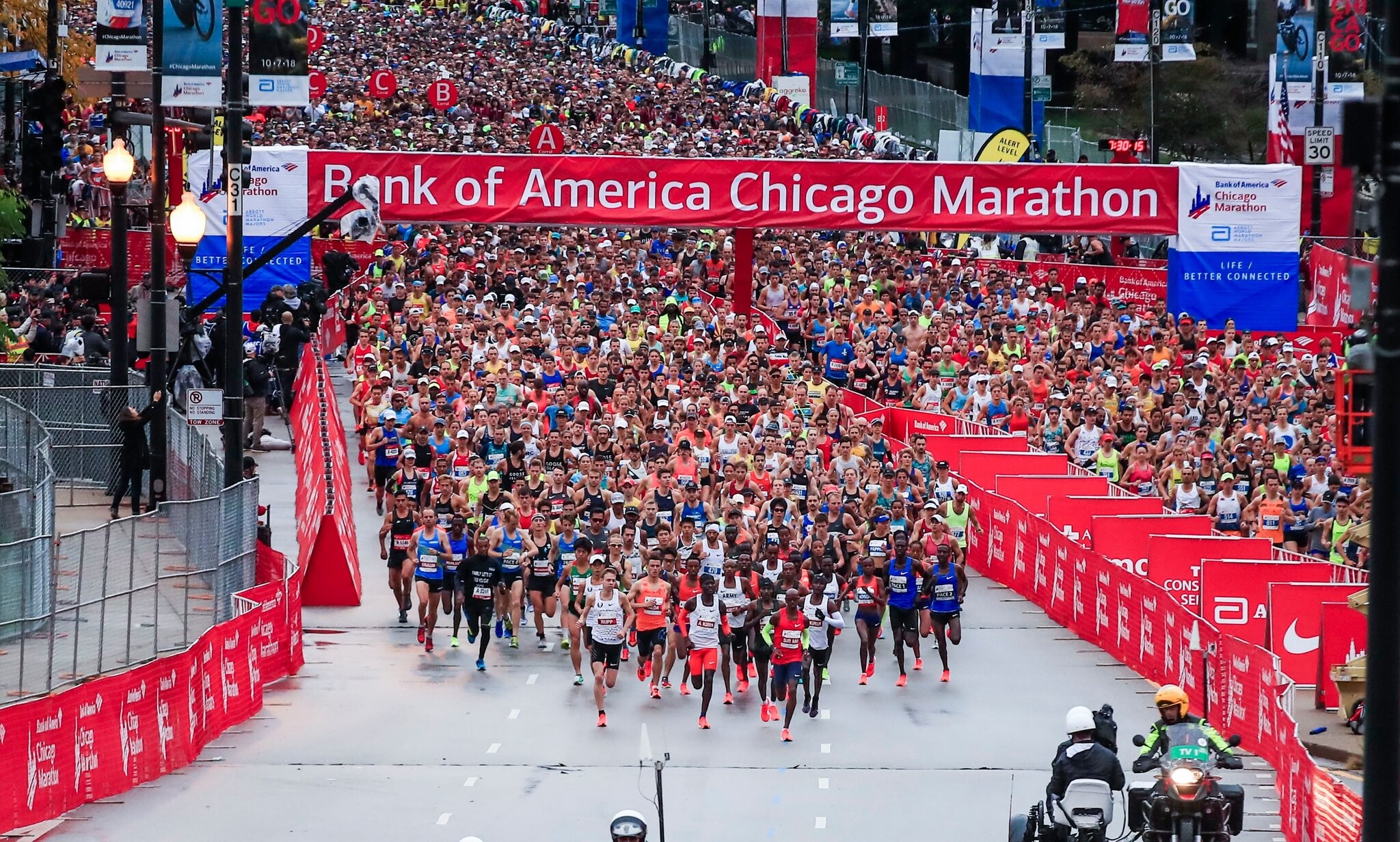
But the roots of the modern Bank of America Chicago Marathon traces back to 1982 when, in its sixth year, known as America’s Marathon/Chicago, the event rebooted, much as New York City 1976 was a reordering for the Big Apple 26-miler.
In America’s bicentennial year, the New York Road Runners expanded their event from four laps of Central Park to all five boroughs. It was a gamble. But in one fell swoop, the event grabbed the public’s attention, took on international importance, and ushered in a new era of urban marathons, even though they had run six previous marathons under the same banner.
In 1982, Chicago’s move from a regional marathon to the big time came about because of two things: one, the $600,000 budget put up by race sponsor, Beatrice Foods, and the hiring of one Robert Bright III of Far Hills, New Jersey to serve as athlete recruiter.
Bob Bright (left) at the Litchfield Hills Road Race in Connecticut with Nike east coast promo man, Todd Miller.
Recommended to the event by Olympians Frank Shorter and Garry Bjorlund, Bright had successfully elevated a modest 15K road race in Far Hills, New Jersey, called the Midland Run, to international prominence in 1980. So loaded was the Midland Run elite field, Sports Illustrated sent a reporter and photographer to cover the event.
What Bright brought to Chicago was zeal and a vision. Before Bright, there had been very little orchestration of competitive marathon racing. The Bright idea was simple: actively recruit a field of international athletes who came ready to run, so elite competition would become the hallmark of the event.
First, a brief history. For many decades, Boston dominated the marathon scene as essentially the only game in town. Yes, there was the Yonkers Marathonin New York, first contested in 1907; the Polytechnic Harriers’ Marathon for the Sporting Life trophy in England, which began in 1909. The Košice Peace Marathon in Slovakia joined the club in October 1924; Enschede and Fukuoka in 1947; Beppu in ’52.
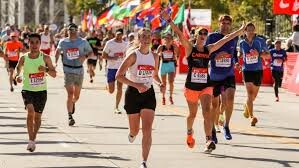
But the Boston Athlettic Association’s attitude from its marathon’s inception in 1897 up to the mid-1980s remained, “We’re running our race on Patriots’ Day starting in Hopkinton, Massachusetts at noon. It will cost you three bucks to enter. See you at the bus line for the ride out to the start.” No bells, no whistles, no invitations.
When New York City debuted in 1970, it spun four laps of Central Park to total its 26.2 miles. But in 1976, with the city in a major financial difficulty amidst America’s Bicentennial, the New York Road Runners boldly took its marathon from the confines of Central Park and expanded it through all five boroughs hoping to attract more tourists.
Race Director Fred Lebow recruited a few big guns upfront to entice press coverage, Olympic gold and silver medalist Frank Shorter along with Shorter’s rival, American record holder from Boston 1975, fellow Olympian, Bill Rodgers. Everyone else filled in from behind, with the City of New York being the true star attraction.
First considered a onetime gimmick, the five-borough experience proved so successful, the NYRRs embraced it as the path forward. Still, the actual races in NYC were never very competitive. Rodgers won by three minutes over Shorter in ‘76, 2:10:10 to 2:13:12. Then dominated for the next three years, as well.
Chicago 1982 would be the first, full–blown, orchestrated marathon race, as Bright had a specific recruitment strategy.
“We wanted six guys who thought coming in that they had a chance to win,” said Bright. “Then we wanted six more behind them who figured they had a shot at the top 10. So, right away we didn’t go after a guy like Alberto Salazar (who was ranked number one in the world after wins in New York City in 1980, a short-course world record in ‘81, and a Boston title in 1982.)
“And if you figure that a top race has a main pack of 10 to 15 athletes, you’re going to double that number in invitations. That guarantees that even if two of every five don’t run well for one reason or another, you still have a big group ready to race.”
Redundancy was the key, the money, the magnet. The total amount taken home by runners from Chicago in 1982 was $130,000.
This was when Boston was still embracing its amateur roots, stiff-arming the new breed of runners looking to get paid for their craft. In New York, Lebow had to keep his payments under the table in order to avoid being billed for city services on race day.
Chicago put up $48,000 in prize money for the men in 1982, with $12,000 going to the winner, 600 for 15th place. The women’s split was $30,000, with $10,000 awarded for the win through $500 for 10th. The remaining $52,000 represented the grease in upfront, under-the-table appearance fees.
“We wanted the money to be respectable, but not overwhelming the first year,“ explained Bright, whose history as a dog sled racer and thoroughbred horse trainer made him one of the best judges of the running animal. “We didn’t want it to appear like the race was store-bought, like the Atlantic City pro race a few years ago, where the money was good, but no one took the race seriously.
“So, we put up $78,000 in prize money, which, to the public, doesn’t sound like all that much. But when you added on the appearance money, it represented as much as any other race handed out.“
For the money on offer, and the prestige of doing well against a field of that caliber – as good as the group assembled at the 1980 Moscow Olympics, according to Sweden’s Kjell Eric Stahl – what came down in Chicago 1982 was a new course record by University of Michigan grad Greg Meyer (2:10:59), along with 22 more sub -2:220s, and nine personal bests out of the first 11 finishers.
The top five women followed suit, led by Northampton, Massachusetts’s Nancy Conz, whose 2:33:33 also represented a new course record for Chicago, some 12 minutes faster than the old mark.
The event treated the athletes well; offered a new opportunity in the fall, competing with New York City; Chicago witnessed its first truly world-class marathon; the sponsor, Beatrice Foods, received enormous visibility for its dollars; and a new professionalism attended the art of marathon orchestration. Chicago was now the new kid on the block, with toys to match anyone’s.
But now the pressure was on, not just to maintain its pace, but to top itself in 1983. The story continues.
by Toni Reavis
Login to leave a comment
Bank of America Chicago
Running the Bank of America Chicago Marathon is the pinnacle of achievement for elite athletes and everyday runners alike. On race day, runners from all 50 states and more than 100 countries will set out to accomplish a personal dream by reaching the finish line in Grant Park. The Bank of America Chicago Marathon is known for its flat and...
more...Tola and Obiri lead elite fields for New York City Marathon
Organisers of the 2024 TCS New York City Marathon have revealed a world-class line up for this year’s World Athletics Platinum Label road race on 3 November, led by defending champions Tamirat Tola and Hellen Obiri.
Since winning last year in a course record of 2:04:58, Tola won the Olympic title in Paris in a Games record of 2:06:26. What made his feat all the more impressive is that he was only drafted into the Ethiopian team two weeks before the Games, having initially been named as a reserve.
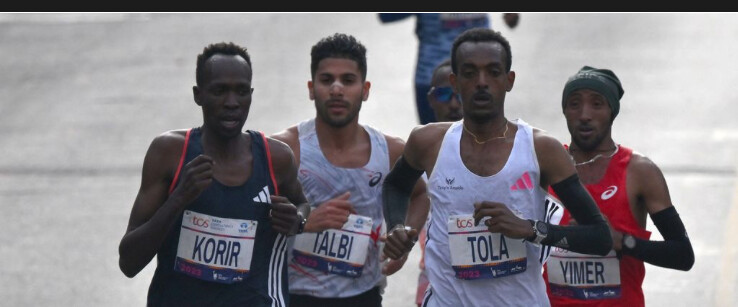
“I’m excited to defend my title in New York, especially coming off an Olympic-record marathon performance,” said Tola. “The hilly course and crowds in Paris definitely prepared me well for the bridges and spectators in New York, where maybe I can go even faster this year.”
Two-time Olympic medallist Bashir Abdi will also be one to watch; the Belgian earned silver at the recent Olympics, having taken bronze at the Tokyo Olympics in 2021 and at the 2022 World Championships.
Three past winners – all from Kenya – are also in the field: 2022 champion Evans Chebet, 2021 winner Albert Korir, and 2019 and 2017 victor Geoffrey Kamworor. Chebet has twice won the Boston Marathon, and has finished first or second in 13 marathons. Kamworor has made it on to the podium in all four of his New York Marathon appearances.
Fellow Kenyan Abel Kipchumba, who won this year’s NYC Half Marathon, will be making his New York City Marathon debut.
The US charge is led by Conner Mantz and Clayton Young, who finished eighth and ninth respectively in the Paris Olympic marathon.
Women’s Open Division
Obiri is a three-time Olympic medallist and seven-time world medallist. Last year the Kenyan became the first woman in 34 years to win both Boston and New York in the same calendar year. So far this year, she retained her Boston Marathon title and went on to earn bronze in the Olympic marathon.
“There’s no place like New York, and I am so ready to defend my title,” said Obiri. “I have been racing very well on the roads in the US, and I hope I can have another good day that sees me in contention once we enter the final stages in Central Park.”
Fellow Kenyan Sharon Lokedi, the 2022 NYC Marathon winner, will return after finishing third last year and fourth in the Olympic marathon in Paris. The Kenyan delegation will also include 2010 champion Edna Kiplagat, four-time Olympic medallist Vivian Cheruiyot, and Sheila Chepkirui, who owns the fastest personal best in the field.
Ethiopia’s Tirunesh Dibaba will make her New York City Marathon debut and is one of the world’s most accomplished long-distance runners as a three-time Olympic and 16-time world champion. She will be joined by compatriot Senbere Teferi.
Dakotah Lindwurm, the top US finisher in the marathon at the Paris Olympics, will lead the US contingent.
Elite field
WomenSheila Chepkirui (KEN) 2:17:29Tirunesh Dibaba (ETH) 2:17:56Vivian Cheruiyot (KEN) 2:18:31Senbere Teferi (ETH) 2:19:21Dera Dida (ETH) 2:19:24Edna Kiplagat (KEN) 2:19:50Eunice Chumba (BRN) 2:20:02Sharon Lokedi (KEN) 2:22:45Hellen Obiri (KEN) 2:23:10Fatima Gardadi (MAR) 2:24:12Kellyn Taylor (USA) 2:24:29Fabienne Schlumpf (SUI) 2:24:30Aliphine Tuliamuk (USA) 2:24:37Dakotah Lindwurm (USA) 2:24:40Lily Partridge (GBR) 2:25:12Jessica McClain (USA) 2:25:46Des Linden (USA) 2:25:55Tristin Van Ord (USA) 2:25:58Khishigasaikhan Galbadrakh (MGL) 2:26:32Maggie Montoya (USA) 2:28:07Katja Goldring (USA) 2:29:01Savannah Berry (USA) 2:29:13
MenEvans Chebet (KEN) 2:03:00Gabriel Geay (TAN) 2:03:00Bashir Abdi (BEL) 2:03:36Tamirat Tola (ETH) 2:03:39Geoffrey Kamworor (KEN) 2:04:23Abdi Nageeye (NED) 2:04:45Addisu Gobena (ETH) 2:05:01Abel Kipchumba (KEN) 2:06:49Albert Korir (KEN) 2:06:57Conner Mantz (USA) 2:07:47Clayton Young (USA) 2:08:00Rory Linkletter (CAN) 2:08:01Callum Hawkins (GBR) 2:08:14Ser-Od Bat-Ochir (MGL) 2:08:50Elkanah Kibet (USA) 2:09:07Noah Droddy (USA) 2:09:09Jonny Mellor (GBR) 2:09:09Jared Ward (USA) 2:09:25Colin Bennie (USA) 2:09:38Futsum Zienasellassie (USA) 2:09:40CJ Albertson (USA) 2:09:53Nico Montanez (USA) 2:09:55Yuma Morii (JPN) 2:09:59
by World Athletics
Login to leave a comment
No rest for Hellen Obiri and Tamirat Tola as they look to defend their New York City Marathon titles
Days after being impressive at the Paris Olympics marathon, Hellen Obiri and Tamirat Tola will immediately return to train as they gear up for a grueling task to defend their titles at the New York City Marathon.
The 2024 New York City Marathon yet again promises exciting match-ups from top athletes as defending champions Hellen Obiri and Tamirat Tola return with the main focus on defending their titles on Sunday, November 3.
The professional line-up remains historic as it will feature 14 past champions, 27 Olympians, and 19 Paralympians. As per the New York City marathon organizers, the field features 31 athletes from the just-concluded Paris Olympic Games.

Obiri is fresh from winning an Olympic bronze medal after conquering the grueling marathon course and she will be out to impress once she races in the streets of New York City. She has the much-needed confidence after beating a stacked field at the Olympic marathon where she finished third. In April, she became the first woman since 2005 to repeat as the Boston Marathon champion.
“There’s no place like New York, and I am so ready to defend my title on what has become one of my favorite days of the year,” said Obiri.
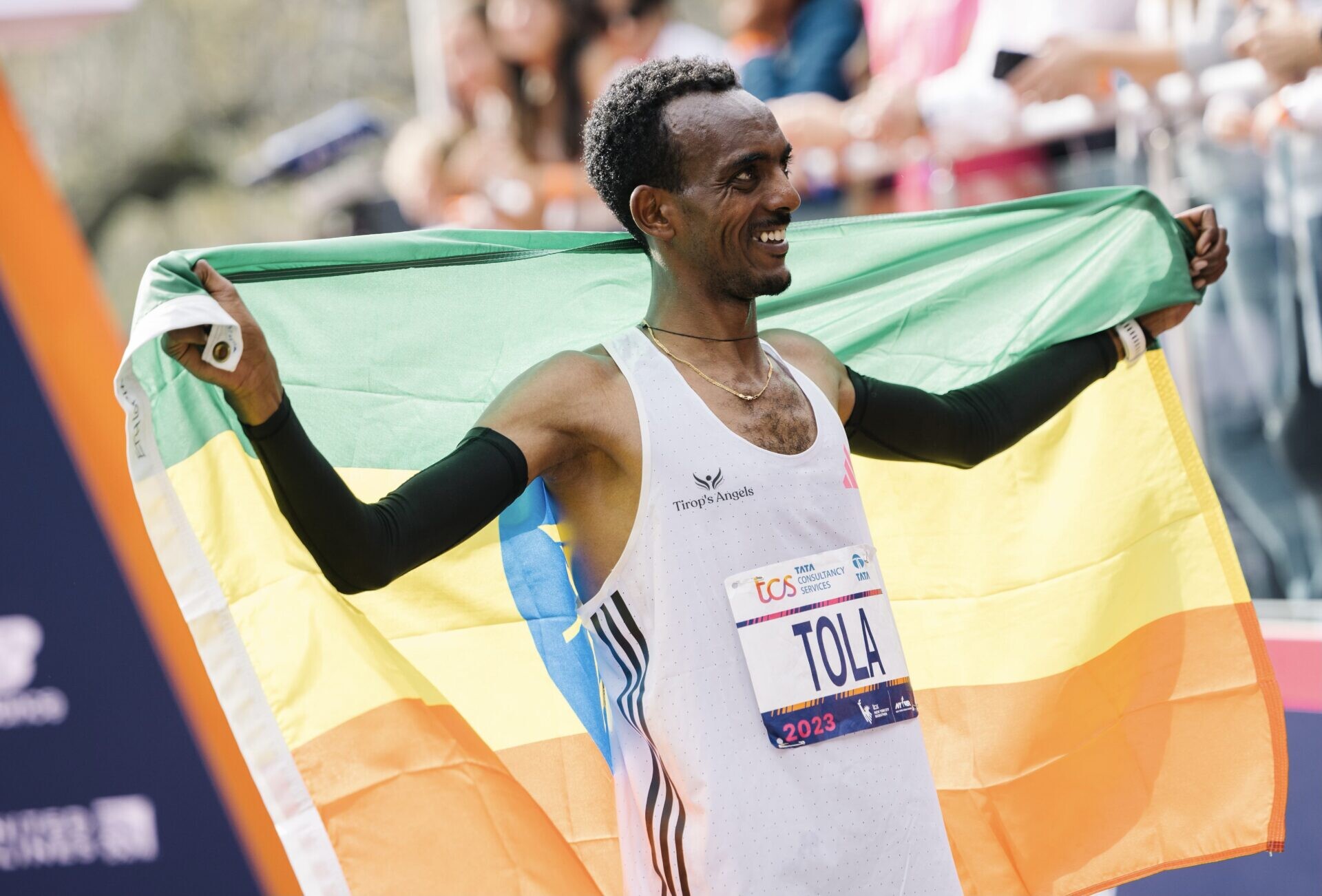
“I have been racing very well on the roads in the U.S., and I hope I can have another good day that sees me in contention once we enter the final stages in Central Park.”
Obiri will be challenged by compatriot Sharon Lokedi who finished fourth in the marathon at the Paris Olympic Games. Lokedi won the 2022 edition of the event in her marathon debut and was the runner-up at the 2024 Boston Marathon.
Edna Kiplagat, four-time Olympic medalist Vivian Cheruiyot, and Sheila Chepkirui, who owns the fastest personal best in the field will also be in the mix.
Ethiopia’s Tirunesh Dibaba makes her New York City Marathon debut and is one of the world’s most accomplished long-distance runners. She will be joined by Senbere Teferi.
Olympic champion Tola will be back to defend his title in the men’s race. Tola won the Olympic marathon in an Olympic-record time of 2:06:26. He also won marathon gold at the 2022 World Championships and silver at the 2017 world championships and goes into the race with the much-needed experience.
“I’m excited to defend my title in New York, especially coming off an Olympic-record marathon performance,” said Tola.
“The hilly course and crowds in Paris definitely prepared me well for the bridges and spectators in New York, where maybe I can go even faster this year.”
Belgium’s Bashir Abdi will be in the mix after winning a silver medal in the Paris 2024 Olympic marathon. The 2022 TCS New York City Marathon champion Evans Chebet, 2021 champion Albert Korir, 2019 and 2017 champion Geoffrey Kamworor, and 2024 United Airlines NYC Half champion Abel Kipchumba will also be in the mix, out to challenge the duo.
by Abigael Wafula
Login to leave a comment
TCS New York City Marathon
The first New York City Marathon, organized in 1970 by Fred Lebow and Vince Chiappetta, was held entirely in Central Park. Of 127 entrants, only 55 men finished; the sole female entrant dropped out due to illness. Winners were given inexpensive wristwatches and recycled baseball and bowling trophies. The entry fee was $1 and the total event budget...
more...Reasons to Love Running in New York City
This highly-runnable city has a variety of events, routes, and resources that draw in an active community of runnersThere’s no place like New York City, especially if you’re a runner. Whether you’ve raced multiple marathons or you prefer a mellower pace, you’ll always have a new route to explore, a run club to meet up with, or an event to sign up for.
“Any kind of running experience you want to have, you can have here,” says Dave Hashim, a New York City–based photographer who recently completed the Perimeter Project, where he ran around the borders of all five boroughs.


For Caitlin Papageorge, president of North Brooklyn Runners, part of the city’s love affair with running stems from the way its citizens normally get around.
“New York is such a pedestrian city,” she says. “I think for that very reason, it sets New York up really well for a great running scene.”Ready to experience what New York has to offer? Here’s your quickest path to connection with the city’s broad and diverse running community.
Central Park: No trip to New York is complete without a jog through Central Park. Hashim recommends following the main paved path for a seven-mile loop, but make sure to lap the Harlem Meer, in the park’s northeast corner—it’s an often overlooked but especially beautiful area.
Hudson River Greenway: Stretching 12.5 miles from Battery Park all the way up to Inwood Hill Park at the northern tip of Manhattan, the Hudson River Greenway offers superb views of the Hudson River and nearby parks all along its length.
Roosevelt Island: Get off the beaten path with a four-mile run around Roosevelt Island in the East River. Both Hashim and Papageorge recommend it for its quiet atmosphere (there’s very little traffic), interesting architecture (like an abandoned smallpox hospital), and panoramic vistas of the Manhattan skyline.
McCarren Park Track: Brooklyn’s McCarren Park is a popular spot for runners thanks to its public track. Head here for a sprint workout or a warm-up lap before a longer run—just keep an eye out for obstacles like wayward soccer balls or the occasional ice cream cart cruising around in lane one.New Balance 5th Avenue Mile: The 5th Avenue Mile proves that short distances can attract stiff competition. Elite sprinters battle here each year, and the course itself is a star: Competitors race from 80th Street to 60th Street, passing distinguished institutions like the Frick Collection art museum.
United Airlines NYC Half: This 13.1-mile spring classic has become a destination race for good reason, providing a scenic tour of two boroughs packed with iconic landmarks. Join 25,000 racers on closed NYC streets, from a Brooklyn start, across the Manhattan Bridge, heading up through Times Square, to a home stretch in Central Park.
Al Gordon 4-Miler: This race takes place in Prospect Park, Brooklyn’s answer to Central Park, and honors Al Gordon, a New Yorker who began running marathons in his 80s. While the distance is short, the course showcases the park’s beautiful scenery and includes some hilly terrain for an extra challenge. “I just love being there,” says Papageorge. “It’s underrated.”No More Lonely Runs: Looking for someone to run with? Take a tip from Mallory Kilmer, a seasoned marathoner who started this club to help runners of all experience levels find community in the sport. The beginner-friendly groups gather every Saturday morning.
Endorphins: This nationwide running group has a strong presence in New York City. While the group runs every Monday are a big draw, joining Endorphins also gets you access to online resources like Q&As with running coaches and physical therapists.
Asian Trail Mix: This club’s mission is twofold: Increase AAPI representation in running and get New Yorkers onto the dirt. If you’re itching for trails, join one of the club’s all-are-welcome group runs, which explore the wealth of wilderness areas just a short train ride outside the city.
Front Runners New York: Front Runners is where New York’s LGBTQ+ and running communities overlap, and the group creates a positive, inclusive atmosphere at its weekly Fun Runs. If you become a member, you can also join the group’s coached workouts and triathlon training sessions.
Almost Friday Run Club: Why not start the weekend a little early? Almost Friday is the group to do it with: this friendly club meets every Thursday morning on the Hudson River Greenway for a chill run by the water. It’s the perfect midweek pick-me-up.
New Balance Upper West Side: New Balance’s Upper West Side location—just a few strides from Central Park—will be your go-to spot for running shoes, gear, and advice. Key highlight: The store is equipped with a 3D foot scanner to help you get the perfect fit in your next pair of shoes.
by Outside Online
Login to leave a comment
This Runner Learned the Importance of Easy Days After Trying to Train Hard for Too Long
“Running has made me a better thinker—I’m able to solve problems when I’m on a run, and often find new and creative solutions to or perspectives on something that’s bothering me."
I played sports (baseball, basketball, lacrosse) growing up, but running was always used as a form of punishment. I didn’t understand the people who “enjoyed” running or would willingly run. I also didn’t want anything to do with running because I was too scared to lose any of the muscle I worked so hard to put on. (I picked up weightlifting in college.)

That’s when running became the perfect escape for me physically and mentally. Some of my best thoughts came from mid-afternoon runs around the suburbs of Irvine, California. While I realized that I wasn’t cut out for med school, I will say that my personal statement would have been a lot worse had I not gotten some creative inspiration on my runs.
When I first started running, I didn’t really know how to run—so I downloaded the first (good) app I could find—the Nike Run Club app. I really liked it because they had in-app coaches to help guide you through the run, plus tips on how to gauge my intensity proved helpful.
Prior to that, I would just run as fast as I could for three to four miles with zero periodization on a day-to-day or week-to-week basis. I didn’t do any races, but I did a self-imposed “5K every day” challenge in November 2020. The goal was to get faster by the end of November. I went out and ran a 5K every day at max effort, expecting to get faster by day three. Instead, I had a pretty big regression, so it wasn’t the best training method for me.
I think most beginners think that doing more of the same thing will get them to become better, when in reality periodization is what actually compounds progress the most. I thought I needed to be running at a high intensity daily. It took me two years until I realized that I only needed a few max effort sessions per week, and to simply focus on making my hard days hard and easy days easy.
I’ve also noticed that many former high school/college athletes get into running and their biggest Achilles’ heel is making easy days just as hard as hard days, and I totally get that. Running three miles at a 10-minute pace when I know I can be cooking some sub-seven-minute miles is not something my brain nor body were used to when I started.
In 2020, I decided to run an impromptu half marathon, which was my proudest running moment. To the Allen who had never hit double-digit mileage in one run, 13.1 miles was simply a mythological number.
For that run, I hadn’t followed any real training beforehand, nor did I have any gels or water (biggest mistake I made that day). It was just me, my phone, some AirPods, and my new bright orange Nike AlphaFlys. Needless to say, my first half marathon ended with me cramping and locking up outside of the Chipotle that was less than a mile from my house. I wouldn’t run more than 10 miles again until March 2022.
I almost entirely stopped running in April 2021 when I got back to the gym. However, running found me again when I signed up to participate in the Birthday Series’ 131-mile Relay Race from Montauk, New York to Times Square in June 2023. I ran 25 to 30 miles in the race. I went from running ten to 20 miles a week inconsistently (from March to May 2023) to 50-plus miles a week later that summer.
Most recently, this past April, I ran my first marathon—the Big Sur International Marathon. I was doing well and on target for a 3:15 marathon until my entire body started cramping at the end of mile 22 and my split went from a 7:30 pace to a 15-minute pace. I remember getting to a 1.5-mile enclave (from mile 23 to 24) and that was the longest 1.5 miles of my life.
Those miles were never ending, which was such a juxtaposition since the miles before it felt like they were just breezing by. I remember fully stopping and thinking to myself: “I might have to lie down in this bush,” because my legs were writhing in pain from the cramps.
At the peak of training for that marathon, I was running five days a week in Central Park and logging 50-plus miles on the rolling hills, but this still wasn’t enough to get me fully acclimated to the rolling hills of Big Sur!
But, I am definitely ready for more races in the future. I plan to run Big Sur in 2025, as I will be seeking some redemption, but I’d also like to do shorter races in between.
At this point in my life, I enjoy yoga, Pilates, running, powerlifting, and bodybuilding. Overall though, running has made me a better thinker—I’m able to solve problems when I’m on a run, and often find new and creative solutions to or perspectives on something that’s bothering me. For that, I’m grateful!
But then things changed when I didn’t have a chance to go to the gym in 2020, so I finally gave running a chance. I was also caught in the post-grad bubble of despair, and I wasn’t sure where my life was heading, so running seemed like a good way to pass the time.
My entire undergrad experience was defined by pre-med courses and a little more than 2,000 hours of sports medicine internship. Naturally, applying to graduate/medical schools was the obvious choice, but really I was applying because it was the only socially acceptable form of procrastination. (A pretty poor use of time considering some of the med school applications felt more like a job than the jobs I was working.)
During that time, I had lost two part-time jobs: demoing energy drinks at various gyms around Los Angeles and modeling. So, I was back living at home with no job, spending some 10 hours a day (wish I was kidding) on trying to craft the perfect personal statement for my med school application. I really just needed to do something for my body.
These tips have made my running journey a success:
1. Take it easy
I never liked running up until a few years ago, because I always equated “running” to “sprinting” because that was the punishment we had if we missed too many free throws in a game or missed a ground ball during lacrosse practice.
It was when I joined a run club a year ago that I realized running is not just sprinting, and can be an enjoyable, social activity with or without the presence of others.
2. Be okay with failure
You can do everything correctly during training and still not get the desired results. The benefit of running is that you can make mistakes without any major or lasting consequences. You can then try to apply that philosophy to other areas of your life.
3. Develop an athlete mentality
Whether or not you were an athlete growing up, the deal you make with yourself when you start running is that you become an athlete. If you want the opportunity to improve then you must start treating yourself with respect—like with good nutrition, rest, and health check-ups. Whether you want to run faster, further, more frequently, or just be able to start running at the drop of a hat, you need to give your body the respect it deserves, because running can quickly expose the holes in your health.
4. Invest in good shoes
Get a decent pair of shoes that can handle lots of mileage. Don’t get the most expensive shoe you see online thinking it will make you a better runner—because while it might feel that way, those effects are inflated.
5. Enlist support
Follow a program, an app, a coach, or find a running buddy. If none of those suit you, join a run club! Run clubs really help making running enjoyable with the added benefit of having built-in accountability. You likely know when and where the run is and all you have to do is show up. (One run club I like is Endorphins Running.)
6. Keep an open mind
If you are trying to better yourself and your health, keep an open mind when trying new things. If you think of your health more as a philosophy instead of a rigid set of rules, you will learn that you can start to take ideas from the things you enjoy and mold your own version of health that’s sustainable.
Allen’s Must-Have Gear
→ Normatec 3 Legs: I use these after every long run and occasionally before bed. It just feels really good to get your leg squeezed after a hard workout and it usually forces me to relax (which is great before bedtime).
→ Mito Red Light: I try my best to do everything I can to prevent injury. I’ll use my red light device at home on any areas that’ve been nagging me, as well as a few focus areas as a way to warm up. I typically do five minutes on each leg before a long run.
→ Hoka Mach 6: These have been my workhorse shoes the past few months (almost at 200 miles already on a pair). Love them for track workouts and long runs. They just get the job done.
Login to leave a comment
TWENTY-ONE YEARS AGO, HE WAS INCARCERATED FOR LIFE. LAST YEAR, HE RAN THE NYC MARATHON A RADICALLY CHANGED MAN.
RAHSAAN ROUNDED THOMAS A CORNER. Gravel underfoot gave way to pavement, then dirt. Another left turn, and then another. In the distance, beyond the 30-foot wall and barbed wire separating him from the world outside, he could see the 2,500-foot peak of Mount Tamalpais. He completed the 400-meter loop another 11 times for an easy three miles.
Rahsaan wasn’t the only runner circling the Yard that evening in the fall of 2017. Some 30 people had joined San Quentin State Prison’s 1,000 Mile Club by the time Rahsaan arrived at the prison four years prior, and the group had only grown since. Starting in January each year, the club held weekly workouts and monthly races in the Yard, culminating with the San Quentin Marathon—105 laps—in November. The 2017 running would be Rahsaan’s first go at the 26.2 distance.
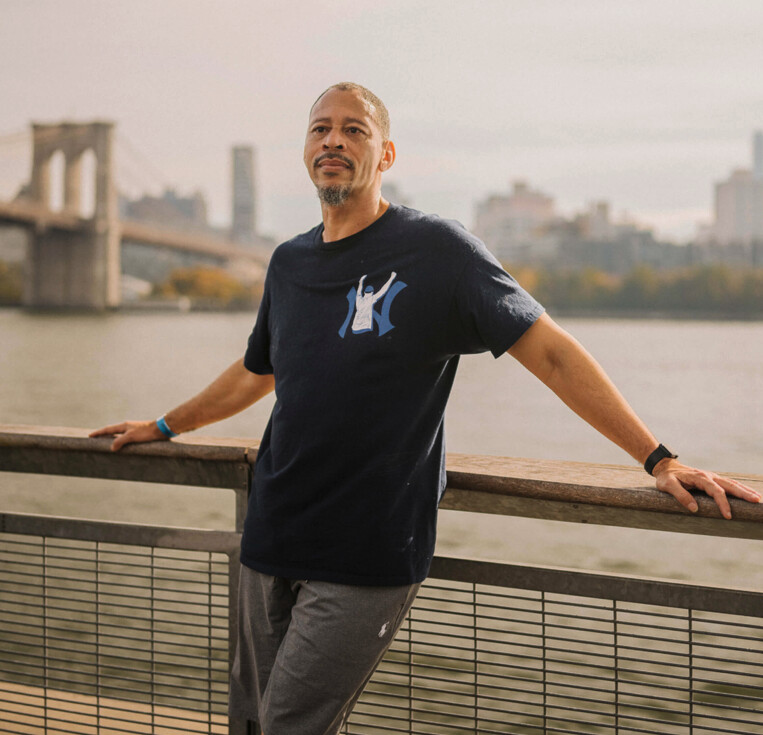
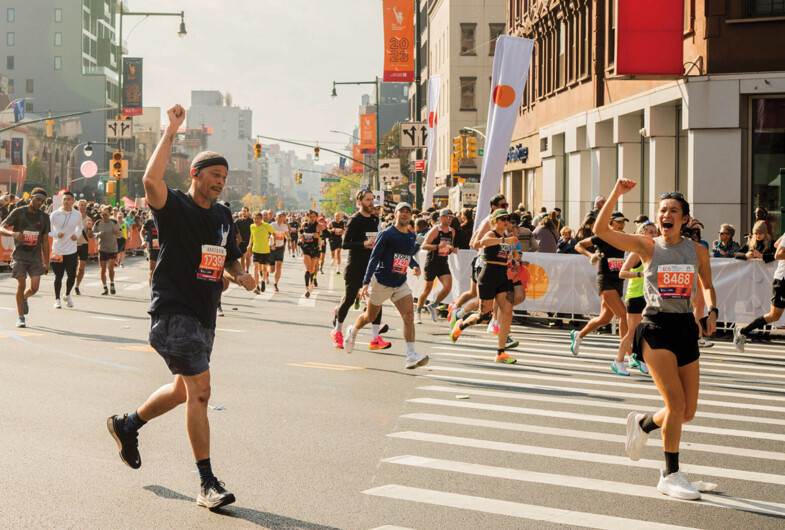
For Rahsaan and the other San Quentin runners, Mount Tam, as it’s known, had become a beacon of hope. It’s the site of the legendary Dipsea, a 7.4-mile technical trail from Mill Valley to Stinson Beach. After the 1,000 Mile Club was founded in 2005, it became tradition for club members who got released to run that trail; their stories soon became lore among the runners still inside. “I’ve been hearing about the Dipsea for the longest,” Rahsaan says.
Given his sentence, he never expected to run it. Rahsaan was serving 55 years to life for second-degree murder. Life outside, let alone running over Mount Tam all the way to the Pacific, felt like a million miles away. But Rahsaan loved to run—it gave him a sense of freedom within the prison walls, and more than that, it connected him to the community of the 1,000 Mile Club. So if the volunteer coaches and other runners wanted to talk about the Dipsea, he was happy to listen.
We’ll get to the details of Rahsaan’s crime later, but it’s useful to lead with some enduring truths: People can grow in even the harshest environments, and running, whether around a lake or a prison yard, has the power to change lives. In fact, Rahsaan made a lot of changes after he went to prison: He became a mentor to at-risk youth, began facing the reality of his violence, and discovered the power of education and his own pen. Along the way, Rahsaan also prayed for clemency. The odds were never in his favor.
To be clear, this is not a story about a wrongful conviction. Rahsaan took the life of another human being, and he’s spent more than two decades reckoning with that fact. He doesn’t expect forgiveness. Rather, it’s a story about a man who you could argue was set up to fail, and for more than 30 years that’s exactly what he did. But it’s also a story of navigating the delta between memory and fact and finding peace in the idea that sometimes the most formative things in our lives may not be exactly as they seem. And mostly, it’s a story of transformation—of learning to do good in a world that too often encourages the opposite.
RAHSAAN “NEW YORK” THOMAS GREW UP IN BROWNSVILLE, A ONE-SQUARE-MILE SECTION OF EASTERN Brooklyn wedged between Crown Heights and East New York. As a kid he’d spend hours on his Commodore 64 computer trying to code his own games. He loved riding his skateboard down the slope of his building’s courtyard. On weekends, he and his friends liked to play roller hockey there, using tree branches for sticks and a crushed soda can for a puck.
Once a working-class Jewish enclave, Brownsville started to change in the 1960s, when many white families relocated to the suburbs, Black families moved in, and city agencies began denying residents basic services like trash pickup and streetlight repairs. John Lindsay, New York’s mayor at the time, once referred to the area as “Bombsville” on account of all the burned-out buildings and rubble-filled empty lots. By 1971, the year after Rahsaan was born, four out of five families in Brownsville were on government assistance. More than 50 years later, Brownsville still has a poverty rate close to 30 percent. The neighborhood’s credo, “Never ran, never will,” is typically interpreted as a vow of resilience in the face of adversity. For some, like Rahsaan, it has always meant something else: Don’t back down.
The first time Rahsaan didn’t run, he was 5 or 6 years old. He had just moved into Atlantic Towers, a pair of 24-story buildings beset with rotting walls and exposed sewer pipes that housed more than 700 families. Three older kids welcomed him with their fists. Even if Rahsaan had tried to run, he wouldn’t have gotten far. At that age, Rahsaan was skinny, slow, and uncoordinated. He got picked on a lot. Worse, he was light-skinned and frequently taunted as “white boy.” The insult didn’t even make sense to Rahsaan, whose mother is Black and whose father was Puerto Rican. “I feel Black,” he says. “I don’t feel [like] anything else. I feel like myself.”
Rahsaan hated being called white. It was the mid-1970s; Roots had just aired on ABC, and Rahsaan associated being white with putting people in chains. Five-Percent Nation, a Black nationalist movement founded in Harlem, had risen to prominence and ascribed godlike status to Black men. Plus, all the best athletes were Black: Muhammad Ali. Reggie Jackson. Kareem Abdul-Jabbar. In Rahsaan’s world, somebody white was considered physically inferior.
Raised by his mother, Jacqueline, Rahsaan never really knew his father, Carlos, who spent much of Rahsaan’s childhood in prison. In 1974, Jacqueline had another son, Aikeem, with a different man, and raised her two boys as a single mom. Carlos also had another son, Carl, whom Rahsaan met only once, when Carl was a baby. Still, Rahsaan believed “the myth,” as he puts it now, that one day Carlos would return and relieve him, his mom, and Aikeem of the life they were living. Jacqueline had a bachelor’s degree in sociology and worked three jobs to keep her sons clothed and fed. She nurtured Rahsaan’s interest in computers and sent him to a parochial school that had a gifted program. Rahsaan describes his family as “upper-class poor.” They had more than a lot of families, but never enough to get out of Brownsville, away from the drugs and the violence.
Some traumas are small but are compounded by frequency and volume; others are isolated occurrences but so significant that they define a person for a lifetime. Rahsaan remembers his grandmother telling him that his father had been found dead in an alley, throat slashed, wallet missing. Rahsaan was 12 at the time, and he understood it to mean his father had been murdered for whatever cash he had on him—maybe $200, not even. Now he would never come home.
Rahsaan felt like something he didn’t even have had been taken from him. “It just made me different, like, angry,” he says. By the time he got to high school, Rahsaan resolved to never let anyone take anything from him or his family again. “I started feeling like, next time somebody tryin’ to rob me, I’m gonna stab him,” he says. He started carrying a knife, a razor, rug cutters—“all kinds of sharp stuff.” Rahsaan never instigated a fight, but he refused to back down when threatened or attacked. It was a matter of survival.
The first time Rahsaan picked up a gun, it was to avenge his brother. Aikeem, who was 14 at the time, had been shot in the leg by a guy in the neighborhood who was trying to rob him and Rahsaan. A few months later, Rahsaan saw the shooter on the street, ran to the apartment of a drug dealer he knew, and demanded a gun. Rahsaan, then 18, went back outside and fired three shots at the guy. Rahsaan was arrested and sent to Rikers Island, then released after three days: The guy he’d shot was wanted for several crimes and refused to testify against Rahsaan.
By day, Rahsaan tried to lead a straight life. He graduated from high school in 1988 and got a job taking reservations for Pan Am Airways. He lost the job after Flight 103 exploded in a terrorist bombing over Scotland that December, and the company downsized. Rahsaan got a new job in the mailroom at Debevoise & Plimpton, a white-shoe law firm in midtown Manhattan. He could type 70 words a minute and hoped to become a paralegal one day.
Rahsaan carried a gun to work because he’d been conditioned to expect the worst when he returned to Brownsville at night. “If you constantly being traumatized, you constantly feeling unsafe, it’s really hard to be in a good mind space and be a good person,” he says. “I mean, you have to be extraordinary.”
After high school, some of Rahsaan’s friends went to Old Westbury, a state university on Long Island with a rolling green campus. He would sometimes visit them, and at a Halloween party one night, he got into a scrape with some other guys and fired his gun. Rahsaan spent the next year awaiting trial in county jail, the following year at Cayuga State Prison in upstate New York, and another 22 months after that on work release, living in a halfway house in Queens. He got a job working the merch table for the Blue Man Group at Astor Place Theater, but the pay wasn’t enough to support the two kids he’d had not long after getting out of Cayuga.
He started selling a little crack around 1994, when he was 24. By 27 he was dealing full-time. He didn’t want to be a drug dealer, though. “I just felt desperate,” he says. Rahsaan had learned to cut hair in Cayuga, and he hoped to save enough money to open a barbershop.
He never got that opportunity. By the summer of 1999, things in New York had gotten too hot for Rahsaan and he fled to California. For the first time in his 28 years, Rahsaan Thomas was on the run.
EVERY RUNNER HAS AN ORIGIN STORY. SOME START IN SCHOOL, OTHERS TAKE UP RUNNING TO IMPROVE their health or beat addiction. Many stories share common themes, if not exact details. And some, like Rahsaan’s, are absolutely singular.
Rahsaan drove west with ambitions to break into the music business. He wanted to be a manager, maybe start his own label. His new girlfriend would join him a week later in La Jolla, where they’d found an apartment, so Rahsaan went first to Big Bear, a small town deep in the San Bernardino Mountains 100 miles east of Los Angeles. It’s where Ryan Hall grew up, and where he discovered running at age 13 by circling Big Bear Lake—15 miles—one afternoon on a whim. Hall has recounted that story so many times that it’s likely even better known than the American records he would go on to set in the half and full marathons.
Rahsaan didn’t know anything about Ryan Hall, who at the time was just about to start his junior year at Big Bear High School and begin a two-year reign as the California state cross-country champion. He didn’t even know there was a lake in Big Bear. Rahsaan went to Big Bear to box with a friend, Shannon Briggs, a two-time World Boxing Organization heavyweight champion.
Briggs and Rahsaan had grown up together in Atlantic Towers. As kids they liked to ride bikes in the courtyard, and later they went to the same high school in Fort Greene. But Briggs’s mom had become addicted to drugs by his sophomore year, and they were evicted from the Towers. Briggs and Rahsaan lost touch. Briggs began spending time at a boxing gym in East New York; often he’d sleep there. He had talent in the ring. People thought he might even be the next Mike Tyson, another native of Brownsville who was himself a world heavyweight champ from 1986 to 1989.
Briggs went pro in 1991, and by the end of that decade he was earning seven figures fighting guys like George Foreman and Lennox Lewis. Rahsaan was at those fights. The two had reconnected in 1996, when Rahsaan was trying to rebuild his life after prison and Briggs’s boxing career was on the rise. In August 1999, Briggs was gearing up to fight Francois Botha, a South African known as the White Buffalo, and had decamped to Big Bear to train. “He was like, ‘Yo, come live with me, bro,’” Rahsaan recalls.
Briggs was running three miles a day to increase his stamina. His route was a simple out-and-back on a wooded trail, and on one of Rahsaan’s first days there, he decided to join him. Rahsaan hadn’t done so much as a push-up since getting out of prison, but he wanted to hang with his friend. Briggs and his training partners set off at their usual clip; within a few minutes they’d disappeared from Rahsaan’s view. By the time they were doubling back, he’d barely made it a half mile.
Rahsaan never liked feeling physically inferior. So back in La Jolla, he started running a few times a week, going to the gym, whatever it took. Before long he was up to five miles. And the next time he ran with Briggs, he could keep up. After that, he says, “Running just became my thing.”
FOR YEARS, RAHSAAN HAD BUCKED AT TAKING RESPONSIBILITY for the murder that sent him to prison. The other guys had guns, too, he insisted. If he hadn’t shot them, they’d have shot him. It was self-defense.
In the moment, he had no reason to think otherwise. It was April 2000. A friend had arranged to sell $50,000 worth of weed, and Rahsaan went along to help. They met in the parking lot of a strip mall in L.A., broad daylight. The buyers brought guns instead of cash, things went sideways, and, in a flash of adrenaline, Rahsaan used the 9mm he’d packed for protection, killing one man and putting the other in critical condition. He was 29 and had been in California eight months.
After awaiting trial for three years in the L.A. County jails, Rahsaan was sentenced to 55 years to life. But for the crushing finality of it, the grim interminability, the prospect of never seeing the outside world again, he was on familiar ground. Even Brownsville had been a kind of prison—one defined, as Rahsaan puts it now, by division and neglect, a world unto itself that societal forces made nearly impossible to escape. He was used to life inside.
Rahsaan spent the next 10 years shuttling between maximum security facilities, the bulk of those years at Calipatria State Prison, 30 miles from the Mexican border. By the time he got to San Quentin, he was 42.
As part of the prison’s restorative justice program, Rahsaan met a mother of two young men who’d been shot, one killed and the other critically injured. Her pain, her dignity, her ability to forgive her sons’ shooters prompted Rahsann to reflect on his own crime. “It made me feel like, damn, I did this to his mother,” he says. “I did this to my mother. You don’t do that to Black mothers. They go through so much.”
ABOUT 2 MILLION PEOPLE ARE INCARCERATED IN THE UNITED States today, roughly eight times as many as in the early 1970s. Nearly half of them are Black, despite Black Americans representing only 13 percent of the U.S. population.
This disparity reflects what the legal scholar and author Michelle Alexander calls “the new Jim Crow,” an invisible system of oppression that has impeded Black men in particular since the days of slavery. In her book of the same title, Alexander unpacks 400 years of policies and social attitudes that have created a society in which one in three Black males will be incarcerated at some point in their lives, and where even those who have been paroled often face a lifetime of discrimination and disenfranchisement, like losing the right to vote. If you hit a wall every time you try to do something, are you really free? More than half of the people released from U.S. jails and prisons return within three years.
After Rahsaan got out of Cayuga back in 1992, with a felony on his permanent record, he’d had trouble doing just about anything legit: renting an apartment, finding a decent job, securing a loan. Though he’d paid for the Mercedes SUV he drove to California, the lease was in his girlfriend’s name. Selling crack had provided financial solvency, and his success in New York made him feel invincible. One weed deal in California seemed easy enough. But he wasn’t naive. Rahsaan packed a gun, and if he felt he had to use it, he would.
Today Rahsaan feels deep remorse for what transpired from there. But back then he saw no other way. “When we have a grievance, we hold court in the street,” he says of growing up in the Brownsville projects. “There’s no court of law, there’s no lawsuits.” Even while incarcerated, Rahsaan continued to meet threats with violence. But he also found that in prison, as in Brownsville, respect was temporary. “If you stab somebody, people leave you alone,” he says. “But you gotta keep doing it.”
Not long after Rahsaan got to Calipatria, around 2003 or 2004, an older man named Samir pulled him aside. “Youngster, there’s nobody that you can beat up that’s gonna get you out of prison,” Rahsaan remembers Samir saying. “In fact, that’s gonna make it worse.” Rahsaan thought about Muhammad Ali, how he would get his opponents angry on purpose so they’d swing until they wore themselves out. He realized that when you’re angry, you’re not thinking clearly or moving effectively. You’re not responding; you’re reacting.
The next time Rahsaan saw Samir was in the yard at Calipatria. They were both doing laps, and the two men started to run together. Rahsaan told Samir about the impact his words had on him, how they helped him see he’d always let “somebody else’s hangup become my hangup, somebody else’s trauma become my trauma.” Each time that happened, he realized, he slid backward.
Rahsaan began exploring various religions. He liked how the men in the Muslim prayer group at Calipatria encouraged him to think about his past, and the way they talked about God’s plan. He thought back to that day in April 2000 and came to believe that God would have gotten him out of that situation without a gun. “If I was meant to die, I was meant to die,” he says. “If I’m not, I’m not.” He started to see confrontations as tests. “I stopped feeding into the negativity and started passing the test, and I’ve been passing it consistently since,” he says.
CLAIRE GELBART PLACED HER BELONGINGS IN A PLASTIC TRAY AND WALKED THROUGH THE METAL detectors at the visitors’ entrance at San Quentin. She crossed the Yard to the prison’s newsroom. It was late fall of 2017, and Gelbart had started volunteering with the San Quentin Journalism Guild, an initiative to teach incarcerated people the fundamentals of newswriting and interviewing techniques.
Historically infamous for housing people like Charles Manson and Sirhan Sirhan, the man convicted of killing Robert Kennedy, and for having the only death row for men in California, San Quentin has in recent years instituted reforms. By the time Rahsaan arrived, the facility was offering dozens of programs, had an onsite college, and granted some of the individuals housed there considerable freedom of movement. Hundreds of volunteers pass through its gates every year.
Rahsaan was in the newsroom working on a story for the San Quentin News, where he was a staff writer. Gelbart and Rahsaan started to chat, and within minutes they were bonding over running. They talked about the San Quentin Marathon—in which Rahsaan was proud to have placed 13th out of 13 finishers in 6 hours, 12 minutes, and 23 seconds—and Gelbart’s plans to run her first half marathon that spring. “It was like I lost all sense of place and time,” Gelbart says, “like I could have been in a coffee shop in San Francisco talking to someone.”
In weekly visits over the next year, Gelbart and Rahsaan talked about their families, their hopes for the future. Gelbart had just graduated from Tufts University with dreams of being a writer. Rahsaan was working toward a college degree, writing for numerous outlets like the Marshall Project and Vice, and learning about podcasting and documentary filmmaking. In 2019, when Gelbart was offered a job in New York, she told Rahsaan she felt torn about leaving—they’d become close friends. They made a pact that if Rahsaan ever got out of prison, they would run the New York City Marathon together. “We couldn’t think of a better thing to celebrate him coming home,” Gelbart says.
When Rahsaan was sentenced, he still had hope for a successful appeal. But when his appeal was denied in 2011, he realized he was never going home. His parole date was set for 2085.
At the time, though, the political appetite for mass incarceration was starting to shift. Gray Davis, who was governor of California from 1999 to 2003, had never granted a single pardon; and his successor, Arnold Schwarzenegger, granted only 15. Then, between 2011 and 2019, Governor Jerry Brown pardoned or commuted the sentences of more than 1,300 people. Studies show that the recidivism rate among those who had been serving life sentences is less than 5 percent in a number of states, including California. And according to the U.S. Bureau of Justice, 98 percent of people convicted of homicide who are released from prison do not commit another murder.
In the fall of 2018, Governor Brown approved Rahsaan for commutation, but it was now up to his successor, Gavin Newsom, to follow through. And until a release date was set, there were no guarantees.
Back at San Quentin, Rahsaan was busier than ever. He was working on his fourth film, Friendly Signs, a documentary funded by the Marshall Project and the Sundance Institute; it was about fellow 1,000 Mile Club member Tommy Lee Wickerd’s efforts to start an ASL program to aid a group of deaf and hard-of-hearing newcomers to the prison. He had recently been named chair of the San Quentin satellite chapter of the Society of Professional Journalists and became a cohost and coproducer of Ear Hustle, a popular podcast about life in San Quentin that in 2020 was a finalist for a Pulitzer Prize. He was also sketching out plans for a nonprofit, Empowerment Ave, to build connections to the outside world for other incarcerated writers and artists and to advocate for fair compensation. And after five years, he was just one history class away from getting his associate’s degree from Mount Tamalpais College.
In January 2020, Rahsaan began his final semester, eager to don his cap and gown that June. MTC always organized a festive graduation ceremony in the prison’s visiting room, inviting families, friends, students, and staff. Then COVID-19 hit. Lockdown. All classes canceled until further notice. The 1,000 Mile Club suspended workouts and races as well, its 70-plus members scattering throughout the prison, not sure when or if they’d ever get together again. Covid would officially kill 28 people at San Quentin and make many more very ill. College graduation, let alone races in the Yard and parole hearings, would have to wait.
For the first time since arriving at San Quentin, Rahsaan felt claustrophobic in his 4-by-10-foot cell. He couldn’t work on his films or go to the newsroom. All he could do was read and write, alone. After George Floyd was murdered that May, Rahsaan fell into a depression. He remembered something Chadwick Boseman had said in a 2018 commencement speech at Howard University: “Remember, the struggles along the way shape you for your purpose.”
Rahsaan decided his purpose was to write. Outside journalists couldn’t enter the prison during the pandemic, but their publications were thirsty for prison Covid stories. Rahsaan saw an opportunity. Between June 2020 and February 2023, he published 42 articles, and thanks to Empowerment Ave, he knew what those articles were worth. As a writer for the San Quentin News, Rahsaan earned $36 a month; those 42 articles for external publications netted him $30,000.
DOZENS OF PEOPLE GATHERED OUTSIDE SAN QUENTIN’S GATES. IT WAS A FRIGID MORNING IN EARLY February 2023; the sun hadn’t yet risen. Among those assembled were two cofounders of Ear Hustle, Earlonne Woods and Nigel Poor, along with executive producer Bruce Wallace, recording equipment in hand. A procession of white vans, each carrying one or two men, arrived one by one. After three or four hours, the air had warmed to a balmy 60 degrees. Another van pulled up, Rahsaan got out, and the crowd erupted. Nearly 23 years after he’d been sentenced to 55 years to life, Rahsaan Thomas had been released.
Rahsaan got into a Hyundai sedan and was soon headed away from San Quentin. Wallace sat in the back, recording Rahsaan seeing water, mountains, and a highway from the front seat of a car for the first time in decades. “I feel like I’m escaping,” he joked. “Is anybody chasing us? This is amazing. This is crazy.”
Rahsaan called his mom, who wasn’t able to make it to California for his release.
“Hey, Ma, it’s really real,” he said, breathless with joy. “I’m free. No more handcuffs.”
Jacqueline’s exuberance can be heard in her laughter, her curiosity about what his first meal would be (steak and French toast), and her motherly rebuke of his plan to buy a Tesla.
“You ain’t been drivin’ in a while and I know you ain’t the best driver in the world,” she teased.
Rahsaan moved into a transitional house in Oakland and wasted no time adjusting to life in the 21st century. He got an iPhone, and a friend gave him a crash course in protecting himself from cyberattacks. He’s almost fallen for a few. “There’s some rough hoods on the internet,” he jokes. Earlonne Woods, who was paroled in 2018, and others taught Rahsaan how to use social media. He opened Instagram and Facebook accounts and worked on his own website, rahsaannewyorkthomas.com, which a friend had built for him while he was in San Quentin to promote his creative projects, Empowerment Ave, and even a line of merch.
Despite all the excitement and chaos, Rahsaan never forgot about the pact he’d made with Claire Gelbart. He found her on Facebook and sent a simple, two-line message: “Start training. We have a marathon to run.”
IN LATE MARCH, SIX WEEKS AFTER HIS RELEASE, RAHSAAN FLEW TO NEW YORK CITY. IT WAS THE FIRST time he’d been home in nearly a quarter century, and he hadn’t flown since before 9/11. The security protocols at SFO reminded him more of prison than of the last time he’d been in an airport. Actually, “it was worse than prison,” he jokes. They confiscated his jar of honey.
The changes to his home borough were no less surprising. He’d come to New York to take work meetings, see family, and catch a Nets game at Barclays Center in downtown Brooklyn. Rahsaan barely recognized Barclays; it had been a U-Haul lot the last time he was there, and skyscrapers now towered over Fulton Mall, where he used to buy Starter jackets at Dr. Jay’s and Big Daddy Kane tapes at the Wiz.
He met up with Gelbart on Flatbush Avenue, where come November they’d be just hitting mile 8 of the New York City Marathon. They hadn’t been allowed to touch at San Quentin and weren’t sure how to greet each other on the outside. “It was weird at first, because I was like, do we hug?” Gelbart recalls. But the awkwardness faded fast, and as they walked, Gelbart saw a different side of Rahsaan. “He seemed so much more relaxed,” she says. “Much happier, much lighter.”
Back in 1985, just a few blocks from where Rahsaan and Gelbart walked now, Rahsaan, his brother Aikeem, and his friend Troy had been on their way home from the Fulton Mall when out of nowhere, about a dozen guys rolled up on them. They started beating on Troy and, for a minute, left Rahsaan and Aikeem alone. Images of his father, throat slashed, flashed through Rahsaan’s mind. He pulled a rug cutter out of his pocket, ran to the smallest guy in the group, and jabbed it into the back of his head. “They looked at me like they were gonna kill me,” Rahsaan says. He threw the blade to the ground, slid his hand inside his coat, and held it there. “Y’all wanna play? We gonna play,” he said. The bluff worked; the guys ran. It was the first time Rahsaan had ever stabbed someone.
Change sometimes occurs gradually, and then all at once. That was a different Brooklyn, a different Rahsaan. He began to confront his own violence when he had met Samir some 20 years before, and continued to do so through his studies, his faith, his work in restorative justice, and his own writing. But the origin of his tendency toward violence, the death of his father, remained firmly rooted in his psyche. Then, in 2017, Rahsaan spoke for the first time with his estranged half-brother, Carl.
Carl had read Rahsaan’s work, and asked why he always said their father had been murdered.
“That’s what grandma told me,” Rahsaan said.
“But he wasn’t murdered,” Carl told him. “He killed himself.”
And it wasn’t in 1982, as Rahsaan remembered, but in 1985—the same year Rahsaan started carrying blades.
Rahsaan didn’t believe it until Carl sent him a copy of the suicide note. Even then he remained in shock. “To think I justified violence, treating robbery like a life-or-death situation, over a lie,” he says. Jacqueline was as surprised as Rahsaan to learn the truth of Carlos’s death. He never seemed troubled or depressed to her when they were together, but, “You can’t really read people,” she says. “You don’t know.”
Rahsaan still can’t account for why his grandmother told him what she did, nor for the discrepancy between his memory and the facts. Regardless, after more than 30 years, Rahsaan was finally able to let go of the one trauma that had calcified into an instinct to kill or be killed. And he has no intention of dredging it back up.
THE FASTEST RUNNER IN THE 1,000 MILE CLUB’S HISTORY IS MARKELLE “THE GAZELLE” TAYLOR, WHO was paroled in 2019 and went on to run 2:52 in the 2022 Boston Marathon. Rahsaan is the slowest. At San Quentin, he was often the last one to finish a race, but that wasn’t the point—he liked being out in the Yard with the guys. It gave him a sense of belonging, and not just to the 1,000 Mile Club, but to the running community beyond.
Like every other 1,000 Miler who gets released from San Quentin, Rahsaan had a rite of passage to conquer. On Sunday morning, May 7, 2023, he met a handful of other runners from the club and a few volunteer coaches in Mill Valley. After a decade of gazing up at Mount Tam from the Yard as he completed one 400-meter loop after another, Rahsaan was finally about to run over the mountain all the way to the Pacific.
The runners did a few final stretches, wished one another luck, and started to run. Almost immediately they had to climb some 700 stairs, many made of stone, and the course only got more treacherous from there. Uneven footing, singletrack paths, and 2,000-plus feet of elevation all conspire to make the Dipsea notoriously difficult. The giant redwoods and Douglas firs along the course were lost on Rahsaan; he never took his eyes off the ground.
One of the coaches, Jim Maloney, stayed with Rahsaan as his guide, and to help him if he slipped or fell. Markelle Taylor came too, but said he’d meet them in Stinson Beach. He knew how dangerous the trail was, Rahsaan says, and had vowed to never run it again. After his own initiation, Rahsaan decided that he, too, would never do it again. “I’ve been shot at,” he says. “I’ve been in physical danger. I don’t want to revisit danger.”
Rahsaan now logs most of his miles on a treadmill because of knee issues, but on occasion he ventures out to do the 3.4-mile loop around Lake Merritt, a lagoon in the heart of Oakland. He decided to use the New York City Marathon to raise money for Empowerment Ave, and to accept donations until he crossed the finish line in Central Park. Gelbart wrote a training plan for him and got him a new pair of shoes. In prison, Rahsaan had run in the same pair of Adidas for three years, and he was excited to learn about the maximalist shoe movement. Gelbart tried to interest him in Hokas, but Rahsaan thought they were ugly. He wanted Nikes.
In June, Gelbart went to the Bay Area to visit family and met Rahsaan for a six-mile run around Lake Merritt. As they looped the lake at a conversational 11:30 pace, they talked about work, relationships, and, of course, the New York City Marathon. Rahsaan was disappointed to learn that he would probably not be the last person to finish. (He still holds the record for the slowest San Quentin Marathon in its 15-year history, and he hopes no one ever beats it.) Besides, the more time he spent on the course in New York, he figured, the longer people would have to donate to Empowerment Ave.
On Sunday, November 5, Gelbart and Rahsaan made their way to Staten Island. Waiting at the base of the Verrazzano Bridge, Gelbart recorded Rahsaan singing along to Frank Sinatra’s “New York, New York” for Instagram, and captioned the video “back where he belongs.” They documented much of their race as they floated through Brooklyn, Queens, Manhattan, and the Bronx: greeting friends along the course, enjoying a lollipop on the Queensboro Bridge, beaming even as their pace slowed from 11:45 per mile for the first 5K to 16:30 for the last. Rahsaan finished in six hours, 26 minutes, and 21 seconds, placing 48,221 out of 51,290 runners. The next day, he sent me a text: “The marathon was pure love.” What’s more, he received more than $15,000 in donations for Empowerment Ave, enough to start a writing program at a women’s prison in Texas.
Every runner has an origin story. Every runner finds a reason to keep going. At Calipatria, Rahsaan liked to joke that he ran because if an earthquake ever came along and brought down the prison’s walls, he needed to be in shape so he could escape and run to Mexico. In San Quentin, he ran for the community. Today he has a new reason. “I heard that running extends your life by 10 years,” he says, “and I gave away 22.” Now that he’s out, his motivation has never been higher. He has so much to do.
Login to leave a comment
New York Mini 10k 2024: Senbere Teferi wins third consecutive race
Senbere Teferi, a two-time Olympian and two-time World Championships medalist from Ethiopia, won her third consecutive Mastercard New York Mini 10K in a time of 30:47, just shy of the record she set in 2023 with a time of 30:12.
ABC 7 New York provided live streaming coverage of the New York Road Runners' Mini 10K race in Central Park with more than 9,000 runners expected this year.
Teferi also won 2019 UAE Healthy Kidney 10K in New York and the 2022 United Airlines NYC Half, which was the second-fastest time in the history of the event.
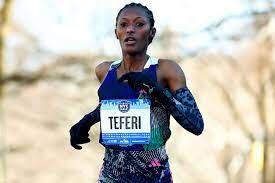
"It is such a special race because there is a bond that exists with thousands of women also running. Even though we are not related, I feel supported like we are all sisters in running," Teferi said prior to today's race.
2022 TCS New York City Marathon champion Sharon Lokedi finished second with a time of 31:04.

Lokedi was also the runner-up at both the 2022 Mastercard New York Mini 10K and the 2024 Boston Marathon.
"Although I have only run the Mini once before, I felt embraced by the many thousands of women who ran the race before me, and hope to inspire the many thousands more who will come after me," Lokedi said prior to today's race. "It's an awesome thing, how women from so many different places and life experiences can come and feel connected to each other through the simple act of running a loop in Central Park."
Sheila Chepkirui finished third (31:09) while American Amanda Vestri finished fourth (31:17).
The 2024 Mastercard New York Mini 10K will feature four past champions, five Paris 2024 Olympians, and seven of the top 10 finishers from the 2024 U.S. Olympic Marathon Trials.
The 52nd running of the event also featured members of 2024 U.S. Olympic Women's Marathon Team - Fiona O'Keeffe, Emily Sisson, and Dakotah Lindwurm.
New York Road Runners started the Mini 10K in 1972 as the first women-only road race, known then as the Crazylegs Mini Marathon. Seventy-two women finished the first race, and three weeks later Title IX was signed into law, guaranteeing girls and women the right to participate in school sports and creating new opportunities for generations of female athletes.
The Mastercard New York Mini 10K is now one of nonprofit NYRR's 60 adult and youth races annually and has garnered more than 200,000 total finishers to date.
The 2024 Mastercard New York Mini 10K offered $39,500 in total prize money, including $10,000 to the winner of the open division. Mastercard served as title sponsor of the event for the fourth year, and as part of its ongoing partnership with NYRR will also serve as the presenting sponsor of professional women's athlete field.
Eyewitness News provided live updates from the race and streamed the event live on abc7NY. An all-women team of WABC sports anchor Sam Ryan and meteorologist Dani Beckstrom, along with U.S. Olympian Carrie Tollefson, host of the Ali on the Run Show podcast Ali Feller, and running advocate Jacqui Moore anchored the coverage.
Login to leave a comment
New York Mini 10K
Join us for the NYRR New York Mini 10K, a race just for women. This race was made for you! It’s the world’s original women-only road race, founded in 1972 and named for the miniskirt, and it empowers women of all ages and fitness levels to be active and to look and feel great on the run. Every woman who...
more...Lokedi, Kiplagat and Chepkirui Headline New York Mini 10K Run
Three Kenyans headlined by Boston Marathon second finisher Sharon Lokedi are among the top athletes entered for the 2024 New York Mini 10K set for Saturday, June 8.
Veteran and consistent Edna Kiplagat as well as Sheila Chepkirui, who finished second at the 2023 Berlin Marathon.

The race also features four past champions, five Paris 2024 Olympians, and seven of the top 10 finishers from the 2024 U.S. Olympic Marathon Trials.
Produced by the New York City-based nonprofit for more than five decades, the 52nd running of the event will also be competed by event-record holder and two-time race champion Senbere Teferi and two-time race champion Sara Hall, who will join the previously announced 2024 U.S. Olympic Women’s Marathon Team – Fiona O’Keeffe, Emily Sisson, and Dakotah Lindwurm – at the start line in Central Park.
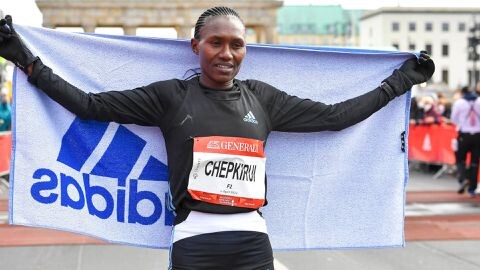
Teferi, a two-time Olympian and two-time World Championships medalist from Ethiopia, has won the last two editions of the New York Mini 10K, breaking the event record in 2023 with a time of 30:12.
Also, in New York, she won 2019 UAE Healthy Kidney 10K and in her 2022 United Airlines NYC Half victory recorded the second-fastest time in the history of the event.
“I’m very happy to return to New York for the Mini, and I will try my best to win the race for a third time,” Teferi said. “It is such a special race because there is a bond that exists with thousands of women also running. Even though we are not related, I feel supported like we are all sisters in running.”
Hall is a 10-time U.S. national champion who won the New York Mini 10K in 2021 and 2022. Earlier this year, she finished fifth at the U.S. Olympic Marathon Trials. She is also the former national record-holder in the half marathon and the only athlete in history to have won the New York Mini 10K, New Balance 5th Avenue Mile, and Abbott Dash to the Finish Line 5K in New York.
“It’s very cool that this year’s New York Mini 10K falls on the fifth anniversary of my first win at the race, and I can’t think of any place I’d rather be that weekend,” said Hall.
by Capital Sport
Login to leave a comment
New York Mini 10K
Join us for the NYRR New York Mini 10K, a race just for women. This race was made for you! It’s the world’s original women-only road race, founded in 1972 and named for the miniskirt, and it empowers women of all ages and fitness levels to be active and to look and feel great on the run. Every woman who...
more...Joggling inventor dies at 72
Bill Giduz was, by all accounts, kind, generous and funny person who inspired hundreds of people to take up the sport of juggling while running.
on May 11, Bill Giduz, credited for inventing the sport of joggling, died at age 72 of complications from Parkinson’s disease. Giduz achieved legendary status within the tight-knit joggling community, with jogglers from around the world expressing their condolences on the Jogglers United Facebook group.
The family’s obituary includes some amazing details from Giduz’s life, which he clearly lived to the fullest. The genius of combining juggling with running and naming it “joggling” is but one tiny blip in his long list of achievements, adventures and community-building work. Hilariously, according to the obituary, Giduz used to literally juggle his kids: “His love of juggling carried over to his family. His children remember being his “juggling props,” his son, Luke, said. “He used to juggle us as babies along with two balls,” added his daughter, Jenny.
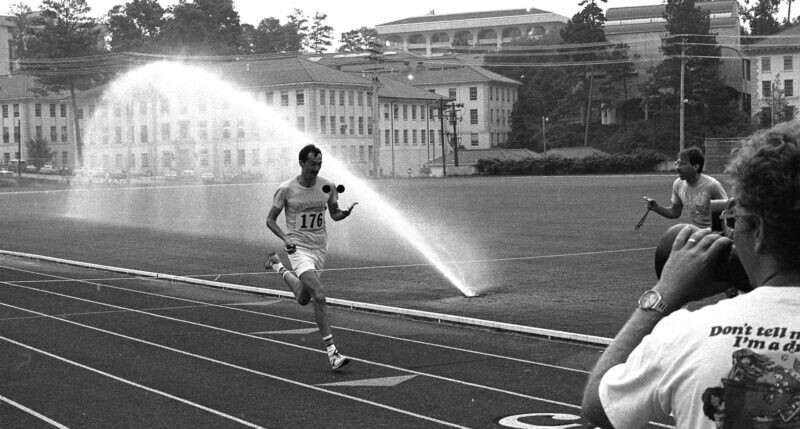
Giduz invented joggling by accident in 1975, according to a 2015 Huffington Post story on the history of the sport, when he brought his juggling balls to the North Carolina State University track to work on some juggling tricks after a running workout.
“That day, he started jogging as he juggled, and discovered something amazing: the pace of a three-ball juggling pattern easily matches with a wide range of running cadences,” author Kevin Bell wrote. “In other words, every throw coincides with the natural motion of the arms. Bill realized that the motions complemented one another beautifully, and he called it ‘joggling’ almost immediately.”
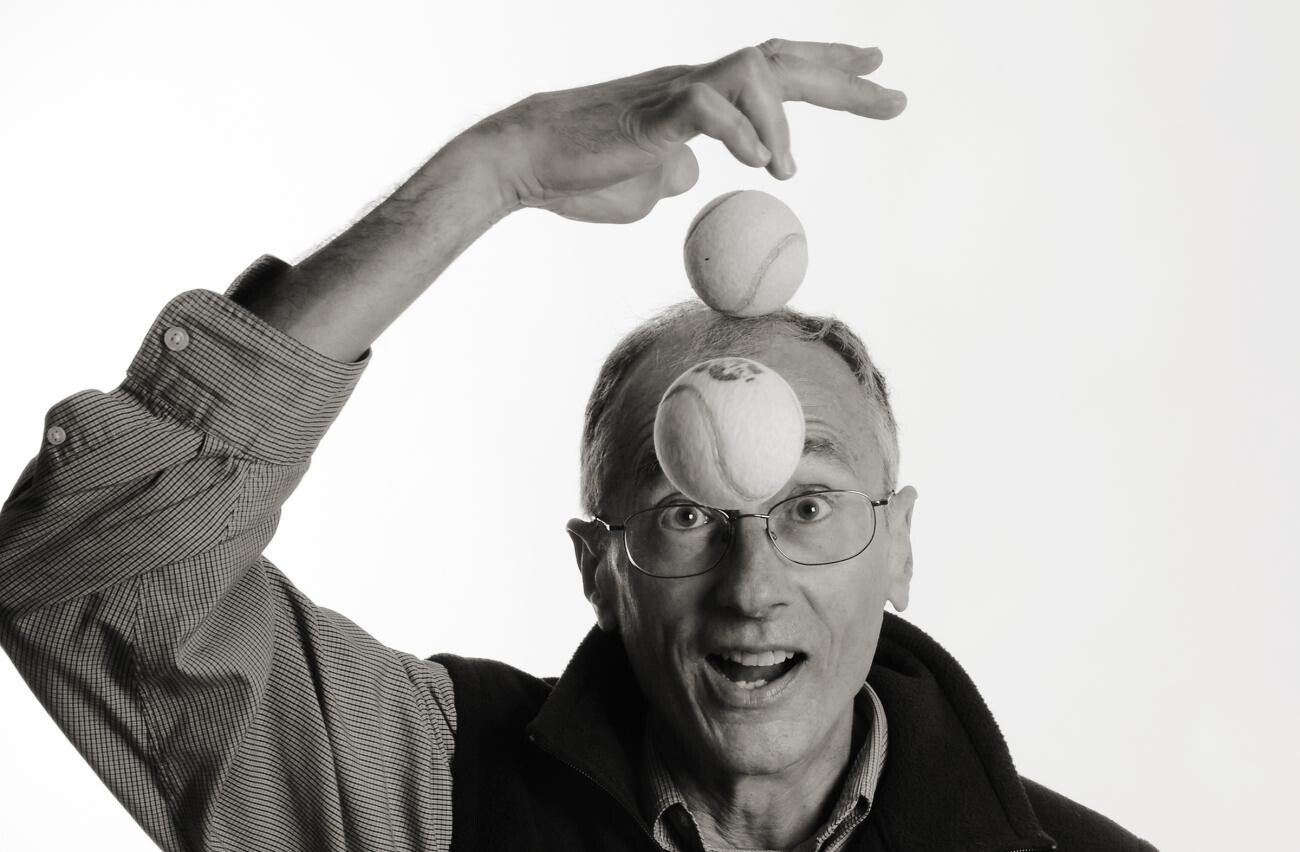
Four years later, Giduz, a Columbia journalism grad, became the editor of the International Jugglers’ Association (IJA) newsletter and began writing a column about joggling called Joggler’s Jottings. I discovered some of these columns online when I first began joggling in 2005, and was amazed learn the history of the sport, and that the guy who came up with the idea was still around. It’s like if you were a basketball fan and James Naismith were writing about the NBA.
In one of the Joggler’s Jottings columns, Giduz included some quotes from the late New York City Marathon race director, Fred Lebow, a joggling fan and a joggler himself:
“Lebow first heard of joggling from Billy Gillen, a Brooklyn resident now well known for his five-ball joggles around Central Park,” Giduz wrote. “However, Lebow only took it seriously after watching Albert Lucas joggle the Los Angeles Marathon last spring.”
“Lebow immediately recognized a combination of beauty and athletic benefit. ‘The normal person can’t believe someone can juggle and run that fast at the same time,’ he said. ‘I figured if Lucas could do a marathon juggling, I should be able to do it standing still.'”
“So Lebow set out to learn, and found it surprisingly easy to master the cascade. He began using one-pound Exerballs to build upper body strength. And now that he can juggle standing still, Lebow wants to begin joggling.”
“Bigger than his personal discovery of joggling, however, is his decision to allow Lucas and Gillen to joggle in the upcoming New York Marathon. ‘I see joggling as only positive,’ Lebow said. ‘Normally I might not allow it in a race, because some people might think it interferes with runners. However, these two people are experienced. We’ll play it by ear and see how it develops. We don’t have a joggling division yet, but you never know what can happen.'”
A quote from this column appeared in the New York Times story by Lindsay Crouse in 2015 about the New York City Marathon banning me from joggling the race on a security technicality.
U.K.-based data scientist and joggler Scott Jenkins recently brought back the Joggler’s Jottings column to complement his database of joggling results that he’s compiled with fellow U.K. joggler Chris Edwin. Jenkins was hoping to get in touch with Giduz to let him know that the Jottings column had been re-joggled and asked me if I had any contact info for him. I found Giduz’s email from the News of Davidson site where he worked, but, unfortunately, he was likely too sick by the time Jenkins tried to reach him. I was really hoping to one day meet Giduz, or at least exchange an email or two, but was very touched that his son Luke took the time to reach out to me on Instagram.
Although I never met him, by all accounts, including this wonderful obituary for the IJA by juggling historian David Cain, Giduz was a kind, generous and funny person. I know for sure that he has not only inspired hundreds of people to take up joggling, but has also brought joy to millions of spectators of the sport, through smiles, laughs, ooohs and aaahs from all the people who’ve watched others joggling since that day Giduz decided to take his juggling balls to track practice almost 50 years ago. Thank you, Bill.
by Michal Kapral
Login to leave a comment
Fiona O’Keeffe, Emily Sisson, and Dakotah Lindwurm to headline New York Mini 10K
Fiona O’Keeffe, Emily Sisson, and Dakotah Lindwurm to headline world’s original women-only road race, which has garnered more than 200,000 finishers since 1972.
New York Road Runners (NYRR) has recruited the 2024 U.S. Olympic Women’s Marathon Team – Fiona O’Keeffe, Emily Sisson, and Dakotah Lindwurm – to headline its Mastercard® New York Mini 10K taking place Saturday, June 8 in Central Park.
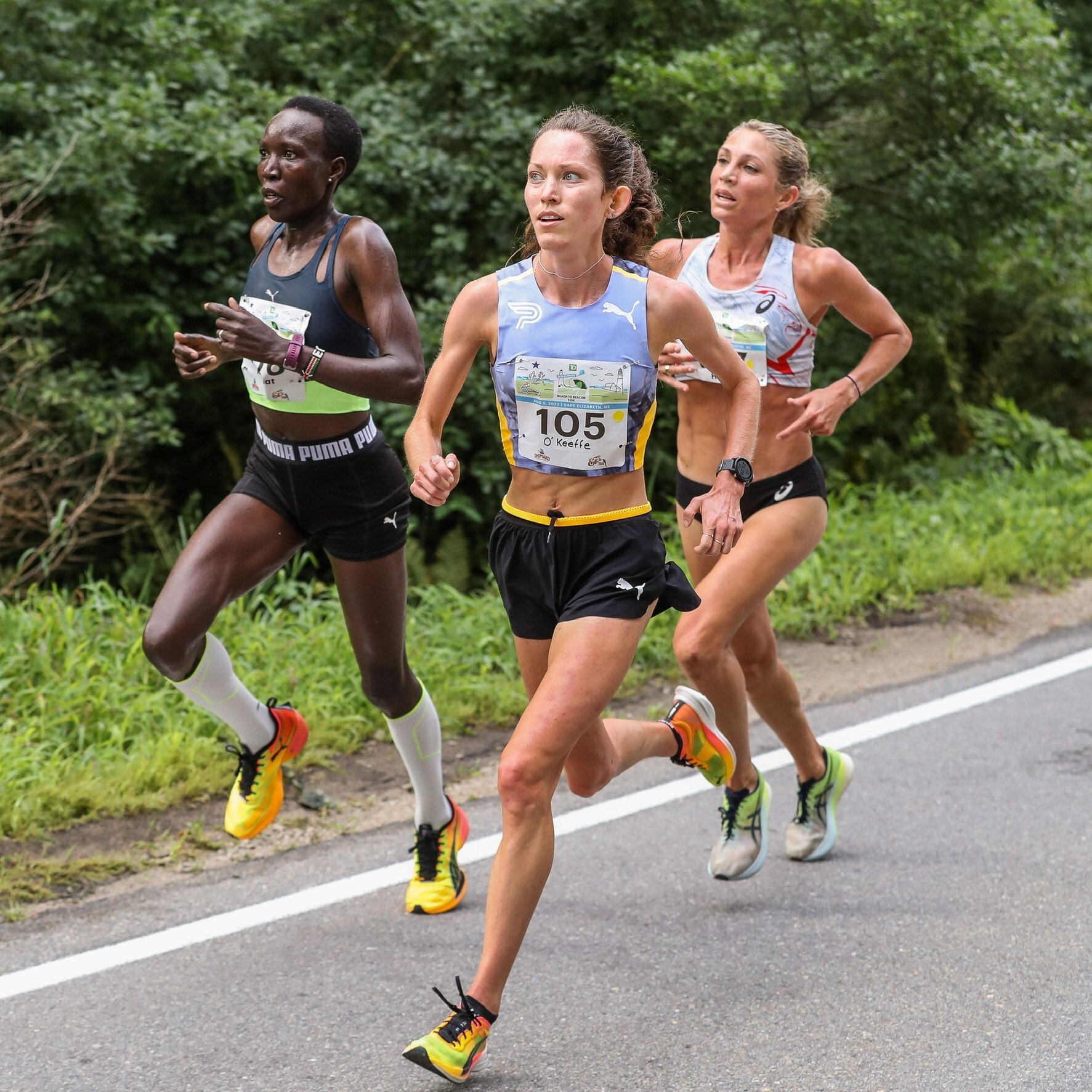
O’Keeffe won the 2024 U.S. Olympic Marathon Trials in February with an event record in her 26.2-mile debut and will now make her NYRR race debut. O’Keeffe joined the professional ranks in 2021 after a decorated career at Stanford University, where she was a six-time NCAA All-American.
“I’m excited to step to the line of my first road race since the U.S. Olympic Marathon Trials at the Mastercard New York Mini 10K on June 8,” O’Keeffe said. “It’s my first time running the Mini and I’m looking forward to running alongside a great group of women, some of whom I’ll be seeing in Paris later this summer.”

Sisson, the American record-holder in the marathon, finished runner-up at the U.S. Olympic Marathon Trials to qualify for her second Olympics and first in the 26.2-mile distance. She is a six-time national champion and has been successful in New York, finishing as runner-up at the United Airlines NYC Half twice and winning the USATF 5K Championships. Sisson was fourth at last year’s Mastercard® New York Mini 10K.
“The Mastercard New York Mini 10K is one of those special races that I always have circled on my calendar,” Sisson said. “Although my summer will look a little different this year with a marathon in Paris in August, I wouldn’t miss the chance to race with New York Road Runners in Central Park with my Olympic teammates and thousands of women from around the globe.”
Lindwurm finished third at the U.S. Olympic Marathon Trials and first gained notoriety after winning back-to-back titles at the Grandma’s Marathon in 2021 and 2022. Her highest finish at an NYRR race previously was sixth place at the 2023 United Airlines NYC Half.
“I’m really excited to join my Olympic teammates Fiona and Emily for the Mastercard New York Mini 10K,” Lindwurm said. “I’ve heard great things about the Mini my entire career, but it’s never quite worked with my racing and training schedule. This year, it works as a great step toward the starting line in Paris.”
New York Road Runners started the Mini 10K in 1972 as the first women-only road race, known then as the Crazylegs Mini Marathon. Seventy-two women finished the first race, and three weeks later Title IX was signed into law, guaranteeing girls and women the right to participate in school sports and creating new opportunities for generations of female athletes.
The Mastercard® New York Mini 10K is now one of non-profit NYRR’s 60 adult and youth races annually and has garnered more than 200,000 total finishers to date.
The 2024 Mastercard® New York Mini 10K will offer $39,500 in total prize money, including $10,000 to the winner of the open division.
Mastercard® will serve as title sponsor of the event for the fourth year, and as part of its ongoing partnership with NYRR will also serve as the presenting sponsor of professional women’s athlete field.
The event will be covered locally in the tri-state area by ABC New York, Channel 7 with live news cut-ins. The professional race will be covered by a livestream, distributed by ESPN+, abc7ny.com, and NYRR’s digital channels beginning at 7:40 a.m. ET.
The full professional athlete field for the Mastercard® New York Mini 10K will be announced later this month.
by Running USA
Login to leave a comment
New York Mini 10K
Join us for the NYRR New York Mini 10K, a race just for women. This race was made for you! It’s the world’s original women-only road race, founded in 1972 and named for the miniskirt, and it empowers women of all ages and fitness levels to be active and to look and feel great on the run. Every woman who...
more...Grovdal, Kipchumba Take Victories At United Airlines NYC Half
Norway’s Karoline Bjerkeli Grøvdal and Kenya’s Abel Kipchumba won this morning’s hilly and chilly United Airlines NYC Half in 1:09:09 and 1:00:25, respectively. Grøvdal, 33, a three-time European Athletics cross country champion, became the first European woman to win the race since Britain’s Mara Yamauchi in 2010.
Kipchumba, 30, last November’s B.A.A. Half-Marathon champion in Boston, was the race’s ninth Kenyan male champion over its 17-year history. Both athletes won $20,000 in prize money.
The two dozen women in the elite field were in no hurry to establish a fast pace when the race set off from Prospect Park in Brooklyn just after sunrise. Calli Thackery of Great Britain, recently named to her country’s Olympic Marathon team, was the early leader and a pack of seven went through the 5-K checkpoint in a gentle 17:07. Grøvdal was in that pack along with Kenya’s Gladys Chepkurui, Edna Kiplagat and Cynthia Limo; the Netherlands’ Diane Van Es; and Switzerland’s Fabienne Schlumpf. The two top Americans, Des Linden and Jenny Simpson, were five seconds back.

The next five kilometers would be critical. As the leaders ascended the Manhattan Bridge to cross the East River, the pace became too difficult for Thackery, Van Es and Schlumpf who all slid back. At the 10-K mark on the Manhattan side (33:26) the race was down to four: Grøvdal, Chepkurui, Kiplagat, and Limo.
Limo, the reigning Honolulu Marathon champion, was next to lose contact after Chepkurui pushed the pace up the FDR Drive along the East River. By 15-K, Limo was nearly 20 seconds behind and would finish a distant fourth in 1:11:54.
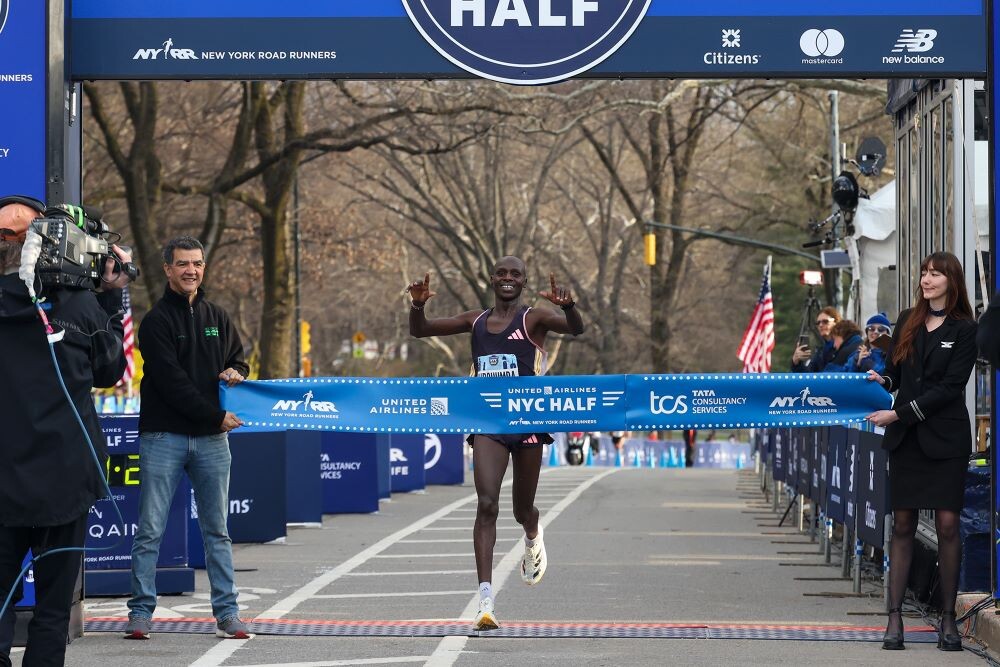
Grøvdal Comes Back
But Grøvdal was also hurting. In the tenth mile (17th kilometer) as the race went up Seventh Avenue past Times Square, Grøvdal began to lose contact with Chepkurui and Kiplagat. It looked like she would finish third for the third year in a row.
“I was so tired then,” Grøvdal told reporters. “Just thinking, it’s third this year also. But then, I don’t know. I just tried to don’t get the gap too big. Suddenly, I was just behind them again.”
The final seven kilometers of this race are particularly tough. The race climbs about 30 meters from 15-K to the finish, and the finish straight itself is uphill. Grøvdal knew the course well and was ready.
“Then something in me just, OK, now it’s the finish,” Grøvdal explained. “It’s 3-K left, so I was planning to have a strong finish the last 2-K and I did that.” She added: “I just went for it.”
The men’s race began much more aggressively than the women’s. By the 5-K mark (14:23) Kipchumba and Morocco’s Zouhair Talbi had already reduced the lead pack to four. Along for the ride were two Olympic steeplechasers, American Hillary Bor and Eritrean Yemane Haileselassie. The four stayed together through 10-K (28:38), but then Kipchumba and Talbi began to trade surges. That kind of racing was too punishing for Haileselassie, who drifted off the pace. Bor, running in just his first half-marathon, hung on.
“I wanted a fast race and I think the same for him,” said Talbi, who is observing Ramadan and had to fast in the days leading up to today’s race. “He (Kipchumba) wanted to push… so both of us keep pushing from the start. I pushed until the end, basically.”
By 15-K (42:54) Bor was 12 seconds back and Haileselassie was 32 seconds in arrears. It would be either the Kenyan or the Moroccan who would take the victory today. Kipchumba was determined and recognized Talbi as a formidable opponent.
“Today was not easy,” Kipchumba told Race Results Weekly. “The guy was strong.”
Kipchumba finally shook off Talbi in the race’s final stages, leading by 10 seconds at 20-K (57:18) and, ultimately, 17 seconds at the finish. His time of 1:00:25 was the fastest since 2017 when the race was held on a different –and much easier– course from Central Park to lower Manhattan.
“I tried my best; I won the race,” Kipchumba said. “(With) three kilometers remaining I said it’s time to win.”
Talbi was second in 1:00:41, and Haileselassie passed Bor in the final kilometer to take third in 1:01:37 to Bor’s 1:01:47. Another American, Reed Fischer, rounded out the top 5 in 1:03:06.
by David Monti
Login to leave a comment
United Airlines NYC Half-Marathon
The United Airlines NYC Half takes runners from around the city and the globe on a 13.1-mile tour of NYC. Led by a talent-packed roster of American and international elites, runners will stop traffic in the Big Apple this March! Runners will begin their journey on Prospect Park’s Center Drive before taking the race onto Brooklyn’s streets. For the third...
more...Jenny Simpson Targets NYC Half
For the first time in her running career, Jenny Simpson faced a decision that she’d never considered in a race. At mile 18 of the 2024 U.S. Olympic Marathon Trials, her debut at the distance, the most decorated U.S. 1500-meter runner in history made the difficult choice to drop out of the competition on February 3.
The marathon leaves runners vulnerable to a number of challenges—nutrition issues, tough terrain, the rigors of high mileage—which can derail even the most experienced runners on a bad day. When Simpson, 37, started cramping with 16 miles left in the race, the setback shocked her. After spending months transforming her body from an explosive middle-distance runner to a long-distance athlete on the roads, Simpson felt ready to take on 26.2, which made the race in Orlando, Florida, all the more confusing.
“One of the beautiful things about running is that so often what you put in is what you get out, but the [Olympic Marathon Trials] wasn’t that way at all,” Simpson told Runner's World.

After the race, Simpson took time to reflect. For two days, the three-time Olympian relaxed with her family in Oviedo, Florida, her hometown located just outside Orlando. In between playing with her nieces and enjoying home-cooked meals, she expected to feel sad following the race. But to her surprise, that feeling never came. Instead, Simpson felt motivated to find another opportunity to show her fitness.
While riding in an Uber on the way home from the Denver airport to her house in Marshall, Colorado, Simpson sent a text message to a contact at the New York Road Runners (NYRR), asking if there were any spots available to race the NYC Half. The event in New York City on March 17, one of 60 adult and youth races organized by NYRR throughout the year, will include Simpson in her third half marathon.

Coming out of a tough few years of personal and professional hardships, Simpson has a new perspective on disappointment. For her, the Olympic Trials is just another exercise in the importance of having faith in the process and her ability to bounce back.
“The race didn’t turn out the way I wanted, but I still believe in myself,” Simpson said. “I’m up at the plate, gripping the bat and I swung once, totally missed, but I’m gonna swing again because I believe I’m ready for it.”
Marathon metamorphosis
After spending well over a decade dominating American middle-distance running and collecting medals on the global stage—including world championship gold (2011), two silver medals (2013 and 2017), and Olympic bronze at the 2016 Rio Games—Simpson’s streak of making U.S. teams ended during the pandemic. In 2021, she made the finals of the 1500 meters at the Olympic Trials, but she finished 10th.
That fall, she started to transition to the roads with her first 10-mile race. But at the end of 2021, her life was upended by injury, the conclusion of a longtime sponsorship with New Balance, and a devastating wildfire that she and her husband, Jason, narrowly escaped on December 30, 2021. While their home was spared, most of their neighbors’ houses were destroyed. For three months, the couple was displaced while damage was repaired.
By the spring of 2022, things started to turn around for Simpson. Her sports hernia was healing, she and her husband returned to their home, and she was in conversations with shoe companies. That fall, she signed with Puma and shared her intent to focus on the roads.
In January 2023, she made her debut in the half marathon with a 1:10:35 in Houston. That summer, she announced her plans to race the U.S. Olympic Marathon Trials, her first 26.2.
In collaboration with her longtime coaches, Mark Wetmore and Heather Burroughs, Simpson threw herself into the event. She built up to 100-mile weeks during the training cycle, worked with a nutritionist on mid-race fueling, and spent three weeks in Orlando acclimating to the heat in preparation for the championship.
Lessons learned
On race day, Simpson started out at a pace that felt manageable (she ran between 5:23 and 5:38 per mile through the first 10), resisting the urge to go with the blazing pace set by the leaders. Just past halfway, Simpson got a side stitch, and then she started cramping, first in her toes and then in her calf and hips. “Over the course of a few miles, I went from being able to race, to feeling like I was in trouble being able to move through my normal range of motion,” she said.
Simpson tried to double down on hydration at the aid stations, but the muscle cramps got worse as the race progressed. While battling through the setback, Simpson ultimately decided to accept the loss. For an athlete who is used to being on the podium, dropping out was an agonizing choice, but the crowd’s support on the course helped her cope.
“It’s one thing for people to say, ‘We’re proud of you no matter what,’ and I’ve heard that my whole life. I’ve been the woman who can make the team,” Simpson said. “To actually be in the position where I’m not doing well and I’m not making the team and everyone is good on that promise to be proud of me no matter what, I’m just so grateful.”
Now almost three weeks out from the race, Simpson and her team are determining takeaways from the competition. After spending many years following a set schedule of Diamond League competitions and international championships on the track circuit, Simpson wants to choose races that excite her. Right now, that means conquering a half marathon through Times Square and Central Park.
“2024 for me is gonna be about embracing the freedom to dial in on the experiences that I want to have before this is all over,” Simpson said. “It’s not going to last forever, and that doesn’t mean I’m retiring tomorrow or anytime soon, but we’ve been through some tough years, and I still think life is beautiful.”
by Tailor Dutch
Login to leave a comment
United Airlines NYC Half-Marathon
The United Airlines NYC Half takes runners from around the city and the globe on a 13.1-mile tour of NYC. Led by a talent-packed roster of American and international elites, runners will stop traffic in the Big Apple this March! Runners will begin their journey on Prospect Park’s Center Drive before taking the race onto Brooklyn’s streets. For the third...
more...Kenenisa Bekele, Connor Mantz & Clayton Young To Headline 2024 United Airlines NYC Half
The New York Road Runners (NYRR) has announced that the 2024 United Airlines NYC Half, taking place Sunday, March 17, will feature 11 Olympians, seven Paralympians, and several more professional athletes who have their eyes on the Paris 2024 Games this summer.
Conner Mantz and Clayton Young, fresh off finishing first and second, respectively, at the U.S. Olympic Marathon Trials, will headline the men’s open division at the United Airlines NYC Half, while two-time U.S. Olympian Hillary Bor will race 13.1 miles for the first time in his career and the world’s most-decorated distance runner, Kenenisa Bekele, will return to New York for his second NYRR event. The women’s open division will be chock-full of established contenders, including Olympians Des Linden, Jenny Simpson, Edna Kiplagat, Karoline Bjerkeli Grøvdal, and Malindi Elmore, in addition to World Championships marathon bronze medalist Fatima Gardadi.
These athletes will lead more than 25,000 runners during the United Airlines NYC Half, the world’s premier half marathon, organized by NYRR, which runs from Brooklyn to Manhattan, passing historic landmarks, diverse neighborhoods, and sweeping views of the city along the way before finishing in Central Park.
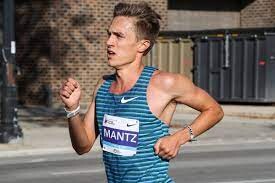
Men’s Open Division
Mantz and Young, training partners from Provo, Utah, will line up together at the start in New York less than two months after finishing one-two at the U.S. Olympic Marathon Trials in Orlando and qualifying for the Paris 2024 Games. Mantz was fifth in his first United Airlines NYC Half in 2022, and last year became the seventh-fastest American marathoner in history when running 2:07:47 to finish sixth at the Chicago Marathon. Young finished right behind him in seventh in 2:08:00 and will be making his United Airlines NYC Half debut.

“I think I have a lot of room to improve in the halfs,” Mantz said on the latest episode of NYRR Set the Pace, Feb. 22, 2024. “I want to get these halfs in so I can have more confidence heading into Paris. I ran [the United Airlines NYC Half] in 2022…which was probably one of the most special experiences and it was a huge learning [experience]. It was probably my first race where I was competing against a big international field…so it was a really good experience for me, and I think it’s one I want to repeat and take what I’ve learned in the last two years and use it.”
Ethiopia’s Bekele, a four-time Olympic medalist, 16-time world champion, and the third-fastest marathoner in history, will challenge the American duo, racing with NYRR for the second time after finishing sixth at the 2021 TCS New York City Marathon. He will be joined at the starting line by Kenya’s Abel Kipchumba, the reigning champion of the B.A.A. Boston Half Marathon who owns one of the top-10 half-marathon times in history.
by Letsrun
Login to leave a comment
United Airlines NYC Half-Marathon
The United Airlines NYC Half takes runners from around the city and the globe on a 13.1-mile tour of NYC. Led by a talent-packed roster of American and international elites, runners will stop traffic in the Big Apple this March! Runners will begin their journey on Prospect Park’s Center Drive before taking the race onto Brooklyn’s streets. For the third...
more...Malindi Elmore and Tristan Woodfine to run 2024 NYC Half
On Thursday, the New York Road Runners (NYRR) announced the field for the 2024 NYC Half on March 17, which will feature Canadian marathoners Malindi Elmore and Tristan Woodfine alongside 11 Olympians and one of the world’s most decorated distance runners, Ethiopia’s Kenenisa Bekele.
This will be Bekele’s first time at the NYC Half and only his second career road race in New York City. (He finished sixth at the TCS New York City Marathon in 2021.) Bekele is one of the most prolific runners of all time, having been at the top of the sport for more than two decades. His personal best of 2:01:41 from the 2019 Berlin Marathon still stands as the Ethiopian national record, and makes him the third-fastest marathoner in history.
Bekele will headline the men’s race alongside top U.S. marathoners Conner Mantz and Clayton Young, who are fresh off finishing first and second, respectively, at the U.S. Olympic Marathon Trials in Orlando, Fla., on Feb. 3. Also joining the men’s field is Cobden, Ont.’s Woodfine, who is coming off an impressive 2:10:39 personal best and sixth-place finish at the 2024 Houston Marathon. The 30-year-old is currently training for the 2024 Boston Marathon, where he hopes to place in the top five to potentially secure a spot on the Canadian Olympic marathon team in Paris.
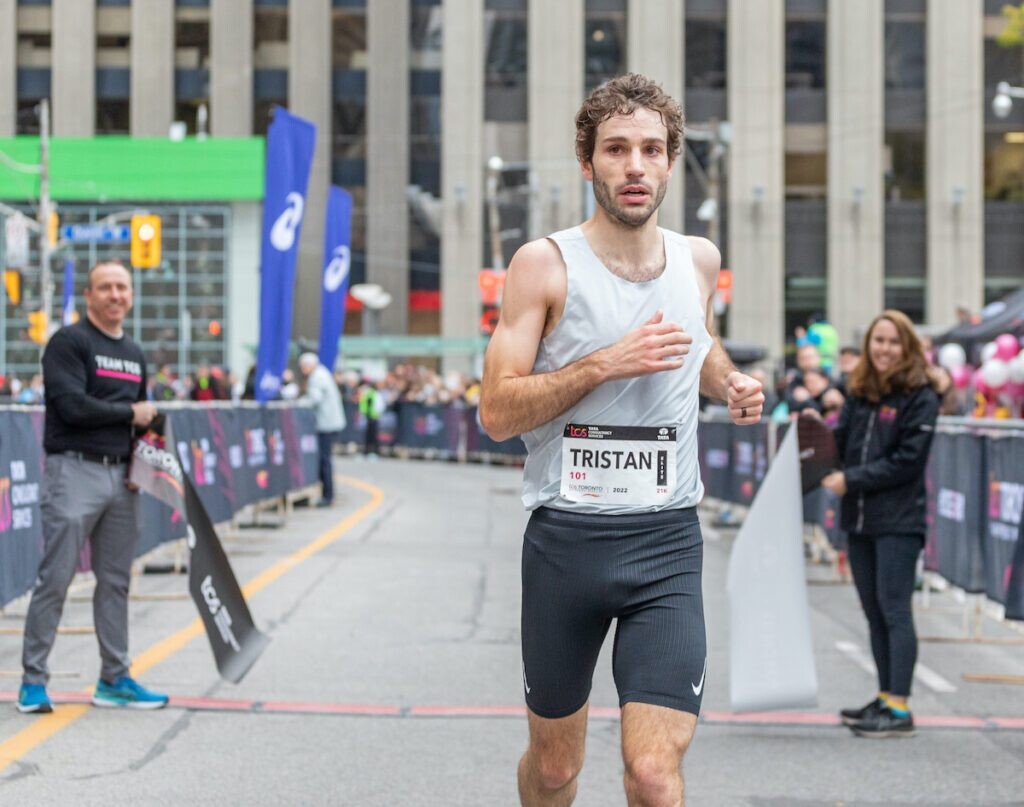
The women’s elite field will be full of established distance runners, including Olympians Des Linden, Jenny Simpson, Edna Kiplagat and Elmore, who was recently nominated to her third Olympic Games. Elmore secured her spot on the Canadian team last fall with a 2:23:30 clocking at the 2023 Berlin Marathon, the second-fastest Canadian women’s marathon time. Like Woodfine, Elmore is also training for the 2024 Boston Marathon, which she hopes will prepare her for the hilly marathon course at the 2024 Paris Olympics, which is expected to be the hilliest Olympic marathon course to date.
The men’s and women’s elite field will lead more than 25,000 runners during the United Airlines NYC Half, the world’s premier half marathon, which runs from Brooklyn to Manhattan, passing historic landmarks, diverse neighbourhoods and sweeping views of The Big Apple before finishing in the middle of Central Park.
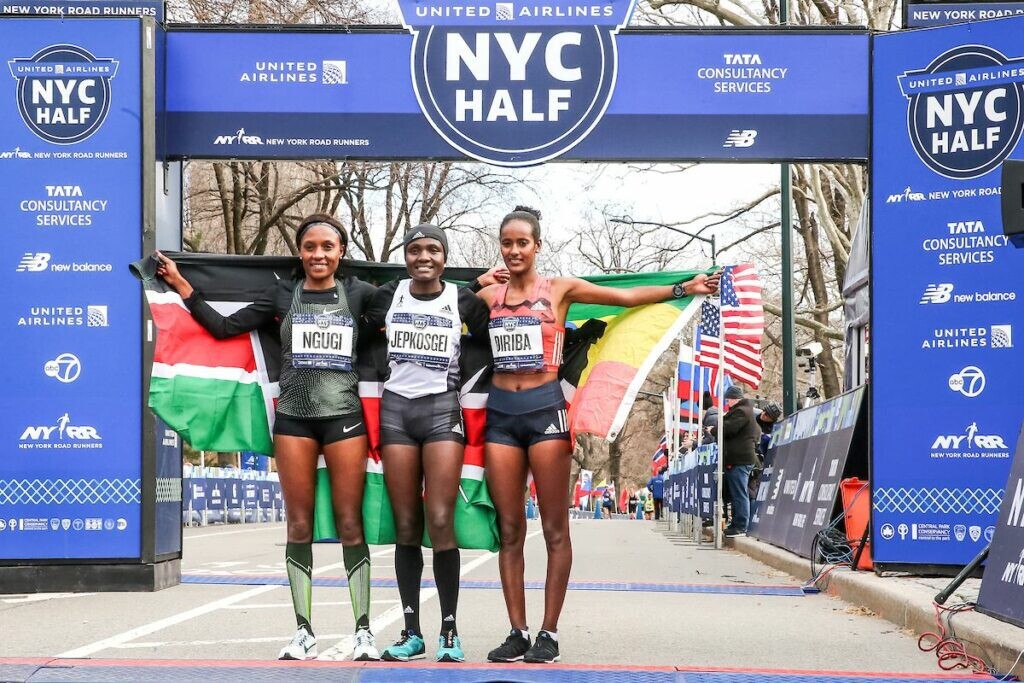
by Marley Dickinson
Login to leave a comment
United Airlines NYC Half-Marathon
The United Airlines NYC Half takes runners from around the city and the globe on a 13.1-mile tour of NYC. Led by a talent-packed roster of American and international elites, runners will stop traffic in the Big Apple this March! Runners will begin their journey on Prospect Park’s Center Drive before taking the race onto Brooklyn’s streets. For the third...
more...Ednah Kiplagat confirms next race as she chases more history
Forty-four-year-old Edna Kiplagat has opened up on where she will compete next, giving the impression that she is not hanging her spikes anytime soon.
More than 25,000 runners have confirmed participation at the New York City Half Marathon scheduled for Sunday, March 17 from Brooklyn to Manhattan, finishing in Central Park.
One of the headliners in the women’s field is 44-year-old Kenyan runner Edna Kiplagat who will be using the race as part of her preparations for the Boston Marathon.
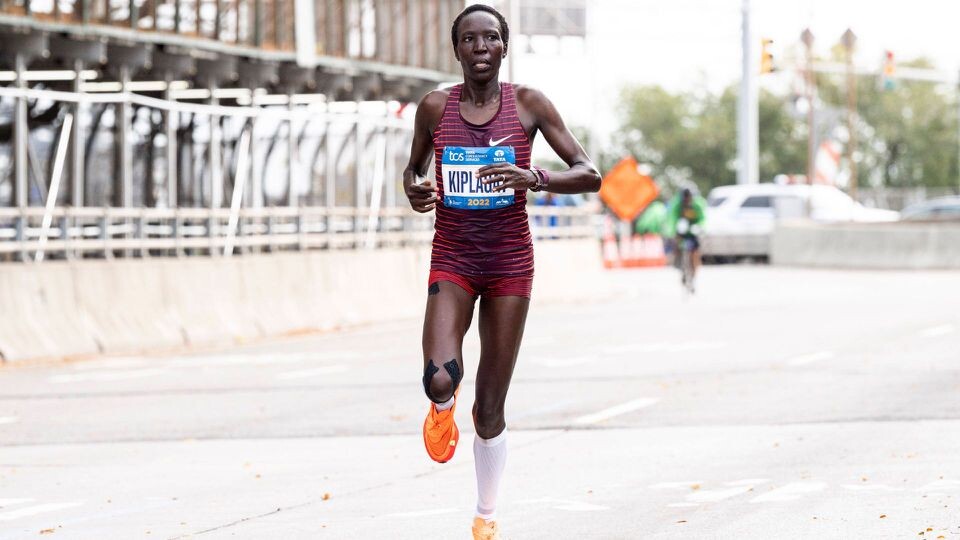
Kiplagat is one of the most successful long-distance runners and from her records, she is a two-time Boston Marathon champion and former London and New York City Marathon champion.
Kiplagat will be up against compatriots Gladys Chepkurui, the reigning Tokyo Half Marathon champion, and Cynthia Limo, a World Athletics Championships half-marathon medalist. The duo has the two fastest times in the women's open division.
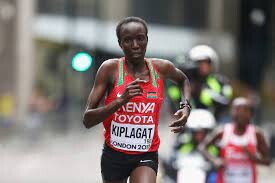
Two-time US Olympian and 2018 Boston Marathon champion Desiree Linden will return as the top American finisher from last year's race, having recently finished 11th at the US Olympic Marathon Trials.
Olympic and World Championships medalist Emily Simpson will make her United Airlines NYC Half debut but she is no stranger to NYRR races as an eight-time winner of the New Balance 5th Avenue Mile.
Lindsay Flanagan and Annie Frisbie, both of whom finished in the top 10 at the 2024 US Olympic Marathon Trials, will also be ones to watch.
Ethiopia's Kenenisa Bekele, a four-time Olympic medalist, 16-time world champion, and the third-fastest marathoner in history, will challenge the Kenyan charge in the men’s race. He will be competing in the streets of New York for the second time after finishing sixth at the 2021 TCS New York City Marathon.
The Kenyan charge will be led by, Abel Kipchumba, the reigning champion of the B.A.A. Boston Half Marathon who owns one of the top 10 half-marathon times in history.
Morocco's Zouhair Talbi will return to the event after taking third in his United Airlines NYC Half debut last year, which he called "the race of his life."
Since then, he finished fifth at the Boston Marathon and broke the Houston Marathon course record in January.
Tanzanian Olympian and marathon record-holder Gabriel Geay, who was the runner-up at last year's Boston Marathon, will race the United Airlines NYC Half for the first time.
An American contender to watch will be Hillary Bor, a two-time U.S. Olympian and five-time national champion who will be making his half-marathon debut.
by Abigael Wuafula
Login to leave a comment
United Airlines NYC Half-Marathon
The United Airlines NYC Half takes runners from around the city and the globe on a 13.1-mile tour of NYC. Led by a talent-packed roster of American and international elites, runners will stop traffic in the Big Apple this March! Runners will begin their journey on Prospect Park’s Center Drive before taking the race onto Brooklyn’s streets. For the third...
more...How An Old Drinking Fountain Revived New York’s Marathoning and Pasta Club
The group is all about logging slow miles and consuming carbs—in that order.
In New York’s Central Park, at West Drive and 92nd Street, is a nondescript drinking fountain made of black granite. Blink as you run past, and you’d miss it, but this particular fountain, inscribed in 1991 with an ivy garland and the words “72 Street Marathoning and Pasta Club” around its rim, has recently gained interest from a new generation of runners and inspired them to take up the mantle of distance running and carb loading.
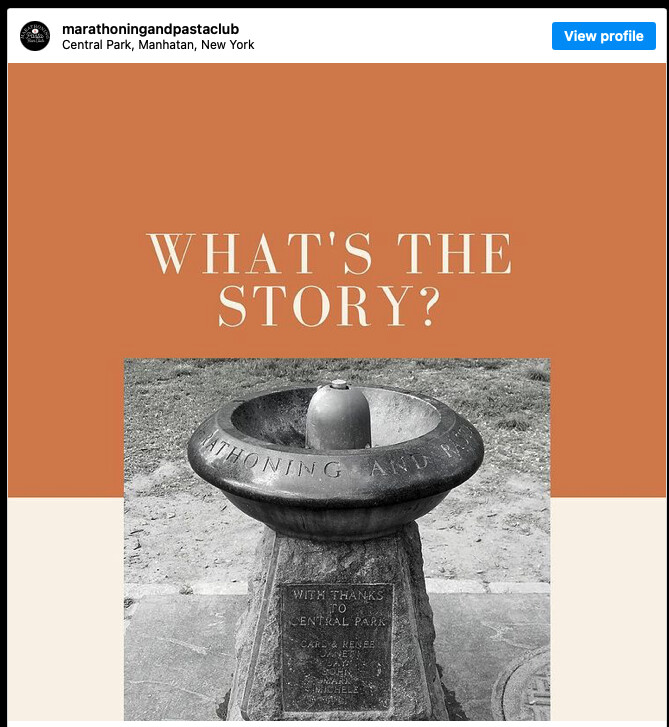
Amanda Smith stumbled upon the fountain in 2020, during the early days of the COVID-19 pandemic, and was inspired by the inscription. “As a foodie who loves to run, nothing more closely aligns with my lifestyle than that!” she wrote on Reddit. Smith snatched up the Marathoning and Pasta Club handle on Instagram posthaste, knowing she wanted to do something with it in the future—three years later, her dream has come to fruition.
A few weeks ago, Smith gauged interest for an all-new run club devoted to sharing easy miles followed by “family style” meals afterwards. People loved the idea. The group got together for their first outing on Thursday night: Five runners showed up for a loop of Central Park, chatting and getting to know each other, before tucking into orders of rigatoni carbone on the Upper West Side.
“It was really nice to just have a conversation, and everyone’s kind of sharing the role that running plays in their lives,” Smith told Runner’s World.
The original Marathoning and Pasta Club traces its history back to the 1970s, when its members, in addition to their love of running and spaghetti, were dedicated stewards of Central Park, often planting trees and cleaning and restoring water fountains. One of the seven original members is Jonathan Mendes, a World War II Marine who in 2016, at 96 years old, was believed to be the oldest unofficial finisher of the New York City Marathon, completing the race in 11 hours and 23 minutes. Carl Landegger, 10 years Mendes’ junior, was another founding member, and was running marathons with his friend as recently as 2010.
Smith laughs that the initial club was comprised of serious runners who competed around the world, clocking impressive times. Her iteration of the Marathoning and Pasta Club is more of a nod to the originals. The new club is truly pace inclusive and spans all five New York City boroughs. Next week they’ll be meeting in Brooklyn’s Prospect Park before heading to Pasta Louise Cafe in Park Slope.
You don’t need to be a marathoner to join the club, and unlike many other groups, there’s no minimum pace required.
“I hope people feel comfortable to come because it isn’t about competitions,” Smith said. “You don't need to be training for anything. We had people last night who just like to run, and they’re not interested in running a marathon and that’s totally fine.”
Some nights, Smith says they may even skip the run and just bond over pasta. She sees a real need for clubs based around recovery-pace runs and community.
Fusilli and farfalle sound fun? You can stay up-to-date on the happenings of the Marathoning and Pasta Club on their Instagram page.
by Runner’s World
Login to leave a comment
Hellen Obiri explains why the New York City marathon course is tougher than Boston
Hellen Obiri has shared reasons why she thinks the New York City Marathon course is more difficult than the Boston Marathon course.
Reigning New York City Marathon champion Hellen Obiri has admitted that the New York City Marathon is the toughest course she has competed on since making her debut over the full marathon.
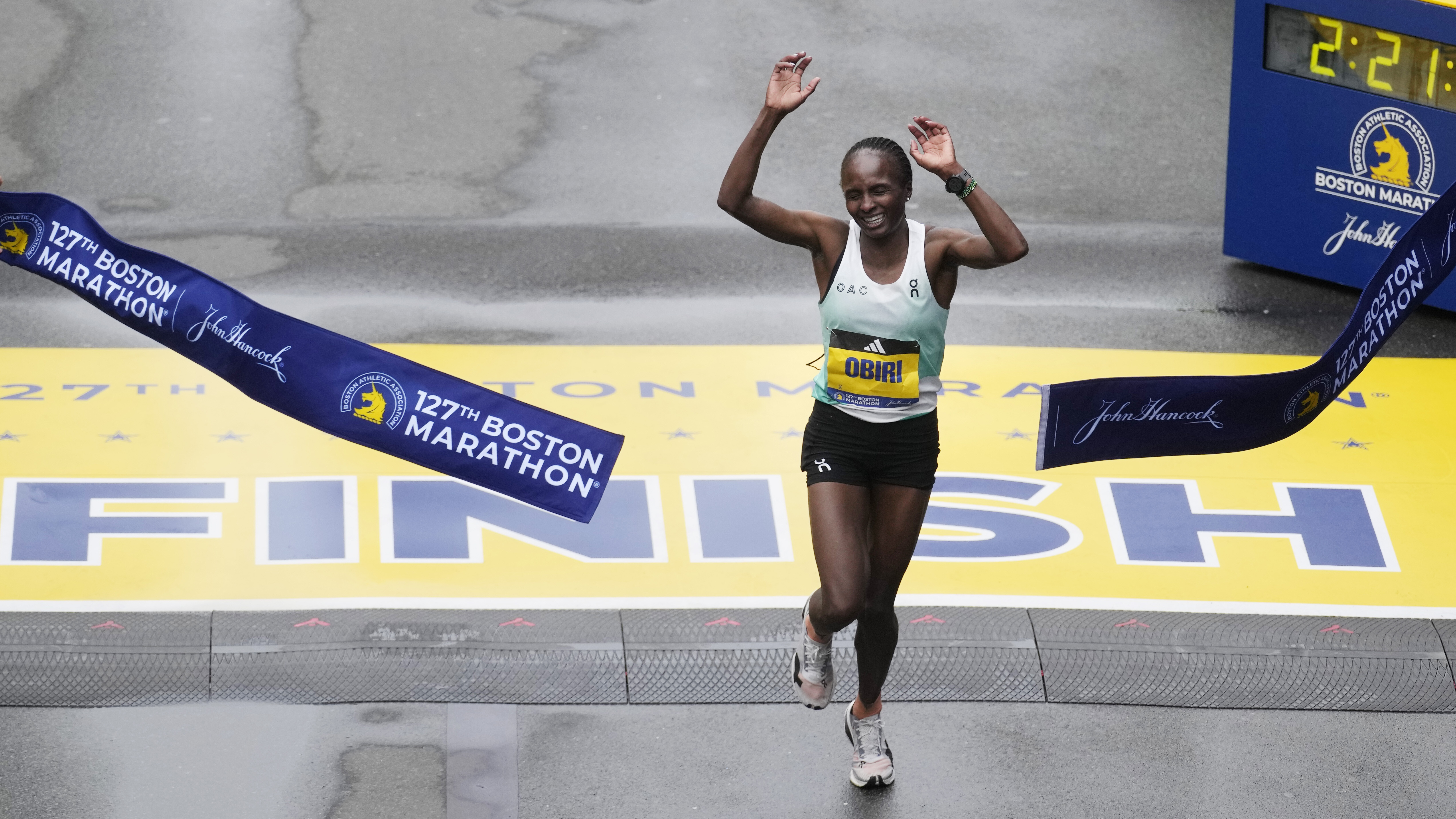
Obiri made her debut last year in the streets of New York City, and managed a sixth-place finish, clocking a Personal Best time of 2:25:49.
This year, she opened her season with a dominant win at the Boston Marathon, clocking 2:21:38 to cross the finish line.
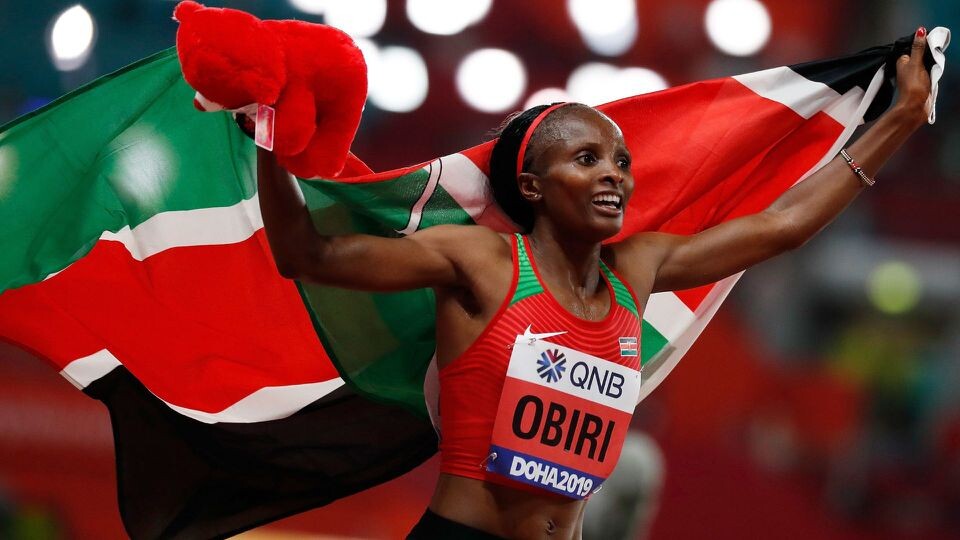
However, her time will not be recognized by World Athletics as a credible Personal Best time since the Boston course does not meet the rules of a standardized course by World Athletics.
Obiri then returned to the Big Apple and this time around, she clinched a win, in what seemed to be a very easy run for her.
The World 10,000m silver medalist clocked 2:27:23 to cut the tape. However, she has insisted that the course is a bit more difficult than the one in Boston.
“The New York course is harder than Boston…when you reach Central Park, there are a lot of hills and valleys unlike Boston where it was a bit flat towards the end,” Obiri said.
The two-time World 5000m champion added that she was competing in the streets of New York City to just win the race and not break any record because of the nature of the course.
by Abigael Wuafula
Login to leave a comment
TCS New York City Marathon
The first New York City Marathon, organized in 1970 by Fred Lebow and Vince Chiappetta, was held entirely in Central Park. Of 127 entrants, only 55 men finished; the sole female entrant dropped out due to illness. Winners were given inexpensive wristwatches and recycled baseball and bowling trophies. The entry fee was $1 and the total event budget...
more...Sifan Hassan, Kelvin Kiptum, Catherine Debrunner and Marcel Hug have been crowned Abbott World Marathon Majors Series XV champions
Sifan Hassan, Kelvin Kiptum, Catherine Debrunner and Marcel Hug have been crowned Abbott World Marathon Majors Series XV champions.
The series concluded at the 2023 TCS New York City Marathon.
Kiptum and Hug already had their victories assured, with Kiptum winning the TCS London Marathon and then the Bank of America Chicago Marathon in a world record 2:00:35 to seal the men’s open division title.

Wheelchair racer Hug had swept all five Majors before New York and promptly made it six from six with a dominant display in the final event. Hug was presented with a special gold Six Star medal to mark the accomplishment.
Hassan, with wins in London and Chicago, could only be caught by Kenyan Hellen Obiri, who needed to win in New York to add to her Boston victory and tie Hassan at the top of the leaderboard.
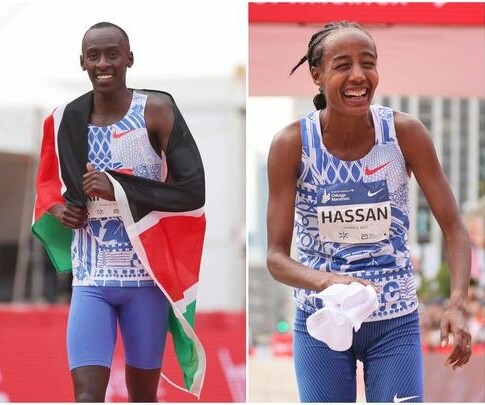
Obiri duly obliged, out-kicking Letesenbet Gidey in Central Park to claim the race victory.
That meant the six race directors of the Abbott World Marathon Majors had to each vote for their choice to be the 2023 women’s series champion. The vote went the way of Hassan, who set the second fastest time in history of 2:13:44 when she won in Chicago.
For Debrunner, it was all in her own hands. She went into the final race three points behind her Swiss compatriot Manuela Schär, with defending series champion, the USA’s Susannah Scaroni, two points further back and Madison de Rozario of Australia also within striking distance of the title if she could win in New York.
Debrunner left all her rivals behind from the gun, descending the Verrazzano-Narrows Bridge with a commanding lead that she never relinquished.
She went on to break Scaroni’s course record, finishing in 1:39:32 to take the win, the record bonus and the series.
It caps a stunning fall season for Debrunner, who shot into contention by winning the BMW BERLIN-MARATHON in a world record time before adding the Bank of America Chicago Marathon to her list of successes two weeks later.
Abbott World Marathon Majors CEO Dawna Stone said: “We are thrilled to see the series end in such spectacular fashion in New York City, and to have four such incredible series champions to celebrate.
“Series XV has been one for the history books, with three new world records set across the divisions and a host of course and regional records falling as well.
“Our six races continue to raise the bar of elite performance in the marathon, and we congratulate Sifan, Catherine, Kelvin and Marcel on their fantastic achievements in this series.”
Series XVI will begin at the Tokyo Marathon on March 3, 2024.
by AbbottWMM
Login to leave a comment
Pizzolato donates 1984 New York City Marathon winning shoes to MOWA
At the end of ABC television’s coverage of the 1984 New York City Marathon, there’s a shot of Orlando Pizzolato sitting on a bench in Central Park, retying his well-worn footwear. “Those shoes may have had it,” remarked anchorman Jim McKay.
Not quite. Some 39 years on, the shoes that took the unheralded Italian to the biggest upset victory in the history of the Big Apple’s big race have been generously donated to the ever-expanding Heritage Collection in the Museum of World Athletics (MOWA).
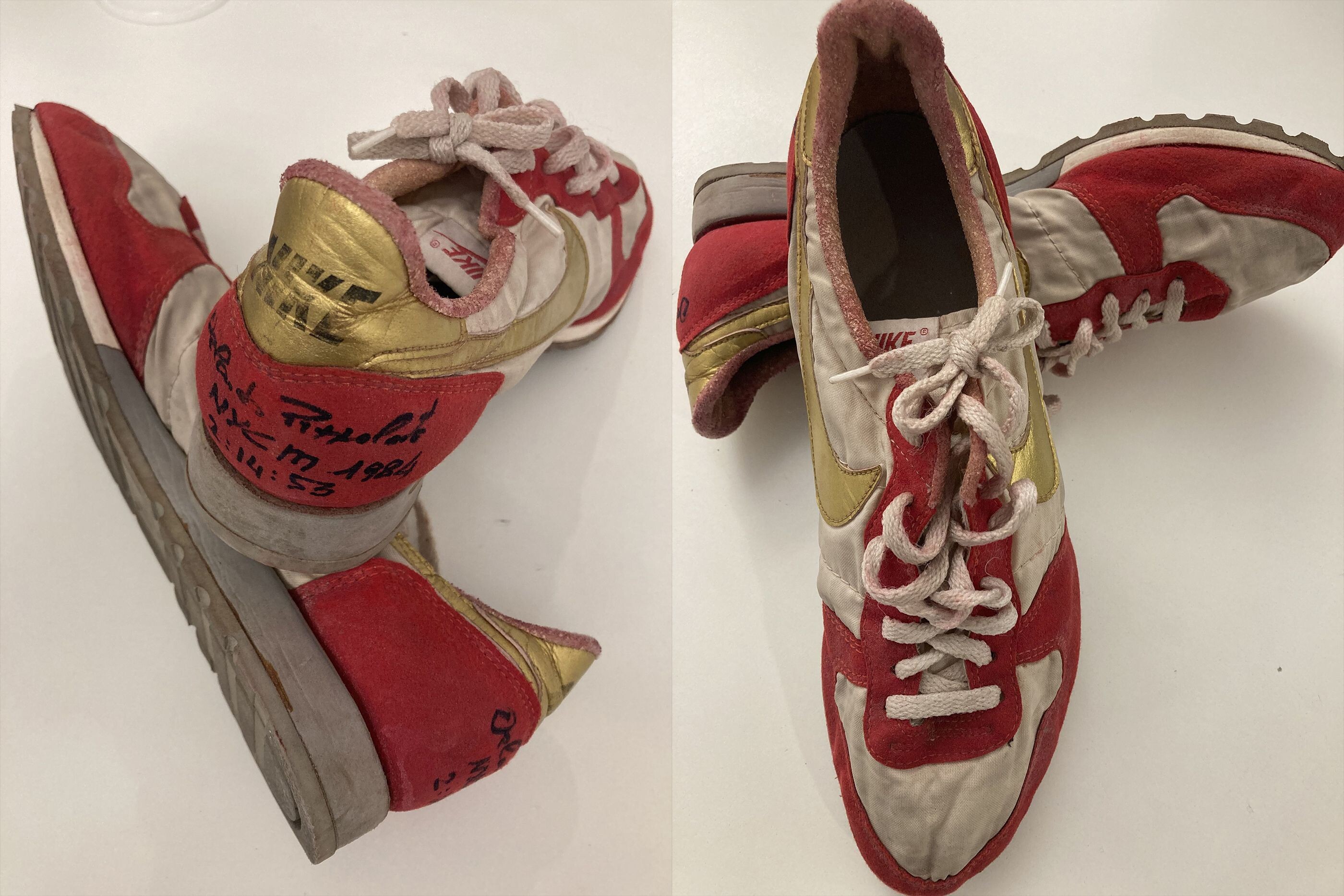
Whatever unfolds in the 2023 edition of the New York City Marathon this weekend, there’s unlikely to be anything as dramatic as the battle of attrition from which the plucky Pizzolato emerged as the unlikely hero in 1984.
As the Italian and the rest of the 18,000 field assembled for the start, it was difficult to pick out the contours of the Verrazano-Narrows Bridge. Such was the heat haze that had descended upon the Big Apple on the last Sunday in October that year.
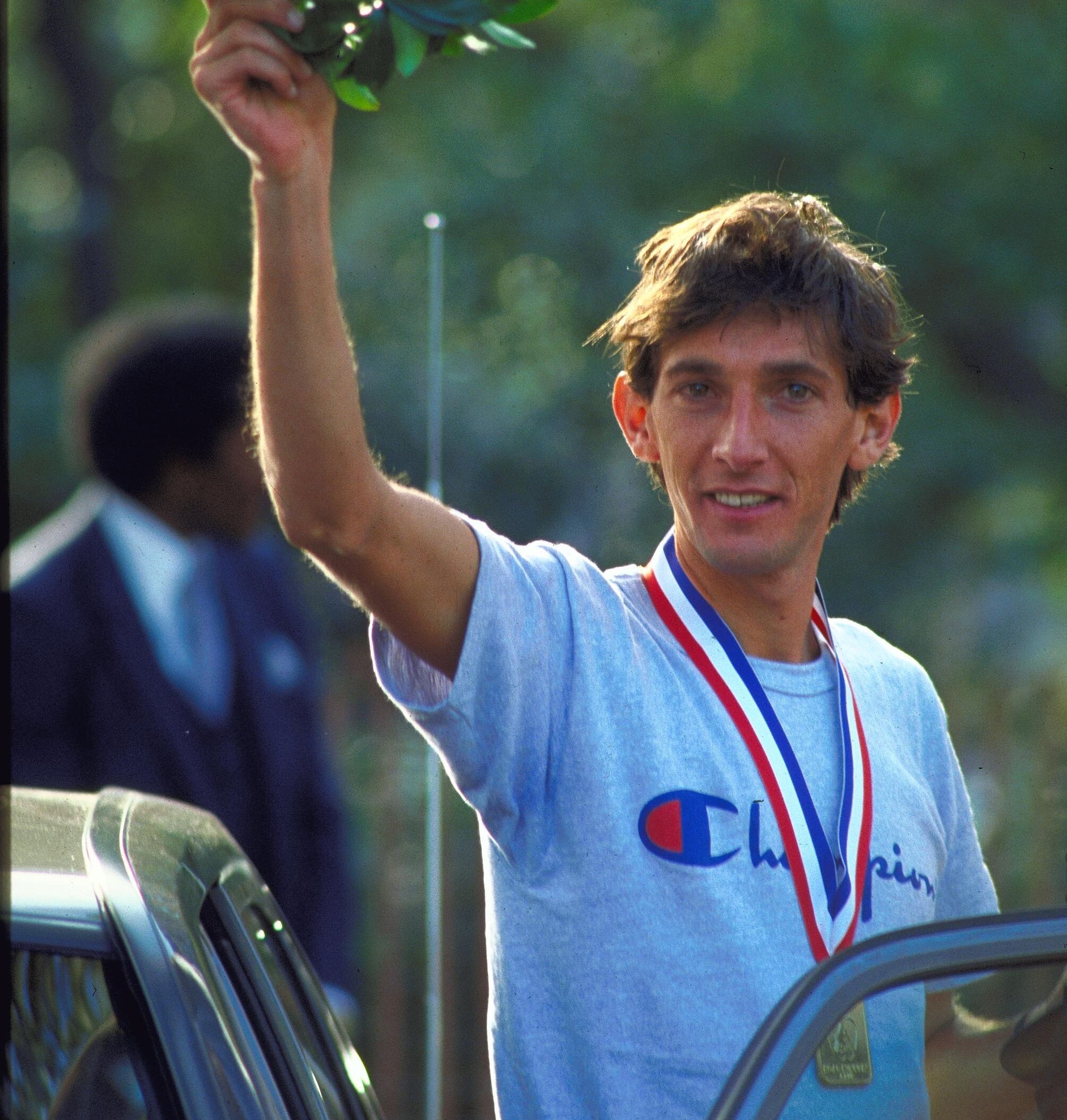
“The weather is going to be a huge factor,” proclaimed Marty Liquori, the great US miler, working as the expert summarizer on the men’s race for ABC Sports. “We’re looking at the hottest and most humid New York Marathon ever.”
The mercury was already pushing 70°F and the humidity was close to maximum.
“That causes two things to happen at the front of the pack,” continued Liquori, runner up to Miruts Yifter in the 5000m at the inaugural World Cup in Dusseldorf in 1977. “The natural front runners get conservative, so the pack stays tighter. The second thing is the hotter it gets, the greater chance there is for an upset.”
“Yes, look out for the man you do not know in this marathon,” predicted McKay, the distinguished Voice of ABC’s Wide World of Sports.
“This man could be for real”
Not a lot of people were looking out for the runner bearing race number 100, clad in the colors of his homeland – blue and white singlet, red shorts.
Pizzolato, a 26-year-old representing the University of Ferrara sports club from the north of Italy, was no Ferrari of a marathoner.
In seven attempts at the classic 26.2-mile distance, he boasted a best of 2:15:28 - more than seven minutes slower than the world record figures of 2:08:05 set by Welshman Steve Jones in Chicago a week before the 1984 New York race.
Pizzolato’s PB came in New York in 1983, the year Rod Dixon made up a half-mile deficit to overhaul Briton Geoff Smith virtually on the finish line in Central Park. The New Zealander’s winning time was 2:08:59. He finished 6min 29sec and 26 places ahead of Pizzolato.
Twelve months later, Dixon, the Olympic 1500m bronze medalist behind Finn Pekka Vasala and the trailblazing Kenyan Kip Keino in Munich in 1972, returned to New York as favorite for the men’s title – and the $25,000 prize and Mercedes Benz that went with it in that first year of open professional running.
“I’m a lot more confident in my own mind, having run successfully in ’83,” he told Liquori in a pre-race interview. “I think I’m rightly the favorite. I’ve trained well and I’ve got confidence in my own ability. I’ll go out and if I strike it right, they won’t catch me.”
Five miles in, given the exceptional conditions, Liquori and four-time winner Bill Rodgers, following the men’s race from ABC’s on-course buggy, felt Dixon was striking it right – 18 seconds down on home runners Pat Petersen and Terry Baker in a pack that included two-time Commonwealth gold medallist Gidamis Shahanga of Tanzania.
Pizzolato was also among the chasing group, seemingly unknown to any of the experts. His first name check came as he overtook Jose Gomez of Mexico to claim pole position, shortly before reaching halfway in 65:03.
“Could this, Marty, be the man they did not know?” McKay enquired.
“This man could be for real,” Liquori replied. “In the hotel I saw Franco Fava, a great steeplechaser from Italy, and he mentioned that it has been so hot in Italy this summer and fall. So, this is one person who is accustomed to the heat.”
Rodgers was not quite so sure. “I think it’s still anybody’s race,” he said. “The guy from Italy looks good. But we’ll have to see later in the race.”
“The Pope, Reagan and then it was me”
The guy from northern Italy was certainly looking good.
While Dixon seemed ill at ease, struggling to cope with the pace and the conditions some 1:15 behind, Pizzolato appeared to be feeling groovy as he crossed the Queensboro Bridge, the subject of Simon and Garfunkel’s 59th Street Bridge Song.
“Orlando looks very good,” Liquori observed. “He looks to have a style that’s fitting for a marathoner. When you’re looking around, taking in the scenery, you know that the running is coming easy.
“One thing should be pointed out. Steve Jones, who set the world record last week, was a very well-established track runner. He was eighth in the 10,000m at the Olympic Games.
“But Orlando has run a minute slower for 10,000m: 28:22. Were he to win this, it would be just about the biggest upset in a major marathon that I’ve seen.”
By the 20th mile mark, it was clear that Pizzolato himself was somewhat upset. The temperature had risen to 74 degrees and the humidity to 96%. His pace slowed to a 5:26 mile.
Briton Dave Murphy was gathering momentum, moving up into second, and Dixon into third.
“Well, I think we’re entering the last chapter of Orlando,” ventured Liquori. “I think I might have got too excited at 18 miles. Maybe it was the Italian in me.”
Soon after, Pizzolato grabbed his chest and slowed to a temporary halt. Three times he stopped, then started up again. “This man is in trouble,” said McKay.
Entering Central Park, with less than three miles to go, Pizzolato stopped for a fourth time. He clutched his chest, glugged half a cup of water and poured the other half over his head.
Dixon was out of the equation at this point, having stepped off the course suffering from cramps. But Murphy had closed to within 15 seconds.
“It’s like the tortoise and the hare,” said Liquori. “Pizzolato’s running-stopping, running-stopping. Murphy is just taking a steady course. It looks like it’s his race.
“For Pizzolato now, the drama now is how much of his soul he’s going to lay down.”
Thrice more, Pizzolato stopped and started, each time taking on fluid and calmly checking out the gap behind him. Somehow, he managed to lay down enough of his soul to bridge over his troubled water.
The finished line approached with Murphy not yet in sight.
“He has pulled it off,” Liquori pronounced. “He has mentally been able to fight through his form having gone to pieces, through having had so many problems.”
“It was very hot,” said Pizzolato, who crossed the line in 2:14:53, 43 sec ahead of Murphy. “I had cramp in my stomach. It was very terrible, but I am very happy.”
The New York Times the next day concentrated on Grete Waitz’s sixth success in the women’s section, praising Pizzolato in passing for having overcome the heat and the late challenge of Murphy in “a men’s competition that the stifling heat and humidity reduced to a battle of attrition.”
Back home in Italy, the reaction was different. “The first story in the news was the Pope,” Pizzolato reported, “then Ronald Reagan’s election. Then it was me.”
Retained title
Twelve months later, the guy from Italy returned to New York and proved he was no flash in the marathon pan.
This time he was the tortoise, running his steady race while Geoff Smith burned himself out at world record pace, then overtaking Djibouti’s World Cup Marathon winner Ahmad Saleh two miles from home to become the Big Apple’s first overseas two-time winner, clocking 2:11:34.
“Last year I won by mistake, probably,” Pizzolato told The New York Times. “This year was more exciting. I was not in confusion in the last 365 yards.
“All the people seemed to know my name and my number. It was like everyone was a friend of mine. It was a great source of power.”
In an era when the fast men of the track came to dominate the men’s marathon – with the likes of Jones, Dixon and Carlos Lopes, the Portuguese runner who won the Olympic title in Los Angeles in 1984 and succeeded Jones as world record-holder in 1985 – Pizzolato was a great source of power and inspiration to the traditional specialists of the event.
He never broke 2:10. His fastest time was 2:10:23, which he recorded while placing sixth in the World Cup Marathon in Hiroshima in 1985. The following year Pizzolato was third in Boston (2:11:43), then overtook a shattered Jones to claim the European Championships silver in Stuttgart (2:10:57) behind his compatriot Gelindo Bordin, and returned to New York taking third place (2:12:13) behind another Italian, Gianni Poli.
These days the two-time Italian king of New York operates a company bearing his name which offers running camps and a consultation service, and which provides scholarships to athletes aged from 16 to 22.
by Simon Turnbull for World Athletics Heritage
Login to leave a comment
Lots of exciting racing on the streets of New York City and a new course record
Hellen Obiri timed her kick to perfection to win a thrilling women’s race and Tamirat Tola broke the course record for a dominant men’s title triumph at the TCS New York City Marathon, a World Athletics Platinum Label event, on Sunday (5).
Claiming their crowns in contrasting styles, Obiri sprinted away from Letesenbet Gidey and Sharon Lokedi in Central Park and crossed the finish line in 2:27:23, winning by six seconds, while Tola left his rivals far behind with 10km remaining in a long run for home. Clocking 2:04:58, he took eight seconds off the course record set by Geoffrey Mutai in 2011 to claim his first win in the event after fourth-place finishes in 2018 and 2019.

While super fast times have dominated recent major marathon headlines, the focus in New York was always more likely to be the battles thanks to the undulating course and competitive fields, although the men's race ended up being the quickest in event history.
The women’s race was particularly loaded. Kenya’s Lokedi returned to defend her title against a strong field that featured Boston Marathon winner Obiri, 10,000m and half marathon world record-holder Gidey, and former marathon world record-holder Brigid Kosgei, while Olympic champion Peres Jepchirchir was a late withdrawal following the leg injury she sustained a week before the race.
There was no clear pre-race favourite and that remained the case right up to the closing stages, with many of the leading contenders locked in a fierce fight after a tactical 26 miles.
The pace was conservative in the first half, with a series of surges but no big moves. Eleven of the 14 members of the field remained together at half way, reached in 1:14:21. It set the scene for a final flurry, with the pace having gradually slowed after 5km was passed by the leaders in 17:23, 10km in 34:35 and 15km in 52:29.
Obiri, Lokedi and Kosgei were all firmly part of that group, along with their Kenyan compatriots Edna Kiplagat, Mary Ngugi-Cooper and Viola Cheptoo. Ethiopia’s Gidey was happy to sit at the back of the pack, with USA’s Kellyn Taylor and Molly Huddle taking it in turns to push the pace.
The tempo dropped again as the lead group hit the quiet of Queensboro Bridge, with the 25km mark reached in 1:28:39. But the group forged on, hitting 30km in 1:47:06 and 35km in 2:04:45.
Then Cheptoo made a move. The 2021 New York runner-up managed to create a gap but Obiri was the first to react and covered it gradually. Gidey followed and as Cheptoo surged again, Obiri and Gidey ran side-by-side behind her. It wasn’t decisive, though, and soon Lokedi and Kosgei were able to rejoin them.
As the group hit 24 miles in Central Park, Lokedi was running alongside Obiri and Cheptoo, with Gidey and Kosgei just behind. The pace picked up again but each time Kosgei was dropped, she managed to claw her way back – Lokedi leading from Gidey, Obiri and Kosgei with one mile to go.
Looking determined, two-time world 5000m champion Obiri saw her chance and began to stride for the finish. Being chased by Gidey and with Lokedi four seconds back, she kicked again at the 26-mile mark and couldn’t be caught, using her superb finishing speed to extend her winning margin to six seconds.
It was a brilliant return for Obiri, who finished sixth when making her marathon debut in New York last year and who went on to win the Boston Marathon in April. She becomes the first women since Ingrid Kristiansen in 1989 to complete the Boston and New York marathon title double in the same year.
Gidey followed Obiri over the finish line in 2:27:29, while Lokedi was third in 2:27:33, Kosgei fourth in 2:27:45 and Ngugi-Cooper fifth in 2:27:53.
"It's my honour to be here for the second time. My debut here was terrible for me. Sometimes you learn from your mistakes, so I did a lot of mistakes last year and I said I want to try to do my best (this year)," said Obiri.
"It was exciting for me to see Gidey was there. I said, this is like track again, like the World Championships in 2022 (when Gidey won the 10,000m ahead of Obiri)."
Tola finishes fast
The men’s race also started off at a conservative pace but by 20km a lead group of Tola, Yemal Yimer, Albert Korir, Zouhair Talbi and Abdi Nageeye had put the course record of 2:05:06 set 12 years ago back within reach.
Most of the field had been together at 5km, reached by the leaders in 15:28, and 10km was passed in 30:36. Then a serious surge in pace led to a six-strong breakaway pack, with Ethiopia’s Tola, Yimer and Shura Kitata joined by Kenya’s Korir, Dutch record-holder Nageeye and Morocco’s Talbi.
Kitata managed to hang on to the back of the pack for a spell but was dropped by 20km, reached by the leaders in 59:34.
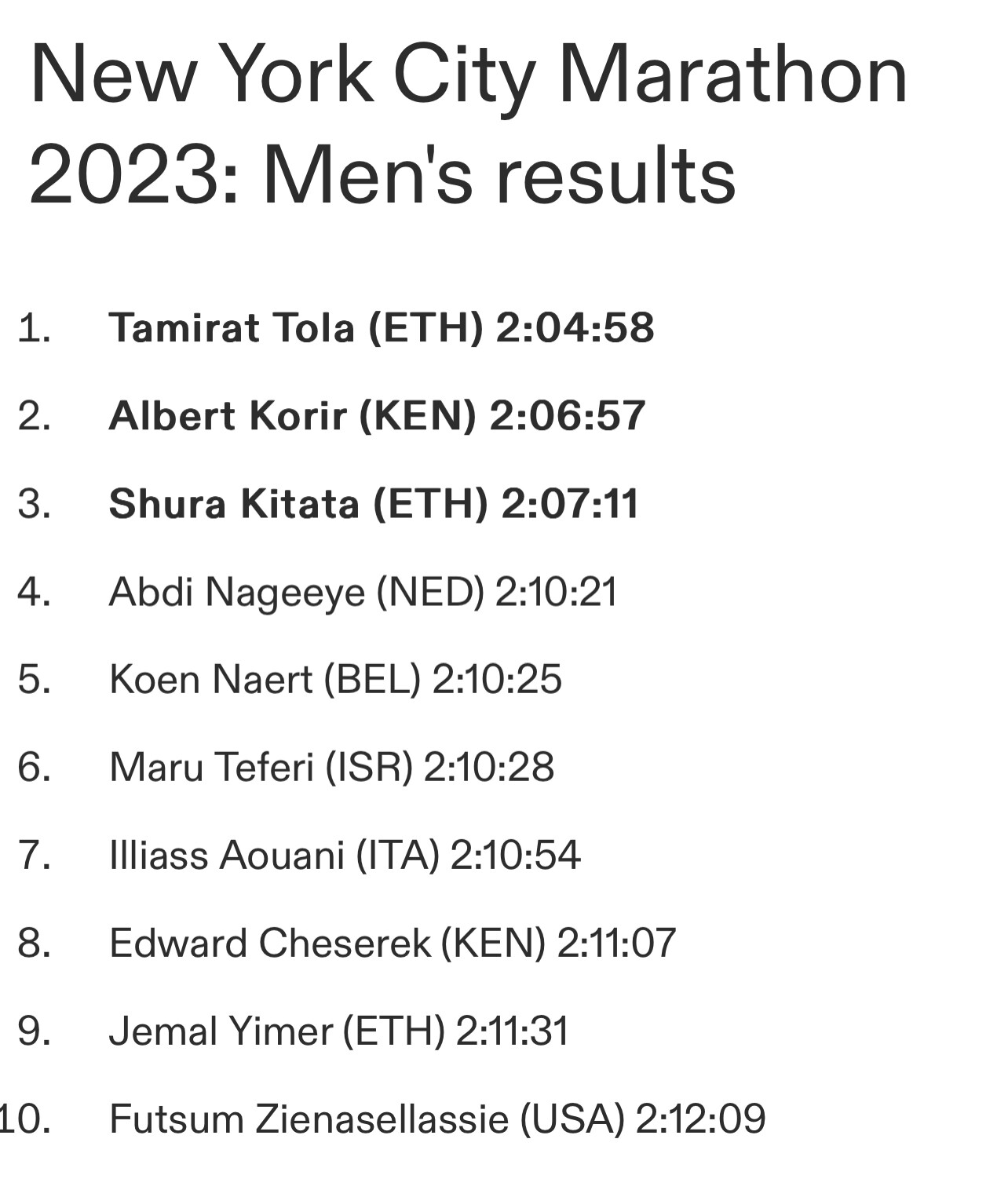
The half way mark was passed by that five-strong lead group in 1:02:45, putting them on a projected pace just 24 seconds off of Mutai’s course record.
Tola – the 2022 world marathon champion – surged again along with Yimer, who was fourth in the half marathon at last month’s World Road Running Championships in Riga, and Korir, the 2021 champion in New York. They covered the 5km split from 20km to 25km in 14:41, a pace that Nageeye and Talbi couldn’t contend. It also turned out to be a pace that Korir couldn’t maintain and he was the next to drop, leaving Tola and Yimer to power away.
After an even quicker 5km split of 14:07, that leading pair had a 25-second advantage over Korir by 30km and Tola and Yimer were well on course record pace as they clocked 1:28:22 for that checkpoint. Tola was a couple of strides ahead as they passed the 19-mile mark, but Yimer was fixed on his heels.
The next mile made the difference. By the 20-mile marker Tola had a six-second advantage and looked comfortable, with Korir a further 45 seconds back at that point and Kitata having passed Nageeye and Talbi.
Then Yimer began to struggle. He was 33 seconds back at 35km, reached by Tola in 1:42:51, and he had slipped to fourth – passed by Korir and Kitata – by 40km.
Tola reached that point in 1:58:08, almost two minutes ahead of Korir, and more than four minutes ahead of Yimer, and he maintained that winning advantage all the way to the finish line.
With his time of 2:04:58, Tola becomes the first athlete to dip under 2:05 in the New York City Marathon. Korir was second in a PB of 2:06:57, while Kitata was third in 2:07:11. Olympic silver medallist Nageeye finished fourth in 2:10:21 and Belgium’s Koen Naert came through for fifth in 2:10:25.
"I am happy to win the New York City Marathon for the first time," said Tola. "It's the third time for me to participate, after two times finishing fourth. Now, I'm happy."
by World Athletics
Login to leave a comment
TCS New York City Marathon
The first New York City Marathon, organized in 1970 by Fred Lebow and Vince Chiappetta, was held entirely in Central Park. Of 127 entrants, only 55 men finished; the sole female entrant dropped out due to illness. Winners were given inexpensive wristwatches and recycled baseball and bowling trophies. The entry fee was $1 and the total event budget...
more...Tamirat Tola sets NYC Marathon record; Hellen Obiri wins women's race
Tamirat Tola of Ethiopia set a course record to win the New York City Marathon men's race on Sunday while Hellen Obiri of Kenya pulled away in the final 400 meters to take the women's title.
Tola finished in 2 hours, 4 minutes, 58 seconds, topping the 2:05.06 set by Geoffrey Mutai in 2011. Tola pulled away from countrymate Jemal Yimer when the pair were heading toward the Bronx at Mile 20. By the time he headed back into Manhattan a mile later, Tola led by 19 seconds and chasing Mutai's mark.
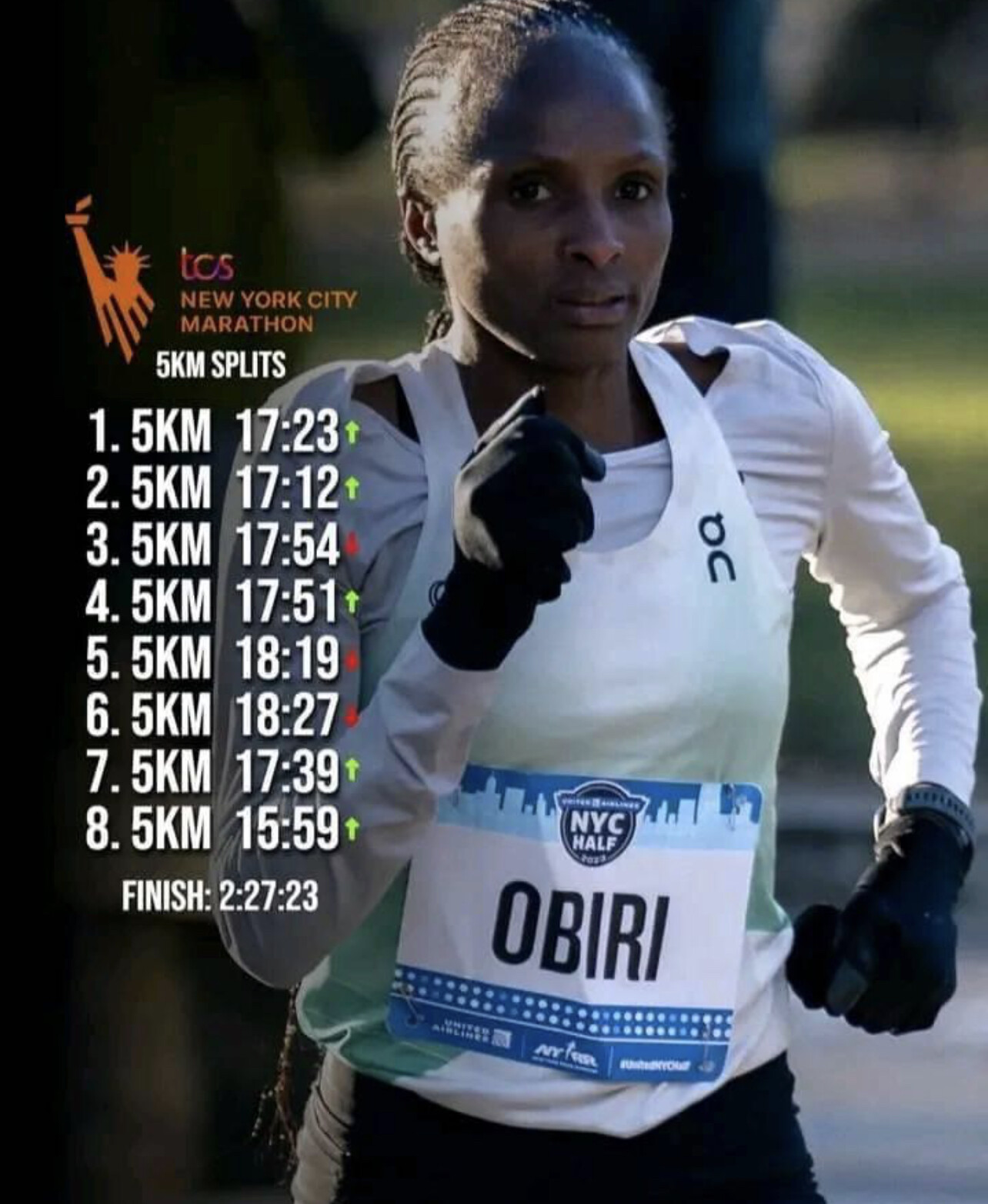
Kenyan Albert Korir finished second in 2:06:57, while Ethiopian Shura Kitata was third in 2:07:11. Yimer fell back to finish in ninth.While the men's race was well decided before the last few miles, the women's race came down to the final stretch. Obiri, Letesenbet Gidey of Ethiopia and defending champion Sharon Lokedi were all running together exchanging the lead. Obiri made a move as the trio headed back into Central Park for the final half-mile and finished in 2:27:23. Gidey finished second, 6 seconds behind. Lokedi finished third in 2:27:33.
Obiri added the New York victory to her win at the Boston Marathon in April.A stellar women's field was thought to potentially take down the course record of 2:22:31 set by Margaret Okayo in 2003. Unlike last year, when the weather was unseasonably warm with temperatures in the 70s, Sunday's race was much cooler in the 50s -- ideal conditions for record-breaking times.
Instead the women had a tactical race with 11 runners, including Americans Kellyn Taylor and Molly Huddle, in the lead pack for the first 20 miles. Taylor and Huddle both led the group at points before falling back and finishing in eighth and ninth.
Once the lead group came back into Manhattan for the final few miles, Obiri, Gidey and Lokedi pushed the pace. As the trio entered Central Park, they further distanced themselves from Kenya's Brigid Kosgei, who finished fourth.
Catherine Debrunner won the women's wheelchair race in 1:39:32, breaking the course record by more than three minutes. Men's wheelchair race winner Marcel Hug narrowly broke his record from last year, finishing in 1:25:29 to miss the mark by 3 seconds.
"It's incredible. I think it takes some time to realize what happened," Hug said after his sixth New York City victory. "I'm so happy as well."
Hug is the most decorated champion in the wheelchair race at the event, breaking a tie with Tatyana McFadden and Kurt Fearnley for most wins in the division in event history.
Login to leave a comment
TCS New York City Marathon
The first New York City Marathon, organized in 1970 by Fred Lebow and Vince Chiappetta, was held entirely in Central Park. Of 127 entrants, only 55 men finished; the sole female entrant dropped out due to illness. Winners were given inexpensive wristwatches and recycled baseball and bowling trophies. The entry fee was $1 and the total event budget...
more...Morgan Beadlescomb, Annie Rodenfels win Abbott Dash to the Finish Line 5k
Two runners won big at the Abbott Dash to the Finish Line 5K on Saturday in Central Park.
Morgan Beadlescomb, 2023 B.A.A. 5K champion, and three-time NCAA Division III champion Annie Rodenfels both captured the 2023 USA Track & Field (USTAF) 5K Championships.
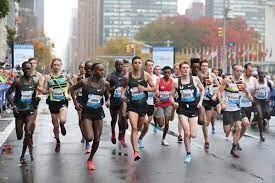
Beadlescomb, 25, finished in 13:44, marking his debut in the Abbott Dash to the Finish Line 5K.
Rodenfels, 27, captured the women's title in 15:22, after finishing fourth in the 2022 edition of the event.
Over 10,000 runners from across the country participated in the event Saturday morning, including top local athletes and many runners who are also running Sunday's TCS New York City Marathon.
The Abbott Dash served as a great warmup ahead of Sunday's marathon.
Runners started the race at the United Nations and then made their way across Midtown before ending at the marathon finish line in Central Park.
Eyewitness News sports reporter Sam Ryan spoke to Chris Miller of Abbott, who shared his excitement for Saturday's race.
"For 10,000 runners to take on these iconic streets of New York, as Abbott being a company about celebrating health and technology company, it is great to see," said Miller.
Login to leave a comment
Dash to the Finish Line
Be a part of the world-famous TCS New York City Marathon excitement, run through the streets of Manhattan, and finish at the famed Marathon finish line in Central Park—without running 26.2 miles! On TCS New York City Marathon Saturday, our NYRR Dash to the Finish Line 5K (3.1 miles) will take place for all runners who want to join in...
more...Don’t Forget: The Back of the Pack Deserves Your Support, Too
Here’s how to make all runners feel welcomed—no matter how long they are on the course.
As running catches on with a greater amount of people and paces, start lines at big races have ostensibly become more democratic spaces. This is another way of saying that marathons are getting slower.
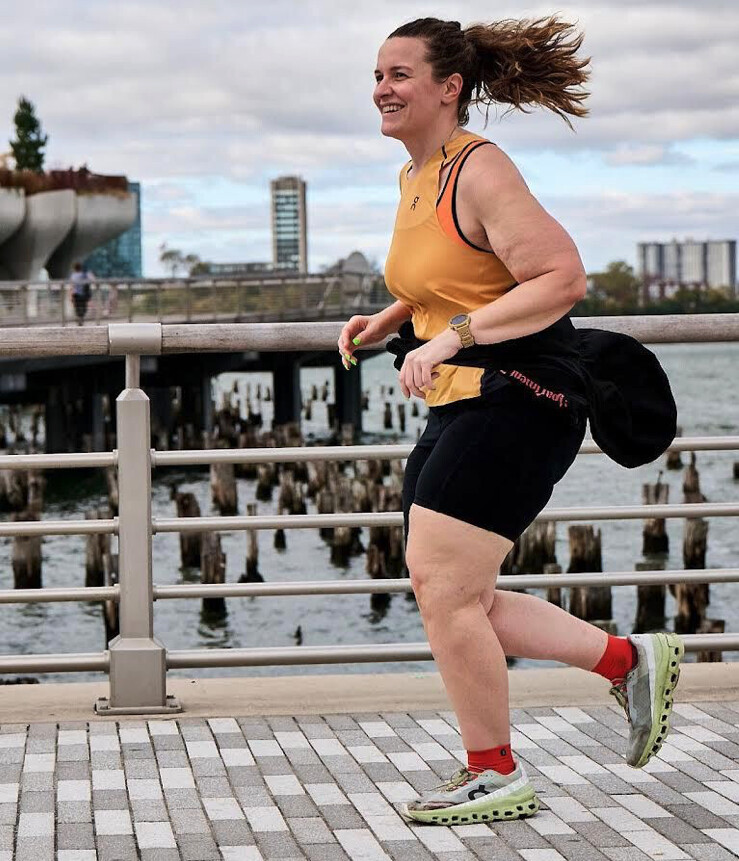
At the 2022 New York City Marathon, the average time was 4:50:26, almost 23 minutes slower than the average time in 2000 (4:27:45 ), according to The Washington Post. And in 1990, just six out of 6,168 runners at the Chicago Marathon took longer than six hours to finish, a sharp contrast to the seven percent of 48,000 finishers this year who took 6+ hours to complete the race.
This is something to be celebrated—more people toeing the start line now who may not have felt welcomed or able to participate previously. But there’s a flipside to that coin. Back-of-the-pack runners face the same daunting challenges that every marathoner does, and then some.
Slower runners don’t have the same race conditions as their speedier peers. Back-of-the-packers often receive less crowd support, hydration and aid stations often run out of supplies or close down before they reach them, and sometimes the course can become a slippery hazard with piled up cups and trash left by other runners. Then there’s the “sweeper” vehicles that usually follow the slowest runners and pressure them into getting a ride to the finish line if their pace slows. Sometimes back-of-the-pack runners don’t even receive a finisher’s medal, nor an official time, if they don’t make the race’s cutoff time.
Observations from the back
Maria-Leena Kerr experienced some of these issues at her first marathon last year. By mile 14 of the New York City Marathon, her friends and family had no idea what was going on with her because her athlete tracking had been turned off. It was a “celebration beyond compare” when the 38-year-old mom made it to the finish line, but “Finding out that I didn’t get an official finish time but others that were slower did because they were in earlier waves made me pretty disappointed,” Kerr says.
Endurance athlete, inclusivity advocate, and seasoned marathoner Latoya Shauntay Snell says she thinks things are gradually changing for the better in the road running community for slower runners, but she sees many areas for improvement. Snell—who ran this year’s Chicago Marathon in 9 hours and 19 minutes—is not a stranger to being pulled off courses for falling behind, and she isn’t afraid of receiving a DNF if necessary. But she and other back-of-the-packers told Runner’s World that if runners are afforded the option to finish on the sidewalk, it seems appropriate to “at the very least, fulfill the most basic essentials like water on the course.” Snell says: “I know this is possible because I’ve seen other races like The Route 66 Marathon and the Little Rock Marathon make this happen.”
Every November since 2016, a group called Project Finish waits in Central Park until the very last runner finishes the New York City Marathon, to ensure that every athlete is celebrated and cheered for. Last year, they were out until 11:32 p.m. to encourage the very last runner, 75-year-old Rozanna Radakovich, as she completed her race in 15:10:18. It’s a labor of love, and there is always a small but mighty contingent of kind-hearted folks who show up and stay late to ensure that every finisher feels like a champion.
However, runners who take longer than 6 hours and 30 minutes to finish at New York must complete their race on sidewalks, because after the sweep buses pass, streets are reopened to traffic. There’s no medical or aid stations available to runners at that point either, and the finish line in Central Park closes at 11:30 p.m.
Back-of-the-pack runners deserve the same race experience and support as the fleet-footed amongst us. Ashley Dean, a fitness trainer, advocate, and self-described “slower runner” in New York, says that it’s a common misconception that people in the back don’t train, which is often untrue.
“I don’t believe anyone should run a marathon if they haven’t trained for it—whether they’re a 3-hour or 7-hour marathoner,” Dean says. She points out that participants are typically shelling out around $300 in race fees and thousands of dollars in training, gear, travel, and associated costs. “They all deserve the same tools on race day,” she says.
New attempts at support
Some large races, like the London Marathon, have been experimenting with programs to circumvent these issues. In 2020, the race organizers announced the mass race would start half an hour earlier than usual and invited participants who anticipated finishing slower than 7 hours and 45 minutes to start at the back of the second or third wave to give them more time to finish.
The marathon (which was canceled in 2020 due to the COVID-19 pandemic but resumed in 2021) provided a group of fifty “tailwalkers” to walk the entire course and operate as a mobile cheer squad for those at the back of the pack. The race also kept timing mats, event photographers, and drink stations in place until the last participants were done so that everyone received the same race experience.
In advance of the 2023 New York City Marathon, select runners including Snell and Kerr were invited to participate in a similar pilot program. On race day, Kerr will be lining up with Wave 1, which could potentially be a game changer, she says. The now three-time marathoner is glad that the earlier start time means she’ll have an official finisher time this year, but she’ll still be on the course for a long while.
She’ll probably face some of the same issues she encountered last year, just further on. “The whole idea of not wanting to bother the fast runners makes me nervous: if it’s not an official program, do they even know?” she wonders. “Will our presence make for an uncomfortable or perhaps frustrated situation for them?”
Overall, she says she’s still excited for the race, but if it’s not doable to keep it up long term, then volunteers should at least be kept out longer, and the back-of-the-pack runners should have access to the same amenities as other runners.
Thinking outside of the box
Snell suggests other ways to look out for slower runners on race day could include incentivizing volunteers to stay out later to cheer and support the back of the pack. “Race fees are already high and some runners are unable to participate due to the rising costs,” she says. “Offering an incentive like a discounted rate or gear to help back-of-the-pack runners will incentivize more people to help keep on these events. It may encourage a new wave of runners who are intimidated of signing up for races to consider becoming a distance runner for the long run.”
So long as there’s no ordinance preventing race organizers from doing so, she also suggests that roads be kept open a bit longer for runners, and to create mobile street teams positioned around every 5K. If funding is an issue, “perhaps networking with brands and companies to sponsor a mile or section of the course would be helpful for both racers and race directors,” she adds.
Lastly, while representation and inclusivity in the running world has come a long way over the past few years, there’s still so much work to be done. Creating panels and conversations at expos geared toward the back-of-the-pack runners would be “incredible,” Snell says. “I don’t think there’s enough stories put out there during panels and keynotes for athletes running over 6 hours.”
Fellow runners and spectators can help each other out, too. Dean encourages people who are planning to cheer to stay out a little longer to support beyond the 4-hour folks. “I promise you that the back-of-the-pack people are extremely grateful when you cheer for them,” she says. And if they want to provide extra support, she recommends bringing banana halves, orange peels, water, and vaseline to hand out.
Whether you’re running, cheering, or watching a live broadcast of a marathon, don’t forget the back of the pack. They deserve your support and respect, and if you’re reading this, you’re most likely a fellow runner, and you already know just how much a little encouragement can help on race day.
“At the end of the day, we’re all running the same distance,” Dean says.
by Runner’s World
Login to leave a comment
Olympians and national champions to headline stacked professional athlete field at 2023 USATF 5K Championships
Weini Kelati, Courtney Frerichs, Keira D’Amato, Woody Kincaid, and Zach Panning to race for world’s largest 5K prize purse; Nearly 10,000 runners to follow in footsteps of pros by racing Abbott Dash to the Finish Line 5K.
Five Olympians, one Paralympian, and four athletes who competed at this year’s World Athletics Championships will race in the 2023 USA Track & Field (USATF) 5K Championships at the Abbott Dash to the Finish Line 5K on Saturday, November 4. The event will take place in Midtown Manhattan the day prior to the TCS New York City Marathon and will be broadcast live on USATF.TV. Abbott will return as the title partner of the event which features a $79,500 prize purse – the largest of any 5K race in the world.
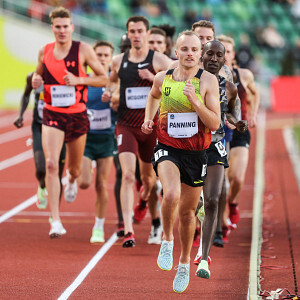
In the women’s race, two-time NCAA champion Weini Kelati will return in search of her third consecutive title in the event. Each of the last two years she has smashed the event record, taking the tape in 15:18 in 2021 and 15:15 in 2022. She will be challenged for the top spot on the podium this year by three-time national champion Keira D’Amato, 2023 U.S. cross-country champion Ednah Kurgat, and U.S. Olympians Abbey Cooper, Courtney Frerichs, Colleen Quigley, and Rachel Smith.
“Doing the Abbott Dash 5K is becoming a little bit of a early season tradition for me,” Kelati said. “Although my fall season looked a little bit different this year because of the opportunity I had to represent Team USA at the World Road Running Championships in Latvia, I’m really happy I get to come back to New York to try for my third straight 5K national title.”
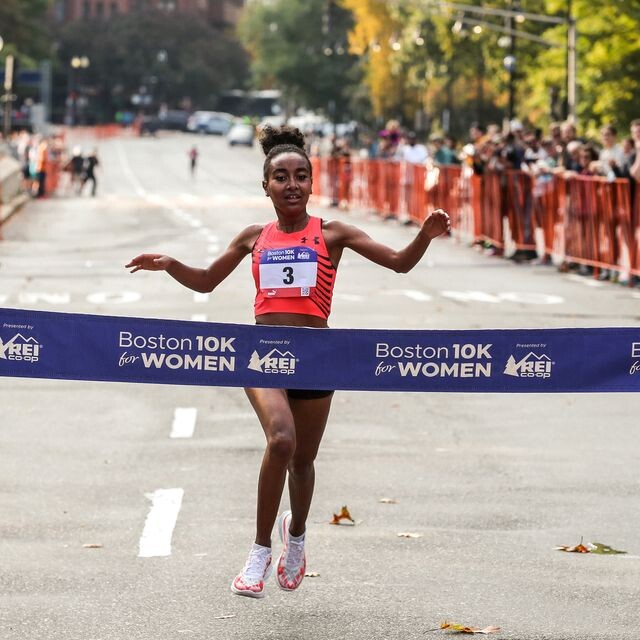
Woody Kincaid, the U.S. 10,000-meter champion and American record-holder in the indoor 5,000 meters, will lead the men’s field. Lining up against him will be Olympic champion Matthew Centrowitz, the top American finisher at the World Athletics Championships marathon this year Zach Panning, 2023 B.A.A. 5K champion Morgan Beadlescomb, and last year’s fourth through sixth-place finishers in New York, Ahmed Muhumed, Alec Basten, and Brian Barraza.
“I still see my career being mostly on the track for the next few years, but I like the idea of throwing in some more road races when it makes sense,” Kincaid said. “As I look towards the Paris Games, the Abbott Dash will be a nice jump-start to my 2024 training, and it will be cool to be in the middle of the big city marathon hoopla without having to go the full 26.2.”
Following in the footsteps of the professional athletes, nearly 10,000 runners will participate in the Abbott Dash to the Finish Line 5K, including top local athletes and many runners in the marathon on November 5.
Abbott, the title sponsor of the Abbott World Marathon Majors, is the sponsor of the Abbott Dash to the Finish Line 5K for the seventh time. Abbott, a global healthcare leader, helps people live more fully with life-changing technology and celebrate what’s possible with good health.
The Abbott Dash to the Finish Line 5K annually provides TCS New York City Marathon supporters, friends, and families the opportunity to join in on the thrill of marathon race week. The course begins on Manhattan’s east side by the United Nations, then takes runners along 42nd Street past historic Grand Central Terminal and up the world-famous Avenue of the Americas past Radio City Music Hall. It then passes through the rolling hills of Central Park before finishing at the iconic TCS New York City Marathon finish line.
The Abbott Dash to the Finish Line 5K and USATF 5K Championships will be broadcast live via USATF.TV. The broadcast is scheduled to begin at 8:20 a.m. ET with the first race starting at 8:30 a.m. ET.
About New York Road Runners (NYRR)
NYRR’s mission is to help and inspire people through running. Since 1958, New York Road Runners has grown from a local running club to the world’s premier community running organization. NYRR’s commitment to New York City’s five boroughs features races, virtual races, community events, free youth running initiatives and school programs, the NYRR RUNCENTER featuring the New Balance Run Hub, and training resources that provide hundreds of thousands of people each year with the motivation, know-how, and opportunity to Run for Life. NYRR’s premier event is the TCS New York City Marathon. Held annually on the first Sunday in November, the race features a wide population of runners, from the world’s top professional athletes to a vast range of competitive, recreational, and charity runners. To learn more, visit www.nyrr.org.
by Running USA
Login to leave a comment
Dash to the Finish Line
Be a part of the world-famous TCS New York City Marathon excitement, run through the streets of Manhattan, and finish at the famed Marathon finish line in Central Park—without running 26.2 miles! On TCS New York City Marathon Saturday, our NYRR Dash to the Finish Line 5K (3.1 miles) will take place for all runners who want to join in...
more...Cam Levins’s bonkers workout ahead of New York City Marathon
We are less than three weeks away from Cam Levins, Canada’s marathon record holder, toeing the start line at the 2023 TCS New York City Marathon on Nov. 5. If you have not been following his Strava workouts or recent races, you might be surprised to find out that he might be in the best shape of his life.
The 34-year-old athlete is in the final few weeks of peak training before tapering for the NYC Marathon. On Oct. 12, he threw down an impressive one-kilometer workout, maintaining an average pace of two minutes and 45 seconds per kilometer for 12 reps, with only one minute’s rest between reps.
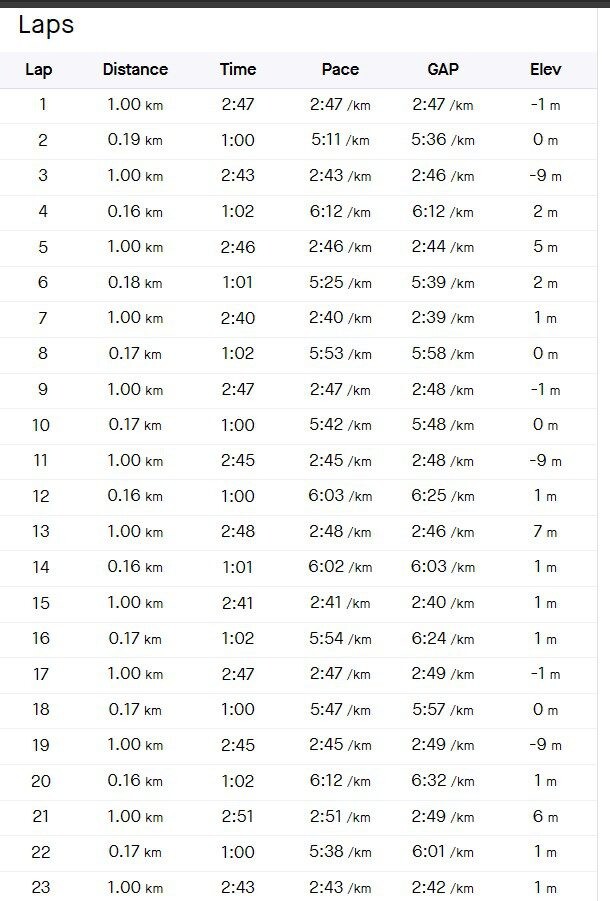
The workout
12 sets of 1K, with one minute of jog rest @ 2:40-2:50/km
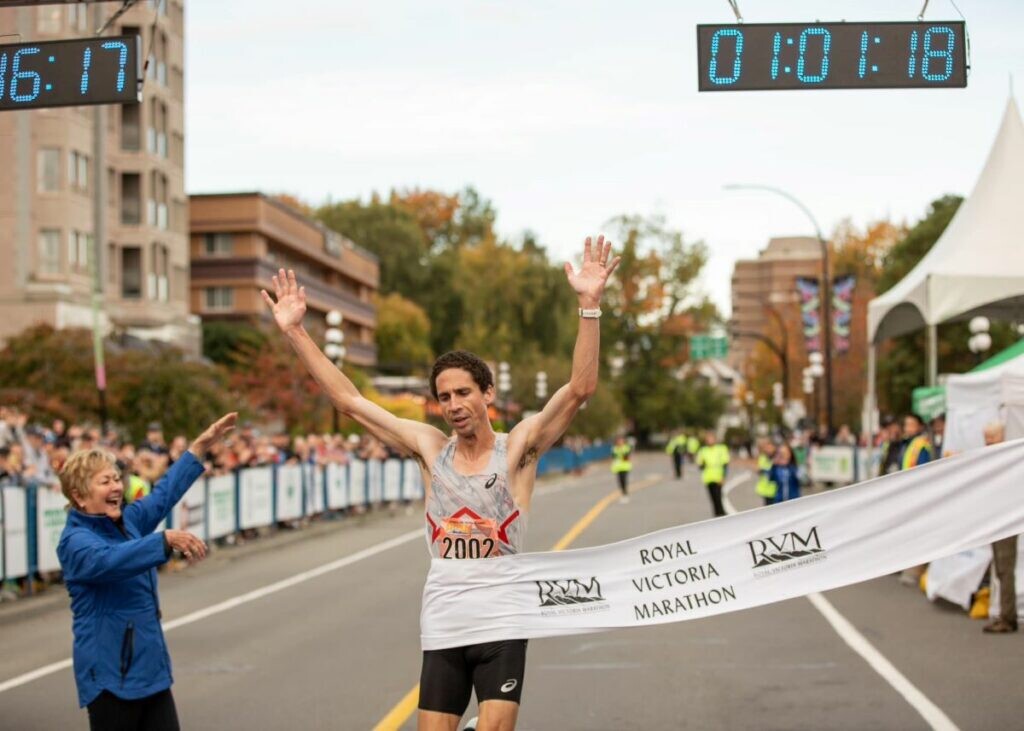
This workout is specifically designed for those training for a half-marathon or marathon, with short rest periods to acclimatize them to a faster pace. Levins pushed his limits during this session, clocking his fastest rep at 2:40 per kilometer and his slowest at 2:51 per kilometer, resulting in an astonishing 2:45 per kilometer average pace. This pace equates to an incredible 58 minutes for a half-marathon. (His Canadian record is 60:18.)
In his last two marathon outings, Levins achieved something historic for Canada, breaking the national record on both occasions. He also secured a top-five finish at both the 2022 World Championships and the 2023 Tokyo Marathon.
Levins chose to race the New York Marathon in his build-up to the 2024 Paris Olympic Games. The marathon course in Paris has a challenging elevation gain of more than 400 meters across 42.2 kilometers.
Of the six Abbott World Marathon Majors, New York and Boston are considered the most challenging. New York’s difficulty is attributed primarily to the four bridges participants must cross as they wind through the city’s five boroughs, with the Verrazzano-Narrows and Queensboro Bridges both extending to a distance of more than one kilometer each.
With the recent announcement that the 2022 NYC champion, Evans Chebet, and the two-time NYC champion, Geoffrey Kamworor, have both withdrawn due to injury, the 2023 race will see a new champion crowned in Central Park on Nov. 5. Could it be Levins? His fitness seems to indicate that he could–and if he does, he will be the first Canadian ever to win the New York City Marathon.
by Marley Dickinson
Login to leave a comment
TCS New York City Marathon
The first New York City Marathon, organized in 1970 by Fred Lebow and Vince Chiappetta, was held entirely in Central Park. Of 127 entrants, only 55 men finished; the sole female entrant dropped out due to illness. Winners were given inexpensive wristwatches and recycled baseball and bowling trophies. The entry fee was $1 and the total event budget...
more...Prince William goes unnoticed on early morning Central Park run
It’s hard to imagine Prince William and an entourage of bodyguards jogging through Central Park without being swarmed by fans, but that’s apparently exactly what happened on Tuesday morning.
While onstage later in the day at the Earthshot Prize Innovation Summit, the Prince of Wales shared that he’d very much enjoyed his morning jaunt. “I decided to join the hordes of New Yorkers doing their morning routine,” he said. “It was wonderful waking up in New York on a sunny morning rather than the rain we had yesterday. It was beautiful getting some fresh air this morning.”
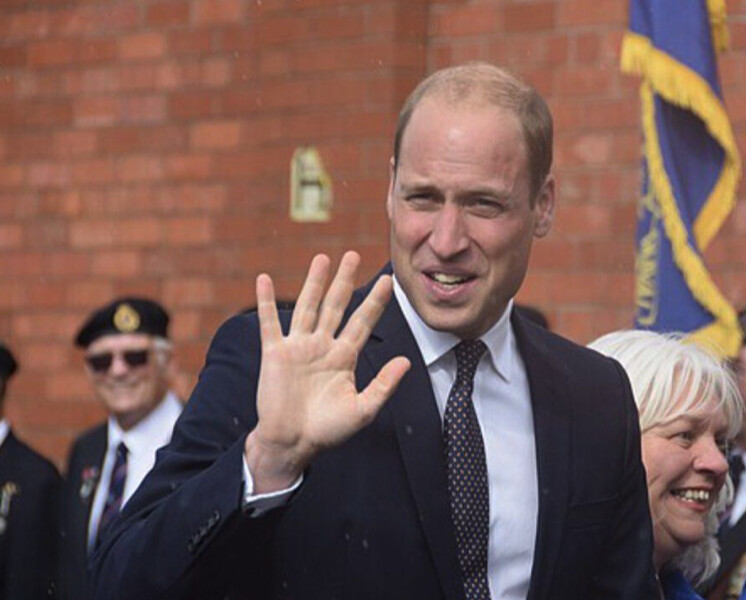
The Prince clearly inherited his love of running from his family. His mother, Princess Diana, was a known fitness enthusiast and participated in races at her children’s schools, as did his father, King Charles. Queen Elizabeth was even the official starter of the 2018 London Marathon, at the age of 92.
New York is a popular place for celebrities to run, and a morning’s trek through Central Park will probably offer a glimpse or two of some well-known people. The TCS New York City Marathon, held this year on November 5, often has a star-studded line-up, with past editions including musician Alicia Keys, actors Ashton Kutcher and Bryan Cranston and Canadian fave Ryan Reynolds.
The Prince of Wales has yet to tackle the marathon, despite mentioning in 2021 that he would like to have that accomplishment under his belt. His wife, Kate, the Duchess of Cambridge, said she had her doubts. “I’ll believe it when I see it,” she said on Good Morning Britain.
If and when the Prince does tackle 26.2, it’s unlikely he’ll manage to run it as stealthily as he did Tuesday morning’s training session.
by Running Magazine
Login to leave a comment
Kandie faces stiff opposition as he seeks to defend Valencia title
Former Valencia Half Marathon winner Kibiwott Kandie is among 14 Kenyans set to battle it out at the Valencia Half Marathon on October 22 in Spain.
Kandie, who holds the half marathon's best time of 57:32, will face tough competition from Ethiopia’s Yomif Kejelcha who holds a time of 58:32 (second best time in the marathon).

Kandie, the 2020 World Athletics Half Marathon silver medalist, will be hoping to cement his name in Valencia and replicate his amazing performance back in 2020 when he set the record time in the race.
The two will be joined by runners, who have clocked under 59 minutes in the race, including Matthew Kimeli, winner of the 15th annual UAE Healthy Kidney 10K in 2019 in Central Park, New York, who holds a time of 58:43.
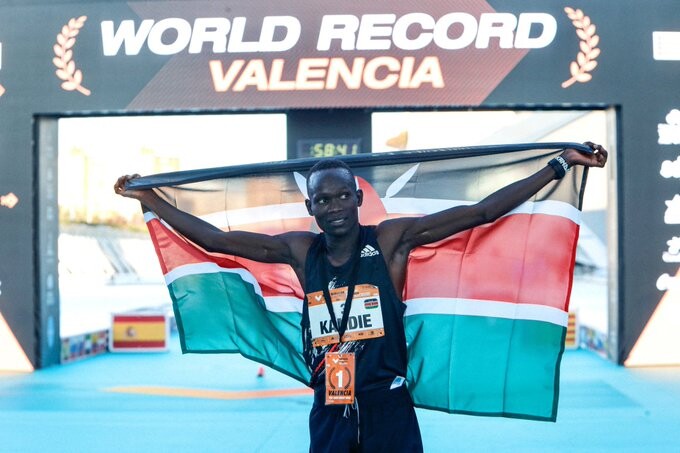
Sebastian Sawe, who holds a half marathon best of 58:58 from his win at the 2022 Bahrain Royal Night Half Marathon, will be gunning to take the title from Kandie.
The 2022 Standard Chartered Marathon 10km bronze medalist, Bravin Kiprop, who has a time of 59:22 in the half marathon, will also be among the challengers alongside Josephat Kiprotich who won the 38th edition of the Maratona da Cidade do Rio de Janeiro, Brazil in June.
Other Kenyan athletes in the race include Brian Kwemoi (59:37), Hillary Kipkoech (59:41), Erick Sang (59:50), Weldon Langat (59:55), Laban Kiplimo (1:00.13) and Kelvin Kibiwott (1:00.14).
Ethiopian’s Tadese Worku, 3,000m medalist at the 2021 World Athletics U20, and 5,000m world 3,000m junior record holder, Hagos Gebrhiwet will give the Kenyans a competitive race.
Great Britain's all-time number three, Callum Robert Hawkins (1:00:00), will be looking to pull an upset for the group.
The women's challenge will be led by the 2019 world 5,000m silver medallist, Margaret Chelimo who holds a time of 1:05:26 in the marathon and she will be joined by Janet Chepngetich.
The 2020 World Half Marathon silver medalist and current European record holder over the distance, Melat Kejeta from Germany together with Ethiopia’s 2023 world cross country silver medalist, Tsigie Gebreselama will give the Kenyan ladies a tough race.
by Teddy Mulei
Login to leave a comment
Valencia Half Marathon
The Trinidad Alfonso Valencia Half Marathon has become one of the top running events in the world. Valencia is one of the fastest half marathon in the world. The race, organized by SD Correcaminos Athletics Club, celebrated its silver anniversary in style with record participation, record crowd numbers, Silver label IAAF accreditation and an atmosphere that you will not find...
more...Peres Jepchirchir using Great North Run to fine tune for New York City Marathon
Reigning Olympic champion Peres Jepchirchir will be competing at the Great North Run on Sunday September 10, as she gets ready to reclaim her New York City Marathon title on Sunday, November 5.
Jepchirchir missed out on last year’s event due to a hip injury but she has now recovered and will be ready to fight and reclaim her title.

She opened her season with a third-place finish at the London Marathon. The 2021 Boston Marathon champion also finished second behind Hellen Obiri at the Great Manchester Run.
The Great North Run will be a perfect place for Jepchirchir to test out her form ahead of the do-or-die assignment.
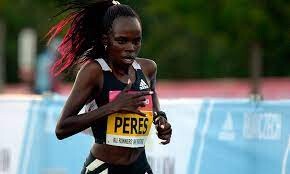
In a previous interview with New York City Marathon race organizers, Jepchirchir said: “I was so disappointed that I couldn’t defend my title in New York last year due to an injury, and winning again in Central Park has been my main motivation as I begin my preparations for the autumn.
"New York is an important step in defending my Olympic gold medal next summer in Paris, and I will do my best to make my family and my country proud.”
But before the New York City Marathon, she will face tough opposition at the Great North Run where she finished second last year.
She will be up against compatriot Sharon Lokedi who will also be competing at the New York City Marathon. Ethiopia’s Tirunesh Dibaba and Great Britain’s Charlie Purdue will also be in action at the event.
by Abigael Wafula
Login to leave a comment
Great North Run
Great North Run founder Brendan Foster believes Britain is ready to welcome the world with open arms after the launch of the event's most ambitious plan to date. The Great World Run campaign seeks to recruit one runner from every country in the United Nations – 193 in total – to take part in the iconic half marathon in...
more...Sharon Lokedi, Hellen Obiri, Peres Jepchirchir and Brigid Kosgei to Race 2023 TCS New York City Marathon
Defending TCS New York City Marathon champion Sharon Lokedi, reigning Boston Marathon and United Airlines NYC Half champion Hellen Obiri, Olympic gold medalist and 2021 TCS New York City Marathon champion Peres Jepchirchir, and marathon world-record holder Brigid Kosgei will headline the women’s professional athlete field at the 2023 TCS New York City Marathon on Sunday, November 5.
When the four Kenyans line up in New York, it will be the first time in event history the reigning TCS New York City Marathon champion, Boston Marathon champion, Olympic champion, and world-record holder line up against each other in the TCS New York City Marathon.
Lokedi won the TCS New York City Marathon in her marathon debut last year, pulling away in the final two miles to finish in 2:23:23 and became the eighth athlete to win the race in their true 26.2-mile debut. In preparation for the marathon, Lokedi had raced the United Airlines NYC Half and the Mastercard New York Mini 10K, finishing fourth and second, respectively, in those races.
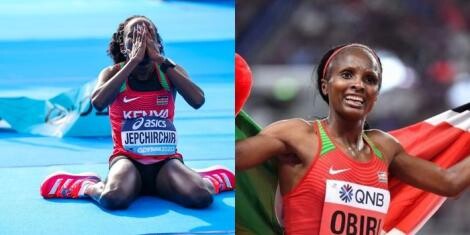
“Last year, I came into the TCS New York City Marathon with the goal of being in the thick of the race, and the result was better than I could have ever hoped for,” Lokedi said. “This year, I’m returning with a different mindset, hungry to defend my title and race against the fastest women in the world.”
Obiri is a two-time Olympic medalist and seven-time world championships individual medalist who earlier this year won the Boston Marathon in her second-ever attempt at the distance, in addition to winning the United Airlines NYC Half in her event debut. Obiri holds the Kenyan record for 3,000 meters and represented Kenya at the Rio 2016 and Tokyo 2020 Olympics, earning silver medals in the 5,000 meters at both. In her marathon debut last year in New York, she finished sixth.
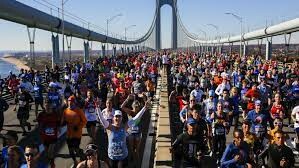
“With a year of marathon experience now under my belt, a win in Boston, and my move to the U.S., I’m coming to New York this year with more confidence and in search of a title,” Obiri said. “I’m excited to show the people of New York what I’m capable of and that my win at the United Airlines NYC Half in March was just the beginning.”
Jepchirchir is the only athlete to have won the Olympic marathon, TCS New York City Marathon, and Boston Marathon. She is also a two-time world championships gold medalist in the half marathon. In 2021, she won the Tokyo Olympic marathon to claim Kenya’s second consecutive gold medal in the event. Four months later, she won the TCS New York City Marathon, finishing in 2:22:39, the third-fastest time in event history and eight seconds off the event record. In April 2022, in a back-and-forth race that came down to the final mile, she fended off Ethiopian Ababel Yeshaneh to take the Boston Maraton title on Boylston Street in her debut in the race in 2:21:02. This April, she recorded another podium finish, taking third at the TCS London Marathon.
“I was so disappointed that I couldn’t defend my title in New York last year due to an injury, and winning again in Central Park has been my main motivation as I begin my preparations for the autumn,” Jepchirchir said. “New York is an important step in defending my Olympic gold medal next summer in Paris, and I will do my best to make my family and my country proud.”
Kosgei is the world-record holder in the marathon and has won an Olympic silver medal and five Abbott World Marathon Majors races; she will now make her TCS New York City Marathon debut. In 2019, Kosgei broke Paula Radcliffe’s 16-year-old world record by 81 seconds, running 2:14:04 to win the Chicago Marathon. It was her second Chicago Marathon victory, as she’d also won in 2018. Additionally, she won back-to-back London Marathons in 2019 and 2020, the Tokyo Marathon in 2022, and the silver medal at the Tokyo Olympic marathon.
“I am very excited to make my New York City debut this fall, and attempt to win my fourth different Major,” Kosgei said. “I am not worried about the course, as I have had success in hilly marathons before, but New York has always been about head-to-head competition, and I know I must be in the best possible shape to compete with the other women in the race.”
The 2023 TCS New York City Marathon women’s professional athlete field is presented by Mastercard®. The full professional athlete fields will be announced at a later date.
The 2023 TCS New York City Marathon on Sunday, November 5 will have 50,000 runners and be televised live on WABC-TV Channel 7 in the New York tristate area, throughout the rest of the nation on ESPN2, and around the world by various international broadcasters.
by Running USA
Login to leave a comment
TCS New York City Marathon
The first New York City Marathon, organized in 1970 by Fred Lebow and Vince Chiappetta, was held entirely in Central Park. Of 127 entrants, only 55 men finished; the sole female entrant dropped out due to illness. Winners were given inexpensive wristwatches and recycled baseball and bowling trophies. The entry fee was $1 and the total event budget...
more...

